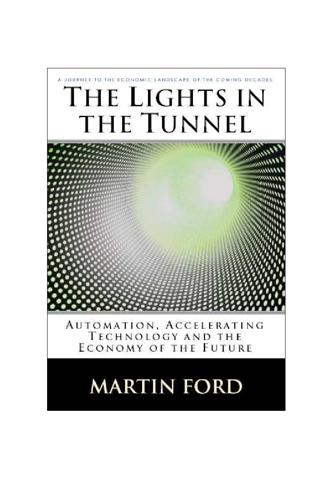
The Lights in the Tunnel
by
Martin Ford
Published 28 May 2011
“Hardware” Jobs and Robotics A “hardware” job is a job that requires some investment in mechanical or robotic technologies in order for the job to be automated. The automation of hardware jobs started long before the computer revolution. Machines used on assembly lines, farm equipment, and heavy earth moving equipment are all technologies that have displaced millions of workers in the past. As history has shown, repetitive motion manufacturing jobs are among the easiest to automate. In fact, as I mentioned, this is how the Luddite movement got started back in 1811. However, the merger of mechanics and computer technology into the field of robotics will almost certainly impact an unprecedented number and types of jobs.
…
However, the merger of mechanics and computer technology into the field of robotics will almost certainly impact an unprecedented number and types of jobs. Whether a specific hardware job is difficult or easy to automate really depends on the combination of skills and manual dexterity required. For an example of a job that is very difficult to automate, let’s consider an auto mechanic. A mechanic obviously requires a great deal of hand-eye coordination. He or she has to work on thousands of different parts in a variety of different engines, often in highly varied states of repair. In other words, a robot mechanic would face many visual recognition and manipulation problems similar to the ones we discussed earlier with the robot housekeeper.
…
The point of this is not to vilify Wal-Mart or any other business that might someday choose to employ automation. We have to acknowledge that, in a free market economy, every business has to respond to its competitive environment and employ the best available technologies and processes. If it does not do so, it will not survive. History has shown that job automation very often involves pushing a significant portion of the job onto the customer. Automation in the customer service area is really self-service. This has been the case with ATMs, automated checkout isles and even self-serve gas pumps. In the recently opened Future Store27 near Düsseldorf, Germany, in-store retail sales and customer assistance is being automated via a cell-phone interface.

Futureproof: 9 Rules for Humans in the Age of Automation
by
Kevin Roose
Published 9 Mar 2021
But today, AI anxiety is burning bright again, fueled by popular books like Martin Ford’s Rise of the Robots and Erik Brynjolfsson and Andrew McAfee’s The Second Machine Age, both of which made the case that AI was going to fundamentally change society and transform the global economy. Academic studies of the future of work, like an Oxford University study that estimated that as many as 47 percent of U.S. jobs were at “high risk” of automation within the next two decades, added to the sense of impending doom. By 2017, three in four American adults believed that AI and automation would destroy more jobs than they would create, and a majority expected technology to widen the gap between the rich and poor. I spent much of 2019 reporting on these changing attitudes, being careful to keep an open mind to the possibility that these fears were exaggerated.
…
They don’t take vacations, file HR complaints, or call in sick. And if you replace a human with a bot, you can, in theory, free that human up to do more valuable things. “Twenty to forty percent of our labor workforce is trapped into acting like bridges between applications,” Automation Anywhere’s CEO Shukla Mihir said. When these jobs get automated, he added, “not only are people able to do higher-value work, but you are able to significantly reduce your costs.” The pitch appeared to be working. Despite its low profile, Automation Anywhere has become one of the fastest-growing start-ups in the world, with a valuation of more than $6 billion.
…
Optimists often cite examples of professionals who have already outsourced much of their drudgery to computers, such as doctors who use electronic medical records to do much of their routine record-keeping so they can focus on talking to patients, lawyers whose legal-research software allows them to spend more time interacting with clients, or architects whose computer-assisted design software saves them hours of pixel-pushing monotony. These jobs aren’t threatened by automation, the optimists say, because there are still plenty of things a human doctor, lawyer, or architect can do that a machine can’t. And the AI that will emerge in the next few years will eliminate even more dull and repetitive work, and free us up to do the things we actually enjoy doing. 3.

The Globotics Upheaval: Globalisation, Robotics and the Future of Work
by
Richard Baldwin
Published 10 Jan 2019
The latest update of this approach—done by McKinsey based on the information reviewed above—raises this to 60 percent (due in part to the fact that white-collar robots have gotten so much better).8 These rather startling numbers refer to jobs that could be automated. But how many actually will be? A recent study by the consulting firm, Forrester, suggest that 16 percent of all US jobs will be displaced by automation in the next ten years.9 That is one out of every six jobs. The professions hardest hit are forecast to be those that employ office workers. Forrester, however, notes that about half of the job destruction will be matched by job creation equal to 9 percent of today’s jobs.
…
These thinking computers are opening a new phase of automation. They are bringing the pluses and minuses of automation to a whole new class of workers—those who work in offices rather than farms and factories. These people are unprepared. Until recently, most white-collar, service-sector, and professional jobs were shielded from automation by humans’ cogitative monopoly. Computers couldn’t think, so jobs that required any type of thinking—be it teaching nuclear physics, arranging flowers, or anything in between—required a human. Automation was a threat to people who did things with their hands, not their heads. Digital technology changed this.
…
Estimates of the job displacement range from big—say one in every ten jobs, which means millions of jobs—to enormous—say six out of ten jobs, which means hundreds of millions. When millions of jobs are displaced and communities are disrupted, we won’t see a stay-calm-and-carry-on attitude. Backlash Bedfellows The Trump and Brexit voters who drove the 2016 backlash know all about the job-displacing impact of automation and globalization. For decades, they, their families, and their communities have been competing with robots at home, and China abroad. They are still under siege financially. Their futures look no brighter. The economic calamity continues—especially in the US. For these voters, the policies adopted in the US and UK since 2016 are the economic equivalent of treating brain cancer with aspirin.

Rule of the Robots: How Artificial Intelligence Will Transform Everything
by
Martin Ford
Published 13 Sep 2021
In other words, increasing domination of markets by large enterprises could act directly to accelerate both job automation and de-skilling in the service sector. There’s a very real risk that the convergence of all these forces will have a significant dampening effect on the re-generation of the low-wage service jobs that have been a primary engine of American job creation in recent years, and this has the potential to make sustained recovery from the current crisis all the more difficult. THE COMING WAVE OF WHITE COLLAR AUTOMATION… AND WHY TEACHING EVERYONE TO CODE IS NOT A SOLUTION The specter of job automation typically conjures up images of industrial robots toiling in factories or warehouses.
…
My own view, as I argued in Rise of the Robots, is that a large fraction of our workforce is eventually at risk of being left behind as AI and robotics continue to advance. And, as we’ll see, there are very good reasons to believe that the coronavirus pandemic and the associated economic downturn will accelerate the impact of artificial intelligence on the job market. Even if we set aside the complete elimination of jobs through automation, technology is already affecting the job market in other ways that should concern us. Middle class jobs are at risk of being deskilled, so that a low-wage worker with little training, but who is augmented by technology, can step into a role that once would have commanded a higher wage. People are increasingly working under the control of algorithms that monitor or pace their work, in effect treating them like virtual robots.
…
Even in a time of historically low unemployment, I believe that the trends I discussed in Rise of the Robots remained firmly in play, and that the relative prosperity suggested by economic indicators in the years leading up to the current crisis was, at least to some extent, an illusion. In the wake of the pandemic, the trend toward increased job automation may well be amplified and could have a dramatic impact as we look forward to recovery from the current economic disaster. Imagine that you are an American economist in the year 1965. As you gazed out over the U.S. economy and job market, you would see that about ninety-seven percent of men between the ages of twenty-five and fifty-four—old enough to have completed schooling but too young to retire—are either employed or actively seeking work.

Rise of the Robots: Technology and the Threat of a Jobless Future
by
Martin Ford
Published 4 May 2015
That’s made especially likely as the “big data” phenomenon continues to unfold: organizations are collecting incomprehensible amounts of information about nearly every aspect of their operations, and a great many jobs and tasks are likely to be encapsulated in that data—waiting for the day when a smart machine learning algorithm comes along and begins schooling itself by delving into the record left by its human predecessors. The upshot of all this is that acquiring more education and skills will not necessarily offer effective protection against job automation in the future. As an example, consider radiologists, medical doctors who specialize in the interpretation of medical images. Radiologists require a tremendous amount of training, typically a minimum of thirteen years beyond high school. Yet, computers are rapidly getting better at analyzing images.
…
For a machine, visual recognition is a significant challenge: lighting conditions can be highly variable, and individual fruits can be in a variety of orientations and may be partly or even completely obscured by leaves. The same innovations that are advancing the robotics frontier in factory and warehouse settings are finally making many of these remaining agricultural jobs susceptible to automation. Vision Robotics, a company based in San Diego, California, is developing an octopus-like orange harvesting machine. The robot will use three-dimensional machine vision to make a computer model of an entire orange tree and then store the location of each fruit. That information will then be passed on to the machine’s eight robotic arms, which will rapidly harvest the oranges.33 Boston-area start-up Harvest Automation is initially focused on building robots to automate operations in nurseries and greenhouses; the company estimates that manual labor accounts for over 30 percent of the cost of growing ornamental plants.
…
In the next two chapters we’ll look at the impact that automation has already had on jobs and incomes in the United States and consider the characteristics that set information technology apart as a uniquely disruptive force. That discussion will provide a jumping-off point from which to delve into an unfolding story that is poised to upend the conventional wisdom about the types of jobs most likely to be automated and the viability of ever more education and training as a solution: the machines are coming for the high-wage, high-skill jobs as well. * A video of Industrial Perception’s box-moving robot can be seen on the company’s website at http://www.industrial-perception.com/technology.html

The Technology Trap: Capital, Labor, and Power in the Age of Automation
by
Carl Benedikt Frey
Published 17 Jun 2019
But already in the 1960s, the Bureau of Labor Statistics made the following observation: “Mechanization may indeed have created many dull and routine jobs; automation, however, is not an extension but a reversal of this trend: it promises to cut out just that kind of job and to create others of higher skill.”1 They predicted the Great Reversal two decades before it happened by observing what computers can do. Because it takes time before technologies are adopted and put into widespread use, we can infer the exposure of current jobs to future automation by examining technologies that are still imperfect prototypes. There is no economic law that postulates that the next three decades must mirror the last three.
…
Office and administrative support, production, transportation and logistics, food preparation, and retail jobs loom large in terms of both their exposure to automation and the percentage of Americans they support. Overall, our algorithm predicted that 47 percent of American jobs are susceptible to automation, meaning that they are potentially automatable from a technological point of view, given the latest computer-controlled equipment and sufficient relevant data for the algorithm to draw upon. What most of these jobs have in common is that they are low-income jobs that do not require high levels of education (figure 18). FIGURE 18: Jobs at Risk of Automation by Income and Educational Attainment Source: C. B. Frey and M. A. Osborne, 2017, “The Future of Employment: How Susceptible Are Jobs to Computerisation?
…
Lindert, 2000a, “Three Centuries of Inequality in Britain and America,” in Handbook of Income Distribution, ed. A.B. Atkinson and F. Bourguignon, table 1; and for 1961–2014 from Milanovic 2016a. NOTES Preface 1. J. Gramlich, 2017, “Most Americans Would Favor Policies to Limit Job and Wage Losses Caused by Automation,” Pew Research Center, http://www.pewresearch.org/fact-tank/2017/10/09/most-americans-would-favor-policies-to-limit-job-and-wage-losses-caused-by-automation/. 2. K. Roose, 2018, “His 2020 Campaign Message: The Robots Are Coming,” New York Times, February 18. 3. C. B. Frey and M. A. Osborne, 2017, “The Future of Employment: How Susceptible Are Jobs to Computerisation?
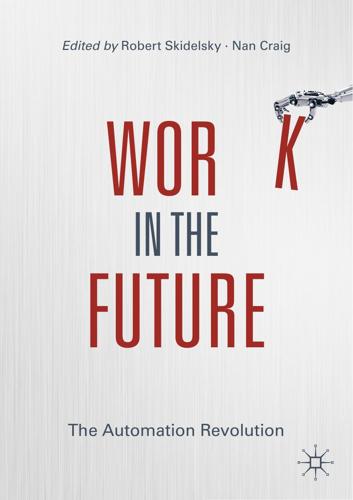
Work in the Future The Automation Revolution-Palgrave MacMillan (2019)
by
Robert Skidelsky Nan Craig
Published 15 Mar 2020
The Future of Employment: How Susceptible are Jobs to Computerisation? Technological Forecasting and Social Change, 114, 254–280. Gramlich, J. (2017). Most Americans Would Favor Policies to Limit Job and Wage Losses Caused by Automation. Pew Research Center. Retrieved from http://www.pewresearch.org/fact-tank/2017/10/09/most-americanswould-favor-policies-to-limit-job-and-wage-lossescaused-by-automation/ Part IV Possibilities and Limitations for AI: What Can’t Machines Do? 11 What Computers Will Never Be Able To Do Thomas Tozer In 1948, John von Neumann, a father of the computer revolution, claimed that for anything he was told a computer could not do, after this ‘thing’ had been explained to him precisely he would be able to make a machine capable of doing it.
…
Categories of human jobs widely expected to maintain themselves or expand in line with the contraction of others are creative jobs, jobs requiring exceptional manual dexterity, person to person services, notably healthcare, care work and so on. How many of these jobs will be created? Why should their number equal the total of jobs automated? For creative industries, a winner-takes-all projection is quite common. Top artists get top pay and ordinary ones get nothing, or almost nothing. The next issue: the question of how much people will want to work, or need to work, depends not only on technology and the nature of future work, but on what we think about human wants and needs.
…
Yet, by contrast, there has been the hope that automation processes will deliver a better future where human freedom is enlarged. Indeed, some writers have championed automation as a route to a superior ‘post-work’ society (Gorz 1985). Such concerns and hopes have resurfaced in the present, due to predictions of mass job losses via automation (see Spencer 2018). The evolution of machine learning and artificial intelligence, it is claimed, will allow for the replacement of human workers across myriad jobs. Pessimists, like in the past, worry about how society will adjust to a world without work (Ford 2015). Optimists, reviving the older visionary perspective of Marx, embrace ‘full automation’ in the move to a state of luxury consumption, where work is absent (Srnicek and Williams 2015).

The Economic Singularity: Artificial Intelligence and the Death of Capitalism
by
Calum Chace
Published 17 Jul 2016
Yampolskiy, Professor of Computer Engineering and Computer Science, Director of Cybersecurity lab, Author of Artificial Superintelligence: a Futuristic Approach Unprecedented productivity gains and unlimited leisure—what could possibly go wrong? Everything, says Calum Chace, if we don’t evolve a social system suited to the inevitable world of connected intelligent systems. It’s a failure of imagination to debate whether there will be jobs for humans in the automated world, Chace argues - we must look farther and ask how we will organize society when labor is not necessary to provide for the necessities of life. Find an answer, and life improves for all; without one, society collapses. Read this book to understand how social and technological forces will conspire to change the world—and the problems we need to solve to achieve the promise of the Economic Singularity.
…
Automated controllers which were able to modify the operation more flexibly became increasingly common in the early 20th century, but the start-stop decisions were still normally made by humans. In 1968 the first programmable logic controllers (PLCs) were introduced[xv]. These are rudimentary digital computers which allow far more flexibility in the way an electrochemical process operates, and eventually general-purpose computers were applied to the job. The advantages of process automation are clear: it can make an operation faster, cheaper, and more consistent, and it can raise quality. The disadvantages are the initial investment, which can be substantial, and the fact that close supervision is often necessary. Paradoxically, the more efficient an automated system becomes, the more crucial the contribution of the human operators.
…
They don't hold out much more hope for their other principal suggested remedy: “education alone is unlikely to solve the problem of surging inequality, [but] it remains the most important factor.” Gartner Gartner is the world’s leading technology market research and advisory consultancy. At its annual conference in October 2014, its research director Peter Sondergaard declared that one in three human jobs would be automated by 2025.[l] "New digital businesses require less labor; machines will make sense of data faster than humans can." He described smart machines as an example of a “super class” of technologies which carry out a wide variety of tasks, both physical and intellectual. He illustrated the case by pointing out that machines have been grading multiple choice examinations for years, but they are now moving on to essays and unstructured text.

Only Humans Need Apply: Winners and Losers in the Age of Smart Machines
by
Thomas H. Davenport
and
Julia Kirby
Published 23 May 2016
Are you sufficiently aware of the signs that you should? To help you get the head start you may need, here are the signs that it’s time to fly the nest. All of them are evidence that a knowledge worker’s job is on the path to automation. 1. There are automated systems available today to do some of its core tasks. The strongest evidence that automation will increasingly threaten a job is the existence of an automated system today that performs all or part of its core function. If we were radiologists or pathologists, for example, we’d be worried about the computer-aided detection systems that read images and detect signs of problems in mammography images or Pap smears.
…
See also cognitive technologies; computers “AI winter,” 36 Apollo flights and, 67 Asimov’s three laws for, 244 augmentation of soft skills and, 123 automating administrative tasks and, 216 broadening the base of methods, 194 cancer cure and, 60–61 consequences of, 243–46, 249–50 cost to build, 155 in education, 230 endowing with emotions, 246 expert systems, 37 fighter pilots and, 66 human attributes, 124–27, 245 human control of, 244–45 investing by, 92–93 move from “narrow” to “general,” 35 programmers, 178 regulatory oversight of, 246–49 researchers and, 181 Ruby programming language, 222 self-awareness and AI spring, 54–57 social memory, 123 society-level decisions about, 226–28 term use and branches of, 37–38 Thiel on, 243 universe model and KIGEN, 59 warnings and predictions about, 225–26 Warren, 20 (see also IBM Watson) artists, 24, 119, 238 Asimov, Isaac, 244 Associated Press (AP) automated journalism, 96–98, 103, 104, 121, 222 investing in automated publishing, 97 Atlas, David, 121 Auerbach, Red, 116–17 Auerswald, Phil, 128 augmentation, 31–32, 59–88, 201–24, 234 “automation leader” for, 221–23 automation vs., 61–63, 128–29, 204–8, 223–24 cutting both ways, 70–74 defined, 64–65 example, spreadsheets, 69–70 example, underwriting, 77–84, 218–19 five options for, 76–77, 218 forms of, 65–69, 209 as goal, 228–29 in governance, 249–51 government policies and, 229–43 human-machine partnership, 68, 203, 234, 235, 237, 239, 250, 251 implementing, steps for, 208–23 key capabilities of humans and, 71–73 less work not likely with, 69–70 “moon shots,” 210, 215–16 as organizational priority, 203–4 preparing employees for, 219 proofs of concept or pilots, 220–21 reasons for augmentation, 204–8 smart machines and job security, 59–61 Stepping Aside, 77, 81, 85, 87, 108–30 Stepping Forward, 77, 83–86, 88, 176–200 Stepping In, 77, 81–82, 85, 87, 131–52 Stepping Narrowly, 77, 82, 85, 87–88, 153–75 Stepping Up, 76–77, 80, 84–86, 89–107 three forms, for specialization, 166–69 as wheels for the mind, 63–65 Augmentation Research Center, 64 “Augmenting Human Intellect” (Engelbart), 64 Automated Insights, 22, 97 Wordsmith, 96 automation, 1, 3–4, 5, 6, 8, 12–13 augmentation vs., 61–63, 128–29, 204–8, 223–24 business process management, 40 codified tasks and, 12–13, 14, 27–28, 30 content transmission and, 19–20 eras of, 2–5 government policies and, 229–43 income inequality and, 228–29 “isolation syndrome,” 24 job losses and, 1–6, 8, 30, 78, 150–51, 167, 223–24, 226, 227, 238 jobs resistant to, 153–75 process automation, 48–49 “race against the machine,” 8, 29 reductions in cost and time, 48, 49 regulated sectors and legal constraints on, 213–15 repetitive task, 42, 47–48, 49, 50 robotic process, 48–49, 187, 221, 222–23 “rule engines,” 47 sectors using, 1, 11–12, 13, 18, 74, 201–3 (see also specific industries) signs of coming automation, 19–22 Stepping Forward with, 176–200 Stepping In with, 134–52 Stepping Up and, 91–95 strategy of, as self-defeating, 204–8 strongest evidence of job threat, 19 Automation Anywhere, 48, 216 automotive sector, 1 Autor, David, 70–71 Balaporia, Zahir, 189–91 Bankrate.com, 96 Bathgate, Alastair, 156, 157 Baylor College of Medicine, 212 Beaudry, Paul, 6, 24 Belmont, Chris, 209 Berg company, 60–61 Berlin, Isaiah, 171 Bernanke, Ben, 28, 42, 73 Bernaski, Michael, 79, 80, 81, 82, 187 Bessen, James, 133, 233 Betterment, 86–87, 198 big-picture perspective, 71, 75, 76–77, 84, 91, 92, 99, 100, 155 Stepping Up and, 98–100 Binsted, Kim, 125 “black box,” 95, 134, 139, 148, 192, 198 Blanke, Jennifer, 7 Blue Prism, 49, 156, 216, 221 Bohrer, Abram, 159 Bostrom, Nick, 226, 227 Brackett, Glenn, 128 Braverman, Harry, 15–16 Breaking Bad (TV show), 172 Brem, Rachel, 181–82 Bridgewater Associates, 92–93 Brooks, David, 241 Brooks, Rodney, 170, 182 Brown, John Seely, 237 Brynjolfsson, Erik, 6, 8, 27, 74 Bryson, Joanna J., 226 Buehner, Carl, 120 Buffett, Warren, 244 Bush, Vannevar, 64, 248 Bustarret, Claire, 154 BYOD (Bring Your Own Device), 13 Cameron, James, 165–66 Carey, Greg, 154, 156, 172–73 Carr, Nick, 162 CastingWords, 168 Catanzaro, Sandro, 179–80, 193 Cathcart, Ron, 89–91, 95 Cerf, Vint, 248 Chambers, Joshua, 250 Charles Schwab, 88 chess, 74–76 Chi, Michelene, 163 Chicago Mercantile Exchange, 11–12 Chilean miners, 201–2 China, 239 Chiriac, Marcel, 217 Circle (Internet start-up), 146 Cisco, 43 Civilian Conservation Corps (CCC), 238 “Claiming our Humanity in the Digital Age,” 248 Class Dojo, 141 Cleveland Clinic, 54 Clifton, Jim, 8 Clinton, Bill, 108 Clockwork Universe, The (Dolnick), 169–70 Codelco/Codelco Digital, 40, 201–3 Cognex, 47 CognitiveScale, 45, 194, 209 cognitive technologies, 4–5, 32, 33–58.
…
It turns out X.ai is a company that uses “natural language processing” software to interpret text and schedule meetings via email. “Amy,” in other words, is automated. Meanwhile, other tools such as email and voice mail, word processing, online travel sites, and Internet search applications have been chipping away the rest of what used to be a secretarial job. Era Two automation doesn’t only affect office workers. It washes across the entire services-based economy that arose after massive productivity gains wiped out jobs in agriculture, then manufacturing. Many modern jobs are transactional service jobs—that is, they feature people helping customers access what they need from complex business systems.

AI Superpowers: China, Silicon Valley, and the New World Order
by
Kai-Fu Lee
Published 14 Sep 2018
Osborne, “The Future of Employment: How Susceptible Are Jobs to Automation,” Oxford Martin Programme on Technology and Employment, September 17, 2013, https://www.oxfordmartin.ox.ac.uk/downloads/academic/future-of-employment.pdf. just 9 percent of jobs: Melanie Arntz, Terry Gregory, and Ulrich Zierahn, “The Risk of Automation for Jobs in OECD Countries: A Comparative Analysis,” OECD Social, Employment, and Migration Working Papers, no. 189, May 14, 2016, http://dx.doi.org/10.1787/5jlz9h56dvq7-en. 38 percent of jobs: Richard Berriman and John Hawksworth, “Will Robots Steal Our Jobs? The Potential Impact of Automation on the UK and Other Major Economies,” PwC, March 2017, https://www.pwc.co.uk/economic-services/ukeo/pwcukeo-section-4-automation-march-2017-v2.pdf.
…
Few good studies have been done for the Chinese market, so I largely stick to studies estimating automation potential in the United States and then extrapolate those results to China. A pair of researchers at Oxford University kicked things off in 2013 with a paper making a dire prediction: 47 percent of U.S. jobs could be automated within the next decade or two. The paper’s authors, Carl Benedikt Frey and Michael A. Osborne, began by asking machine-learning experts to evaluate the likelihood that seventy occupations could be automated in the coming years. Combining that data with a list of the main “engineering bottlenecks” in machine learning (similar to the characteristics denoting the “Safe Zone” in the graphs on pages 155 and 156), Frey and Osborne used a probability model to project how susceptible an additional 632 occupations are to automation.
…
In this model, a tax preparer is not merely categorized as one occupation but rather as a series of tasks that are automatable (reviewing income documents, calculating maximum deductions, reviewing forms for inconsistencies, etc.) and tasks that are not automatable (meeting with new clients, explaining decisions to those clients, etc.). The OECD team then ran a probability model to find what percentage of jobs were at “high risk” (i.e., at least 70 percent of the tasks associated with the job could be automated). As noted, they found that in the United States only 9 percent of workers fell in the high-risk category. Applying that same model on twenty other OECD countries, the authors found that the percentage of high-risk jobs ranged from just 6 percent in Korea to 12 percent in Austria. Don’t worry, the study seemed to say, reports of the death of work have been greatly exaggerated.

Site Reliability Engineering: How Google Runs Production Systems
by
Betsy Beyer
,
Chris Jones
,
Jennifer Petoff
and
Niall Richard Murphy
Published 15 Apr 2016
Beyond a certain volume of changes, it is infeasible for production-wide changes to be accomplished manually, and at some time before that point, it’s a waste to have manual oversight for a process where a large proportion of the changes are either trivial or accomplished successfully by basic relaunch-and-check strategies. Let’s use internal case studies to illustrate some of the preceding points in detail. The first case study is about how, due to some diligent, far-sighted work, we managed to achieve the self-professed nirvana of SRE: to automate ourselves out of a job. Automate Yourself Out of a Job: Automate ALL the Things! For a long while, the Ads products at Google stored their data in a MySQL database. Because Ads data obviously has high reliability requirements, an SRE team was charged with looking after that infrastructure. From 2005 to 2008, the Ads Database mostly ran in what we considered to be a mature and managed state.
…
Index Symbols /varz HTTP handler, Instrumentation of Applications A abusive client behavior, Dealing with Abusive Client Behavior access control, Enforcement of Policies and Procedures ACID datastore semantics, Managing Critical State: Distributed Consensus for Reliability, Choosing a Strategy for Superior Data Integrity acknowledgments, Acknowledgments-Acknowledgments adaptive throttling, Client-Side Throttling Ads Database, Automate Yourself Out of a Job: Automate ALL the Things!-Automate Yourself Out of a Job: Automate ALL the Things! AdSense, Other service metrics aggregate availability equation, Measuring Service Risk, Availability Table aggregation, Rule Evaluation, Aggregation agility vs. stability, System Stability Versus Agility(see also software simplicity) Alertmanager service, Alerting alertsdefined, Definitions false-positive, Tagging software for, Monitoring and Alerting(see also Borgmon; time-series monitoring) anacron, Reliability Perspective Apache Mesos, Managing Machines App Engine, Case Study archives vs. backups, Backups Versus Archives asynchronous distributed consensus, How Distributed Consensus Works atomic broadcast systems, Reliable Distributed Queuing and Messaging attribution policy, Using Code Examples automationapplying to cluster turnups, Soothing the Pain: Applying Automation to Cluster Turnups-Service-Oriented Cluster-Turnup vs. autonomous systems, The Evolution of Automation at Google benefits of, The Value of Automation-The Value for Google SRE best practices for change management, Change Management Borg example, Borg: Birth of the Warehouse-Scale Computer cross-industry lessons, Automating Away Repetitive Work and Operational Overhead database example, Automate Yourself Out of a Job: Automate ALL the Things!
…
AdSense, Other service metrics aggregate availability equation, Measuring Service Risk, Availability Table aggregation, Rule Evaluation, Aggregation agility vs. stability, System Stability Versus Agility(see also software simplicity) Alertmanager service, Alerting alertsdefined, Definitions false-positive, Tagging software for, Monitoring and Alerting(see also Borgmon; time-series monitoring) anacron, Reliability Perspective Apache Mesos, Managing Machines App Engine, Case Study archives vs. backups, Backups Versus Archives asynchronous distributed consensus, How Distributed Consensus Works atomic broadcast systems, Reliable Distributed Queuing and Messaging attribution policy, Using Code Examples automationapplying to cluster turnups, Soothing the Pain: Applying Automation to Cluster Turnups-Service-Oriented Cluster-Turnup vs. autonomous systems, The Evolution of Automation at Google benefits of, The Value of Automation-The Value for Google SRE best practices for change management, Change Management Borg example, Borg: Birth of the Warehouse-Scale Computer cross-industry lessons, Automating Away Repetitive Work and Operational Overhead database example, Automate Yourself Out of a Job: Automate ALL the Things!-Automate Yourself Out of a Job: Automate ALL the Things! Diskerase example, Recommendations focus on reliability, Reliability Is the Fundamental Feature Google's approach to, The Value for Google SRE hierarchy of automation classes, A Hierarchy of Automation Classes recommendations for enacting, Recommendations specialized application of, The Inclination to Specialize use cases for, The Use Cases for Automation-A Hierarchy of Automation Classes automation tools, Testing Scalable Tools autonomous systems, The Evolution of Automation at Google Auxon case study, Auxon Case Study: Project Background and Problem Space-Our Solution: Intent-Based Capacity Planning, Introduction to Auxon-Introduction to Auxon availability, Indicators, Choosing a Strategy for Superior Data Integrity(see also service availability) availability table, Availability Table B B4 network, Hardware backend servers, Our Software Infrastructure, Load Balancing in the Datacenter backends, fake, Production Probes backups (see data integrity) Bandwidth Enforcer (BwE), Networking barrier tools, Testing Scalable Tools, Testing Disaster, Distributed Coordination and Locking Services batch processing pipelines, First Layer: Soft Deletion batching, Eliminate Batch Load, Batching, Drawbacks of Periodic Pipelines in Distributed Environments Bazel, Building best practicescapacity planning, Capacity Planning for change management, Change Management error budgets, Error Budgets failures, Fail Sanely feedback, Introducing a Postmortem Culture for incident management, In Summary monitoring, Monitoring overloads and failure, Overloads and Failure postmortems, Google’s Postmortem Philosophy-Collaborate and Share Knowledge, Postmortems reward systems, Introducing a Postmortem Culture role of release engineers in, The Role of a Release Engineer rollouts, Progressive Rollouts service level objectives, Define SLOs Like a User team building, SRE Teams bibliography, Bibliography Big Data, Origin of the Pipeline Design Pattern Bigtable, Storage, Target level of availability, Bigtable SRE: A Tale of Over-Alerting bimodal latency, Bimodal latency black-box monitoring, Definitions, Black-Box Versus White-Box, Black-Box Monitoring blameless cultures, Google’s Postmortem Philosophy Blaze build tool, Building Blobstore, Storage, Choosing a Strategy for Superior Data Integrity Borg, Hardware-Managing Machines, Borg: Birth of the Warehouse-Scale Computer-Borg: Birth of the Warehouse-Scale Computer, Drawbacks of Periodic Pipelines in Distributed Environments Borg Naming Service (BNS), Managing Machines Borgmon, The Rise of Borgmon-Ten Years On…(see also time-series monitoring) alerting, Monitoring and Alerting, Alerting configuration, Maintaining the Configuration rate() function, Rule Evaluation rules, Rule Evaluation-Rule Evaluation sharding, Sharding the Monitoring Topology timeseries arena, Storage in the Time-Series Arena vectors, Labels and Vectors-Labels and Vectors break-glass mechanisms, Expect Testing Fail build environments, Creating a Test and Build Environment business continuity, Ensuring Business Continuity Byzantine failures, How Distributed Consensus Works, Number of Replicas C campuses, Hardware canarying, Motivation for Error Budgets, What we learned, Canary test, Gradual and Staged Rollouts CAP theorem, Managing Critical State: Distributed Consensus for Reliability CAPA (corrective and preventative action), Postmortem Culture capacity planningapproaches to, Practices best practices for, Capacity Planning Diskerase example, Recommendations distributed consensus systems and, Capacity and Load Balancing drawbacks of "queries per second", The Pitfalls of “Queries per Second” drawbacks of traditional plans, Brittle by nature further reading on, Practices intent-based (see intent-based capacity planning) mandatory steps for, Demand Forecasting and Capacity Planning preventing server overload with, Preventing Server Overload product launches and, Capacity Planning traditional approach to, Traditional Capacity Planning cascading failuresaddressing, Immediate Steps to Address Cascading Failures-Eliminate Bad Traffic causes of, Causes of Cascading Failures and Designing to Avoid Them-Service Unavailability defined, Addressing Cascading Failures, Capacity and Load Balancing factors triggering, Triggering Conditions for Cascading Failures overview of, Closing Remarks preventing server overload, Preventing Server Overload-Always Go Downward in the Stack testing for, Testing for Cascading Failures-Test Noncritical Backends(see also overload handling) change management, Change Management(see also automation) change-induced emergencies, Change-Induced Emergency-What we learned changelists (CLs), Our Development Environment Chaos Monkey, Testing Disaster checkpoint state, Testing Disaster cherry picking tactic, Hermetic Builds Chubby lock service, Lock Service, System Architecture Patterns for Distributed Consensusplanned outage, Objectives, SLOs Set Expectations client tasks, Load Balancing in the Datacenter client-side throttling, Client-Side Throttling clients, Our Software Infrastructure clock drift, Managing Critical State: Distributed Consensus for Reliability Clos network fabric, Hardware cloud environmentdata integrity strategies, Choosing a Strategy for Superior Data Integrity, Challenges faced by cloud developers definition of data integrity in, Data Integrity’s Strict Requirements evolution of applications in, Choosing a Strategy for Superior Data Integrity technical challenges of, Requirements of the Cloud Environment in Perspective clustersapplying automation to turnups, Soothing the Pain: Applying Automation to Cluster Turnups-Service-Oriented Cluster-Turnup cluster management solution, Drawbacks of Periodic Pipelines in Distributed Environments defined, Hardware code samples, Using Code Examples cognitive flow state, Cognitive Flow State cold caching, Slow Startup and Cold Caching colocation facilities (colos), Recommendations Colossus, Storage command posts, A Recognized Command Post communication and collaborationblameless postmortems, Collaborate and Share Knowledge case studies, Case Study of Collaboration in SRE: Viceroy-Case Study: Migrating DFP to F1 importance of, Conclusion with Outalator, Reporting and communication outside SRE team, Collaboration Outside SRE position of SRE in Google, Communication and Collaboration in SRE production meetings (see production meetings) within SRE team, Collaboration within SRE company-wide resilience testing, Practices compensation structure, Compensation computational optimization, Our Solution: Intent-Based Capacity Planning configuration management, Configuration Management, Change-Induced Emergency, Integration, Process Updates configuration tests, Configuration test consensus algorithmsEgalitarian Paxos, Stable Leaders Fast Paxos, Reasoning About Performance: Fast Paxos, The Use of Paxos improving performance of, Distributed Consensus Performance Multi-Paxos, Disk Access Paxos, How Distributed Consensus Works, Disk Access Raft, Multi-Paxos: Detailed Message Flow, Stable Leaders Zab, Stable Leaders(see also distributed consensus systems) consistencyeventual, Managing Critical State: Distributed Consensus for Reliability through automation, Consistency consistent hashing, Load Balancing at the Virtual IP Address constraints, Laborious and imprecise Consul, System Architecture Patterns for Distributed Consensus consumer services, identifying risk tolerance of, Identifying the Risk Tolerance of Consumer Services-Other service metrics continuous build and deploymentBlaze build tool, Building branching, Branching build targets, Building configuration management, Configuration Management deployment, Deployment packaging, Packaging Rapid release system, Continuous Build and Deployment, Rapid testing, Testing typical release process, Rapid contributors, Acknowledgments-Acknowledgments coroutines, Origin of the Pipeline Design Pattern corporate network security, Practices correctness guarantees, Workflow Correctness Guarantees correlation vs. causation, Theory costsavailability targets and, Cost, Cost direct, The Sysadmin Approach to Service Management of failing to embrace risk, Managing Risk indirect, The Sysadmin Approach to Service Management of sysadmin management approach, The Sysadmin Approach to Service Management CPU consumption, The Pitfalls of “Queries per Second”, CPU, Overload Behavior and Load Tests crash-fail vs. crash-recover algorithms, How Distributed Consensus Works cronat large scale, Running Large Cron building at Google, Building Cron at Google-Running Large Cron idempotency, Cron Jobs and Idempotency large-scale deployment of, Cron at Large Scale leader and followers, The leader overview of, Summary Paxos algorithm and, The Use of Paxos-Storing the State purpose of, Distributed Periodic Scheduling with Cron reliability applications of, Reliability Perspective resolving partial failures, Resolving partial failures storing state, Storing the State tracking cron job state, Tracking the State of Cron Jobs uses for, Cron cross-industry lessonsApollo 8, Preface comparative questions presented, Lessons Learned from Other Industries decision-making skills, Structured and Rational Decision Making-Structured and Rational Decision Making Google's application of, Conclusions industry leaders contributing, Meet Our Industry Veterans key themes addressed, Lessons Learned from Other Industries postmortem culture, Postmortem Culture-Postmortem Culture preparedness and disaster testing, Preparedness and Disaster Testing-Defense in Depth and Breadth repetitive work/operational overhead, Automating Away Repetitive Work and Operational Overhead current state, exposing, Examine D D storage layer, Storage dashboardsbenefits of, Why Monitor?

The Fourth Age: Smart Robots, Conscious Computers, and the Future of Humanity
by
Byron Reese
Published 23 Apr 2018
Toward the end of the report, they provide a four-hundred-word description of some of the limitations of the study’s methodology. They state that “we make no attempt to estimate how many jobs will actually be automated. The actual extent and pace of computerisation will depend on several additional factors which were left unaccounted for.” So what’s with the 47 percent figure? What they said is that some tasks within 47 percent of jobs will be automated. Well, there is nothing terribly shocking about that at all. Pretty much every job there is has had tasks within it automated. But the job remains. It is just different.
…
ASSUMPTION 3: Not enough new jobs will be created quickly enough. The “we won’t make new jobs fast enough” argument, you won’t be surprised to hear, has been around for a while too. In 1961, Time magazine printed, “What worries many job experts more is that automation may prevent the economy from creating enough new jobs. . . . Today’s new industries have comparatively few jobs for the unskilled or semiskilled, just the class of workers whose jobs are being eliminated by automation.” Is this a valid concern today? Will new jobs be slow in coming? I suspect not. In 2016, the World Economic Forum in Davos, Switzerland, published a briefing paper that stated: In many industries and countries, the most in-demand occupations or specialties did not exist 10 or even five years ago, and the pace of change is set to accelerate.
…
What this means is that the effects of automation are not going to be overwhelmingly borne by low-wage earners. Order takers at fast-food places may be replaced by machines, but the people who clean up the restaurant at night won’t be. The jobs that automation affects will be spread throughout the wage spectrum. All that being said, there is a widespread concern that automation is destroying jobs at the “bottom” and creating new jobs at the “top.” Automation, this logic goes, may be making new jobs at the top, like geneticist, but is destroying jobs at the bottom like warehouse worker. Doesn’t this situation lead to a giant impoverished underclass locked out of gainful employment?
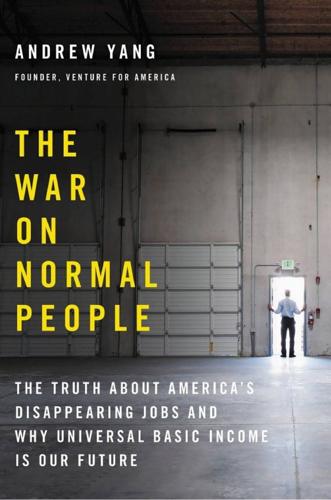
The War on Normal People: The Truth About America's Disappearing Jobs and Why Universal Basic Income Is Our Future
by
Andrew Yang
Published 2 Apr 2018
The rise of the machine that makes human work obsolete has long been thought to be science fiction. Today, this is the reality we face. Although the seriousness of the situation has not reached the mainstream yet, the average American is in deep trouble. Many Americans are in danger of losing their jobs right now due to automation. Not in 10 or 15 years. Right now. Here are the standard sectors Americans work in: Largest Occupational Groups in United States (2016) Occupational Group: All Total Number Employees: 140,400,040 Percentage of Workforce: 100.00% Mean Hourly Wage: $23.86 Median Hourly Wage: $17.81 Occupational Group: Office and Administrative Support Total Number Employees: 22,026,080 Percentage of Workforce: 15.69% Mean Hourly Wage: $17.91 Median Hourly Wage: $16.37 Occupational Group: Sales and Retail Total Number Employees: 14,536,530 Percentage of Workforce: 10.35% Mean Hourly Wage: $19.50 Median Hourly Wage: $12.78 Occupational Group: Food Preparation and Serving Total Number Employees: 12,981,720 Percentage of Workforce: 9.25% Mean Hourly Wage: $11.47 Median Hourly Wage: $10.01 Occupational Group: Transportation and Material Moving Total Number Employees: 9,731,790 Percentage of Workforce: 6.93% Mean Hourly Wage: $17.34 Median Hourly Wage: $14.78 Occupational Group: Production Total Number Employees: 9,105,650 Percentage of Workforce: 6.49% Mean Hourly Wage: $17.88 Median Hourly Wage: $15.93 Source: Bureau of Labor Statistics, Department of Labor, Occupational Employment Statistics (OES) Survey, May 2016.
…
Also, as regional economies weaken, restaurants in those regions will struggle and close. Clerical jobs, retail jobs, and food service jobs are the most common jobs in the country. Each category is in grave danger and set to shrink dramatically. Yet they’re not even the ones to worry about most. The single most defining job in the automation story—the one that scares even the most hard-nosed observer—is the number four job category: materials transport, also known as truck driving. FIVE FACTORY WORKERS AND TRUCK DRIVERS You would have to have been asleep these past years not to have noticed that manufacturing jobs have been disappearing in large numbers.
…
In 2000 there were still 17.5 million manufacturing workers in the United States. Then, the numbers fell off a cliff, plummeting to fewer than 12 million before rebounding slightly starting in 2011. More than 5 million manufacturing workers lost their jobs after 2000. More than 80 percent of the jobs lost—or 4 million jobs—were due to automation. Men make up 73 percent of manufacturing workers, so this hit working-class men particularly hard. About one in six working-age men in America is now out of the workforce, one of the highest rates among developed countries. What happened to these 5 million workers? A rosy economist might imagine that they found new manufacturing jobs, or were retrained and reskilled for different jobs, or maybe they moved to another state for greener pastures.

The Second Intelligent Species: How Humans Will Become as Irrelevant as Cockroaches
by
Marshall Brain
Published 6 Apr 2015
For example, in a car factory, robots do all the welding and painting. Many of the factory jobs that remain have not been automated because they require vision. Putting a wiring harness into an automobile on an assembly line is done by humans today because humans can see and easily handle flexible materials. Most other human jobs that remain in an auto assembly factory require vision in the same way. Once robots can see, all of those factory jobs will start going to robots just like all of the welding, painting and machining jobs that are already automated. Think about all of the custodial jobs in hotels, arenas, college campuses, office parks and homes.
…
For example, imagine that one company develops self-driving trucks and that they eliminate all of the truck driver jobs, while another company develops automated tools that eliminate many of the remaining factory jobs, and another company develops brick-laying, painting and roofing robots that eliminate quite a few construction jobs, plus another company develops a kiosk system that eliminates the jobs of many waiters and waitresses in restaurants, and so on. Now the society has a permanent loss of 200,000 jobs, with 200,000 homeless people and with more pressure on jobs from other forms of automation that are rapidly advancing. How does the society deal with this situation?
…
The same sort of thing will happen in many other industries: retail stores, hotels, airports, factories, construction sites, delivery companies, education and so on. All of these jobs will evaporate at approximately the same time, leaving all of those workers unemployed. But who will be first? Which large group of employees will lose their jobs first as robots and automation start taking jobs away from human beings? It is likely to be a million or more truck drivers.... Chapter 4 - The Aborted Trucker Riots How long will it take before computer consciousness arises and begins the process of making human beings completely irrelevant? We don't know.

Blood in the Machine: The Origins of the Rebellion Against Big Tech
by
Brian Merchant
Published 25 Sep 2023
The rising cloth workers saw that novel technologies promised owners not just an opportunity to improve efficiency, but an excuse to disrupt a previous standard of work—even when the technology is not capable of performance superior to that of the human worker. It’s a useful vector through which to justify disturbing a norm, shocking a system, or evading rules and regulations. And it is not necessary for the job to be automated away entirely; a worker might feel the impacts of new labor-saving technologies secondhand, through a loss of wages, increased surveillance and control over their performance, or higher productivity demands. Automation is only the simplest and most straightforward manifestation of what has been a defining dynamic of technological capitalism since its earliest iteration, and it was in its most stark configuration in the days of poor weavers like Tom Sykes.
…
If we submit like dumb cattle, our rulers say we are content and have no grievances; if we assemble in great numbers and proclaim our wrongs, they hang us for sedition. What can we do, where shall we turn?” And that was when George told him. “Steps are to be taken,” he put it, carefully, euphemistically, but any cloth worker in the region would know exactly what he meant. These “steps” were intended to “dissuade” manufacturers from killing jobs with automated machinery. The first of these steps was to take an oath, and to bind oneself to never work the machines hurtful to commonality, and never to work in a shop or a factory where such machines were deployed. The second step was to push the manufacturers to stop using them, and George was careful to note that “no violence of any sort was to be employed either against man or machine, at least not if the masters proved amenable to reason.”
…
Their solution was a raft of mandatory checks on automation, stipulating that the union must be notified 180 days before a new technology will be adopted, and informed of “who’s going to be affected,” Argüello-Kline says. Companies must provide a retraining option for employees who risk redundancy from those technologies, as well as six months’ severance if they choose to let the robot take their job. Those automated out of work get priority in rehiring. The negotiations in 2018 were intense—the union voted to approve a Las Vegas–wide strike of service workers before the casinos acquiesced, and the automation-resilient contract was ultimately ratified. “We know nobody’s going to stop automation,” Argüello-Kline says, “but how can this be an opportunity for the members, so they can make choices—maybe I’m close to retiring, and I want severance and health care.

Exponential: How Accelerating Technology Is Leaving Us Behind and What to Do About It
by
Azeem Azhar
Published 6 Sep 2021
In the most famous piece of research on the topic, two Oxford academics, Michael Osborne and Carl Frey, predicted that as much as 47 per cent of the US workforce were in jobs at risk of redundancy thanks to advanced computerised systems such as machine learning.9 Forecasters and futurists leapt onto these and similar findings – Osborne and Frey’s research was cited more than 7,000 times in seven years.10 In one case, in 2017, the market research company Forrester predicted that nearly 25 million US workers would lose their jobs due to automation by 2027, and that automation would only create 14 million new ones.11 A BBC headline warned of 20 million job losses globally by 2030.12 This narrative holds more than a nugget of truth. In the 2010s, many people did lose their jobs to automation. In 2017, the boss of Deutsche Bank talked of using automation to get rid of thousands of jobs, especially people who ‘spend a lot of the time basically being an abacus’.13 And though banking is a particularly unsentimental industry, Deutsche Bank weren’t alone in wanting to automate office tasks.
…
As of 2019, the firm had 200,000 robots working tirelessly around the globe, sorting billions of packages a year.32 Amazon is possibly one of most robotised large companies in the world – with an astonishing one physical robot for every four workers. If you are one of the 200 million or so people who enjoy Amazon Prime’s same-day delivery, you do so courtesy of some of those bots. You might think, then, that the triumph of Amazon would lead to the loss of thousands of jobs. Automation, after all, is supposed to be leading to mass unemployment. Yet as Covid-19 hit in 2020, Amazon went on a hiring spree. And no small spree. In the six months after the World Health Organization declared the coronavirus outbreak a pandemic, Amazon announced four waves of hiring, amounting to a staggering 308,000 new jobs globally in one year.33 Amazon’s example reveals that, on the level of individual companies, automation can create more jobs than it destroys.
…
All this means that we’re left with a slightly different picture of our supposedly jobless future. The more that superstar firms like Amazon and Netflix automate, the bigger they grow; the bigger they grow, the more people they employ. There’s an exponential process here, but it doesn’t lead us to employee-free corporations. Where workers do lose their jobs due to automation, it’s not because they themselves are replaced by some piece of software. It’s often because the firms they work for fail. And the firms they work for fail because their management or shareholders are unwilling or unable to keep up with the new possibilities of technology. That failure often extends to failing to invest in the training that their employees need to implement the latest technologies.
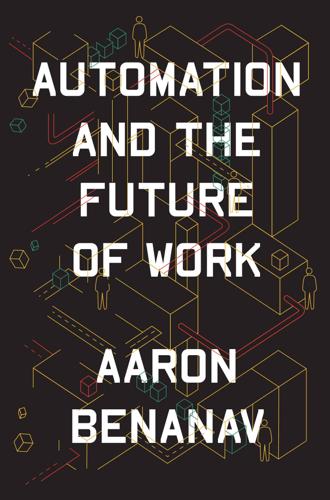
Automation and the Future of Work
by
Aaron Benanav
Published 3 Nov 2020
Were the economy growing quickly, new jobs would easily be generated to replace those that had been lost (what we would be seeing, then, would be a classic example of “creative destruction”).32 By contrast, in an environment of persistent economic slowdown, workers who lose their jobs face significant hurdles in looking for work. A clarification of these wider economic conditions allows us to revisit the question of technology’s role in job loss and explain why “automation” may be a misleading term for how it typically occurs. In seeking to understand the links between technology and job loss, the automation theorists do themselves a disservice. Across much of the literature, research and development in the digital age is presented as a matter of engineers in white lab coats following the technology “wherever it leads them” without having to worry about “end results” or “social outcomes.”33 Graphs of exponentially rising computing capacities—with Moore’s law of rising processor speeds standing in for technical change in general—suggest that technology develops automatically down pre-set paths.34 That suggestion in turn feeds into the fantasy of a coming “singularity,” when machine intelligence will finally give birth to science fiction–style artificial general intelligence, developing at speeds far beyond human comprehension.35 In reality, technological development is highly resource intensive, forcing researchers to pursue certain paths of inquiry at the expense of others.
…
What summons the automation discourse periodically into being is a deep anxiety about the functioning of the labor market: there are simply too few jobs for too many people. Why is the market unable to provide jobs for so many of the workers who need them? Proponents of the automation discourse explain this problem of a low demand for labor in terms of runaway technological change.23 Too Few Jobs If the automation discourse appeals so widely again today, it is because the ascribed consequences of automation are all around us: global capitalism is failing to provide jobs for many of the people who need them. There has been, in other words, a persistently low demand for labor, one which is no longer adequately registered in unemployment statistics.24 Labor underdemand is reflected in higher spikes of unemployment during recessions, as in the 2020 pandemic recession, and in increasingly jobless recoveries, a phenomenon likely to be repeated in the pandemic recession’s aftermath.25 Low labor demand has been evident, as well, in a trend with more generic consequences for working people: a decline in the share of all income earned in a given year that is distributed as wages rather than profits.26 Mainstream economists long held the steadiness of the labor share to be a stylized fact of economic growth, which was supposed to ensure that the gains of economic development were widely distributed.
…
That would not only mark a radical advance in equality; at its limit, it would lead to life beyond wage labor. In their Inventing the Future, UBI accomplishes even more: acting as a red wedge, it becomes a way to accelerate the transition to a fully automated world. A high minimum-income floor empowers workers to refuse work, which in turn incentivizes employers to make jobs enjoyable, or to automate them out of existence.39 UBI becomes a means not of stabilizing the late-capitalist economy, but of pushing toward a post-scarcity world, in which the “economic problem” has been solved and people are free to pursue their passions. Past that point, the major questions concern humanity’s ultimate horizon.

Surviving AI: The Promise and Peril of Artificial Intelligence
by
Calum Chace
Published 28 Jul 2015
The leaders with the weaker forces may feel less inclined to start a war they can be fairly confident they will lose. 3.3 – Economic singularity In the medium term, AI presents economists, business people and policy makers with an even bigger concern than digital disruption. It may render most of us unemployed, and indeed unemployable, because our jobs have been automated. Automation Automation has been a feature of human civilisation since at least the early industrial revolution. In the 15th century, Dutch workers threw their shoes into textile looms to break them. (Their shoes were called sabots, which is a possible etymology for the word “saboteur”.)
…
This means unemployment due to our discovery of means of economising the use of labour outrunning the pace at which we can find new uses for labour.” (19) Decades later, in the late 1970s, a powerful BBC Horizon documentary called Now the Chips are Down alerted a new generation to the idea (and showcased some truly appalling ties.) (20) Up to now the replacement of humans by machines has been a gradual process. Although it has been painful for each individual who was dismissed from a particular job, there was generally the chance to retrain, or find new work elsewhere. The idea that each job lost to automation equates to a person rendered permanently unemployed is known as the Luddite Fallacy. This is unfair to the Luddites, who weren’t advancing a sociological thesis about the long-term effects of technology. They were simply protesting about the very real danger of starvation in the short term.
…
But harder to escape is the thought that the piece of analysis or decision-making that the AI can’t do today, it may well be able to do tomorrow, or the next day. Rapid job churn or economic singularity If computers steal our old jobs, perhaps we can invent lots of new ones? In the past, people whose jobs were automated turned their hands to more value-adding activity, and the net result was higher overall productivity. The children of people who did back-breaking farm work for subsistence wages moved into the cities where they earned a little more doing mundane jobs in offices and factories. Their great-grandchildren now work as social media marketers and user experience designers – jobs which their great-grandparents could not have imagined.
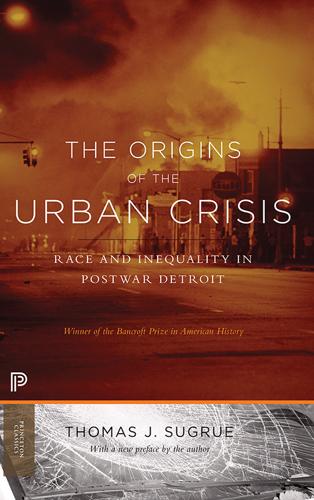
The Origins of the Urban Crisis
by
Sugrue, Thomas J.
It was simply “a better way to do the job.”16 Certainly automated production replaced some of the more dangerous and onerous factory jobs. At Ford, automation eliminated “mankilling,” a task that demanded high speed and involved tremendous risk. “Mankilling” required a worker to remove hot coil springs from a coiling machine, lift them to chest height, turn around, and lower them into a quench tank, all within several seconds. In Ford’s stamping plants, new machines loaded and unloaded presses, another relatively slow, unsafe, and physically demanding job before automation. Here automation offered real benefits to workers.17 5.2.
…
The hemorrhage of jobs continued in 1953 and 1955, when Ford announced the construction of new engine production facilities at Brookpark Village, Ohio, and in Lima, Ohio.23 The effects of automation on job opportunities in communities like Detroit were a well-guarded corporate secret. Responding to labor union criticism of automation, employers downplayed the possibility of significant job loss. When Ford began automating and decentralizing the Rouge plant, John Bugas, Ford’s vice president for industrial relations, told workers that they had nothing to fear. “I do not believe,” wrote Bugas in 1950, “that the over-all reduction in employees in the Rouge operations resulting from the building of new facilities will be substantial.”
…
Interestingly, he advocated early retirement as “one means of cushioning the effect of reduced employment,” and noted that thousands of workers had retired under the “flexible retirement age provision” of the GM pension plan.27 The UAW, for the most part, worried about automation only insofar as it affected employment levels nationwide. National-level data gave little reason for concern. In the 1950s, there was little evidence to show that the number of auto industry jobs nationwide would fall because of automation. Some economists argued that over the long run, the introduction of automated processes would increase jobs nationwide. Aggregate employment statistics, however, masked profound local variation. Local economies in places like Detroit reeled from the consequences of automation-caused plant closings or work force reductions.
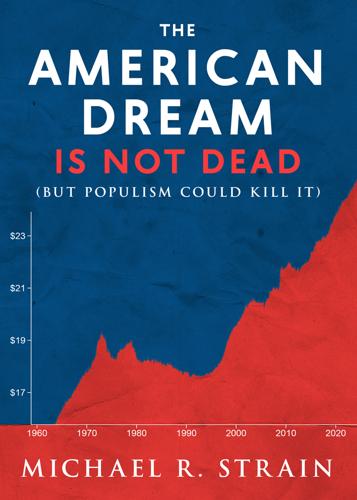
The American Dream Is Not Dead: (But Populism Could Kill It)
by
Michael R. Strain
Published 25 Feb 2020
As with the tasks required in low-wage occupations, it’s hard to program computers and robots to do these well. It is occupations in the middle—that paid better than those at the bottom because their tasks required precision and accuracy, but paid less than those at the top because workers in those occupations are relatively less skilled—that were hit hardest by automation, because their jobs were most amenable to being automated. Those jobs included production and craft workers, machine operators and assemblers—exactly the types of jobs that have political salience today—the jobs that the president mistakenly argues were primarily affected by globalization (which was a factor, but not nearly as large a factor as automation), the jobs that didn’t require a college degree but did offer a middle-class life.
…
But the tasks those workers perform in their jobs have changed. Cash handling is less important—the ATMs can do that. Instead, interpersonal and problem-solving skills have become more important. Relationship management is a skill in demand. The branches still need workers—just to do different things. This is the broader lesson: Certain job tasks can be automated. But most jobs represent a bundle of tasks, some of which are quite difficult to automate. As technology advances and becomes cheaper, situational adaptability, interpersonal interaction, judgment and common sense, and communications skills will become more valuable, because they complement technological change rather than substitute for it.

A World Without Work: Technology, Automation, and How We Should Respond
by
Daniel Susskind
Published 14 Jan 2020
The ALM hypothesis also helps to expose several types of mistaken thinking about the future of work. For instance, it is very common to hear discussions about the chances of various jobs being automated, with statements like “nurses are safe but accountants are in trouble” or “X percent of jobs in the United States are at risk from automation but only Y percent in the UK.” One influential study, by Oxford’s Carl Frey and Michael Osborne, is often reported as claiming that 47 percent of US jobs are at risk of automation in the coming decades, with telemarketers the most at risk (a “99 percent” risk of automation) and recreational therapists the least (a “0.2 percent” risk).29 But as Frey and Osborne themselves have noted, conclusions like this are very misleading.
…
On the other hand, more than 60 percent of the occupations were made up of tasks of which at least 30 percent could be automated.30 In other words, very few jobs could be entirely done by machines, but most could have machines take over at least a significant part of them. That’s why those who claim that “my job is protected from automation because I do X,” where “X” is a task that is particularly difficult to automate, are falling into a trap. Again, no job is made up of one task: lawyers do not only make court appearances, surgeons do not only perform operations, journalists do not only write original opinion pieces. Those particular tasks might be hard to automate, but that does not necessarily apply to all of the other activities these same professionals do in their jobs.
…
The most influential institutes and think tanks—from the IMF to the World Bank, from the OECD to the International Labour Organization—have relied on it to decide which human endeavors are at risk of automation.34 Mark Carney, the governor of the Bank of England, has echoed it in a warning of a “massacre of the Dilberts”: new technologies, he believes, threaten “routine cognitive jobs” like the one that employs Dilbert, the cubicle-bound comic strip character.35 President Obama similarly warned that roles “that are repeatable” are at particular risk of automation.36 And large companies have structured their thinking around the idea: the investment bank UBS claims that new technologies will “free people from routine work and so empower them to concentrate on more creative, value-added services”; the professional services firm PwC says that “by replacing workers doing routine, methodical tasks, machines can amplify the comparative advantage of those workers with problem-solving, leadership, EQ, empathy, and creativity skills”; and Deloitte, another professional services firm, reports that in the UK “routine jobs at high risk of automation have declined but have been more than made up for by the creation of lower-risk, non-routine jobs.”37 Magazine writers and commentators have also popularized the concept. The Economist, for instance, explains that “what determines vulnerability to automation, experts say, is not so much whether the work concerned is manual or white-collar but whether or not it is routine.”
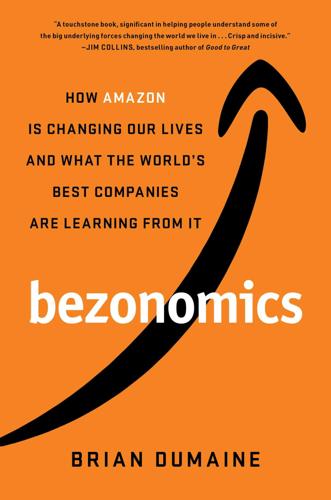
Bezonomics: How Amazon Is Changing Our Lives and What the World's Best Companies Are Learning From It
by
Brian Dumaine
Published 11 May 2020
Of course, Sanders and Bezos’s tussle aside, the long-term worry for Amazon’s lower-rung workers is not that their compensation will dip below that which is sufficient for a comfortable middle-class lifestyle (even at $15 an hour, which works out to $31,000 a year, that goal remains elusive), but that their jobs may be automated out of existence. On this topic, Bezos is a techno-optimist. He believes that the economy will provide jobs for those displaced by automation and AI. That said, from time to time he has pondered the need for a universal basic income (UBI) to make up for lost jobs. In essence, with a UBI the federal government steps in and pays every American a basic wage to make up for the disruption that technology is about to wreak on the job market.
…
By 2022, there will be more than 29 billion connected devices worldwide, roughly four times the number of people in the world. Now tech giants such as Alibaba, JD.com, Tencent, and even Google’s parent, Alphabet—with its smart home devices and self-driving cars—are joining Amazon in its quest to infiltrate every corner of our lives with AI. This has dire implications for the global job market. As these companies automate their warehouses, use drones and self-driving trucks for delivery, many solid blue-collar jobs will disappear. Moreover, as Amazon and other global tech giants move into new industries, they’ll accelerate the digitization of health care, banking, and other sectors of the economy and have an even bigger impact on jobs.
…
It might be true that the economy will eventually replace those jobs, but in the interim a scenario where nearly a third of the world’s workers will be forced to seek new jobs is chilling. It stretches the imagination to believe that the legions of warehouse workers, call center agents, grocery cashiers, retail clerks, and truck drivers who lose their jobs to automation will quickly and easily learn to become computer programmers, solar energy installers, or home care providers. The global economy may eventually generate enough new jobs to replace the 800 million lost, but the disruption in the meantime will be immense. Until now, technology has been about making a worker’s job easier.

Four Futures: Life After Capitalism
by
Peter Frase
Published 10 Mar 2015
The folk tale of John Henry and the steam hammer, which originated in the nineteenth century, describes a railroad worker who tries to race against a steel powered drill and wins—only to drop dead from the effort. But several factors have come together to accentuate worries about technology and its effect on labor. The persistently weak post-recession labor market has produced a generalized background anxiety about job loss. Automation and computerization are beginning to reach into professional and creative industries that long seemed immune, threatening the jobs of the very journalists who cover these issues. And the pace of change at least seems, to many, to be faster than ever. The “second machine age” is a concept promoted by Brynjolfsson and McAfee.
…
As I argue in the following sections, the real impediments to tight labor markets are currently political, not technological. AUTOMATION’S ETERNAL RETURN Mainstream economists have for generations made the same argument about the supposed danger that automation poses to labor. If some jobs are automated, they argue, labor is freed up for other, new, and perhaps better kinds of work. They point to agriculture, which once occupied most of the workforce but now occupies only about 2 percent of it in a country like the United States. The decline of agricultural employment freed up workers who would go into the factories and make up the great industrial manufacturing economy of the mid-twentieth century.
…
Supporters of this position can point to previous waves of anxiety about automation, such as the one in the 1990s that produced works like Jeremy Rifkin’s The End of Work and Stanley Aronowitz and Bill DeFazio’s The Jobless Future.17 As early as 1948, the mathematician and cyberneticist Norbert Weiner warned in his book Cybernetics that in the “second, cybernetic industrial revolution,” we were approaching a society in which “the average human being of mediocre attainments or less has nothing to sell that it is worth anyone’s money to buy.”18 While many jobs have indeed been lost to automation, and jobless rates have risen and fallen with the business cycle, the social crisis of extreme mass unemployment, which many of these authors anticipated, has failed to arrive. Of course, this is the kind of argument that can only be made from a great academic height, while ignoring the pain and disruption caused to actual workers who are displaced, whether or not they can eventually find new work.
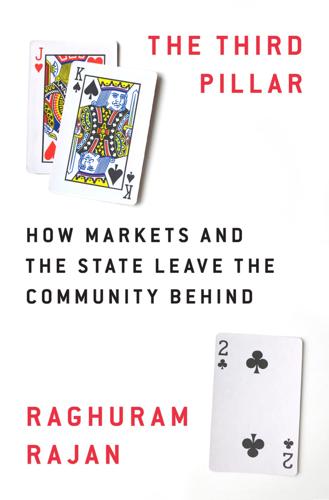
The Third Pillar: How Markets and the State Leave the Community Behind
by
Raghuram Rajan
Published 26 Feb 2019
Of the 1,250 workers represented by the steel workers union in Granite City, only 375 were working at the end of 2016.19 As described by Amy Goldstein in her book Janesville, which follows the Janesville community after General Motors closed a large plant there, the effects on the community can be devastating. In contrast, the job losses due to greater automation and computerization have been spread across manufacturing and services, and typically have hit firms that are more likely to be located near urban areas. Moreover, instead of the whole factory or office closing, a few workers doing routine jobs that can be automated are let go periodically. The remaining workers doing nonroutine work continue to be employed, and typically now are more productive. Higher productivity allows their employer to lower prices, sell more, and hire more workers in nonroutine jobs to meet the increased demand.
…
It is where we congregate to start broader political movements. As we will see later in the book, a healthy, engaged, proximate community may therefore be how we manage the tension between the inherited tribalism in all of us and the requirements of a large, diverse nation. Looking to the future, as more production and service jobs are automated, the human need for relationships and the social needs of the neighborhood may well provide many of the jobs of tomorrow. In closely knit communities, a variety of transactions take place without the use of money or enforceable contracts. One side may get all the benefits in some transactions.
…
A well-documented tragedy of the Industrial Revolution in England is the fate of the handloom weavers.22 The automation of spinning toward the end of the eighteenth century meant that there was much more yarn available to be woven. Automated power looms were only slowly being introduced, so there was strong demand for the labor of handloom weavers to weave the now abundantly available yarn into cloth. Unfortunately, the writing was on the wall—these jobs would be automated also. Indeed, because it was costly to let expensive power looms lie idle, the handloom weavers were already the first to be deprived of work when business slowed. Nevertheless, even as wages in handloom weaving fell as automation and the entry of workers created a labor surplus, the numbers joining the handloom weaving sector continued to increase.

The Lonely Century: How Isolation Imperils Our Future
by
Noreena Hertz
Published 13 May 2020
One of the most widely cited projections of just how significant job losses to automation could be comes from Oxford University academics Carl Frey and Michael Osborne, who forecasted in 2013 that almost half of jobs in the US were at risk of being automated in the next twenty years.76 In April 2020 in an article in the Financial Times, Frey, who directs Oxford University’s programme on the Future of Work, made clear that the coronavirus was likely to accelerate this trend.77 This is supported by a survey conducted by the auditing firm EY in March 2020 of company bosses in forty-five countries, which found that just over 40% were already investing in accelerating automation as they prepared for a post-pandemic world.78 Even if we were to stick with the most conservative estimates – as few as 10% of jobs being lost to automation over the coming decade – we’d still be talking about upwards of 13 million workers losing their jobs in the US alone.79 This, of course, would be on top of the millions upon millions who lost their jobs during the economic crisis caused by the pandemic. In many ways this trajectory is all too familiar. Manufacturing has experienced millions of job losses as a result of automation over the past few decades. In the US, over 5 million manufacturing jobs have been lost to automation since 2000, with each robot replacing on average 3.3 human workers80 – a process that accelerated during the Great Recession beginning in 2008.81 In China – where automation is a major plank of the government’s ‘Made in China 2025’ strategy – this dislocation has been taking place on an even greater scale, with up to 40% of workers in some Chinese industrial companies having been replaced by robots in just the past few years.82 At one mobile-phone factory in Dongguan, 90% of its human workforce has been replaced by robots that work around the clock and never require a lunchbreak.83 Undoubtedly some new categories of jobs will emerge in this age of robots and machines.
…
But history teaches us not only that there is a particular characteristic of jobs lost to automation – once gone they typically vanish, never to return – but also that such employment that is on offer to those who lose their jobs to automation tends to be worse paid than their previous work and of lower status, at least when it comes to low-skilled labour.84 This is one of the reasons why in the US the people most likely to have worked in factories before the rise of robots – men with only a high-school diploma – have seen their wages fall in real terms since the 1980s.85 It’s a similar story in China where many of those who have lost their jobs to automation in recent years are now ‘trying their luck in China’s swelling service sector’ where they are ‘struggling to make a living wage’, according to Jenny Chan, an assistant professor of sociology at Hong Kong Polytechnic University.86 If anything this is likely to be even more the case now, given the disproportionate impact of the coronavirus on jobs in the service sector.
…
This is not because Jake, Flippy’s human co-worker, won’t be able to feel bonded to him – as we will see in the next chapter, he might well – but because although Jake tells me how ‘fun’ it is to see so many customers come in full of ‘Flippy’ love, that feeling may not persist once Jake realises that he (and many more like him) won’t just be battling against other humans for employment: his competition will be a whole army of food-service robots who will always use the correct spatula for raw and cooked meat, always clean the grill meticulously, always know exactly when it’s time to flip the burger, will never be late to work, ask for time off, need benefits, go on strike, call in sick or infect a co-worker. No human could ever compete with that, especially as the cost of robots continues to decrease and as they get better at doing human jobs. One of the most widely cited projections of just how significant job losses to automation could be comes from Oxford University academics Carl Frey and Michael Osborne, who forecasted in 2013 that almost half of jobs in the US were at risk of being automated in the next twenty years.76 In April 2020 in an article in the Financial Times, Frey, who directs Oxford University’s programme on the Future of Work, made clear that the coronavirus was likely to accelerate this trend.77 This is supported by a survey conducted by the auditing firm EY in March 2020 of company bosses in forty-five countries, which found that just over 40% were already investing in accelerating automation as they prepared for a post-pandemic world.78 Even if we were to stick with the most conservative estimates – as few as 10% of jobs being lost to automation over the coming decade – we’d still be talking about upwards of 13 million workers losing their jobs in the US alone.79 This, of course, would be on top of the millions upon millions who lost their jobs during the economic crisis caused by the pandemic.
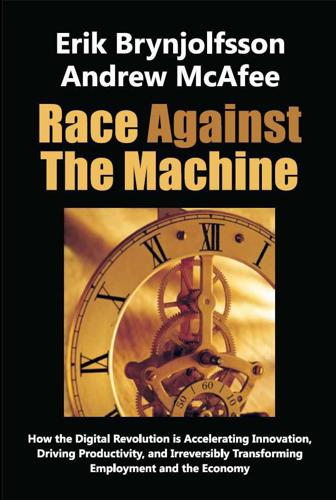
Race Against the Machine: How the Digital Revolution Is Accelerating Innovation, Driving Productivity, and Irreversibly Transforming Employment and the Economy
by
Erik Brynjolfsson
Published 23 Jan 2012
Meanwhile other technologies like data visualization, analytics, high-speed communications, and rapid prototyping have augmented the contributions of more abstract and data-driven reasoning, increasing the value of those jobs. Skill-biased technical change has also been important in the past. For most of the 19th century, about 25% of all agriculture labor threshed grain. That job was automated in the 1860s. The 20th century was marked by an accelerating mechanization not only of agriculture but also of factory work. Echoing the first Nobel Prize winner in economics, Jan Tinbergen, Harvard economists Claudia Goldin and Larry Katz described the resulting SBTC as a “race between education and technology.”

User Stories Applied: For Agile Software Development
by
Mike Cohn
Published 1 Mar 2004

The Singularity Is Nearer: When We Merge with AI
by
Ray Kurzweil
Published 25 Jun 2024
BACK TO NOTE REFERENCE 19 Nedelkoska and Quintini, “Automation, Skills Use and Training,” 7–8. BACK TO NOTE REFERENCE 20 “A New Study Finds Nearly Half of Jobs Are Vulnerable to Automation,” Economist, April 24, 2018, https://www.economist.com/graphic-detail/2018/04/24/a-study-finds-nearly-half-of-jobs-are-vulnerable-to-automation; Frey and Osborne, “Future of Employment: How Susceptible Are Jobs to Computerisation?” BACK TO NOTE REFERENCE 21 Alexandre Georgieff and Anna Milanez, “What Happened to Jobs at High Risk of Automation?,” OECD Social, Employment and Migration Working Papers no. 255 (OECD Publishing, May 21, 2021), https://doi.org/10.1787/10bc97f4-en.
…
A 2018 study by the Organisation for Economic Co-operation and Development reviewed how likely it was for each task in a given job to be automated and obtained results similar to Frey and Osborne’s.[19] The conclusion was that 14 percent of jobs across thirty-two countries had more than a 70 percent chance of being eliminated through automation over the succeeding decade, and another 32 percent had a probability of over 50 percent.[20] The results of the study suggested that about 210 million jobs were at risk in these countries.[21] Indeed, a 2021 OECD report confirmed from the latest data that employment growth has been much slower for jobs at higher risk of automation.[22] And all this research was done before generative AI breakthroughs like ChatGPT and Bard.
…
While in large states like California and Florida drivers account for less than 3 percent of the employed labor force, in Wyoming and Idaho the figure exceeds 4 percent.[10] In parts of Texas, New Jersey, and New York, the percentage rises to 5 percent, 7 percent, or even 8 percent.[11] Most of these drivers are men, most are middle-aged, and most do not have college educations.[12] But autonomous vehicles won’t just disrupt the jobs of people who physically drive behind the wheel. As truck drivers lose their jobs to automation, there will be less need for people to do truckers’ payroll and for retail workers in roadside convenience stores and motels. There’ll be less need for people to clean truck stop bathrooms, and lower demand for sex workers in the places truckers frequent today. Although we know in general terms that these effects will happen, it is very difficult to estimate precisely how large they will be or how quickly these changes will unfold.

Leadership by Algorithm: Who Leads and Who Follows in the AI Era?
by
David de Cremer
Published 25 May 2020
This scientific evidence, combined with our tendency to think of humans and machines as us versus them, poses the question of whether AI will replace people’s jobs at center-stage.³⁰ This question is no longer a peripheral one. It dominates many discussions in business and society, to the extent that websites now exist where one can discover the likelihood of your job being automated in the next 20 years. In fact, we do not even have to wait for this scenario to happen. For example, in 2018 online retailer Shop Direct announced the closure of warehouses because nearly 2,000 jobs had become automated. The largest software company in Europe, SAP, has also eliminated several thousands of jobs by introducing AI into their management structure. The framework for today’s society is clearly dominated by the assumption that humans will be replaced by technology whenever possible (human-out-of-the-loop) and that it only makes sense for humans to be part of the business process when automation is not yet possible (contingent participation).
…
And, subsequently, we recognize suddenly the beauty of an algorithm as a likely candidate to make decisions and, hence, lead. If we move from our theoretical exercise above and on to what we see in practice, we may find some evidence in favour of leadership by algorithm. The one thing that is not going unnoticed is that jobs are increasingly being automated, with algorithms integrated into decision-making processes. This trend could be interpreted as a signal that a new kind of automated leadership may well be on its way. And, why should this be? Well, the faster acting, more accurate and consistent self-learning algorithms become, the more likely it could be that humans will gradually transfer the power to lead to those same algorithms.
…
And it is because of this broader social context that employees are also required to possess the social skills to talk, negotiate, lobby and collaborate with others. Unfortunately, it is also this element of giving meaning to the job in a broader work environment that is hardly ever a focus in the discussion of whether or not jobs should be automated. I argue that we are facing the same problem when we are talking about whether algorithms should and can move into leadership roles. In today’s discussions, a trend has emerged that leadership is only looked upon as a set of required skills. If all the boxes are ticked, a person should be ready to assume a leadership role.

The Fourth Industrial Revolution
by
Klaus Schwab
Published 11 Jan 2016
In fact, in the vast majority of cases, the fusion of digital, physical and biological technologies driving the current changes will serve to enhance human labour and cognition, meaning that leaders need to prepare workforces and develop education models to work with, and alongside, increasingly capable, connected and intelligent machines. Impact on skills In the foreseeable future, low-risk jobs in terms of automation will be those that require social and creative skills; in particular, decision-making under uncertainty and the development of novel ideas. This, however, may not last. Consider one of the most creative professions – writing – and the advent of automated narrative generation. Sophisticated algorithms can create narratives in any style appropriate to a particular audience.
…
, 17 September 2013 Positive impacts – Cost reductions – Efficiency gains – Unlocking innovation, opportunities for small business, start-ups (smaller barriers to entry, “software as a service” for everything) Negative impacts – Job losses – Accountability and liability – Change to legal, financial disclosure, risk – Job automation (refer to the Oxford Martin study) The shift in action Advances in automation were reported on by FORTUNE: “IBM’s Watson, well known for its stellar performance in the TV game show Jeopardy!, has already demonstrated a far more accurate diagnosis rate for lung cancers than humans – 90% versus 50% in some tests.
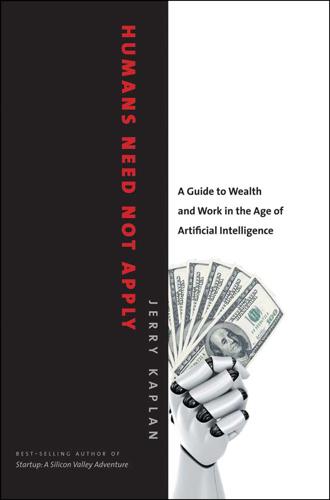
Humans Need Not Apply: A Guide to Wealth and Work in the Age of Artificial Intelligence
by
Jerry Kaplan
Published 3 Aug 2015
This paper meets the requirements of ANSI/NISO Z39.48–1992 (Permanence of Paper). 10 9 8 7 6 5 4 3 2 1 For Camryn Paige Kaplan Turn your dreams into words and make them true. Contents Preface Introduction: Welcome to the Future 1. Teaching Computers to Fish 2. Teaching Robots to Heel 3. Robotic Pickpockets 4. The Gods Are Angry 5. Officer, Arrest That Robot 6. America, Land of the Free Shipping 7. America, Home of the Brave Pharaohs 8. Take This Job and Automate It 9. The Fix Is In Outroduction: Welcome to Your Children’s Future Acknowledgments Notes Index Preface I’m an optimist. Not by nature, but by U.S. government design. After Russia humiliated the United States with the 1957 launch of Sputnik, the first space satellite, the government decided that science education should be a national priority.
…
These systems use enormous computing power and sophisticated adaptive AI algorithms to continuously adjust radio signals to local conditions at multiple receivers simultaneously, eliminating the need for on-premises wiring entirely.17 One such technology is DIDO (distributed input, distributed output), developed by Silicon Valley entrepreneur Steve Perlman, whose previous accomplishments include QuickTime and WebTV. If his approach wins out in the marketplace, he will add handsomely to his already vast fortune, while the 250,000 people currently employed installing and repairing wiring in the United States will be applying for entry-level jobs with Enterprise Rent-a-Car.18 8. Take This Job and Automate It Despite what you read in the press, global warming isn’t all bad, and certainly not for everyone. There will be winners and losers, depending on where you live. In my case, it’s a tad too cool around here for my taste, but luckily for me, the average temperature where I live is projected to rise several degrees over the next few decades.
…
The Law School Admissions Council reports that applications in 2014 were down nearly 30 percent over just the previous two years, returning to levels last seen in 1977.30 New graduates can be saddled with debt of more than $150,000, while the average graduate’s starting salary in 2011 was only $60,000, down nearly 17 percent from just two years earlier.31 But they were the lucky ones. In 2009, an astounding 35 percent of newly minted law school graduates failed to find work that required them to pass the bar exam.32 There are, of course, many factors affecting job opportunities for attorneys, but automation is certainly among them. And the problems are just getting started. To date, the use of computers in the legal profession has been largely focused on the storage and management of legal documents. This reduces billable hours because you don’t have to start from scratch when drafting contracts and briefs.

Forward: Notes on the Future of Our Democracy
by
Andrew Yang
Published 15 Nov 2021
I yelled to the crowd. “How beautiful are you? You don’t look like the internet to me!” Every statement brought a roar from the crowd. Then I launched into my routine, giving a thirty-minute speech about how Trump was not the cause but the symptom of a disease that had been building up for years. How jobs were getting automated away in massive numbers. How the Washington establishment’s halfhearted attempts to retrain America’s workforce weren’t working and no one cared. How gross domestic product (GDP), the measure around which so many decisions were made, was useless and didn’t measure the kind of work my wife did every day.
…
PART II THE ERA OF INSTITUTIONAL FAILURE CHAPTER 9 SYSTEMS FAILURE Coming off the campaign trail in February was a very strange feeling. It felt like I had been running a hundred miles an hour for months, only to find myself suddenly suspended in place. My goals of raising the alarm about job automation and the need to rewrite the social contract hadn’t changed. But how could I best achieve them now? What would post-campaign life look like? I talked on the phone with Pete Buttigieg after both our campaigns ended, and he said something to me that rang true: “You need a vacation. But it also feels like a vacation might not do the trick.”
…
One could ask, how could the richest country in the history of the world allow itself to decline in such fundamental ways? When I ran for president, I made a case for adjustments based on the transformation of the economy due to advancing technologies. During interviews I would often cite various facts and figures—like that we had lost five million manufacturing jobs across various states primarily to automation or that labor force participation rates and business formation rates had already plummeted to multi-decade lows. I was stunned at how infrequently either journalists or lawmakers engaged with the substance of what I was saying. It truly was as if I were speaking a different language.

The Autonomous Revolution: Reclaiming the Future We’ve Sold to Machines
by
William Davidow
and
Michael Malone
Published 18 Feb 2020
But they are arising in a territory we never anticipated—the virtual realm—and in the forms of corporations such as Facebook, Google, and Amazon. Society is already feeling some of the early effects of the Autonomous Revolution. The ice-hard stability of the good job is being replaced by the indeterminate “gig.” Countless other jobs have been shipped overseas or automated out of existence, devastating the middle class. Mind-altering processes are being used to reengineer our children’s brains. Our Brave New Social Networking world looks less open and connected every day—and more and more like the dystopian surveillance states of George Orwell and Aldous Huxley.
…
Inflation-adjusted annual earnings for production employees peaked in the 1970s and is down by 14.6 percent.7 The bottom 50 percent of U.S. taxpayers, approximately 68 million people, had an average adjusted gross income of about $14,800.8 Those incomes are supplemented by transfer payments on the order of $13,000 per household.9 Nobody knows how many autonomous workers are now on the job; all we have is guesses and estimates. But the estimates of the job losses that are to come are staggering. A recent study by Frey and Osborne looked at 702 occupations and concluded that 47 percent of American jobs might be automated in the future.10 McKinsey estimates that 85 percent of the simpler business processes can be automated. Many of those processes are in companies that provide services. Using automation, one European bank was able to originate mortgages in fifteen minutes—instead of two to ten days—cutting origination costs by 70 percent.11 A more recent study by McKinsey estimates that 400 to 800 million jobs around the world will be lost to automation by 2030.12 In 2011, W.
…
Two hundred years ago, when jobs were vanishing in agriculture, they were on the rise in manufacturing. Then, as the latter area matured, new jobs were created in the service industries. Eighty percent of the workforce, 104 million all told, now work in services. But as more and more of those jobs are automated, we need a new area of economic growth to absorb those excess workers. Unfortunately, that area appears to be the burgeoning workerless segment.42 Many of the proposals for bringing back the good job involve investing in infrastructure and creating more manufacturing jobs. But here is the challenge: there are only 6.9 million jobs in construction and 12.5 million jobs in manufacturing, a total of about 19.4 million.

Angrynomics
by
Eric Lonergan
and
Mark Blyth
Published 15 Jun 2020
If businesses are constantly changing or under competitive threat, work is insecure and skills can quickly be made redundant. The Capitalism v.2.0 norm of predictable or stable career paths no longer holds. The second is the stressor to come – the much-heralded fourth industrial revolution where, according to some reports, up to 60 per cent of all jobs will become automated, and work as we know it will disappear. In the past, technological innovation was framed with optimism for huge improvements in standards of living, today the prevalent narrative seems one of fear and dystopia. The third micro-stressor is the fact that the populations of developed countries are getting older, which has both short-and long-term consequences for how economies function and how the old stress out the young.
…
Because this time it was different – different in that AI and ML would combine to do things better than humans can do, and that such machines would get better at doing whatever they do better faster than we can catch up, hence the “race against the machine” and we were all going to lose. So where were we in the race? We needed numbers, and they were duly supplied. An early study from Oxford University estimated that almost half of all US jobs could be automated within ten years. The Bank of England later reduced that number to a third. The OECD then took it down to 9 per cent, as reality took hold.24 That is, once the hysteria died down, certain things started to become apparent. The first was that almost none of these technologies either exist or are deployable at scale.
…
Nonetheless, the constant drumbeat that, for example, in a decade “all truck-driving jobs will go the way of the gas-lighter” may be, in part, responsible for the fact that the US trucking industry was by around 2017 short of 100,000 drivers and the fleet was operating at 100 per cent capacity. After all, if the job will disappear tomorrow, why invest in getting a licence today? As Keynes said, depress expectations today, get less investment tomorrow. Second, while some aspects of almost all jobs can be automated, even ours, not every part of a job can be decomposed. Consider that the fastest growing category of job by volume of jobs produced in the US today is elder care nurse/home help/nursing assistant. Despite the efforts of many Japanese firms, there is no robot for taking care of Grandma – nor do most people want one.

Power and Progress: Our Thousand-Year Struggle Over Technology and Prosperity
by
Daron Acemoglu
and
Simon Johnson
Published 15 May 2023
Workers without college degrees and sometimes even without high school diplomas were hired and trained to operate new, sophisticated machinery, and they received quite attractive wages. The nature and availability of work in the automobile industry changed fundamentally in recent decades, however. Many of the production tasks in the body shop, such as painting, welding, and precision work, as well as a range of assembly jobs, have been automated using robots and specialized software. The wages of blue-collar workers in the industry have not increased much since 1980. Achieving the American dream through the automotive industry is much harder today than in the 1950s or 1960s. One can see the implications of this change in technology and organization of production in the hiring strategies of the industry.
…
Many areas in the industrial heartland of the United States, such as Flint and Lansing in Michigan, Defiance in Ohio, and Beaumont in Texas, used to specialize in heavy industry and offered employment opportunities to tens of thousands of blue-collar workers. After 1970, however, these places were pushed into decline as workers were displaced from their jobs by automation. Other metropolitan areas, such as Des Moines in Iowa and Raleigh-Durham and Hickory in North Carolina, that used to specialize in textiles, apparel, and furniture were equally adversely affected by competition from cheap Chinese imports. Whether from automation or import competition, job losses in manufacturing put downward pressure on worker incomes throughout the local economy and reduced demand for retail, wholesale, and other services, in some cases plunging an entire region into a deep, long-lasting recession.
…
Fears about AI-driven automation are particularly overblown, and “popular perceptions about the world of work are largely misleading.” The report proceeded to provide a clear restatement of the productivity bandwagon: “In fact, by lowering costs of production, automation can create more demand for goods and services, boosting jobs that are hard to automate. The economy may need fewer checkout attendants at supermarkets, but more massage therapists.” The report’s overall assessment: “A bright future for the world of work.” The management consulting company McKinsey expressed a similar conclusion in early 2022 as part of its strategic partnership with the annual World Economic Forum in Davos: For many members of the world’s workforces, change can sometimes be seen as a threat, particularly when it comes to technology.
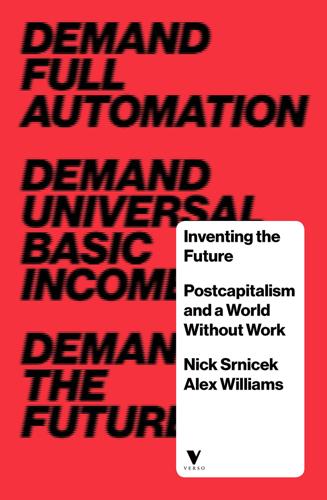
Inventing the Future: Postcapitalism and a World Without Work
by
Nick Srnicek
and
Alex Williams
Published 1 Oct 2015
With the potential for extensive automation of work – a topic that will be discussed further in the next chapter – it is likely that we will see the following trends in the years to come: 1.The precarity of the developed economies’ working class will intensify due to the surplus global labour supply (resulting from both globalisation and automation). 2.Jobless recoveries will continue to deepen and lengthen, predominantly affecting those whose jobs can be automated at the time. 3.Slum populations will continue to grow due to the automation of low-skilled service work, and will be exacerbated by premature deindustrialisation. 4.Urban marginality in the developed economies will grow in size as low-skilled, low-wage jobs are automated. 5.The transformation of higher education into job training will be hastened in a desperate attempt to increase the supply of high-skilled workers. 6.Growth will remain slow and make the expansion of replacement jobs unlikely. 7.The changes to workfare, immigration controls and mass incarceration will deepen as those without jobs are increasingly subjected to coercive controls and survival economies.
…
(The racialisation of the surplus population also enabled owners to manipulate the white working class, keeping wages low and preventing unionisation.)89 As capitalism grew in the postwar era, manufacturing jobs eventually opened up to the black population, and by the mid 1950s rates of black and white youth unemployment were broadly similar.90 But then the globalisation of the labour supply wreaked havoc on low-skilled black workers. With manufacturing jobs shipped overseas or subject to automation, these workers were disproportionately affected by deindustrialisation.91 Industrial jobs left the urban centres and were replaced by service work often located in distant suburban areas.92 The urban ghettos were left to rot, becoming concentrated hubs of long-term joblessness.93 They became poverty traps, devoid of jobs, with little community support and a proliferation of underground economies.94 Entire communities were cast aside from the machinery of capitalism and left to fend for themselves with whatever means could be scraped together.
…
A variety of policies can help in this project: more state investment, higher minimum wages and research devoted to technologies that replace rather than augment workers. In the most detailed estimates of the labour market, it is suggested that between 47 and 80 per cent of today’s jobs are capable of being automated.44 Let us take this estimate not as a deterministic prediction, but instead as the outer limit of a political project against work. We should take these numbers as a standard against which to measure our success. While full automation of the economy is presented here as an ideal and a demand, in practice it is unlikely to be fully achieved.45 In certain spheres, human labour is likely to continue for technical, economic and ethical reasons.

AI 2041: Ten Visions for Our Future
by
Kai-Fu Lee
and
Qiufan Chen
Published 13 Sep 2021
What are the jobs that AI can and cannot displace? What is the future of work? Do we need a new social contract to redefine humans’ fundamental expectations around employment? If long hours of work for economic output are no longer a necessary feature of human life, how will we spend our time? The jobs most at risk of automation by AI tend to be routine and entry-level jobs. This trend will exacerbate existing challenges in society, as those who are poor become poorer. This complicated dynamic—AI’s potential to create unprecedented efficiency as well as deep structural problems in society—can perhaps be best summed up by this question: When it comes to work, is AI ultimately a blessing or a curse?
…
COVID-19 has accelerated the digitization of workflow by companies, which will make RPA and other technologies even easier to apply, thereby accelerating job displacements. While AI displacement is gradual, eventually it will also be total. Optimists argue that productivity gains from new technology almost always produce economic benefits—that more growth and more prosperity always mean more jobs. But AI and automation differ from other technologies. As we’ve established in previous chapters, AI is an omni-use technology that will drive changes across hundreds of industries and millions of tasks simultaneously, both cognitive and physical. While most technologies were job creators and job destroyers at the same time—think about how the assembly line changed the automotive industry from artisans hand-assembling expensive cars to routine workers building many cars at much lower prices—the explicit goal of AI is to take over human tasks, thereby decimating jobs.
…
TOWARD AN AI ECONOMY AND A NEW SOCIAL CONTRACT Turning some of the ideas above into reality would be an unprecedented undertaking for humanity. The AI job-displacement tidal wave will eventually take away virtually all routine jobs, which tend to be entry-level jobs. But if no human takes an entry-level job, how will they learn, grow, and advance to more senior and less routine jobs? As automation becomes pervasive, we need to make sure there are still ways for people to enter all professions, to learn by doing, and to get promoted based on their capabilities. The blurring of “made-up job,” “practical training,” and “real job” are likely to emerge out of necessity, along with the use of VR technologies to implement this.
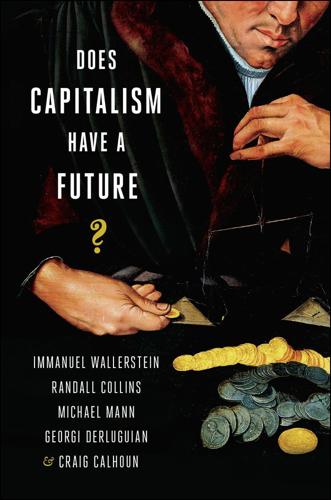
Does Capitalism Have a Future?
by
Immanuel Wallerstein
,
Randall Collins
,
Michael Mann
,
Georgi Derluguian
,
Craig Calhoun
,
Stephen Hoye
and
Audible Studios
Published 15 Nov 2013
Nevertheless, Schumpeter-inspired economists also rely on nothing more than extrapolation of past trends for the argument that the number of jobs created by new products will make up for the jobs lost by destruction of old markets. None of these theories take account of the technological displacement of communicative labor, the escape valve that in the past has brought new employment to compensate for the loss of old employment. It has been argued that as telephone operators and file clerks lose their jobs to automated and computerized systems, an equal number acquire jobs as software developers, computer technicians, and mobile phone salespersons. But no one has shown any good theoretical reason why these numbers should be equal; much less why the automation of these kinds of technical and communicative tasks—for instance by shopping online—cannot drive down the size of the white-collar labor force.
…
In an advanced economy such as the United States, jobs in the service sector have grown to about 75% of the labor force, a result of the decline in industrial and agricultural/extractive occupations (Autor and Dorn 2013). But the service sector is becoming squeezed by the IT economy, itself little more than twenty-five years old. Sales jobs are rapidly becoming automated by computer-generated messaging and by online buying; in brick-and-mortar stores, retail clerks are being replaced by electronic scanners. Management positions too will come under increasing pressure as artificial intelligence grows. There is no intrinsic end to this process of replacing human with computers and other machines.
…
To keep the focus on the central point: how will these affect the technological displacement crisis? Some of them will exacerbate it; some will add pressures for state breakdown and thus raise the chances of revolutions, the rolling of multiple sixes on the dice. Will any of these complications turn back technological displacement, increasing middle class employment, creating new jobs to offset automation and computerization, and in sufficient degree that capitalism will be saved? Let us consider a brief checklist of complications, with these questions in mind. Global unevenness. The mechanisms driving capitalist crisis operate with different intensity in different countries and regions of the world.

I, Warbot: The Dawn of Artificially Intelligent Conflict
by
Kenneth Payne
Published 16 Jun 2021
Skeem. ‘The limits of human predictions of recidivism’, Science Advances, 6(7) (2020), https://doi.org/10.1126/sciadv.aaz0652. 11. Dastin, Jeffrey. ‘Amazon scraps secret AI recruiting tool that showed bias against women’, Reuters, 10 October 2018, https://www.reuters.com/article/us-amazon-com-jobs-automation-insight/amazon-scraps-secret-ai-recruiting-tool-that-showed-bias-against-women-idUSKC-N1MK08G. 12. Singer, Natasha. ‘Amazon is pushing facial technology that a study says could be biased’, The New York Times, 24 January 2019, www.nytimes.com/2019/01/24/technology/amazon-facial-technology-study.html. 13.
…
DARPA, ‘DARPA initiates design of LongShot Unmanned Air Vehicle,’ 8 February 2021, https://www.darpa.mil/news-events/2021–02–08. Dastin, Jeffrey. ‘Amazon scraps secret AI recruiting tool that showed bias against women’, Reuters, 10 October 2018, https://www.reuters.com/article/us-amazon-com-jobs-automation-insight/amazon-scraps-secret-ai-recruiting-tool-that-showed-bias-against-women-idUSKC-N1MK08G. Davies, Joshua. ‘Say hello to Stanley,’ WIRED, 1 June 2006, https://www.wired.com/2006/01/stanley/. Dehaene, Stanislas. Reading in the Brain: The New Science of How We Read. New York: Penguin Books, 2010.
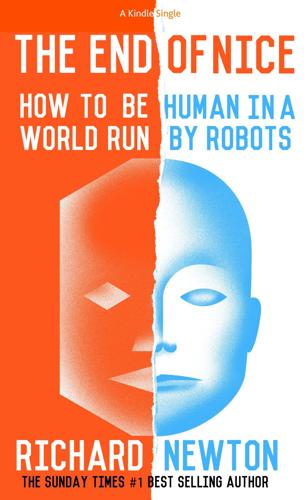
The End of Nice: How to Be Human in a World Run by Robots (Kindle Single)
by
Richard Newton
Published 11 Apr 2015
These once-valuable qualities of rule-bound, routinised and biddable behaviour and consistent, predictable decision-making are precisely the attributes of robots and algorithms. They are not, however, the greatest strengths of humans and this is why the days of humans-as-meat-machines are drawing to a close. To save your job from automation you cannot put in more hours, run faster, make fewer mistakes, sleep any less than you do already. Steel-cased algorithms arriving at the howling speed of six-legged robot soldiers take job after job and each time they teach the lesson: the humans were mere cogs in the machine and they just got switched out.
…
Only to find that his new-fangled push-button lift reached the lobby and he was escorted out of the building. And the same story of woe is repeated through history by chimney sweeps, ice delivery men, punkahwallahs, bus conductors and ironmongers. Of course for you it might be true and maybe no machine can replace you. Perhaps. But if 50% of today’s jobs get automated (as an Oxford University study recently warned… and other studies predict worse outcomes) then the entire fabric of society will be utterly transformed. Those very few people whose jobs remain unchanged may discover their privileged position is as fine and grand as a proud horse harrumphing about their specialness while they stand on the hard shoulder of a motorway.

The Job: The Future of Work in the Modern Era
by
Ellen Ruppel Shell
Published 22 Oct 2018
The second obstacle to an open and honest dialogue is the assumption that acquiring and sustaining good work is by its very nature a winner-take-most proposition by which the victories of the few condemn the many to defeat. On its face, this assumption might seem justified. For many of us the job “hunt” has become a sort of Hunger Game, a cutthroat competition to survive in a world where jobs have been automated away, or shifted from higher-wage nations like the United States to lower-wage nations like China and India. Donald Trump acknowledged—and exploited—this trend when pledging to bring jobs “back home.” The problem with this claim is that in a global economy not all jobs have any particular “home”—many can happily land almost anywhere, and when they land in low-wage nations the benefits sometimes return to American consumers in the form of lower-priced goods.
…
The nation was indeed built on a foundation of cheap labor, and since the steady decline of unions in the 1970s, we’ve come to rely on that cheap labor to prop up industries whose jobs, we’re warned, will fall victim to automation if workers who perform them dare to demand higher wages or better terms and conditions of employment. Indeed, the Bureau of Labor Statistics predicts that despite growing demand for agricultural products over the next decade, an increased demand for agricultural workers is unlikely, as their jobs are being steadily automated. Adjunct college instructors, farm laborers, and others working as contractors may have the flexibility to move between and among gigs, but there’s a good chance that many if not most would gladly trade that flexibility for the opportunity to exert more control over their working lives.
…
The reason, according to a leading drone industry website, is that “there are a lot of people who know how to fly drones.” Job-training programs, whether in or outside of community colleges, have been popular for generations. In response to a 3.5 percent drop in “goods-producing industries,” President John Kennedy signed the Manpower Development and Training Act of 1962, directed at workers who had lost their jobs to automation. The act was the first of a series leading to the Job Training Partnership Act (JTPA) of the early 1980s. In an era of deregulation and cuts in antipoverty efforts, job training and retraining enjoyed widespread support among politicians for offering a “leg up” to the poor rather than a “handout.”
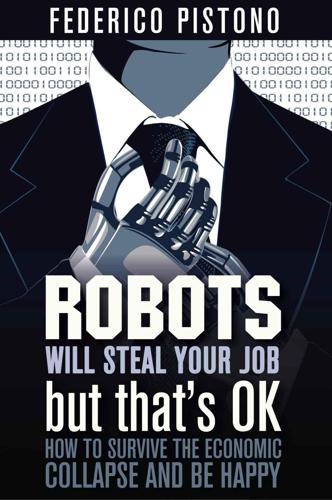
Robots Will Steal Your Job, But That's OK: How to Survive the Economic Collapse and Be Happy
by
Pistono, Federico
Published 14 Oct 2012
If mainstream economists see me as I see proponents of “intelligent design”, it should be pretty easy to refute what I say. In fact, it should be quick to dismiss my claims with a few simple examples. After a year of research and discussion, I am still waiting for them. Marshall Brain, author of Robotic Nation, gave a talk about job displacement due to automation at the Singularity Summit 2008. At the end of his presentation, he was ridiculed by one of the other speakers: “Have you ever heard of this discipline called history? We’ve gone through the same crap 150 years ago, and none of what you say has happened!”. This is the sort of easy criticism that uneducated people make very lightly: it did not happen in the past, why should it happen now?
…
The problem is this: will we be able to keep up with such rapid changes, and educate the millions of workers with no formal education for these new types of jobs? I think the answer is a big and loud NO. There are millions of workers with a high school education at best, and sometimes not even that, who are over 40 years old who only know how to do either manual labour or jobs easy to automate. Any new job that we can come up with will employ a fraction of those people, at best. And these jobs will require a highly receptive, flexible mind, with profound knowledge of highly sophisticated subjects related mostly to the fields of biology, chemistry, computer science, and engineering.
…
Learn to love it, embrace it, and you will succeed. Fail to predict it, resist it, and you will be swept away by the torrent of change that is about to crush our civilisation as we now it. At this point you might be wondering, will not these highly sophisticated and technically challenging jobs be automated, eventually? Given what we have learned about exponential expansion of technologies, the logical answer would be: yes, most of them. Surely we will create new fields of research, and new jobs will follow accordingly. But these new jobs will be even more difficult, and the percentage of population apt to those will be narrower and narrower every time, given that the ability for technology to self-innovate is greater and faster than our ability to keep up with it.

Human Frontiers: The Future of Big Ideas in an Age of Small Thinking
by
Michael Bhaskar
Published 2 Nov 2021
The history of AI is one of crests of hype followed by troughs – the so-called AI winter set in from the 1980s with the broad failure of ‘symbolic’ approaches. But by the 2010s a new spring had arrived, and DeepMind was in the vanguard. Public conversation around AI has been dominated by the risks and rewards of job automation. And yes, this is a significant question. Nonetheless, I have yet to meet an AI scientist motivated by the prospect of automating a call centre. Instead, they are motivated by the prospect of discovery and knowledge far beyond our present abilities. AI scientists are nerds; above all they care about science and ideas.
…
Rogers 332 Homo omnis (Homni) 300 Honjo, Tasuko 58 Hooke, Robert 333 Horgan, John 118, 168 Hossenfelder, Sabine 121–2 Howard Hughes Medical Institute 322 Howes, Anton 24, 172 hubris 122 Huebner, Jonathan 77–9, 81, 86, 91, 94, 97 Hugo, Victor 27 human frontier 7–19, 27, 40–1, 147–8, 156, 158, 249, 277–8, 336, 342–3 and artificial intelligence 250 diminishing returns of the 98 getting stuck at the 45 moral 132, 138 putting to rest 42 and science 123, 124 slowing down at the 14, 86–7, 131 and women 269 hydrogen 145 Hypatia of Alexandria 304 IBM 33, 184, 240, 265, 296, 312 Idea Paradox 178–9, 187, 191, 217, 226, 250, 254, 283–4, 301, 312, 342 ideas ‘0-I’ ideas 31 and economic growth 88, 89–92 nature of 17–18 protection 89 and research and development 90–1 slowdown 90–1 spread of 89–90 world-changing 5–6 see also big ideas illiteracy 277 imagination 16, 236 immunotherapy 57–61 income global 278 median 95 incrementalism 34, 71, 279 India 44, 71, 213, 264–8, 275, 277, 279–80, 284, 294–5, 308, 313, 326–8 individualism 282 Industrial Enlightenment 27 Industrial Revolution 242–3, 252–3, 295, 301 First (IIR) 79–81, 253, 259, 289, 306, 325 Fourth (4IR) 82, 86, 253–4 Second (2IR) 79–80, 81, 83, 84, 86, 104, 253, 289 Third (3IR) 81–2, 83–4, 86, 92, 253–4 inequality 251 infant mortality rate 10, 54 influence 28, 32–3 Initial Public Offerings (IPOs) 95 Inklings 124, 295 innovation 16, 18, 25, 31, 96, 98, 161, 183–5, 214, 274, 286, 288, 296–7, 298, 339 age of 5 breakthrough 32–3 curve of 77–9 disruptive 34 epochal 31 and human capital 277 and industrial revolution 84 and military technology 316–17 normal rates of 177–8 normalisation of 172 parasitic 194 radical 95 risky nature 335 scale 83 slowdown 83, 85 society's attitude to 17, 18 Innovation Illusion 13 institutional revolution 286–301, 309–10, 328–32, 337–8 Intel 92, 253, 272 intellectual, the, death of 110 intellectual property (IP) 89, 195–6, 251, 331 intelligence 247, 299 collective 339 ‘intelligence explosion’ 238 limits to 166–79 interconnectedness 274, 299–300 interest rates 95 International Exhibition of Modern Art, The 103 International Mathematics Olympiad 276 International Space Station 70 Internet 85, 128–9, 183, 185, 196, 246–7, 253–4, 265–6, 272, 274, 297, 300, 315, 329 invention 11, 15, 16, 156–8, 274, 286, 288, 339 and Bell Labs 180–4 and cities 270–2 industrial 24–5 macro- 31, 81 micro- 31 and military technology 316–17 and patents 97 IP see intellectual property IPOs see Initial Public Offerings iron oxide 89 Islam 133, 340 Islamic caliphate 259, 260 Islamic State 305 ITER 146 Jackson, Andrew 67 Jainism 108 Japan 264, 266, 268, 279, 296, 305 Jefferson, Thomas 211 Jenner, Edward 47 Jesus 24, 216, 303 jet engines 69–70 jetpacks 71, 72 Jiankui, He 255–7, 280, 285 job automation 228 job destruction 96 Jobs, Steve 159, 186 Jones, Benjamin F. 156, 158–9, 160–1 Jones, Charles I. 90–1, 93, 94, 152 joy 170–1 Joyce, James 103, 166 Jung, Carl 104 Justinian 304 Kahn, Bob 253 Kahn, Herman 129 The Year 2000 9, 12, 13 Kaku, Michio 337 Kardashev, Nikolai 337 Kardashev Scale 337–43 Kauffmann, Stuart 203 Kay, John 24–5 Kelly, Kevin 300 Kelly, Mervin 182, 206 Kepler, Johannes 36, 229 Khmer Rouge 305 Kim Il-Sung 114 Klimt, Gustav 188 Knossos 153 knowledge ‘burden of knowledge’ effect 154–65, 175, 178, 235, 338 human frontier of 7–19 Koch, Robert 38 Kodak 184 Koestler, Arthur 36, 39 Kokoschka, Oskar 188 Korea 138, 266, 268, 305 see also North Korea; South Korea Kremer, Michael 274 Kristeva, Julia 111 Kuhn, Thomas 29, 30, 159 Kurzweil, Ray 79 Kuznets, Simon 31 labour 88 Lakatos, Imre 121 Lamarck, Jean-Baptiste 35, 164 Langley, Samuel Pierpont 66 Laozi 108 Large Hadron Collider (LHC) 118, 233, 239 Latin America 266–7, 275, 295 Latour, Bruno 111 Lavoisier, Antoine 29, 34 Lawrence Berkeley National Laboratory 234–5, 296 Lawrence, D.H. 103 lawyers 205–6 Lazarsfeld, Paul 189 Le Figaro (newspaper) 64 Le Mans 64 Le sacre du printemps (The Rite of Spring) 99, 100–2, 104 Leeuwenhoek, Antonie van 231 left wing politics 113 Leibniz, Gottfried Wilhelm 25 Lem, Stanisław 44–5 Lenin, Vladimir Ilyich 188 lenses 231 Leonardo da Vinci 155 Lessing, Doris 152 Lewis, C.S. 124 LHC see Large Hadron Collider Li, Danielle 317–18 liberal democracy 111–12 life expectancy 52–5, 57, 93–4, 169 lift 65 light 75–7 Lilienthal, Otto 62, 335 Lister, Joseph 332 literature 103, 108, 124 Locke, John 25, 137, 138 Lockheed Martin 184, 296 London 133 loonshots 31–2 Loos, Adolf 103, 188 Lorenz, Edward 163 low-hanging fruit paradox 149–54, 167, 178 Lucretius 35, 155 Lulu and Nana (genetically edited twins) 255–7, 264 Luther, Martin 230 Lyell, Charles 34, 35 Lynn, Vera 105 M-theory 120 Mach, Ernst 188 machine learning (ML) 225–7, 233–4, 237, 243, 338 Madonna 105 magnetism 74–7 Mahler, Gustav 188 mail order 84–5 Malevich, Kazimir 103 Malik, Charles 134–6, 140 Malthus, Thomas 35 managerialism 204–5, 206–7 Mandelbrot, Benoit 163 Manhattan Project 119, 144–5, 148, 289, 296, 315, 317–18 Manutius, Aldus 253–4 Mao Zedong 328 Maoism 114 Marcellus 4 Marconi, Guglielemo 216, 289 Margulis, Lynn 203 Mars 218, 296, 318, 338, 341 Marx, Karl 36, 329 Massachusetts Institute of Technology (MIT) 88, 146, 184–5, 296, 314, 316, 327 see also MIT Technology Review materials science 234–5 Maxwell, James Clerk 74–7, 79, 80, 166 Demon (thought experiment) 76 Treatise on Electricity and Magnetism 74–7 Mayan civilisation 43 Mazzucato, Mariana 185, 194, 318 McCloskey, Deirdre Nansen 24 McCormick, Cyrus 11 McKeown, Thomas 53 McKinsey 34, 246 medicine 45, 46–62, 70–3, 93–4, 98, 124–6, 217–18, 338 see also drugs mega-authored papers 157 Meister, Joseph 48 Mendeleev, Dmitri 149 Menlo Park lab 286–7, 293 Merton, Robert 328 Mesopotamia 25, 291 Mesoudi, Alex 164 micro-organisms 49–51 microscopes 49, 232 Microsoft 33, 265 Middle East 138 migration 272–3 military technology 3–4 Minecraft 86 Minoans 43, 153 Minsky, Marvin 227 Mises, Ludwig von 189 MIT see Massachusetts Institute of Technology MIT Technology Review 255 Mitchell, Joni 104 modern art 103 modernity 11, 80, 81, 83–4, 85 Mokyr, Joel 25, 31, 44, 68, 81 molecule libraries 56 Mont Pelerin Society 329 Montagu, Lady Mary Wortley 335 Montgolfier brothers 65 Moon missions 70, 71, 218, 263, 315, 316 moonshots 8, 59, 136, 214, 317 Moore, Gordon 92 Moore's Law 55, 84, 92, 93, 97, 240 Morgan, J.P. 287, 288 Morris, Ian 260–1, 306 Morse, Samuel 289 motor vehicles 68–71, 95, 107–8, 219, 289 Motorwagen 68 Mozart, Wolfgang Amadeus 159 multiculturalism 268 multiverse 170, 342 music 99–108, 115, 188 Musil, Robert 188 Musk, Elon 71, 247 Mussolini, Benito 114 mysterians 166, 249 nanotechnology 242, 243, 245, 341 Napoleon Bonaparte 49 Napoleon III 50, 51 narratives, breakdown of grand 115 National Aeronautics and Space Administration (NASA) 71–2, 233, 315–16, 319 National Health Service (NHS) 56, 57 National Institute of Health (NIH) 60, 120, 185–6, 247, 319, 322 nationalism 213 natural selection 35–6, 37, 109, 118, 244 Nature magazine 12, 121, 157, 211, 220, 229 Nazis 48, 132, 190 Negroponte, Nicholas 13 neo-Enlightenment 98 Netherlands 24, 231, 283 neural networks, deep learning 225, 227, 233 Neurath, Otto 189 neuroscience 247 new molecular entities (NMEs) 93 ‘new normals’ 32 New Scientist (magazine) 122 new technology 95 disruptive 96 New York 103, 134 Newton, Isaac 25, 29, 34, 37, 74–5, 155, 159, 232, 341 Ng, Andrew 262 NHS see National Health Service Nielsen, Michael 117 Nigeria 267, 279 NIH see National Institute of Health Nijinsky, Vaslav 99–100 Nixon, Richard 59 NMEs see new molecular entities noble gases 149 Nokia 183 Nordhaus, William 186 norms, ‘new’ 32 North Korea 305 Novacene 238 Novartis 61 nuclear fission 144, 145–6, 148 nuclear fusion 145–8, 234, 317, 341 nuclear power 85, 119, 143–8, 220, 221, 290 nuclear weapons 45, 143, 144, 311 Oak Ridge laboratory 143, 147 Obama, Barack 59 Obninsk 144 Odlyzko, Andrew 184 Office of Scientific Research and Development (OSRD) 316–17 Ogburn, William 39 oil 80 oligopolies 96 optical devices 231–2 orbits, elliptical 36 organisations breakthrough 294–9 see also companies originality 24, 28, 31–3, 152, 177, 283 lack of 108 Ørsted, Hans Christian 74–5 OSRD see Office of Scientific Research and Development Ottomans 277, 308 Oxford University 123–6, 127, 296 Packalen, Mikko 201, 202, 321 Page, Larry 326 Paine, Thomas 137 painting 176–7 panpsychism 340 paper 230, 259 paradigm rigidity 160 paradigm shifts 29, 33, 105, 109, 130, 164, 222, 250, 339 Parfit, Derek 203 Paris 99–103, 110, 132, 135, 205 particle physics 117–18, 119, 120–1, 122 partisanship 209–10 Pasteur, Louis 46–53, 57, 60–1, 71, 77, 79, 139, 232–3, 296, 332, 338 pasteurisation 50, 51 patents 64, 83, 156–8, 194–6, 271–2, 292–3, 297 new classes 97 patronage 322 Paul, St 303 Pauli, Wolfgang 159 Pauling, Linus 118, 323–4 PCR see polymerase chain reaction peer learning 326–7 peer review 320–1 penicillin 38, 52, 125 Penrose, Roger 124 Pentagon, Naval Air War Center 77 pessimism, rational 123–31, 150 pet food 147 Pfizer 61 pharmaceutical industry 31, 55–7, 60, 70 see also drugs Philo of Byzantium 4–5 philosophy 103–4, 111–12, 115, 121, 124, 339 Photoshop 162 physics 74–7, 79, 80, 116–22, 124, 131, 140, 159–62, 166, 239, 242–3, 332, 341 Picasso, Pablo 36, 101, 152 Pierce, John R. 182 Pitcairn Island 42–3 Planck, Max 104, 160, 296 planets, elliptical orbit 36 plasma 145, 146 Plato 3, 108, 169, 291, 304 Plotinus 303 Plutarch 4 polio 53 political policy 114–15 politics 111–15, 208–13 polymerase chain reaction (PCR) 202 Popper, Karl 189 population growth 78, 79 exponential 11 populism 208, 211, 214, 280–1, 307 post-scarcity society 340 post-truth world 213, 215 Pot, Pol 114 Pound, Ezra 103 present 13 Presley, Elvis 36, 152 ‘priming’ 4 Princeton 180, 296 printing press 36, 230, 253–4 problems, catastrophic 42–4 production lines 104 productivity growth 82 profit 186 progress acceleration 8 linear 29 mirage of 5 nature of 13 protein-folding problem 223–6, 228–9 Proust, Marcel 103 Prussia 50 Ptolemaic astronomical system 30 Ptolemy 303 public bodies 205 public health policy 53 PubMed 28, 116 Punic Wars, Second 3 Pythagoras 304 PYTHIA 237 quantum computing 240–1, 263, 296, 312 quantum physics 159, 166, 341 rabies 48, 51 radiation 57 radioactive elements 149 railways 67, 69 Ratcliffe, Peter 124 rational pessimism 123–31, 150 Ravel, Maurice 101 RCA 33, 289 Reagan, Ronald 211 Rees, Martin 167–8 Reformation 230, 233, 328 refugees 220 regulatory burden 205–6 Relativity Theory, General 104, 117 religion 108, 214, 303–4, 340 Rembrandt 236 Renaissance 130, 156, 177, 230, 233, 252, 254 reproducibility crisis 121 research and development 128, 180–7, 214, 252, 286–90, 312, 339–40 agricultural 92–3 autonomous vehicles 219 cancer 59–61 Chinese 262–3 cleantech 195 drugs 55–7, 61, 92–4, 119, 161, 172–3, 217–18, 234, 245, 315, 338 and financialism 192 funding 202–3, 314–24 global spend 128 government funding 314–19 and ideas 90–1 and India 265, 266 military 314–17, 319 multipolar 258 nuclear 147 productivity 91–5, 97–8, 307 and scaling up 279 specialisation 156, 157–8 and tax credits 331 and training 158–60 and transportation 70, 72 and universities 200–4 revolution, diminishing nature 74–98 Ridley, Matt 281, 325 right wing politics 113, 211 rights 132–40 risk 193, 251, 313, 335–6 risk society 329 risk-aversion 210–11 risk-minimisation strategies 330 roads 66, 67 Rocket engine 26 Roerich, Nicholas 100 Rome 3–4, 43 fall of 151, 187, 190, 303–6 Romer, Paul 88–91, 94 Roosevelt, Eleanor 132, 133–6, 139–40 Rose, Jacqueline 111 Rosetta Stone 155 Rotten, Johnny 104 Roux, Emile 48 Royal Institution 75, 154, 292 Royal Society 25, 75, 154, 292, 326 Royal Society of Arts, Manufactures and Commerce 25, 292 Russia 11, 71, 111, 150, 213, 279 see also Soviet Union Russian Chemical Society 149 Rutherford, Ernest 119, 140 S-curve model 32, 33, 35 Sagan, Carl 306, 337 Salvarsan 52 sanitation 53–4 Sarewitz, Dan 175 Sartre, Jean-Paul 110 satellites 9, 70, 153, 181–2, 272, 315–16 saturation, at the limit 166–79 Saturn 75–6 Saussure, Ferdinand de 109 Scaling Revolution 232 scaling up 255–85, 293–5, 298–9, 301–2, 308, 314–15, 317, 337–8 Schiele, Egon 188 Schliemann, Heinrich 153 Schmidt, Eric 262 Schnitzler, Arthur 188 Schoenberg, Arnold 103, 104, 188 Schrödinger, Erwin 124, 237, 332 Schumpeter, Joseph 189 science 104, 115–25, 131, 157, 159–60, 201–2, 276, 332–3 limits of 168 see also biology, chemistry; physics Science (journal) 118, 164, 175, 229, 257 Science Education Initiative (SEI) 327 Scientific American (magazine) 122 Scientific Revolution 29–30, 123, 130, 229–33, 252–3, 291 Sears Roebuck 84–5 Second World War 138–9, 143–4, 148, 296, 314, 316–17, 319 Sedol, Lee 226–7 seed drills 25 SEI see Science Education Initiative semiconductors 180–1, 245, 338 Semmelweis, Ignaz 216 sensory perception 167 sewing machines 11, 33 Shakespeare, William 169 Shannon, Claude 182, 184 shareholder returns 193, 194, 217 Shaw, D.

The Coming Wave: Technology, Power, and the Twenty-First Century's Greatest Dilemma
by
Mustafa Suleyman
Published 4 Sep 2023
To believe and act otherwise risks becoming so crippled by fear of and outrage against enormous, inexorable forces that everything feels futile. So the strange intellectual half-world of pessimism aversion rumbles on. I should know, I was stuck in it for too long. In the years since we founded DeepMind and since those presentations, the discourse has changed—to some extent. The job automation debate has been rehearsed countless times. A global pandemic showcased both the risks and the potency of synthetic biology. A “techlash” of sorts emerged, with critics railing against tech and tech companies in op-eds and books, in the regulatory capitals of Washington, Brussels, and Beijing.
…
Technology makes companies more productive, it generates more money, which then flows back into the economy. Put simply, demand is insatiable, and this demand, stoked by the wealth technology has generated, gives rise to new jobs requiring human labor. After all, skeptics say, ten years of deep learning success has not unleashed a jobs automation meltdown. Buying into that fear was, some argue, just a repeat of the old “lump of labor” fallacy, which erroneously claims there is only a set amount of work to go around. Instead, the future looks more like billions of people working in high-end jobs still barely conceived of. I believe this rosy vision is implausible over the next couple of decades; automation is unequivocally another fragility amplifier.

Abolish Silicon Valley: How to Liberate Technology From Capitalism
by
Wendy Liu
Published 22 Mar 2020
If I needed service workers to do maintenance work or food prep, I would simply contract that out for the cheapest wages the market could bear — the innovation behind the recent spate of gig economy startups. Independent contractors wouldn’t qualify for minimum wage protections or benefits, after all. What would happen to the employee? Well, she could find another job. Of course, other jobs were getting automated or made more unpleasant through the intensification of surveillance technology, but the plight of this employee was not my problem. My only responsibility was to my technology, my investors, the higher notion of progress; the human beings at the short end of the stick were inconveniences to be automated away, necessary sacrifices at the altar of efficiency.

System Error: Where Big Tech Went Wrong and How We Can Reboot
by
Rob Reich
,
Mehran Sahami
and
Jeremy M. Weinstein
Published 6 Sep 2021
But some terms such as “baseball” or “softball” that the model can still consider are highly correlated with the applicant’s gender and can lead the model to make decisions that exhibit gender bias. That’s the kind of situation Amazon found itself in with its résumé-screening tool. Moreover, as job applicants become aware that automated tools are used for screening their résumés, there’s no end to the ways they can game the system. Say you’re an applicant and you know your résumé will be analyzed by a machine. You could submit an electronic copy with some extra text in a white font on a white background at the bottom of the page.
…
As Jason Furman, the chairman of President Obama’s Council of Economic Advisers, noted in a speech in 2016, “The issue is not that automation will render the vast majority of the population unemployable. Instead, it is that workers will either lack the skills or the ability to successfully match with the good, high-paying jobs created by automation.” His conclusion is that we should not be planning for a world in which people find themselves permanently unemployed; we should focus instead on helping households navigate the dislocation caused by automation and fostering the skills, training, and other assistance needed to get people into productive, high-paying jobs.
…
“we can’t afford to live by manual processes”: Harry McCracken, “Meet the Woman Behind Amazon’s Explosive Growth,” Fast Company, April 11, 2019, https://www.fastcompany.com/90325624/yes-amazon-has-an-hr-chief-meet-beth-galetti. “Everyone wanted this holy grail”: Jeffrey Dastin, “Amazon Scraps Secret AI Recruiting Tool That Showed Bias Against Women,” Reuters, October 10, 2018, https://www.reuters.com/article/us-amazon-com-jobs-automation-insight/amazon-scraps-secret-ai-recruiting-tool-that-showed-bias-against-women-idUSKCN1MK08G. significant discrimination based on perceived race: Marianne Bertrand and Sendhil Mullainathan, “Are Emily and Greg More Employable than Lakisha and Jamal? A Field Experiment on Labor Market Discrimination,” American Economic Review 94, no. 4 (2004): 991–1013.
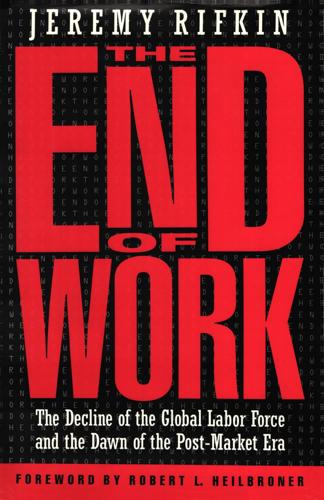
The End of Work
by
Jeremy Rifkin
Published 28 Dec 1994
Recently, however, economists have begun to revise their views in light of new in-depth studies of the US. manufacturing sector. Noted economists Paul R. Krugman of MIT and Robert L. Lawrence of Harvard University suggest, on the basis of extensive data, that "the concern, widely voiced during the 1950S and 1960s, that industrial workers would lose their jobs because of automation, is closer to the truth than the current preoccupation with a presumed loss of manufacturing jobs because of foreign competition."18 Although the number of blue collar workers continues to decline, manufacturing productivity is soaring. In the United States, annual productivity, which was growing at slightly over 1 percent per year in the early 1980s, has climbed to over 3 percent in the wake of the new advances in computer automation and the restructuring of the workplace.
…
As educator Jonathan Kozol points out, "employment qualifications for all but a handful of domestic jobs begins at the ninth-grade level."68 For these Americans, the hope of being retrained or schooled for a new job in the elite knowledge sector is painfully out of reach. And, even if re-education and retraining on a mass scale were implemented, not enough high-tech jobs will be available in the automated economy of the twenty-first century to absorb the vast numbers of dislocated workers. THE SHRINKING PUBLIC SECTOR For the past sixty years, increased government spending has been the only viable means "to cheat the devil of ineffective demand" says economist Paul Samuelson. 69 Technological innovation, rising productivity, growing technological unemployment, and ineffective demand have characterized the American economy since the 1950S, forcing the federal government to adopt a strategy of deficit spending to create jobs, stimulate purchasing power, and boost economic growth.
…
During the 1980s, real hourly compensation in the High-Tech Winners and Losers 167 manufacturing sector alone decreased from $7.78 to $7.69 an hour. 5 By the end of the decade nearly 10 percent of the American workforce was unemployed, underemployed, or working part time because full-time work was unavailable, or were too discouraged to even look for ajob. 6 Between 1989 and 1993, more than 1.8 million workers lost their jobs in the manufacturing sector, many of them victims of automation, either at the hands of their American employers or by foreign companies whose more highly automated plants and cheaper operating costs forced domestic producers to downsize their operations and lay off workers. Of those who have lost their jobs to automation, only a third were able to find new jobs in the service sector, and then at a 20 percent drop in pay. 7 Government figures on employment are often misleading, masking the true dimensions of the unfolding job crisis. For example, in August 1993 the federal government announced that nearly 1,230,000 jobs had been created in the United States in the first half of 1993.

Economic Dignity
by
Gene Sperling
Published 14 Sep 2020
A quarter of American adults say the possibility that robots and computers could do many of the jobs done by humans makes them feel “very worried.”8 A widely cited study by Frey put the number of U.S. jobs at high risk of being automated in the next decade or two due to advances in AI and robots at 47 percent.9 According to a Brookings Institution study, thirty-six million jobs “will face high exposure to automation in the coming decades.”10 Some experts project up to three million jobs could be at risk due to self-driving trucks and cars.11 Martin Ford, author of Rise of the Robots, believes that artificial intelligence “could very well end up in a future with significant unemployment . . . maybe even declining wages . . .
…
Autor finds it a “bet against human ingenuity” for people to in effect say, “If I can’t think of what people will do for work in the future, then you, me and our kids aren’t going to think of it either.”15 Others have much lower—but still significant—estimates of job loss. The OECD estimates that only 9 percent of U.S. jobs are at risk from automation.16 Similarly, analysis by McKinsey & Company found that fewer than 5 percent of jobs could be completely automated.17 My goal is not to litigate which side is right in this ongoing debate. My best guess is that we are less likely to see an unprecedented reduction in overall demand for labor in the coming decades. We’re more likely to see the continuation of current trends in our economy that have led to widening income and wealth inequality with consequential job disruptions from globalization and technological trends.
…
From 2015 to 2017, only about 281,000 of 6.8 million—or 4 percent of—displaced workers received benefits through TAA.55 Indeed, TAA is designed to help only a group of workers who, through an extensive process, can establish they lost their job due to trade. Yet why should it matter if someone lost their job due to trade, automation, AI, some combination of those factors, or simply changing consumer trends? Our goal should be to help people find a new career, not investigate why they lost their old one. A UBI to Rise should be for anyone who qualifies regardless of how their career was disrupted. I have worked on versions of a UBI to Rise for years—in 1994,56 in my 2005 book,57 and in 2012 when President Obama proposed a version.58 It is long past time to get it done.

Always Day One: How the Tech Titans Plan to Stay on Top Forever
by
Alex Kantrowitz
Published 6 Apr 2020
“Leaders expect and require innovation and invention,” it instructs. “They are externally aware, look for new ideas from everywhere, and are not limited by ‘not invented here.’” (A more honest reading of this principle would be: Your entire purpose at Amazon is to invent. If you’re not inventing, your job will get simplified and then automated. At Amazon, you invent or hit the road.) Bias for Action tells Amazonians to get the damn thing out the door, discouraging long, drawn-out development processes in favor of producing new things. “Many decisions and actions are reversible and do not need extensive study,” it says.
…
There are robotics floor technicians, amnesty professionals (who clean up after robots when they drop products), ICQA members (who count the items in the racks, making sure they align with the system’s numbers), and quarterbacks, who monitor the robotics floor from above. In the same time Amazon has added the two hundred thousand robots, it’s added three hundred thousand human jobs. Amazon’s push toward automation may not be sending its associates to the unemployment lines, but it is forcing them to navigate constant change, which can be both invigorating and exhausting. When you work at Amazon, you could be doing something one day, only to have it replaced by computers or robots the next.
…
BuzzFeed News, December 1, 2015. https://www.buzzfeednews.com/article/mathonan/mark-zuckerberg-has-baby-and-says-he-will-give-away-99-of-hi. Amazon AI tool gone bad: Dastin, Jeffrey. “Amazon Scraps Secret AI Recruiting Tool That Showed Bias Against Women.” Reuters. Thomson Reuters, October 9, 2018. https://www.reuters.com/article/us-amazon-com-jobs-automation-insight/amazon-scraps-secret-ai-recruiting-tool-that-showed-bias-against-women-idUSKCN1MK08G. J. Robert Oppenheimer: Ratcliffe, Susan. Oxford Essential Quotations. Oxford, UK: Oxford University Press, 2016. Twenty-five US federal agencies: “NITAAC Solutions Showcase: Technatomy and UI Path.”

Architects of Intelligence
by
Martin Ford
Published 16 Nov 2018
A conditional basic income that encourages people to keep learning and keep studying will make many individuals and families better off because we’re helping people get the training they need to then do higher-value and better-paying jobs. We see economists write reports with statistics like “in 20 years, 50% of jobs are at risk of automation,” and that’s really scary, but the flip side is that the other 50% of jobs are not at risk of automation. In fact, we can’t find enough people to do some of these jobs. We can’t find enough healthcare workers, we can’t find enough teachers in the United States, and surprisingly we can’t seem to find enough wind turbine technicians. The question is, how do people whose jobs are displaced take on these other great-paying, very valuable jobs that we just can’t find enough people to do?
…
On the other hand, activities that are very difficult to automate also cut across wage structures and skills requirements, including tasks that require judgment or managing people, or physical work in highly unstructured and unexpected environments. So many traditionally low wage and high wage jobs are exposed to automation, depending on the activities, but also many other traditionally low wage and high wages jobs may be protected from automation. I want to make sure we cover all the different factors at play here, as well. The fourth key consideration has to do with benefits including and beyond labor substitution. There are going to be some areas where you’re automating, but it’s not because you’re trying to save money on labor, it is because you’re actually getting a better result or even a superhuman outcome.
…
The problem is in the social systems, and whether we’re going to have a social system that shares fairly, or one that focuses all the improvement on the 1% and treats the rest of the people like dirt. That’s nothing to do with technology. MARTIN FORD: That problem comes about, though, because a lot of jobs could be eliminated—in particular, jobs that are predictable and easily automated. One social response to that is a basic income, is that something that you agree with? GEOFFREY HINTON: Yes, I think a basic income is a very sensible idea. MARTIN FORD: Do you think, then, that policy responses are required to address this? Some people take a view that we should just let it play out, but that’s perhaps irresponsible.

Shadow Work: The Unpaid, Unseen Jobs That Fill Your Day
by
Craig Lambert
Published 30 Apr 2015
However, if shadow work saves customers money or time, it will sooner or later prevail—as it has in the other forty-eight states. Eventually, it can become such an established norm that alternatives—full-serve pumps, for example—disappear or are confined to elite enclaves. Sixth, shadow work can cost jobs—in retail service, for example, as pump attendants disappear. This resembles job losses due to automation, though here the customer pitches in alongside the robots to displace the employee. Seventh, shadow work typically decreases human interaction and may even remove it entirely. The self-serve gasoline customer now deals with a robot, not a person. There is no longer an exchange of pleasantries with the pump jockey.
…
Local companies like SoCo Creamery in Great Barrington, Massachusetts, employ youthful employees to dish out a couple dozen flavors. They stack scoopfuls onto cones and sprinkle on custom toppings like Heath Bar pieces. They’ll gladly hand you a sample of an unfamiliar flavor like Chai Spice, Earl Grey Supreme, or Lavender Honey on a taster spoon. Robots are closing in on these young people’s jobs. Automated frozen yogurt parlors get shadow-working customers to perform most of these tasks for themselves. In the New Jersey shore town of Avalon, for example, Toppings of Avalon offers “self surf” nonfat frozen yogurt. Nozzles embedded in a wall offer six flavors of frogurt, which customers dispense themselves into plastic dishes.

Hit Refresh: The Quest to Rediscover Microsoft's Soul and Imagine a Better Future for Everyone
by
Satya Nadella
,
Greg Shaw
and
Jill Tracie Nichols
Published 25 Sep 2017
—more than a few eyes searching for my reaction. The president continued. “The reason that a lot of Americans feel anxious is that the economy has been changing in profound ways, changes that started long before the Great Recession hit and haven’t let up. Today, technology doesn’t just replace jobs on the assembly line, but any job where work can be automated. Companies in a global economy can locate anywhere, and face tougher competition.” I squirmed a little in my chair. In a few words, the president had expressed some of the anxiety we all feel about technology and its impact on jobs—anxiety that would later play out in the election of President Donald Trump.
…
And so beyond this one measure called GDP, we have practically a moral obligation to continue to innovate, to build technology to solve big problems—to be a force for good in the world as well as a tool for economic growth. How can we harness technology to tackle society’s greatest challenges—the climate, cancer, and the challenge of providing people with useful, productive, and meaningful work to replace the jobs eliminated by automation? Just the week before that State of the Union in Washington, DC, questions and observations much like those raised by the president had been leveled at me by heads of state during meetings with customers and partners in the Middle East, in Dubai, Cairo, and Istanbul. Leaders were asking how the latest wave of technology could be used to grow jobs and economic opportunity.
…
One explanation is the German system of vocational training through apprenticeship, which makes cutting-edge technologies available to the workforce quickly through vocational schools that have close relationships with industry. I am convinced the only way to tackle economic displacement is to make sure that we provide skills training not only to people coming out of college and other postsecondary programs, but also to workers who are losing their jobs to automation. Countries that invest in building technology skills as a percent of GDP will see the rewards. Policy reforms must also create a regulatory environment that promotes innovative and confident adoption and use of technology. While data privacy and security are always key concerns, they also need to be balanced against the demands for data to flow more freely across borders and between the various services that make up a modern global digital economy.

The Second Machine Age: Work, Progress, and Prosperity in a Time of Brilliant Technologies
by
Erik Brynjolfsson
and
Andrew McAfee
Published 20 Jan 2014
As demand falls for labor, particularly relatively unskilled labor, wages fall. But can technology actually lead to unemployment? We’re not the first people to ask these questions. In fact, they’ve been debated vigorously, even violently, for at least two hundred years. Between 1811 and 1817, a group of English textile workers whose jobs were threatened by the automated looms of the first Industrial Revolution rallied around a perhaps mythical, Robin Hood–like figure named Ned Ludd and attacked mills and machinery before being suppressed by the British government. Economists and other scholars saw in the Luddite movement an early example of a broad and important new pattern: large-scale automation entering the workplace and affecting people’s wage and employment prospects.
…
Thus in a very real sense, as long as there are unmet needs and wants in the world, unemployment is a loud warning that we simply aren’t thinking hard enough about what needs doing. We aren’t being creative enough about solving the problems we have using the freed-up time and energy of the people whose old jobs were automated away. We can do more to invent technologies and business models that augment and amplify the unique capabilities of humans to create new sources of value, instead of automating the ones that already exist. As we will discuss further in the next chapters, this is the real challenge facing our policy makers, our entrepreneurs, and each of us individually.

99%: Mass Impoverishment and How We Can End It
by
Mark Thomas
Published 7 Aug 2019
It does not depend on unexpected sources of demand developing – an ageing population and the need to develop a sustainable model for the economy both create enormous demand. It does depend on whether supply can ‘see’ the demand – whether the demand is backed by money. As more and more jobs become possible to automate, we face a challenge – will these new technologies create a demand for new and higher added-value jobs for all as some predict, or will they produce a new underclass? What happened last time British people have been through this sort of transformation before, although none of us can remember it.
…
In these areas alone, we could see tens of millions of jobs disappear. But this is just the beginning. Another team at Oxford has been taking a close look at the possibilities for automation in the US. Carl Frey and Michael Osborne examined over 700 occupational categories and for each one assessed the probability that jobs in that sector would be automated within the next twenty years. Their conclusion was that 47 per cent of US jobs are in high-risk categories, with more than a 75 per cent chance of being computerized in the next two decades.26 Only 33 per cent of jobs have less than a 25 per cent chance of being computerized by 2033 – and by 2050 the process will have advanced much further.
…
In the more-advanced economies, the high incomes of those who own or manage the technology and of those who possess high skills may be enough to provide auxiliary service employment for everyone else, but the level of inequality will become so great that a free society will not be able to accept it.31 There is enough evidence to conclude that the coming industrial revolution – if we do not change our economic system – poses an unprecedented threat to millions of people. Over the next twenty years, almost half of jobs currently existing will be automated which will, at the very least, mean wrenching change. By 2050 we could be in a near-workerless economy. We need to rethink our social and economic system fundamentally if we are to avoid disastrous social outcomes. If we do not change it, although we shall have almost limitless potential for supply, much of the demand will be invisible.

Give People Money
by
Annie Lowrey
Published 10 Jul 2018
As famously noted by the futurist Jaron Lanier, at its peak, Kodak employed about 140,000 people; when Facebook acquired it, Instagram employed just 13. The scarier prospect is that more and more jobs are falling to the tide of tech-driven obsolescence. Studies have found that almost half of American jobs are vulnerable to automation, and the rest of the world might want to start worrying too. Countries such as Turkey, South Korea, China, and Vietnam have seen bang-up rates of growth in no small part due to industrialization—factories requiring millions of hands to feed machines and sew garments and produce electronics.
…
legal assistants: Dan Mangan, “Lawyers Could Be the Next Profession to Be Replaced by Computers,” CNBC.com, Feb. 17, 2017. cashiers: Claire Cain Miller, “Amazon’s Move Signals End of Line for Many Cashiers,” New York Times, June 17, 2017. translators: Conner Forrest, “The First 10 Jobs That Will Be Automated by AI and Robots,” ZDNet, Aug. 3, 2015. diagnosticians: Vinod Khosla, “Technology Will Replace 80% of What Doctors Do,” Fortune, Dec. 4, 2012. stockbrokers: Saijel Kishan, Hugh Son, and Mira Rojanasakul, “Robots Are Coming for These Wall Street Jobs,” Bloomberg, Oct. 18, 2017. home appraisers: Joe Light, “The Next Job Humans Lose to Robots: Real Estate Appraiser,” Bloomberg, July 11, 2017.
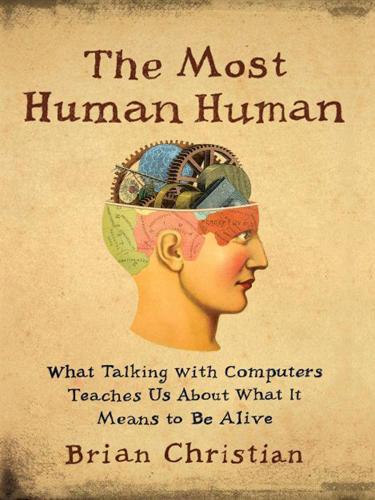
The Most Human Human: What Talking With Computers Teaches Us About What It Means to Be Alive
by
Brian Christian
Published 1 Mar 2011
“I’m less than a farm implement,” says the migrant worker. “I’m an object,” says the high-fashion model. Blue collar and white call upon the identical phrase: “I’m a robot.” –STUDS TERKEL The notion of computer therapists of course raises one of the major things that people think of when AI comes to mind: losing their jobs. Automation and mechanization have been reshaping the job market for several centuries at this point, and whether these changes have been positive or negative is a contentious issue. One side argues that machines take human jobs away; the other side argues that increased mechanization has resulted in economic efficiency that raises the standard of living for all, and that has released humans from a number of unpleasant tasks.

MegaThreats: Ten Dangerous Trends That Imperil Our Future, and How to Survive Them
by
Nouriel Roubini
Published 17 Oct 2022
Now, even some of China’s most popular stars find themselves in the unforgiving glare of the campaign.”47 When the wealthy get wealthier and workers get less, economies suffer from a consumption problem: there isn’t enough of it. Growth eventually may fall as low-income households spend almost everything they have, while the wealthy tend to save more. “As jobs and incomes are relentlessly automated away,” author Martin Ford warns in Rise of the Robots, “the bulk of consumers may eventually come to lack the income and purchasing power necessary to drive the demand that is critical to sustained economic growth.”48 Although there’s no evidence it actually occurred, the colorful exchange attributed to Ford chairman Henry Ford and United Auto Workers president Walter Reuther helps illustrate the dilemma.
…
Our dystopian future may conflate Orwell’s Big Brother, Huxley’s Brave New World and the Hunger Games. We are racing toward destiny. Human nature propels us forward. I won’t sugarcoat a story about super intelligent artificial offspring. I do not foresee a happy future where new jobs replace the jobs that automation snatches. This revolution looks terminal. The flowering of artificial intelligence might alter human life beyond recognition. Earth may be lucky to reach the intelligence explosion of the singularity. Will a deadly pandemic finish us before the transition to machines is complete? Will climate change destroy the planet before rational machines come to the rescue?

The Meritocracy Trap: How America's Foundational Myth Feeds Inequality, Dismantles the Middle Class, and Devours the Elite
by
Daniel Markovits
Published 14 Sep 2019
The jobs most likely to be displaced are routine or routinizable and therefore mid-skilled: loan officers, receptionists, paralegals, retail salespersons, and taxi drivers. The jobs least likely to be displaced are all fluid and require social perception and creative intelligence: reporters, physicians, lawyers, teachers, and doctors. Carl Benedikt Frey and Michael A. Osborne, “Job Automation May Threaten Half of U.S. Workforce,” Bloomberg, March 12, 2014, accessed November 18, 2018, www.bloomberg.com/graphics/infographics/job-automation-threatens-workforce.html. displaced by automation by 2030: James Manyika et al., “Jobs Lost, Jobs Gained: What the Future of Work Will Mean for Jobs, Skills, and Wages,” McKinsey Global Institute, November 2017, accessed October 26 2018, www.mckinsey.com/featured-insights/future-of-work/jobs-lost-jobs-gained-what-the-future-of-work-will-mean-for-jobs-skills-and-wages.
…
And the share of all managers aged forty-five to sixty-four whose job tenure exceeded fifteen years has collapsed (falling by more than a quarter in just the two decades between 1987 and 2006). The process, moreover, continues today. Algorithmic management consulting firms now expressly seek “not [to] automat[e] [line workers’] jobs per se, but [rather to] automat[e] the [middle] manager’s job.” All this downsizing is driven by structural considerations rather than by firm-specific economic distress: it hits profitable as well as unprofitable firms, continues during economic booms as well as busts, and peaked during the epochal economic boom in the 1990s.
…
In addition, the Bureau of Labor Statistics predicts that over the coming decade, the fastest-shrinking job categories will all be mid-skilled, and the ten fastest-growing will all be either low- or super-skilled. The McKinsey Global Institute—the consulting firm’s research arm—forecasts an even more dramatic transformation, predicting that nearly one-third of the U.S. workforce, overwhelmingly in mid-skilled jobs, will be displaced by automation by 2030. These developments, taken all together, constitute not a ripple but a tidal wave—even a sea change. The labor market has, bluntly put, abandoned the midcentury workforce’s democratic center, and this has fundamentally transformed the nature of work. Whereas work once underwrote midcentury America’s apt self-image as an economy and society dominated by the broad middle class, work today underwrites the equally apt sense of a rising division between the rich and the rest.
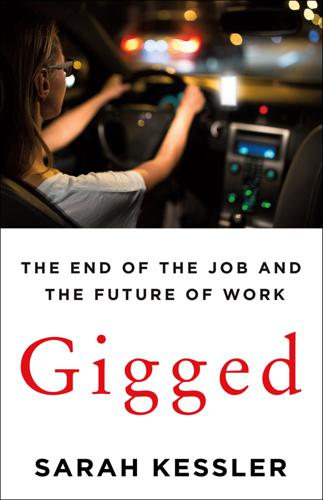
Gigged: The End of the Job and the Future of Work
by
Sarah Kessler
Published 11 Jun 2018
Toyota, Nissan, General Motors, and Google have all estimated that automated cars will be on the road by 2020.3 In the United States, 1.8 million people make a living driving trucks; another 687,000 drive buses; another 1.4 million deliver packages; and another 305,000 work as taxi drivers and chauffeurs. What will they do when vehicles drive themselves? It’s not just drivers who may soon see their jobs, or portions of their jobs, become automated. A recent McKinsey report estimated that almost all jobs could be automated in some respect, though the extent and impact of this automation is likely to vary widely.4 At some point, increasing automation will help power the gig economy, making it even more efficient than it is now. Though Curtis never talked about it, and I’m not sure he even realized it, Gigster’s ultimate goal is to automate as much of the programming process as possible.
…
An executive who Uber unsuccessfully tried to recruit in 2016 told The Guardian that during his job interview, Uber’s chief product officer had responded to a question about how the company would handle the discontent among its drivers by saying, “Well, we’re just going to replace them all with robots” (an Uber spokesman told the paper that its executive did not recall making the statement).19 * * * On her applications to universities, Kristy had described her Mechanical Turk work as a “crowdsourcing micro-contractor” position, a job that she noted included working with several Fortune 500 companies. She hoped to study psychology. Mechanical Turk had shown Kristy how close many jobs were to being automated. She’d been part of a crowd that helped train machines to do things like recognize images and diagnose diseases, and she knew that someday those algorithms wouldn’t need training anymore. They’d replace the humans currently doing the work. As far as she could tell, though, people would always want a therapist to offer a real human connection.

Ghost Work: How to Stop Silicon Valley From Building a New Global Underclass
by
Mary L. Gray
and
Siddharth Suri
Published 6 May 2019
Blue-collar manufacturing jobs have been the most visible targets of AI’s advance. The Foxconn factories that make iPhones allegedly replaced 60,000 humans with robots in 2016. Amazon’s 20 fulfillment centers reportedly deployed 45,000 robots to work alongside 230,000 people that same year. Yet these numbers confound how many jobs are created by automation. And the media coverage of AI’s impact on full-time blue-collar work can distract us from the rapid growth of a new category of human workers to complement or tend to automated manufacturing systems when AI hits its limits. In the past 20 years, the most profitable companies have slowly transitioned from ones that mass-manufacture durable goods, like furniture and clothing, to businesses that sell services, like healthcare, consumer analytics, and retail.
…
Since on-demand work can be available at any time, it can be molded around these responsibilities as well. Finally, if workers are constrained because they don’t have the training for a job they seek, they can use on-demand work to build up a résumé of experience showing that they have what it takes to do a specific job. SEMI-AUTOMATED FUTURE The days of large enterprises with full-time employees working on-site are numbered as more and more projects rely on an off-site workforce available on demand, around the globe. Our employment classification systems, won in the 1930s to make full-time assembly line work sustainable, were not built for this future.

Fully Automated Luxury Communism
by
Aaron Bastani
Published 10 Jun 2019
The ever-greater employment of industrial robots correlates entirely with what can be observed in both manufacturing jobs and output. In the two decades following Leontief’s prediction, information technology and robotics allowed the US steel industry to increase output from 75 to 125 million tonnes while the number of workers declined from 289,000 to 74,000. More broadly, the US lost 2 million manufacturing jobs over the period to automation – around 11 per cent of the sector. Between 1997 and 2005 that trend only continued to accelerate with US manufacturing output increasing by another 60 per cent while almost 4 million more jobs in the sector disappeared. The explanation why is straightforward: a major rise in productivity allowed industry to produce more with less.
…
Those findings confirmed the conclusions of an earlier report published by two Oxford University academics, Carl Benedikt Frey and Michael Osborne. In 2013 they claimed that 47 per cent of all US jobs were at ‘high risk’ of being automated, with a further 19 per cent facing medium risk. Elsewhere Peter Sondergaard, research director for the consultancy Gartner, predicted that by 2025 one in three jobs will be automated as the result of an emerging ‘super class’ of technologies, with general purpose robotics and machine learning leading the way. Finally, in a 2016 report to Congress, White House economists forecast an 83 per cent chance that workers earning less than $20 per hour will lose their jobs to robots in the medium term.
…
Geriatric care – which combines high levels of fine motor coordination with affective labour and ongoing risk management – is one; after all, societies around the world will be affected by ageing populations over the course of the twenty-first century. Health and education generally will remain labour-intensive and, at the very least, will take longer to disappear. Even with these growth areas in mind, however, the overall picture of job losses due to automation makes standing still seem wildly optimistic. The Future of Work Not everyone agrees that progress will lead to peak human in the Third Disruption as the steam engine and fossil fuels led to peak horse in the Second. Indeed, two of the leading voices in the field of work and technological change, Erik Brynjolfsson and Andrew McAfee, believe value will instead increasingly derive from the generation of new ideas.

Evil Geniuses: The Unmaking of America: A Recent History
by
Kurt Andersen
Published 14 Sep 2020
The cost of robots is dropping, and the number installed in American factories has been doubling every few years and has passed a quarter-million. But our “robot density” is still less than a third of South Korea’s and is also much less than that of Japan and the advanced European countries. At the end of 2019, there were still millions of U.S. manufacturing jobs waiting to be automated out of existence by robots and other machines. The easy summary of what’s afflicted our political economy the last forty years is economic inequality and insecurity, fortunate people at and near the top getting paid more and more and remaining highly employable, but no such luck for almost everyone else.
…
There were two factions in those debates….The stupid people thought that automation was going to make all the jobs go away and there wasn’t going to be any work to do. And the smart people understood that when more was produced, there would be more income and therefore there would be more demand. It wasn’t possible that all the jobs would go away, so automation was a blessing….I’m not so completely certain now. To Summers, “the prodigious change” in the political economy wrought by computers and the way we use them looks “qualitatively different from past technological change.” From here on out, “the economic challenge will not be producing enough.
…
But Martin Ford, the Silicon Valley investor, says beware of assurances that the “jobs of the future will involve collaborating with the machines,” because “if you find yourself working with, or under the direction of, a smart software system, it’s probably a pretty good bet that you are also training the software to ultimately replace you.” The authors of What to Do When Machines Do Everything—three executives at the huge digital services and consulting firm Cognizant, whose whole business is about enabling corporations to shrink their workforces—absurdly promise that while some jobs will “be ‘automated away’ in the coming years…for the vast majority of professions, the new machine will actually enhance and protect employment.” Walmart, which employs more Americans by far than any other company, leans hard on that enhance-and-protect line. “Every hero needs a sidekick,” said its cute 2019 press release headlined #SquadGoals, “and some of the best have been automated.

The Internet Is Not the Answer
by
Andrew Keen
Published 5 Jan 2015
And, everyone’s favorite, ROBOTS,” wrote the Atlantic’s Derek Thompson in 2014 about our increasing concern with the elimination of jobs from the economy.17 As if to mark (or perhaps mourn) the twenty-fifth anniversary of the Web, it seems as if 2014 is the year that we’ve finally fully woken up to what the Wall Street Journal columnist Daniel Akst dubs “automation anxiety.”18 The cover of the one business magazine that I’d read on the flight from Chicago to Rochester, for example, featured the image of a deadly tornado roaring through a workspace. “Coming to an office near you . . .,” it warned about what technology will do to “tomorrow’s jobs.”19 Many others share this automation anxiety. The distinguished Financial Times economics columnist Martin Wolf warns that intelligent machines could hollow out middle-class jobs, compound income inequality, make the wealthy “indifferent” to the fate of everyone else, and make a “mockery” of democratic citizenship.20 “The robots are coming and will terminate your jobs,”21 worries the generally cheerful economist Tim Harford in response to Google’s acquisition in December 2013 of Boston Dynamics, a producer of military robots such as Big Dog, a three-foot-long, 240-pound, four-footed beast that can carry a 340-pound load and climb snowy hiking trails.
…
Of the ten jobs that have a 99% likelihood of being replaced by networked software and automation over the next quarter century, Thompson includes tax preparers, library technicians, telemarketers, sewers in clothing factories, accounts clerks, and photographic process workers.41 While it’s all very well to speculate about who will lose their jobs because of automation, Thompson says, “the truth is scarier. We don’t have a clue.”42 But Thompson is wrong. The writing is on the wall about both the winners and the losers in this dehumanizing race between computers and people. We do indeed have more than a clue about its outcome. And that’s what really is scary.
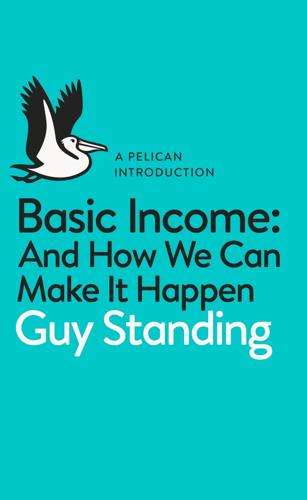
A Pelican Introduction: Basic Income
by
Guy Standing
Published 3 May 2017
It is the latest version of the ‘lump of labour fallacy’, the idea that there is only a certain amount of labour and work to be done, so that if more of it can be automated or done by intelligent robots, human workers will be rendered redundant. In any case, very few jobs can be automated in their entirety. The suggestion in a much-cited study17 that nearly half of all US jobs are vulnerable to automation has been challenged by, among others, the OECD, which puts the figure of jobs ‘at risk’ at 9 per cent for industrialized countries.18 That said, the nature of jobs will undoubtedly change, perhaps rapidly. And while this writer does not believe that a jobless (still less ‘workless’) future is likely, the technological revolution is seriously increasing inequality, with profoundly regressive effects on the distribution of income, as powerful companies and their owners capture the lion’s share of the gains.
…
Star bond investor Bill Gross has also come out in support of a basic income as a response to what he perceives as the coming robot-driven ‘end of work’.13 In July 2016, there was even a Facebook Live roundtable held in the White House on automation and basic income, though in a report issued the following December the US President’s Council of Economic Advisers rejected the idea, seemingly based on its chairman’s critical remarks six months earlier that were dissected in Chapter 4.14 A significant convert to the technological unemployment perspective is Andy Stern, former head of the US Service Employees International Union (SEIU) and the first leading trade unionist to come out in favour of a basic income.15 In a 2016 book widely publicized in the US, Stern claimed that 58 per cent of all jobs would be automated eventually, driven by the ethos of shareholder value. He told the American media group Bloomberg, ‘It’s not like the fall of the auto and steel industries. That hit just a sector of the country. This will be widespread. People will realize that we don’t have a storm anymore; we have a tsunami.’16 Nevertheless, there are reasons to be sceptical about the prospect of a jobless or even workless future.

Blockchain Basics: A Non-Technical Introduction in 25 Steps
by
Daniel Drescher
Published 16 Mar 2017
Due to open questions regarding the legal acceptance of the blockchain, people expressed their doubt whether the blockchain as a fully automated protocol-driven transaction machinery can take the responsibility of its actions in the same way traditional intermediaries do. However, this criticism may foster legal initiatives for clarifying open issues regarding the legal status of the blockchain. 246 Step 25 | Summarizing and Going Further Loss of Jobs Automation and standardization have not only shaped the process and the costs of producing goods but also caused friction in the labor market. Many players in the financial industry such as banks, brokers, custodians, money- transfer agencies, and notaries are directly tied to their roles as intermediaries.
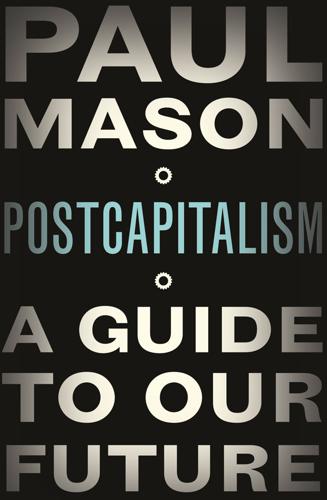
Postcapitalism: A Guide to Our Future
by
Paul Mason
Published 29 Jul 2015
In 2014, the OECD released its projections for the world economy in the years between now and 2060.40 World growth will slow to 2.7 per cent, said the Paris-based think tank, because the catch-up effects boosting growth in the developing world – growing population, education, urbanization – will peter out. Even before that, near-stagnation in advanced economies indicates average global growth of just 3 per cent over the next fifty years, significantly below the pre-crisis average. Meanwhile, because semi-skilled jobs will become automated, leaving only high- and low-paid ones, global inequality will rise by 40 per cent. By 2060, countries such as Sweden will have the levels of inequality currently seen in the USA: think Gary, Indiana in the suburbs of Stockholm. There is also the very real risk that climate change will begin to destroy capital, coastal land and agriculture, shaving up to 2.5 per cent off world GDP, and 6 per cent in south-east Asia.
…
The 250-year history of capitalism has been about pushing market forces into sectors where they did not exist before. Info-capitalism would have to take this to its extremes, creating new forms of person-to-person micro-services, paid for using micro-payments, and mainly in the private sector. And finally, for info-capitalism to succeed it would have to find work for the millions of people whose jobs are automated. These could not be in the majority low-paid jobs because the traditional escape mechanism needs labour costs to rise: human life has to become more complex, needing more labour inputs, not fewer, as in the four cyclical upswings described by long-cycle theory. If all these things could happen, info-capitalism could take off.
…
They predicted two waves of computerization over the next twenty years: ‘In the first wave, we find that most workers in transportation and logistics occupations, together with the bulk of office and administrative support workers, and labour in production occupations, are likely to be substituted by computer capital.’36 In the second wave, it is everything relying on finger dexterity, observation, feedback, or working in a cramped space that gets robotized. They concluded the jobs safest from automation were service jobs where a high understanding of human interaction was needed – for example, nursing – and jobs requiring creativity. The study provoked an outcry along familiar under-consumptionist lines: robots will kill capitalism because they will create mass underemployment and consumption will collapse.

Good Economics for Hard Times: Better Answers to Our Biggest Problems
by
Abhijit V. Banerjee
and
Esther Duflo
Published 12 Nov 2019
For example, inventing new software or hardware health workers could use to assist patients in doing their rehabilitation therapy at home after a surgery rather than in a hospital could potentially save insurance companies lot of money, improve well-being, and create new jobs. But the bulk of the automation effort today in insurance firms goes toward searching for algorithms that automate the approval of insurance claims. This saves money but destroys jobs. This emphasis on the automation of existing jobs increases the potential for the current wave of innovation to be very damaging for workers. That unregulated automation could be bad for workers is also the instinct of most Americans on the right and the left.
…
Cynics might say it is precisely because these more high-end jobs are on the line that we are finally talking about this, and they may be right. But AI will also hurt shelf stackers, office cleaners, restaurant workers, and taxi drivers. Based on the tasks they perform, a McKinsey report6 concludes that 45 percent of US jobs are at risk of being automated, and the OECD estimates that 46 percent of the workers in OECD countries are in occupations at high risk of being either replaced or fundamentally transformed.7 Of course, what this calculation misses is that as some tasks get automatized, and the need for humans gets relieved, people can be put to work elsewhere.
…
TOGETHER IN DIGNITY The reluctance to make use of available government programs, even when they work well, may be related to the fact that a majority of Republicans and a substantial fraction of Democrats are against the government starting a universal income program or a national job program to support those who lose their jobs to automation, even though many more are in favor of limiting the right of companies to replace people with robots.86 Behind this is partly suspicion about the government’s motives (they only want to help “those people”) and partly exaggerated skepticism about the government’s ability to deliver. But there is also something else that even people and organizations on the left share: a suspicion of handouts, of charity without empathy or understanding.

Prediction Machines: The Simple Economics of Artificial Intelligence
by
Ajay Agrawal
,
Joshua Gans
and
Avi Goldfarb
Published 16 Apr 2018
It involves evaluating entire work flows, whether they are within or across jobs (or departmental or organizational boundaries), and then breaking down the work flow into constituent tasks and seeing whether you can fruitfully employ a prediction machine in those tasks. Then, you must reconstitute tasks into jobs. Missing Links in Automation In some cases, the goal is to fully automate every task associated with a job. AI tools are unlikely to be a catalyst for this on their own because work flows amenable to full automation have a series of tasks involved that cannot be (easily) avoided, even for tasks that seem initially to be both low skilled and unimportant.
…
Thus, people unsurprisingly took notice when, in December 2016, he wrote: “The automation of factories has already decimated jobs in traditional manufacturing, and the rise of artificial intelligence is likely to extend this job destruction deep into the middle classes, with only the most caring, creative or supervisory roles remaining.”3 Several studies had already tallied up potential job destruction due to automation, and this time it wasn’t just physical labor but also cognitive functions previously believed immune to such forces.4 After all, horses fell behind in horsepower, not brainpower. As economists, we’ve heard these claims before. But while the specter of technological unemployment has loomed since the Luddites destroyed textile frames centuries ago, unemployment rates have been remarkably low.

Code Dependent: Living in the Shadow of AI
by
Madhumita Murgia
Published 20 Mar 2024
Then She Scanned Her Face Online’, CNN Business, May 24, 2022, https://edition.cnn.com/2022/05/24/tech/cher-scarlett-facial-recognition-trauma/index.html. 12 Carrie Goldberg, Nobody’s Victim: Fighting Psychos, Stalkers, Pervs, and Trolls (Little, Brown and Company, 2019). 13 Margaret Talbot, ‘The Attorney Fighting Revenge Porn’, The New Yorker, November 27, 2016, https://www.newyorker.com/magazine/2016/12/05/the-attorney-fighting-revenge-porn. 14 ‘Section 230’, EFF, n.d., https://www.eff.org/issues/cda230. 15 Haleluya Hadero, ‘Deepfake Porn Could Be a Growing Problem Amid AI Race’, Associated Press News, April 16, 2023, https://apnews.com/article/deepfake-porn-celebrities-dalle-stable-diffusion-midjourney-ai-e7935e9922cda82fbcfb1e1a88d9443a. 16 Ibid. 17 Molly Williams, ‘Sheffield Writer Launches Campaign over “Deepfake Porn” after Finding Own Face Used in Violent Sexual Images’, The Star News, July 21, 2021, https://www.thestar.co.uk/news/politics/sheffield-writer-launches-campaign-over-deepfake-porn-after-finding-own-face-used-in-violent-sexual-images-3295029. 18 ‘Facts and Figures: Women’s Leadership and Political Participation’, The United Nations Entity for Gender Equality and the Empowerment of Women, March 7, 2023, https://www.unwomen.org/en/what-we-do/leadership-and-political-participation/facts-and-figures. 19 Jeffery Dastin, ‘Amazon Scraps Secret AI Recruiting Tool That Showed Bias against Women’, Reuters, October 11, 2018, https://www.reuters.com/article/us-amazon-com-jobs-automation-insight-idUSKCN1MK08G. 20 Mary Ann Sieghart, The Authority Gap: Why Women Are Still Taken Less Seriously Than Men, and What We Can Do about It (Transworld, 2021). 21 Steven Feldstein, ‘How Artificial Intelligence Systems Could Threaten Democracy’, Carnegie Endowment for International Peace, April 24, 2019, https://carnegieendowment.org/2019/04/24/how-artificial-intelligence-systems-could-threaten-democracy-pub-78984. 22 ‘Deepfakes, Synthetic Media and Generative AI’, WITNESS, 2018, https://www.gen-ai.witness.org/. 23 Yinka Bokinni, ‘Inside the Metaverse’ (United Kingdom: Channel 4, April 25, 2022). 24 Yinka Bokinni, ‘A Barrage of Assault, Racism and Rape Jokes: My Nightmare Trip into the Metaverse’, Guardian, April 25, 2022, https://www.theguardian.com/tv-and-radio/2022/apr/25/a-barrage-of-assault-racism-and-jokes-my-nightmare-trip-into-the-metaverse.

Narrative Economics: How Stories Go Viral and Drive Major Economic Events
by
Robert J. Shiller
Published 14 Oct 2019
31 5 The Laffer Curve and Rubik’s Cube Go Viral 41 6 Diverse Evidence on the Virality of Economic Narratives 53 Part II The Foundations of Narrative Economics 7 Causality and Constellations 71 8 Seven Propositions of Narrative Economics 87 Part III Perennial Economic Narratives 9 Recurrence and Mutation 107 10 Panic versus Confidence 114 11 Frugality versus Conspicuous Consumption 136 12 The Gold Standard versus Bimetallism 156 13 Labor-Saving Machines Replace Many Jobs 174 14 Automation and Artificial Intelligence Replace Almost All Jobs 196 15 Real Estate Booms and Busts 212 16 Stock Market Bubbles 228 17 Boycotts, Profiteers, and Evil Business 239 18 The Wage-Price Spiral and Evil Labor Unions 258 Part IV Advancing Narrative Economics 19 Future Narratives, Future Research 271 Appendix: Applying Epidemic Models to Economic Narratives 289 Notes 301 References 325 Index 351 Figures 2.1 Articles Containing the Word Narrative as a Percentage of All Articles in Academic Disciplines 13 3.1 Epidemic Curve Example, Number of Newly Reported Ebola Cases in Lofa County, Liberia, by week, June 8–November 1, 2014 19 3.2 Percentage of All Articles by Year Using the Word Bimetallism or Bitcoin in News and Newspapers, 1850–2019 22 3.3 Frequency of Appearance of Four Economic Theories, 1940–2008 27 5.1 Frequency of Appearance of the Laffer Curve 43 10.1 Frequency of Appearance of Financial Panic, Business Confidence, and Consumer Confidence in Books, 1800–2008 116 10.2 Frequency of Appearance of Financial Panic Narratives within a Constellation of Panic Narratives through Time, 1800–2000 118 10.3 Frequency of Appearance of Suggestibility, Autosuggestion, and Crowd Psychology in Books, 1800–2008 120 10.4 Frequency of Appearance of Great Depression in Books, 1900–2008, and News, 1900–2019 134 11.1 Frequency of Appearance of American Dream in Books, 1800–2008, and News, 1800–2016 152 12.1 Frequency of Appearance of Gold Standard in Books, 1850–2008, and News, 1850–2019 159 13.1 Frequency of Appearance of Labor-Saving Machinery and Technological Unemployment in Books, 1800–2008 175 14.1 Percentage of Articles Containing the Words Automation and Artificial Intelligence in News and Newspapers, 1900–2019 197 15.1 “Housing Bubble” Google Search Queries, 2004–19 226 16.1 Frequency of Appearance of Stock Market Crash in Books, 1900–2008, and News, 1900–2019 232 17.1 Frequency of Appearance of Profiteer in Books, 1900–2008, and News, 1900–2019 243 18.1 Frequency of Appearance of Wage-Price Spiral and Cost-Push Inflation in Books, 1900–2008 259 A.1 Theoretical Epidemic Paths 291 Preface: What Is Narrative Economics?
…
The remaining chapters in this part describe nine perennial economic narratives, along with some of their mutations and recurrences. Most readers will recognize these narratives in their most recent forms but not in their older forms: Panic versus confidence Frugality versus conspicuous consumption Gold standard versus bimetallism Labor-saving machines replace many jobs Automation and artificial intelligence replace almost all jobs Real estate booms and busts Stock market bubbles Boycotts, profiteers, and evil business The wage-price spiral and evil labor unions Some of these chapters present a pair of opposing narrative constellations (for example, frugality versus conspicuous consumption).
…
It is hard to imagine that such a resolution would have passed if the nation had not been experiencing high unemployment. This story fed a contagious economic narrative that helped augment the atmosphere of fear associated with the contraction in aggregate demand during the Great Depression. The loss of jobs to robots (that is, automation) became a major explanation of the Great Depression, and, hence, a perceived major cause of it. An article in the Los Angeles Times in 1931 was one of many that explained this idea: Whenever a man is replaced by a machine a consumer is lost; for the man is deprived of the means of paying for what he consumes.

Empire of AI: Dreams and Nightmares in Sam Altman's OpenAI
by
Karen Hao
Published 19 May 2025
Scale was now recruiting a fresh workforce primarily in the US with a new worker-facing platform called Outlier, offering as much as forty dollars an hour. It was yet another stark illustration of the logic of AI empires. Behind promises of their technologies enhancing productivity, unlocking economic freedom, and creating new jobs that would ameliorate automation, the present-day reality has been the opposite. Companies pad their bottom lines, while the most economically vulnerable lose out and more and more highly educated people become ventriloquists for chatbots. The empire’s devaluing of the human labor that serves it is also just a canary: It foretells how the technologies produced atop this logic will devalue the labor of everyone else.
…
UC Berkeley researcher Deborah Raji, who has continued to engage with global policymakers after the Schumer forums, says this is also a bare minimum for guaranteeing the real-world safety of corporate systems. That is, not the theoretical rogue AI harms of Doomerism, but the existing real-world harms, from discrimination to misinformation to job automation, that consumers and communities can already face if widely deployed models aren’t properly tested. “We have the CFPB that monitors consumer finance products. We have the FDA that monitors medical devices. But for some reason when it comes to AI products, there’s just no oversight,” Raji says.
…
So, too, would visibility into company supply chains, including where they contract their labor and where they’re negotiating new leases of land to build more power plants and data centers, which so often happens under shell entities. Redistributing resources also requires stronger labor protections across the board, not just for the data workers directly contracted by the industry but for all workers at risk of having their outputs co-opted into training data or their jobs being automated away. The Hollywood strikes, which successfully secured writers and actors protections against certain uses of AI, illustrated the critical role that unions will play in resisting the devaluing of human labor, the depression of wages, and the consolidation of money away from workers in the hands of AI companies.
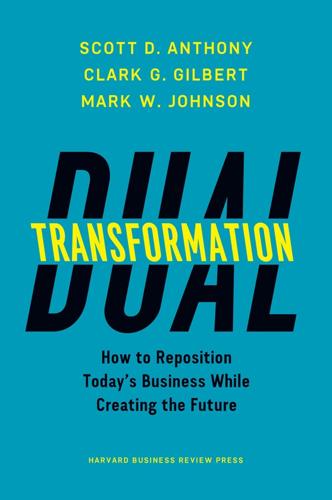
Dual Transformation: How to Reposition Today's Business While Creating the Future
by
Scott D. Anthony
and
Mark W. Johnson
Published 27 Mar 2017
Nestlé and Samsung partnership: Samsung, “Samsung and Nestlé Collaborate on the Internet of Things and Nutrition to Advance Digital Health,” Samsung.com, July 28, 2016, https://news.samsung.com/global/samsung-and-nestle-collaborate-on-the-internet-of-things-and-nutrition-to-advance-digital-health. TechCrunch on platforms: Tom Goodwin, “The Battle Is For The Customer Interface ,” TechCrunch.com, March 3, 2015, https://techcrunch.com/2015/03/03/in-the-age-of-disintermediation-the-battle-is-all-for-the-customer-interface/. Oxford research on job automation: Aviva Hope Rutkin, “Report Suggests Nearly Half of U.S. Jobs Are Vulnerable to Computerization,” Technology Review, September 12, 2013, https://www.technologyreview.com/s/519241/report-suggests-nearly-half-of-us-jobs-are-vulnerable-to-computerization/. Index AbbVie, 19 Ablaza, Gerry, 111, 127–128, 142, 184–185, 189 on aligning leadership and boards, 193 on importance of senior support, 192–193 acquisitions for capability development, 66–69 crises of commitment and, 158–163 pharmaceutical industry, 22–23 at SingPost, 51, 52–53 at Singtel, 145 ACS, 67 additive manufacturing, 202–203 adjacencies, 22–23 Adobe acquisitions and partnerships at, 67 business model innovation at, 40, 42 commitment to transformation A at, 44 experimentation at, 148–149 focus at, 117 postdisruption job to be done at, 39 transformation A at, 31–32, 33 transformation journey at, 181 AdSense, 48 Adult Rock Band, 186 advertising at Google, 48, 61, 77 at Manila Water, 127 newspapers and, 3, 77 at Turner, 96, 99 AdWords, 48, 61 Aetna, 23, 87, 182–183 crises of conflict at, 168 decision making at, 99–102 early warning signs at, 108 purpose at, 177 Affiliated Computer Services (ACS), 14, 64 Affordable Care Act, 100 Alibaba Group, 52–53, 67, 201–202, 203 “aliens,” in transformations, 68–69 alignment, 193–194 overestimation of, 119 transformation blurbs and, 129 Alipay, 201–202 Alliance Boots, 60 Alphabet, 47–48, 54 Altman, Elizabeth, 62 Amara, Roy, 104 Amazon, 53–55, 66 business model of, 106 drone-based deliveries, 203 statement of purpose, 178 Amazon Web Services (AWS), 53–55 America Online, 27 Amobee, 145, 188 Andreessen, Marc, 2–3, 206 Andreessen Horowitz, 206 Android, 4, 92 Anthony, Scott D., 62–63, 72–73, 81 on disruptive potential of YouTube, 108 on risk management, 65 Apple, 4, 8 acquisitions and partnerships at, 67 developer kit, 152 focus at, 116, 132 influence of Xerox on, 13 iPhone, 4, 92–93 transformation journey at, 181–182 arbitration, 86–87 Arizona State University (ASU), 56–57, 59, 183–184 partnerships with, 67 Arrested Development, 35 Ayala Corporation, 117, 143–144 Ayala Group, 184 Aztec empire, conquest of, 43 Baffrey, Robert “Boogz,” 127 Baier, Wolfgang, 52, 53 balance in capabilities link, 75 crises of commitment and, 158–160 curiosity to explore and, 139 between transformations A and B, 173–175 Balsillie, Jim, 4 banking, 151–152, 200–202 Barnes & Noble, 12–13 barriers to consumption, identifying, 61–62 Baxter International, 64, 86 behavior celebrating desired, 149–150 changes in customer, 105 predictors of, 63 Bell Labs, 115 Benioff, Marc, 27–28, 151 Berkshire Hathaway, 156 Berners-Lee, Tim, 3 Bertolini, Mark, 23, 87, 100–102, 168, 182–183 on aligning leadership and boards, 193 on communication, 195 on crises of commitment, 187 on crises of conflict, 190 on focus, 194 on quieting critics, 191–192 Bezos, Jeff, 53–55 BlackBerry, 4 Blank, Steve, 65, 153 Blockbuster Video, 32–33, 34 boards, 11, 166–167, 193–194 Boeing Planner, 78 Bohm, David, 130 Borders, 12–13 Boston Red Sox, 1, 3 boundaries, determining, 121–123, 215 Brigham Young University-Idaho (BYU-Idaho), 9, 59 business model at, 41, 42 commitment to transformation A at, 44 exchange team at, 84 identity change at, 170 the job to be done at, 37–38 postdisruption job to be done at, 39 superheroes at, 174–175 transformation B at, 57–58 Bryan, J.
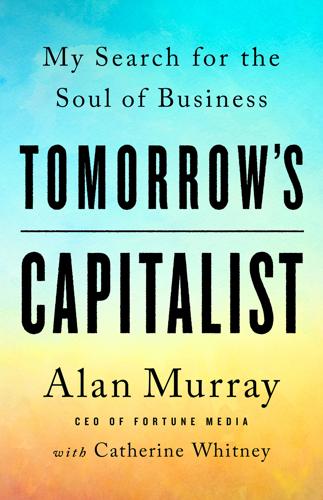
Tomorrow's Capitalist: My Search for the Soul of Business
by
Alan Murray
Published 15 Dec 2022
The heightened expectations of business bring CEOs new demands to focus on societal engagement with the same rigor, thoughtfulness, and energy used to deliver on profits.”23 Eighty-six percent of respondents agreed with the statement, “I expect CEOs to publicly speak out on one or more of these societal challenges, pandemic impact, job automation, societal issues, local community issues.” And 68 percent agreed that “CEOs should step in when government does not for societal impact.” Having said that, in a year when disinformation was rampant, people are feeling shell-shocked and questioning all institutions. I recall a few years ago when Edelman’s global chair of corporate practices, Kathryn Beiser, stated, “Business is the last retaining wall for trust.”

Augmented: Life in the Smart Lane
by
Brett King
Published 5 May 2016
These features were weighted according to how automatable they were, and according to the engineering obstacles currently preventing automation or computerisation. The results were calculated with a common statistical modelling method. The outcome was clear. In the United States, more than 45 per cent of jobs could be automated within one to two decades. Table 2.3 shows a few jobs that are basically at 100 per cent risk of automation (I’ve highlighted a few of my favourites):8 Table 2.3: Some of the Jobs at Risk from Automation and AI Telemarketers Telemarketers Data Entry Professionals Procurement Clerks Title Examiners, Abstractors and Searchers Timing Device Assemblers and Adjusters Shipping, Receiving and Traffic Clerks Sewers, Hand Insurance Claims and Policy Processing Clerks Milling and Planing Machine Setters, Operators Mathematical Technicians Brokerage Clerks Credit Analysts Insurance Underwriters Order Clerks Parts Salespersons Watch Repairers Loan Officers Claims Adjusters, Examiners and Investigators Cargo and Freight Agents Insurance Appraisers, Auto Damage Driver/Sales Workers Tax Preparers Umpires, Referees and Other Sports Officials Radio Operators Photographic Process Workers and Processing Machine Operators Bank Tellers Legal Secretaries New Accounts Clerks Etchers and Engravers Bookkeeping, Accounting and Auditing Clerks Library Technicians Packaging and Filling Machine Operators Inspectors, Testers, Sorters, Samplers and Weighing Technicians One often voiced concern is that AI will create huge wealth for a limited few who own the technology, thus implying that the wealth gap will become even more acute.
…
Robert Tercek, author of Vaporized “We live in a world where software is getting smart enough to automate tasks that only people could do just a few years ago. This is going to radically change the way we educate our children and the way people work in the future. Augmented is a wake-up call for a whole swathe of industries including the accounting profession. If your job can be automated, it probably will be. Artificial intelligence, embedded experience design and real-time advice will undermine many of the professional services industries that grew rapidly last century. The future is one that is very different and King, Lark, Lightman and Rangaswami are the best guys on the planet to explain how we might get there.
…
If we look at the last 30 years of software-based automation using customer relationship management (CRM) and enterprise resource planning (ERP), we generally find that implementing the technology is the easy part. Getting the employees to accept and embrace the new technologies and use them productively is the single most important factor. More often, these new technology projects lead to more staff, contract and consultants jobs than the automation ever replaces. When these projects are successful, they usually informate and create better employee and customer experiences and drive companies to be more successful, grow and hire. When these projects fail, heads roll, customer and employee experiences fall and headcounts are reduced.

The Inevitable: Understanding the 12 Technological Forces That Will Shape Our Future
by
Kevin Kelly
Published 6 Jun 2016
High-level diplomatic translators won’t lose their jobs for a while, but day-to-day translating chores in business will all be better done by machines. In fact, any job dealing with reams of paperwork will be taken over by bots, including much of medicine. The rote tasks of any information-intensive job can be automated. It doesn’t matter if you are a doctor, translator, editor, lawyer, architect, reporter, or even programmer: The robot takeover will be epic. We are already at the inflection point. We have preconceptions about how an intelligent robot should look and act, and these can blind us to what is already happening around us.
…
But every day peasant farmers in China without plumbing purchase smartphones. Crafty AIs embedded in first-person shooter games have given millions of teenage boys the urge, the need, to become professional game designers—a dream that no boy in Victorian times ever had. In a very real way our inventions assign us our jobs. Each successful bit of automation generates new occupations—occupations we would not have fantasized about without the prompting of the automation. To reiterate, the bulk of new tasks created by automation are tasks only other automation can handle. Now that we have search engines like Google, we set the servant upon a thousand new errands.
…
See also artificial intelligence “machine readable” information, 267 Magic Leap, 216 malaria, 241 Malthus, Thomas, 243 Mann, Steve, 247 Manovich, Lev, 200 manufacturing, robots in, 52–53, 55 maps, 272 mathematics, 47, 239, 242–43 The Matrix (1999), 211 maximum likelihood estimation (MLE), 265 McDonalds, 25–26 McLuhan, Marshall, 63, 127 media fluency, 201 media genres, 194–95 medical technology and field AI applications in, 31, 55 and crowdfunding, 157 and diagnoses, 31 future flows of, 80 interpretation services in field of, 69 and lifelogging, 250 new jobs related to automation in, 58 paperwork in, 51 personalization of, 69 and personalized pharmaceuticals, 173 and pooling patient data, 145 and tracking technology, 173, 237, 238–40, 241–42, 243–44, 250 Meerkat, 76 memory, 245–46, 249 messaging, 239–40 metadata, 258–59, 267 microphones, 221 Microsoft, 122–23, 124, 216, 247 minds, variety of, 44–46 Minecraft, 218 miniaturization, 237 Minority Report (2002), 221–22, 255 MIT Media Lab, 219, 220, 222 money, 4, 65, 119–21 monopolies, 209 mood tracking, 238 Moore’s Law, 257 movies, 77–78, 81–82, 168, 204–7 Mozilla, 151 MP3 compression, 165–66 music and musicians AI applications in, 35 creation of, 73–76, 77 and crowdfunding, 157 and free/ubiquitous copies, 66–67 and intellectual property issues, 208–9 and interactivity, 221 liquidity of, 66–67, 73–78 and live performances, 71 low-cost reproduction of, 87 of nonprofessionals, 75–76 and patronage, 72 sales of, 75 soundtracks for content, 76 total volume of recorded music, 165–66 Musk, Elon, 44 mutual surveillance (“coveillance”), 259–64 MyLifeBits, 247 Nabokov, Vladimir, 204 Napster, 66 The Narrative, 248–49, 251 National Geographic, 278 National Science Foundation, 17–18 National Security Agency (NSA), 261 Nature, 32 Negroponte, Nicholas, 16, 219 Nelson, Ted, 18–19, 21, 247 Nest smart thermostat, 253, 283 Netflix and accessibility vs. ownership, 109 and crowdsourcing programming, 160 and on-demand access, 64 and recommendation engines, 39, 154, 169 and reviews, 73, 154 and sharing economy, 138 and tracking technology, 254 Netscape browser, 15 network effect, 40 neural networks, 38–40 newbies, 10–11, 15 new media forms, 194–95 newspapers, 177 Ng, Andrew, 38, 39 niche interests, 155–56 nicknames, 263 nondestructive editing, 206 nonprofits, 157 noosphere, 292 Northwestern University, 225 numeracy, 242–43 Nupedia, 270 OBD chips, 251, 252 obscure or niche interests, 155–56 office settings, 222.

Mastering the Market Cycle: Getting the Odds on Your Side
by
Howard Marks
Published 30 Sep 2018
But on the other hand, automation decreases the hours of labor applied to production. Today we see factories run by just a few workers that thirty years ago might have had a hundred. Thus the net effect of automation on GDP might be neutral or positive but, since it has the ability to eliminate jobs, automation might have the effect of reducing employment, and thus incomes, and thus consumption. Globalization —The integration of nations into a world economy may add to total world economic output, in part because of benefits from specialization, or it may not, leaving it a zero-sum (or negative-sum) exercise.

The New Class Conflict
by
Joel Kotkin
Published 31 Aug 2014
Environmental concerns impose themselves most against basic industries such as fossil fuels, agriculture, and much of manufacturing. These employ many in highly paid blue-collar fields, with average salaries of close to $100,000. In the last decade, top U.S. firms, notes the liberal Center for American Progress, have cut almost three million domestic jobs. Automation also leads to the diminution of traditional white-collar professions as well as the shift of high-end service jobs offshore.25 Overall, it has become increasingly common to regard the middle class as threatened and even doomed. Indeed, as early as 1988 Time magazine featured a cover story on the “declining middle class,” which at that time was considerably healthier than it is today.
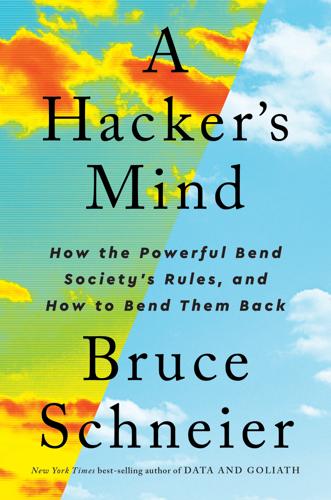
A Hacker's Mind: How the Powerful Bend Society's Rules, and How to Bend Them Back
by
Bruce Schneier
Published 7 Feb 2023
Fjeld et al. (15 Jan 2020), “Principled artificial intelligence: Mapping consensus in ethical and rights-based approaches to principled AI,” Berkman Klein Center for Internet and Society, https://cyber.harvard.edu/publication/2020/principled-ai. 214if an AI system: Select Committee on Artificial Intelligence (16 Apr 2018), “AI in the UK: Ready, willing and able?” House of Lords, https://publications.parliament.uk/pa/ld201719/ldselect/ldai/100/100.pdf. 215Amazon executives lost enthusiasm: Jeffrey Dastin (10 Oct 2018), “Amazon scraps secret AI recruiting tool that shows bias against women,” Reuters, https://www.reuters.com/article/us-amazon-com-jobs-automation-insight/amazon-scraps-secret-ai-recruiting-tool-that-showed-bias-against-women-idUSKCN1MK08G. 215multiple contradictory definitions of fairness: David Weinberger (accessed 11 May 2022), “Playing with AI fairness,” What-If Tool, https://pair-code.github.io/what-if-tool/ai-fairness.html. David Weinberger (6 Nov 2019), “How machine learning pushes us to define fairness,” Harvard Business Review, https://hbr.org/2019/11/how-machine-learning-pushes-us-to-define-fairness. 53.
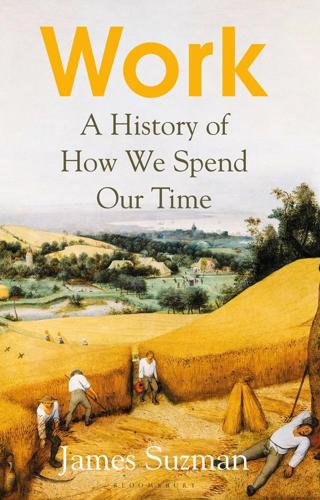
Work: A History of How We Spend Our Time
by
James Suzman
Published 2 Sep 2020
For those in professions that have up to now been immune from technological redundancy, the rise of the job-eating robots manifests in the mundane: the choruses of robotic greetings and reprimands that emanate from the ranks of automated tellers in supermarkets or the clumsy algorithms that both guide and frustrate our adventures in the digital universe. For the hundreds of millions of unemployed people scraping a living in the corrugated-iron margins of developing countries, where economic growth is driven ever more by the marriage of cutting-edge technology and capital and so generates few new jobs, automation is an altogether more immediate concern. It is also an immediate concern for ranks of semi-skilled workers in industrialised economies whose only option is to strike to save their jobs from automata whose principal virtue is that they never go on strike. And, even if it doesn’t feel like it just yet, the writing is on the wall for some in highly skilled professions too.
…
Some regions, like West Slovakia, they anticipated might experience job attrition rates of 40 per cent, while others, like Norway’s capital Oslo, would barely notice anything with fewer than 5 per cent of roles being automated. ‘Top talent’ at McKinsey and Company’s Global Institute suggested that between 30 and 70 per cent of jobs were vulnerable to partial automation over the course of the next fifteen to thirty-five years, and another big consultancy firm, PricewaterhouseCoopers, suggested that 30 per cent of jobs in the United Kingdom, 38 per cent of jobs in the United States, 35 per cent in Germany and only 21 per cent in Japan were vulnerable.
…
Some regions, like West Slovakia, they anticipated might experience job attrition rates of 40 per cent, while others, like Norway’s capital Oslo, would barely notice anything with fewer than 5 per cent of roles being automated. ‘Top talent’ at McKinsey and Company’s Global Institute suggested that between 30 and 70 per cent of jobs were vulnerable to partial automation over the course of the next fifteen to thirty-five years, and another big consultancy firm, PricewaterhouseCoopers, suggested that 30 per cent of jobs in the United Kingdom, 38 per cent of jobs in the United States, 35 per cent in Germany and only 21 per cent in Japan were vulnerable.

21 Lessons for the 21st Century
by
Yuval Noah Harari
Published 29 Aug 2018
Since the beginning of the Industrial Revolution, for every job lost to a machine at least one new job was created, and the average standard of living has increased dramatically.1 Yet there are good reasons to think that this time it is different, and that machine learning will be a real game changer. Humans have two types of abilities – physical and cognitive. In the past, machines competed with humans mainly in raw physical abilities, while humans retained an immense edge over machines in cognition. Hence as manual jobs in agriculture and industry were automated, new service jobs emerged that required the kind of cognitive skills only humans possessed: learning, analysing, communicating and above all understanding human emotions. However, AI is now beginning to outperform humans in more and more of these skills, including in the understanding of human emotions.2 We don’t know of any third field of activity – beyond the physical and the cognitive – where humans will always retain a secure edge.
…
We don’t need humans to sell us music any more – we can download it directly from the iTunes store – but the composers, musicians, singers and DJs are still flesh and blood. We rely on their creativity not just to produce completely new music, but also to choose among a mind-boggling range of available possibilities. Nevertheless, in the long run no job will remain absolutely safe from automation. Even artists should be put on notice. In the modern world art is usually associated with human emotions. We tend to think that artists are channelling internal psychological forces, and that the whole purpose of art is to connect us with our emotions or to inspire in us some new feeling.
…
AI might similarly help groom the best detectives, bankers and soldiers in history.14 The problem with all such new jobs, however, is that they will probably demand high levels of expertise, and will therefore not solve the problems of unemployed unskilled labourers. Creating new human jobs might prove easier than retraining humans to actually fill these jobs. During previous waves of automation, people could usually switch from one routine low-skill job to another. In 1920 a farm worker laid off due to the mechanisation of agriculture could find a new job in a factory producing tractors. In 1980 an unemployed factory worker could start working as a cashier in a supermarket.

The Coming of Neo-Feudalism: A Warning to the Global Middle Class
by
Joel Kotkin
Published 11 May 2020
This does not mean that all American incomes dropped across the board, but the overall trend was downward.38 Upward mobility—the essence of capitalist promise—has declined markedly in virtually all high-income countries.39 In Ontario, the economic center of historically egalitarian Canada, middle-class jobs are disappearing and being replaced by a mix of highly technical jobs and low-end work.40 The “job polarization” resulting from shrinkage of the middle-wage sector can be seen in Europe as well, notably Germany, France, and Sweden—countries long associated with social democracy.41 In the United Kingdom, between 2010 and 2014, urban wages dropped 5 percent even as a million jobs were created.42 In France, a majority of citizens could not save more than 50 euros ($56) a month.43 Future technological advances could further intensify the pressure on the working class globally. In 2017, a British report predicted that about 30 percent of jobs in the UK would be automated within fiteen years, with a higher risk of automation for jobs typically held by men (35 percent) than for those normally done by women (26 percent). It’s easier to automate trucking than nursing.44 Artificial intelligence could accelerate the loss of many kinds of jobs that once provided a means of upward mobility: postal workers, switchboard operators, machinists, computer operators, bank tellers, travel agents.
…
It’s easier to automate trucking than nursing.44 Artificial intelligence could accelerate the loss of many kinds of jobs that once provided a means of upward mobility: postal workers, switchboard operators, machinists, computer operators, bank tellers, travel agents. For the 90 million Americans who work in such jobs—and their counterparts elsewhere—the future could be bleak.45 CHAPTER 14 The Future of the Working Class In the past, fears of job losses from automation were often over-stated. Technological progress eliminated some jobs but created others, and often better-paying ones. In the early days of the high-tech revolution, many of the pioneering firms—such as Hewlett-Packard, Intel, and IBM—were widely praised for treating their lower-level workers as part of the company and deserving of opportunities for advancement, as well as benefits including health insurance and a pension.1 The labor policies of the newer generation of tech giants tend to be vastly different.
…
And too bad if [it] isn’t popular.”26 If political elites in Europe regard open borders as good for the economy, corporate elites in the United States are eager to import skilled technicians and other workers, who typically accept lower wages. The tech oligarchs in particular like to hire from abroad: in Silicon Valley, roughly 40 percent of the tech workforce is made up of noncitizens. Steve Case, the former CEO of America Online, has suggested that immigrant entrepreneurs and workers could offset middle-class job losses from automation.27 Some conservative intellectuals have even thought that hardworking newcomers should replace the “lazy” elements of the working class.28 Some of the earliest opposition to the Trump administration focused on his agenda of curtailing immigration.29 Somewheres vs. Anywheres Ironically, the people who most strongly favor open borders are welcoming large numbers of immigrants who do not share their own secular, progressive values.

The AI Economy: Work, Wealth and Welfare in the Robot Age
by
Roger Bootle
Published 4 Sep 2019
This will probably mean that even in job categories or areas of economic activity where machines will largely take over, there will still need to be a higher level of human oversight.21 Similar conclusions to McKinsey’s have been reached by the OECD. The study mentioned earlier concluded that most jobs were difficult to automate because they required creativity, complex reasoning, the ability to carry out physical tasks in an unstructured work environment, and the ability to negotiate social relationships. The director of employment, labor, and social affairs at the OECD, Stefano Scarpetta, gives an interesting example that contrasts a car mechanic working on a production line in a huge plant with one working in an independent garage.
…
Not the effects envisaged Even where information technology has fulfilled the technological hopes entertained for it and has been employed in the workplace, it has still not had quite the effect on people and society that was envisaged – for both good and ill. There is a long history of people seeing the progress of technology as having negative economic consequences. In 1931 Einstein blamed the Great Depression on machines. In the late 1970s British Prime Minister James Callaghan commissioned a study from the civil service on the threat to jobs from automation.37 When they first emerged, it was widely predicted that computers would put an end to large numbers of office jobs. Nothing of the sort has happened, even though the job of typist has just about disappeared. And what about the paperless office? Remember that one? In particular, it was widely believed when spreadsheet software appeared in the 1980s that this would cause huge job losses among accountants.
…
Accordingly, it is by no means obvious that the AI revolution is bound to increase income inequality. Indeed, it is possible that, at least across some parts of the income distribution, the effect of the AI revolution will be to reduce it. After all, the thrust of preceding chapters is that many manual jobs will not readily succumb to automation. Meanwhile, many skilled but essentially routine white-collar jobs will. Prime examples of the latter include large numbers of mid-level lawyers and accountants. Such people have typically earned much more than the average manual worker. Mind you, this does not settle the matter.

Fair Shot: Rethinking Inequality and How We Earn
by
Chris Hughes
Published 20 Feb 2018

Extreme Economies: Survival, Failure, Future – Lessons From the World’s Limits
by
Richard Davies
Published 4 Sep 2019
But around the world technological advances are also causing fear and uncertainty, with worries about elections, privacy and ethics, and alongside these political fears two deep economic concerns. The first is the prospect of mass unemployment, the idea that labour-saving technology – which could be software or machines – will make human workers redundant. Estimates of the likely job losses as automation looms vary, but the latest studies suggest that 25 per cent of workers in the US and 30 per cent in the UK are at risk of being replaced by a machine. The robots are coming, the story goes, and they are going to take our jobs. The second fear is that technological advances will be unfair, generating a new type of inequality some call the ‘digital divide’.
…
If the complexities a small delivery robot faces can be cracked, and if Mr Heinla is right that trucks and vans will be relatively easy to automate, the era of humans delivering things will soon be over. The prospect of a world of automated delivery is exciting and terrifying. Studies of the risks of automation predict scarily large numbers of job losses. Transport and logistics are big employers: in the US 4 million people currently do the kinds of jobs Mr Heinla predicts will be automated in the near future. This is 4 per cent of the workforce and includes 1.5 million people working in trucking, 630,000 couriers and messengers, 140,000 school and passenger bus drivers, and 75,000 who drive taxis and limousines. In the UK an even higher share of the workforce (6 per cent) does this kind of work.
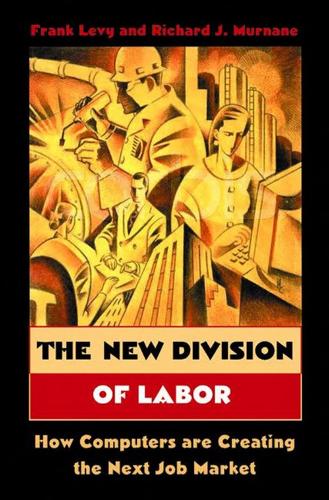
The New Division of Labor: How Computers Are Creating the Next Job Market
by
Frank Levy
and
Richard J. Murnane
Published 11 Apr 2004
The unemployment rate moved through recessions and expansions but the same jobs that were lost on downturns were largely replaced on the upturns. Because the job market was fairly stable, the policies that interacted with the job market—the tax system, education, training—could be stable as well. That world is largely gone now. Many of the jobs lost in the post-2000 recession—clerical and factory jobs lost to automation, call center jobs lost to India, manufacturing jobs lost to China—will not be coming back. This dynamic environment requires new policies and the first step in creating new policies is to recognize our new situation. In chapter 1, we listed a set of four questions this book was designed to answer: • What kinds of tasks do humans perform better than computers?

The Economics of Belonging: A Radical Plan to Win Back the Left Behind and Achieve Prosperity for All
by
Martin Sandbu
Published 15 Jun 2020
—in other words, might it be economics after all, even in Sweden? The economists grouped data on individuals according to whether they were labour market “insiders” with stable jobs or “outsiders” moving in and out of unstable work. They further classified insiders according to how liable their jobs were to be eliminated by automation. Which group a person belonged to turns out to have made a huge difference to their post-2006 fortunes: “Over a mere six years, these reforms led to large shifts in inequality … incomes continued to grow among labour-market ‘insiders’ with stable employment, while cuts in benefits implied a stagnation of disposable incomes for labour-market ‘outsiders’ with unstable or no jobs.
…
Coding, translation, copyediting, and other high-skilled and middle-class jobs are opening up to global competition even as computerised pattern recognition and artificial intelligence mean fewer people are required to accomplish the same amount of work. Automation and globalisation are both expanding from blue-collar to white-collar work, which is set to be disrupted as much as if not more than manufacturing was from the late 1970s on.24 Job loss through automation-driven productivity growth and, to some extent, competition from globalisation—these are the very same forces that, in the absence of an adequate policy response, denied a large group of workers what they expected from the social contract. That means economic belonging is likely to take another hit.
…
That is because lower-skilled routine jobs—for example in retail, warehousing, and customer service such as call centres—are both more threatened by technological innovation and disproportionately found in places that previously lost industry or mining jobs, places like the north of England or the US states of Indiana and Ohio. In contrast, the places with a high proportion of knowledge economy jobs—think Oxford or New York—are not just doing better already but are also more secure because such jobs tend to be harder to automate.25 In baseball, it’s three strikes and you’re out. Unless governments do a better job of rising to this third challenge than they did to the previous two, it is the Western liberal order that is likely to strike out. 5 Scapegoating Globalisation In 1997 a soft-spoken Harvard economics professor named Dani Rodrik published a short book called Has Globalization Gone Too Far?
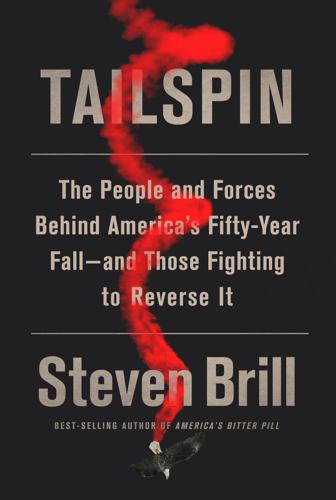
Tailspin: The People and Forces Behind America's Fifty-Year Fall--And Those Fighting to Reverse It
by
Steven Brill
Published 28 May 2018
Their incomes in the three years following the crash went up by nearly a third, while the bottom 99 percent saw an uptick of less than half of one percent. Only a democracy and an economy that has discarded its basic mission of holding the community together, or failed at it, would produce those results. Most Americans with average incomes have been left largely to fend for themselves, often at jobs where automation, outsourcing, the near-vanishing of union protection, and the boss’s obsession with squeezing out every penny of short-term profit have eroded any sense of security. Self-inflicted deaths—from opioid and other drug abuse, alcoholism, and suicide—are at record highs, so much so that the country’s average life expectancy has been falling despite medical advances.
…
In 1950, unions won 74 percent of all election contests to get certified at a workplace, yielding 754,000 new union members. In 1965, they won only 61 percent. In 1980, they won 48 percent, yielding just 175,000 new members. With companies shifting to non-union shops in the South or, later, laying off workers as jobs were automated or outsourced overseas, the dwindling number of new union members was more than offset by workers who went off the union rolls. When Taft-Hartley was passed in 1947, about 37 percent of the entire private workforce in the U.S. was unionized. In 1960, it was still 32 percent. Then it began a downward slide that pushed unionization to 22 percent in 1980, and steadily lower after that.
…
Although with his daughter Ivanka he touted a new push for apprenticeship programs through an executive order, the order was only a directive to his Department of Labor to encourage such programs. No new funds were allocated. The federal government should also provide tax credits or other inducements to corporations to offer retraining programs for workers about to lose their jobs because of automation. When unions were strong, they were sometimes able to negotiate that help into their contracts. After Ford announced plans to close an assembly plant near San Jose, California, in 1983, workers received what could have become a model retraining and transitional income support program. It didn’t help everyone, but more than 80 percent of the workers got new jobs, including 25 percent in the blossoming tech industry in neighboring Silicon Valley.
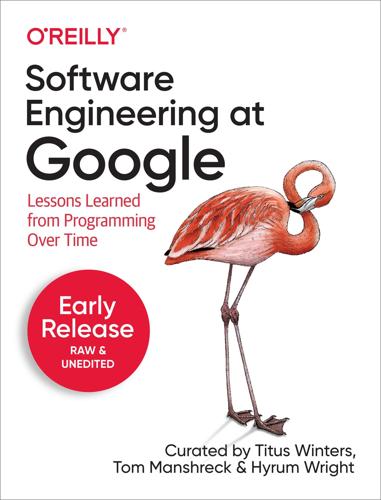
Software Engineering at Google: Lessons Learned From Programming Over Time
by
Titus Winters
,
Tom Manshreck
and
Hyrum Wright
Published 17 Mar 2020
In this environment, we’ve found it useful to treat specific changes as cattle: nameless and faceless commits, which might be rolled back or otherwise rejected at any given time with little cost unless the entire herd is affected. Often this happens because of an unforeseen problem not caught by tests, or even something as simple as a merge conflict. With a “pet” commit, it can be hard to not take rejection personally, but when working with many changes as part of a large-scale change, it’s just the nature of the job. Having automation means that tooling can be updated and new changes generated at very low cost, so losing a few cattle now and then isn’t a problem. Testing Each independent shard is tested by running it through TAP, Google’s continuous integration framework. We run every test which depends on the files in a given change transitively, which often creates high load on our continuous integration system.
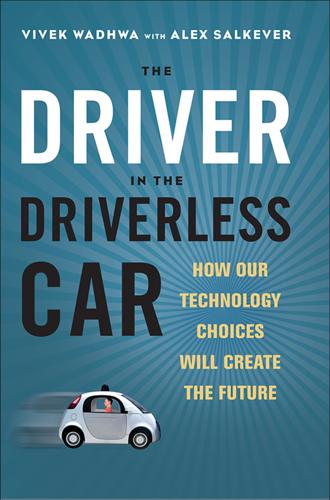
The Driver in the Driverless Car: How Our Technology Choices Will Create the Future
by
Vivek Wadhwa
and
Alex Salkever
Published 2 Apr 2017
A.I.’s medical judgments are already superseding those of human physicians.4 Another example of a profession that you might not expect to be at risk is the legal profession. Only a few decades ago, a law degree was considered a ticket to a solid middle-or upper-middle-class life in the United States. Today, young lawyers are struggling to find jobs, and salaries are stagnant. Automation driven by A.I. has begun to rapidly strip away chunks of what junior attorneys formerly used to do, from contract analysis to document discovery. Symantec, for example, has a software product, Clearwell, that does legal discovery. Legal discovery is the laborious process of sifting through boxes of documents, reams of e-mails, and numerous other forms of information submitted to the court by litigants.
…
In this fashion, the robots will gradually, task by task, assume the jobs of humans in manufacturing plants, in grocery stores, in pharmacies. Hospitals rely on A.I.-driven systems in their pharmacies right now to spot potential problems due to conflicting medicines. I can envisage the job of pharmacist being completely automated. Further down the economic food chain, McDonald’s is in the process of rolling out automated order-taking at its counters. This could be matched by an automated engine to cook hamburger and fries. One of these already exists. It’s from a venture-backed company called Momentum Machines and can make a hamburger every ten seconds.
…
What’s more, about 60 percent of all occupations could see 30 percent or more of their work activities automated.”11 The report also notes that the mere ability to automate work doesn’t make it a sensible thing to do. As long as $10-per-hour cooks are cheaper than Momentum Machines on fast-food lines, it’s unlikely that food-service jobs will succumb to automation. The alternative extreme—no robots—is simply not realistic. The giant bubble of aging people could overwhelm most of the developed world, as well as many developing countries, such as China. Self-driving cars will save tens of millions of lives over the next decades. More agile and intelligent robots will take over the most dangerous human tasks and jobs such as mining, firefighting, search and rescue, and inspecting tall buildings and communications towers.

Industrial Internet
by
Jon Bruner
Published 27 Mar 2013
If information is seamlessly captured from machines as well as people, we’ll need fewer low-level data shepherds like medical transcriptionists (ironically, the demand for these types of jobs has increased with the introduction of electronic medical records, though that’s largely due to the persistence of poor user interfaces and interoperability barriers). The industrial internet will automate certain repetitive jobs that have so far resisted automation because they require some degree of human judgment and spatial understanding — driving a truck, perhaps, or recognizing a marred paint job on an assembly line. In fast-growing fields like health care, displaced workers might be absorbed into other low- or medium-skill roles, but in others, the economic tradeoffs will be similar to those in factory automation: higher productivity, lower prices for consumers, continued feasibility of manufacturing in high-cost countries like the United States — but also fewer jobs for people without high-demand technical skills.

Nexus: A Brief History of Information Networks From the Stone Age to AI
by
Yuval Noah Harari
Published 9 Sep 2024
AI and robotics will change numerous professions, from harvesting crops to trading stocks to teaching yoga. Many jobs that people do today will be taken over, partly or wholly, by robots and computers. Of course, as old jobs disappear, new jobs will emerge. Fears of automation leading to large-scale unemployment go back centuries, and so far they have never materialized. The Industrial Revolution put millions of farmers out of agricultural jobs and provided them with new jobs in factories. It then automated factories and created lots of service jobs. Today many people have jobs that were unimaginable thirty years ago, such as bloggers, drone operators, and designers of virtual worlds.
…
Of course, there are situations when what we want from someone is not just to understand our feelings but also to have feelings of their own. When we are looking for friendship or love, we want to care about others as much as they care about us. Consequently, when we consider the likelihood that various social roles and jobs will be automated, a crucial question is what do people really want: Do they only want to solve a problem, or are they looking to establish a relationship with another conscious being? In sports, for example, we know that robots can move much faster than humans, but we aren’t interested in watching robots compete in the Olympics.15 The same is true for human chess masters.
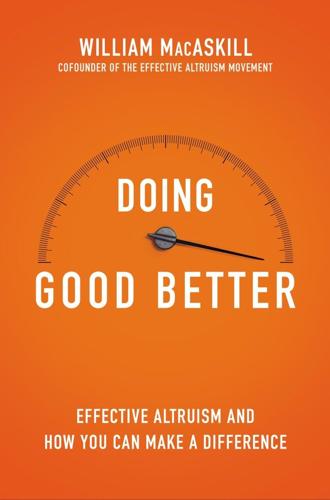
Doing Good Better: How Effective Altruism Can Help You Make a Difference
by
William MacAskill
Published 27 Jul 2015

Genius Makers: The Mavericks Who Brought A. I. To Google, Facebook, and the World
by
Cade Metz
Published 15 Mar 2021
AI is working for a certain very small segment of the world population. And the people creating it are from a very minuscule segment of the world population. Certain segments of the population are actively harmed by it. Not only because the algorithms work against them, but also because their jobs are automated. These people are actively excluded from entering a high paying field that is removing them from the workforce. I’ve heard many talk about diversity as if it is some sort of charity. I see companies and even individuals using it as a PR stunt while paying lip service to it. Because it is the language du jour, “we value diversity” is something you’re supposed to say.
…
“I’ve worked in the logistics industry for more than sixteen years and I’ve never seen anything like this,” said Peter Puchwein, vice president of Knapp, an Austrian company that had long provided automation technology for warehouses and helped develop and install the Covariant technology in Berlin. It showed that robotic automation would continue to spread across the retail and logistics industry in the years to come, and perhaps across manufacturing plants, too. It also raised new concerns over warehouse workers, losing their jobs to automated systems. In the German warehouse, the jobs of three humans were done by one robot. At the time, though, economists didn’t think this kind of technology would diminish the overall number of logistics jobs anytime soon. The online retail business was growing much too quickly, and most companies would take years or even decades to install the new breed of automation.
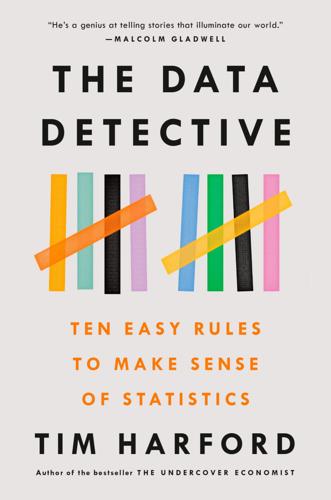
The Data Detective: Ten Easy Rules to Make Sense of Statistics
by
Tim Harford
Published 2 Feb 2021
Levine, “A Critical Appraisal of 98.6°F, the Upper Limit of the Normal Body Temperature, and Other Legacies of Carl Reinhold August Wunderlich,” JAMA 268, no. 12 (1992), 1578–80, DOI: 10.1001/jama.1992.03490120092034. 14. Jeffrey Dastin, “Amazon Scraps Secret AI Recruiting Tool That Showed Bias against Women,” Reuters, October 10, 2018, https://www.reuters.com/article/us-amazon-com-jobs-automation-insight/amazon-scraps-secret-ai-recruiting-tool-that-showed-bias-against-women-idUSKCN1MK08G. 15. Gerd Gigerenzer and Stephanie Kurzenhaeuser, “Fast and Frugal Heuristics in Medical Decision Making,” in Roger Bibace et al., Science and Medicine in Dialogue: Thinking through Particulars and Universals (Westport, CT: Praeger, 2005), 3–15. 16.

Unit X: How the Pentagon and Silicon Valley Are Transforming the Future of War
by
Raj M. Shah
and
Christopher Kirchhoff
Published 8 Jul 2024
“Technology & National Security: Maintaining America’s Edge”: Aspen Institute, January 31, 2019, https://www.amazon.com/Technology-National-Security-Maintaining-Americas/dp/0578427958. “And by 2025 you’re done”: Danzig ran across the analogy in a Mother Jones magazine article. Kevin Drum, “Welcome, Robot Overlords. Please Don’t Fire Us?,” Mother Jones, May/June 2023, https://www.motherjones.com/media/2013/05/robots-artificial-intelligence-jobs-automation/. stationed Chinese police forces in Chinese embassies: Megha Rajagopalan and William K. Rashbaum, “With F.B.I. Search, U.S. Escalates Global Fight Over Chinese Police Outposts: Beijing says the outposts aren’t doing police work, but Chinese state media reports say they ‘collect intelligence’ and solve crimes far outside their jurisdiction,” New York Times, January 12, 2023, https://www.nytimes.com/2023/01/12/world/europe/china-outpost-new-york.html.

Four Battlegrounds
by
Paul Scharre
Published 18 Jan 2023
AI can have a significant, direct impact on economic productivity by off-loading routine physical and cognitive tasks to machines, freeing up humans for more complex tasks. A detailed analysis by the McKinsey Global Institute in 2017 found that roughly half of all job-related tasks in the U.S. economy could be automated using existing technology. Only a small number (less than 5 percent) of jobs could be entirely replaced by automation, but six in ten jobs could be significantly transformed, with automation replacing 30 percent or more of tasks that workers perform in those jobs. Nations that successfully seize these opportunities, and manage the disruption they may bring, could have tremendous long-term advantages. Despite Schmidt’s call for a Sputnik moment, the United States has struggled to develop a coherent national strategy for AI.
…
Jack concluded, “It doesn’t seem like we’ve crossed an effective economics curve yet” for using AI to generate fake news. If the limiting factor is cost, then eventually the economics of machine-generated text will make sense. As quality of AI text generators improve and costs go down machines will replace humans for fake news creation and online trolling, as they have in other jobs. For the moment, automated spam remains poor quality. As I write these words my phone interrupts me with automated robocalls, the most recent one alerting me to the necessity of renewing my car warranty. My best defense against this scam is my ability to recognize that the message is recorded. I worry about the day when we cross into blade runner territory, when AI-generated content is good enough that we can’t tell the difference between a bot and a human.
…
Bureau of Labor Statistics, updated January 22, 2021, https://www.bls.gov/cps/cpsaat11.htm. 234existing social biases: Bender et al., “On the Dangers of Stochastic Parrots.” 234option to choose the gender: Kuczmarski, “Reducing Gender Bias in Google Translate.” 234résumé-sorting model: Jeffrey Dastin, “Amazon Scraps Secret AI Recruiting Tool That Showed Bias Against Women,” Reuters, October 10, 2018, https://www.reuters.com/article/us-amazon-com-jobs-automation-insight/amazon-scraps-secret-ai-recruiting-tool-that-showed-bias-against-women-idUSKCN1MK08G. 234Learning systems will sometimes find shortcuts: Ortega, Maini, and the DeepMind safety team, “Building Safe Artificial Intelligence.” 234learned to alternate from the previous input: Joel Lehman et al., “The Surprising Creativity of Digital Evolution: A Collection of Anecdotes from the Evolutionary Computation and Artificial Life Research Communities,” Artificial Life 26, no. 2 (2020), 281–282, https://doi.org/10.1162/artl_a_00319. 234Simulated digital creatures: Lehman et al., “The Surprising Creativity of Digital Evolution,” 279–281. 235deception and concealment tactics: Lehman et al., “The Surprising Creativity of Digital Evolution,” 288–289. 235optimal scoring strategy was not to race at all: Jack Clark and Dario Amodei, “Faulty Reward Functions in the Wild,” OpenAI Blog, December 21, 2016, https://openai.com/blog/faulty-reward-functions/. 235Q*bert: Lehman et al., “The Surprising Creativity of Digital Evolution,” 285. 235win by crashing opposing algorithms: Lehman et al., “The Surprising Creativity of Digital Evolution,” 284. 235exploiting bugs in the simulation: Lehman et al., “The Surprising Creativity of Digital Evolution,” 283–285. 235evolved circuit on an FPGA chip: Adrian Thompson, “An Evolved Circuit, Intrinsic in Silicon, Entwined with Physics,” in: Tetsuya Higuchi, Masaya Iwata, and Liu Weixin, eds., Evolvable Systems: From Biology to Hardware (Berlin: Springer, 1996), https://doi.org/10.1007/3-540-63173-9_61. 235“game” or “hack” their reward functions: Victoria Krakovna et al., “Specification Gaming: the Flip Side of AI Ingenuity,” Deepmind Blog, April 21, 2020, https://deepmind.com/blog/article/Specification-gaming-the-flip-side-of-AI-ingenuity; Clark and Amodei, “Faulty Reward Functions in the Wild”; Amodei et al., Concrete Problems in AI Safety. 235deleted the files containing the “correct” answers: Lehman et al., “The Surprising Creativity of Digital Evolution,” 281. 235take credit for other rules: Douglas B.

Arriving Today: From Factory to Front Door -- Why Everything Has Changed About How and What We Buy
by
Christopher Mims
Published 13 Sep 2021

Squeezed: Why Our Families Can't Afford America
by
Alissa Quart
Published 25 Jun 2018
The World Economic Forum (WEF) in 2016 projected a total loss of 7.1 million jobs by 2020, two-thirds of which may be concentrated in office and administrative jobs in health care, advertising, public relations, broadcasting, law, and financial services. (Women’s jobs account for more than five jobs lost due to our automated friends for every job gained.) The National Science Foundation is spending nearly $1 million to research a future of robotic nurses who will lift patients and bring them medicine while keeping living nurses “in the decision loop.” And as a 2013 McKinsey Global Institute report on disruptive technologies explained, highly skilled workers could be put on the chopping block with the expanding “automation of knowledge work.”
…
That number includes day care for children, but also adult children taking care of their parents and older couples taking care of each other. Santens fantasizes that UBI could become paid maternity leave for moms of newborns as well as replace many benefits. Proponents like Santens think that UBI could help make sense of the automation of so many middle-class and working-class jobs. It would protect workers who lose their jobs to automation and thus alleviate the impulse to blame themselves or, even worse, point fingers at immigrants and people living below the poverty line. As for how we would pay for UBI, advocates insist that it is not as expensive as it might appear. We could raise money with a flat tax. And UBI could partly or fully replace existing safety net programs, such as Medicaid and Social Security.
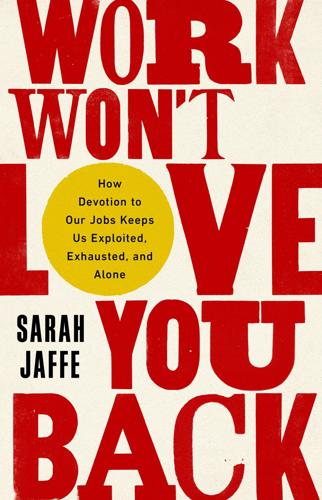
Work Won't Love You Back: How Devotion to Our Jobs Keeps Us Exploited, Exhausted, and Alone
by
Sarah Jaffe
Published 26 Jan 2021
New technology makes such surveillance easier—the scanning devices handed to workers to track merchandise also tracks the workers, who have to plug in their information to start the device. Japanese workers have been subjected to a “smile scanner” that gauges how well they project happiness on the job—an automated test of emotional labor. The video cameras that are now common in stores not only pick up shoplifters, but can also tell whether employees are smiling. 3 3 The schedule, though, is the biggest complaint among retail workers, and technology plays a role there as well. Retailers attempt to match staffing levels to sales flow, but that is always a guessing game.

The Road to Conscious Machines
by
Michael Wooldridge
Published 2 Nov 2018
The debate in this area was galvanized by a 2013 report entitled ‘The Future of Employment’, written by two colleagues of mine at the University of Oxford, Carl Frey and Michael Osborne.1 The rather startling headline prediction of the report was that up to 47 per cent of jobs in the United States were susceptible to automation by AI and related technologies in the relatively near future. Frey and Osborne classified 702 occupations according to what they saw as the probability that the job could be automated. The report suggested that those occupations at the highest risk included telemarketers, hand sewers, insurance underwriters, data entry clerks (and indeed many other types of clerk), telephone operators, salespeople, engravers and cashiers. Those at least risk included therapists, dentists, counsellors, physicians and surgeons, and teachers.
…
They concluded that: Our model predicts that most workers in transportation and logistics occupations, together with the bulk of office and administrative support workers, and labour in production occupations, are at risk. Frey and Osborne also identified three characteristics of jobs that they felt would resist automation. Firstly, perhaps unsurprisingly, they suggested that jobs involving a substantial degree of mental creativity would be safe. Creative professions include the arts, media and science. Secondly, jobs which require strong social skills would be secure too. Jobs that require us to understand and manage the subtleties and complexities of human interaction and human relationships would therefore resist automation.

More: The 10,000-Year Rise of the World Economy
by
Philip Coggan
Published 6 Feb 2020
That is why imposing tariffs on imports will push up the price of domestically produced cars one way or the other – either the manufacturers will pay the tariffs and pass on the cost to customers, or they will disrupt their supply chains and make cars more expensively at home. This interconnectedness means that it is not only in the West that manufacturing jobs are under pressure from automation. A paper by the National Bureau of Economic Research estimated that each additional robot replaced around 6.2 workers.51 Sales of industrial robots have risen from 100,000 a year in the mid-2000s to 250,000 in 2015 and are forecast to hit 400,000 by the end of the decade.52 The standard joke is that the manufacturing plant of the future will be staffed by a man and a dog; the man’s job will be to feed the dog, and the dog’s role will be to keep the man away from the machines.
…
Those workers who only completed high school earned just three-fifths of the hourly wages of those who graduated from college and less than half the rate earned by postgraduates.10 Some of this education is supplied privately. But governments have seen it as in the country’s interests to expand education, especially as low-skilled jobs are being automated or shifted to low-wage centres in Asia. Health As late as 1820, life expectancy at birth was only around 29 worldwide, and 36 in Europe. By 1913, it had edged up to 34 worldwide but was in the mid-40s in Europe and America. By 1970, the global average was 60, and Europeans could expect to live into their seventies.11 By 2015, the global average was 71.4 years, more than double that of a century earlier.12 This is an immense, and oft-overlooked, achievement.
…
Maximiliano Dvorkin, “Jobs involving routine tasks aren’t growing”, https://www.stlouisfed.org/on-the-economy/2016/january/jobs-involving-routine-tasks-arent-growing 38. James Pethokoukis, “What the story of ATMs and bank tellers reveals about the ‘rise of the robots’ and jobs”, American Enterprise Institute, June 6th 2016, http://www.aei.org/publication/what-atms-bank-tellers-rise-robots-and-jobs/ 39. “Automation and anxiety”, The Economist, June 23rd 2016 40. Ian Stewart, Debapratim De and Alex Cole, “Technology and people: The great job-creating machine”, Deloitte, 2015, https://www2.deloitte.com/content/dam/Deloitte/uk/Documents/finance/deloitte-uk-technology-and-people.pdf 41. “The insecurity of freelance work”, The Economist, June 14th 2018 Chapter 18 – The crisis and after: 2007 to today 1.

Radical Technologies: The Design of Everyday Life
by
Adam Greenfield
Published 29 May 2017
The great twentieth-century economist John Maynard Keynes had foreseen much of this early on, coining the expression “technological unemployment” sometime around 1928.1 He saw, with almost clairvoyant perspicacity, that societies might eventually automate away the jobs much of their labor force depended on, and his insight is borne out in recent United States government estimates that an American worker making less than $20 an hour now has an 83 percent chance of losing their job to automation.2 But what Keynes concluded—that the eclipse of human labor by technical systems would necessarily compel a turn toward a full-leisure society—has not come to pass, not even remotely. And what neither Keynes nor any other economist reckoned with, until very recently, was the thought that the process of automation would hardly stop when it had replaced manual and clerical labor.
…
Meanwhile, against the oft-cited hope that technology would generate more jobs than it eliminated, Frey found that fewer than 0.5 percent of the US workforce have found employment in the high-technology industries that have emerged since the turn of the century. A World Economic Forum estimate that some five million jobs would be lost to automation by 2020 has to be regarded as a stark outlier, if not a gross error, especially since Bank of England Chief Economist Andy Haldane reckons that 15 million jobs would disappear over the same timeframe in the United Kingdom alone.25 I’m not qualified to discuss, in any but the broadest terms, what will happen to the shape and structure of national economies in the aftermath of pervasive automation.
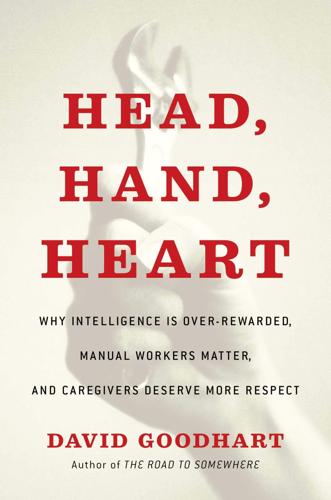
Head, Hand, Heart: Why Intelligence Is Over-Rewarded, Manual Workers Matter, and Caregivers Deserve More Respect
by
David Goodhart
Published 7 Sep 2020
Care, especially in the private realm, is about duty to others, and its results are sometimes nebulous and hard to measure. (See Chapter Eight.) There is some potential for the use of smart technologies in elderly care, with more remote monitoring and so on (and this could draw more men into the sector). But most caring jobs cannot easily be automated or performed by machines. Even in aging Japan, with its antipathy to mass immigration, Filipino caregivers are preferred to robots and are gradually being welcomed in larger numbers. The rise of cognitive-analytical ability—Head work—as a measure of economic and social success, combined with the hegemony of cognitive-class political interests, has led to the current great unbalancing of Western politics.
…
Yet forecasts about the jobs of the future provide more support for the idea of the decline and fall of the knowledge worker, especially at the middling and lower level. The demand for Head jobs will still be there, but it will focus on the most able and creative, and the sharpest rise in demand will be for Heart and certain kind of technological jobs that combine Hand and Head. A cottage industry has emerged over recent years estimating gross job loss from automation as anything between 10 and 50 percent. Most analysts agree that many jobs will go but few whole occupations. Some of the potentially powerful effects of automation on jobs and wages are already apparent. According to McKinsey, 18 percent of all hours worked in the United States are devoted to “predictable physical activities” and half of these hours could be automated away even with current technology.
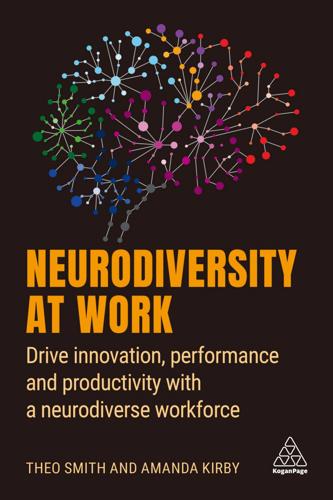
Neurodiversity at Work: Drive Innovation, Performance and Productivity With a Neurodiverse Workforce
by
Amanda Kirby
and
Theo Smith
Published 2 Aug 2021
Astute and witty essays on the role of women in society, William B Eerdmans Publishing Co, Michigan 2 Wood, D R, Reimherr, F W, Wender P H and Johnson, G E (1976) Diagnosis and treatment of minimal brain dysfunction in adults: a preliminary report, Archives of Psychiatry, https://jamanetwork.com/journals/jamapsychiatry/article-abstract/491638 (archived at https://perma.cc/E8QA-NN3W) 3 Gillberg, C (2003) Deficits in attention, motor control, and perception: A brief review, Archives of Disease in Childhood, https://adc.bmj.com/content/88/10/904 (archived at https://perma.cc/GX8P-LHMG) 4 Gillberg, C (2010) The ESSENCE in child psychiatry: Early Symptomatic Syndromes Eliciting Neurodevelopmental Clinical Examinations, Research in Developmental Disabilities, https://pubmed.ncbi.nlm.nih.gov/20634041/ (archived at https://perma.cc/RH3L-VVZ4) 5 Young, S et al (2020) Guidance for identification and treatment of individuals with attention deficit/hyperactivity disorder and autism spectrum disorder based upon expert consensus, BMC Medicine, https://bmcmedicine.biomedcentral.com/articles/10.1186/s12916-020-01585-y (archived at https://perma.cc/BK5D-VCZK) 6 Thapar, A, Cooper, M and Rutter, M (2017) Neurodevelopmental disorders, Lancet Psychiatry, https://pubmed.ncbi.nlm.nih.gov/27979720/ (archived at https://perma.cc/T7GW-82KH) 7 McGrath, J (2019) Not all autistic people are good at maths and science – despite the stereotypes, The Conversation, 3 April, https://theconversation.com/not-all-autistic-people-are-good-at-maths-and-science-despite-the-stereotypes-114128 (archived at https://perma.cc/5BVH-3XWH) 8 Hong, E and Milgram, R M (2010) Creative thinking ability: Domain generality and specificity, Creativity Research Journal, http://dx.doi.org/10.1080/10400419.2010.503535 (archived at https://perma.cc/5BQZ-Q2XT) 9 Cancer, A, Manzoli, S and Antonietti, A (2016) The alleged link between creativity and dyslexia: Identifying the specific process in which dyslexic students excel, Cogent Psychology, https://www.tandfonline.com/doi/full/10.1080/23311908.2016.1190309 (archived at https://perma.cc/2NL9-TYTH) 10 Smith, T (2020) Why Mad Abilities Matter, #Chat Talent, 12 October, https://www.chattalent.com/blogs/why-mad-abilities-matter/ (archived at https://perma.cc/8NZG-BAQN) 11 Young, S and Cocallis, K M (2019) Attention deficit hyperactivity disorder (ADHD) in the prison system, Current Psychiatry Reports, https://pubmed.ncbi.nlm.nih.gov/31037396/ (archived at https://perma.cc/S5DK-SVQF) 12 Hewitt-Main, J (2012) Dyslexia behind bars: final report of a pioneering teaching and mentoring project at Chelmsford prison – 4 years on, http://www.lexion.co.uk/download/references/dyslexiabehindbars.pdf (archived at https://perma.cc/QXZ5-7NHF) 13 Grayling, C (2013) ‘Speech on Crime’ – Speech made by the Lord Chancellor and Secretary of State for Justice, Chris Grayling, on 13 June 2013 at Civitas, http://www.ukpol.co.uk/chris-grayling-2013-speech-on-crime/ (archived at https://perma.cc/VA89-9YEZ) 14 Baidawi, S and Piquero, A R (2020) Neurodisability among children at the nexus of the child welfare and youth justice system, Journal of Youth Adolescence, https://doi.org/10.1007/s10964-020-01234-w (archived at https://perma.cc/XJ85-5N9W) 15 Bandura, A (1977) Self-efficacy: toward a unifying theory of behavioral change, Psychological Review, https://educational-innovation.sydney.edu.au/news/pdfs/Bandura%201977.pdf (archived at https://perma.cc/XB4G-P95C) 16 Smith, T (2020) Neurodiversity – Eliminating the Kryptonite and Enabling Superheroes, Ep 18: Bill Boorman – The Master of Ceremonies and hero of Superheroes [Podast] 7 May, https://anchor.fm/neurodiversity/episodes/Ep-18-Bill-Boorman---The-Master-of-Ceremonies-and-hero-of-Superheros-edo7jl (archived at https://perma.cc/4XP3-52JN) 17 Dastin, J (2018) Amazon scraps secret AI recruiting tool that showed bias against women, Reuters, 11 October, https://www.reuters.com/article/us-amazon-com-jobs-automation-insight-idUSKCN1MK08G (archived at https://perma.cc/56R8-4VKQ) 18 National Autistic Society (2021) New shocking data highlights the autism employment gap, 19 February, https://www.autism.org.uk/what-we-do/news/new-data-on-the-autism-employment-gap (archived at https://perma.cc/YE52-ALCJ) 19 Wolchin, R (2014) Be mindful when it comes to your words.

That Used to Be Us
by
Thomas L. Friedman
and
Michael Mandelbaum
Published 1 Sep 2011
Throughout the post–World War II period, until 1991, “it typically took on average eight months for jobs that were lost at the trough of a recession to come back to the old peak,” said Rajan. But with the introduction of all these new technologies and networks over the last two decades, that is no longer the case. With each recession and with each new hyper-flattening and hyper-connecting of the global marketplace, more and more jobs are being automated, digitized, or outsourced. “Look at the last three recessions,” said Rajan. “After 1991, it took twenty-three months for the jobs to come back to prerecession levels. After 2001, it took thirty-eight months. And after 2007, it is expected to take up to five years or more.” A key reason is that in the old cyclical recovery people got laid off and were rather quickly hired back into the workforce once demand rose again.
…
This is just one small reason that whatever your “extra” is—inventing a new product, reinventing an old product, or reinventing yourself to do a routine task in a new and better way—you need to fine-tune it, hone and promote it, to become a creative creator or creative server and keep your job from being outsourced, automated, digitized, or treated as an interchangeable commodity. Everyone’s “extra” can and will be different. For some it literally will be starting a company to make people’s lives more comfortable, educated, entertained, productive, healthy, or secure. And the good news is that in the hyper-connected world, that has never been easier.
…
Blogging on his website, JohnJazwiec.com, he confessed: I am in the business of killing jobs. I kill jobs in three ways. I kill jobs when I sell, I kill jobs by killing competitors, and I kill jobs by focusing on internal productivity. All of the companies I have been a CEO of, through best-in-practice services and software, eliminate jobs. They eliminate jobs by automation, outsourcing, and efficiencies of process. The marketing is clear—less workers, more consistent output. I reckon in the last decade I have eliminated over 100,000 jobs in the worldwide economy from the software and services my companies sell. I know the number, because … my revenues … are based on the number of jobs I kill.

Don't Be Evil: How Big Tech Betrayed Its Founding Principles--And All of US
by
Rana Foroohar
Published 5 Nov 2019
(The biggest gains now come in sales and supply-chain management.)40 Most of the CEOs I’ve spoken to are extremely bullish on the subject, claiming their AI investments yield between 10 and 30 percent returns. But the more data the AI has to work with, the better it goes. That’s good for corporations, but will cause a tremendous amount of disruption for citizens whose privacy is being compromised and workers whose jobs are being automated. * * * — HOW IS IT that Big Tech has, in a matter of just twenty years, so reshaped our economy? Key to understanding that is this: Many platform technology firms operate as natural monopolies—that is, companies that can dominate a market by sheer force of their networks.
…
And that’s not taking into account the jobs these companies disrupt—by March 2019, for example, U.S. retailers had announced more than forty-one thousand job cuts, more than double the number from the previous year, in large part due to the Amazon effect.59 The bottom line is that most technology businesses simply don’t require many employees (think of all the robots roaming around Amazon warehouses), and this will only become truer with time. It’s been estimated that globally, 60 percent of all occupations will, in the next few years, be substantially redefined because of new disruptive technologies.60 It’s not only low-level or menial jobs that will be automated—it’s all jobs. In fact, there’s a case to be made that “knowledge work”—radiology, law, sales, and finance—will actually be automated faster than more physical jobs in areas like healthcare and manufacturing. Moreover, even in fields where humans can’t be replaced entirely, the gig economy and the “sharing” economy—driven, of course, by tech firms—have dramatically increased the number of contingency workers without benefits.61 Beyond these relatively easy-to-track numbers is perhaps a deeper and more worrisome issue, which is the way in which data-driven capitalism has turned people into the factory inputs of the digital age.
…
At a conference in that same year, I heard chief executives from large U.S. multinationals discussing ways in which technology would be able to replace 30 to 40 percent of the jobs in their companies over the next few years—and fretting about the political impact of layoffs on that scale. I would like to propose a radical solution: Do not lay them off. I am not asking corporate America to keep workers on as charity. I am suggesting that the public and private sector come together in what could be a kind of digital New Deal. As many jobs as will be replaced by automation, there are other areas—customer service, data analysis, and so on—that desperately need talent. Companies that pledge to retain workers and retrain them for new jobs should be offered tax incentives to do so. The United States should take a page out of the post–financial crisis German playbook, in which large-scale layoffs were avoided as both the public and private sector found ways to continue to use labor even as demand dipped.
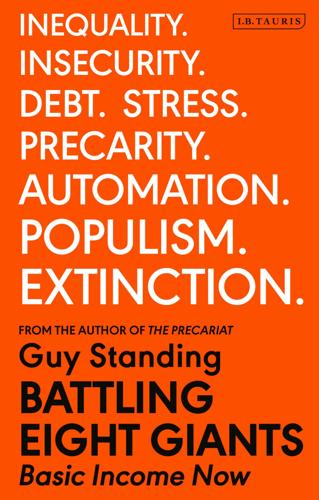
Battling Eight Giants: Basic Income Now
by
Guy Standing
Published 19 Mar 2020
Having a basic income system would also encourage people to welcome technological advances, avoiding the perfectly respectable Luddite reaction of the early nineteenth century when workers objected to mechanization because they were forced to lose and not share the gains. The assumed threat to jobs from automation has also led to calls to cut the working week to share jobs around and improve work-life balance. One proponent has even suggested that the target should be a 21-hour week. This policy might be desirable in a utopia, but it would be deeply impractical. It would be particularly inappropriate for a labour market based on flexible labour relations.
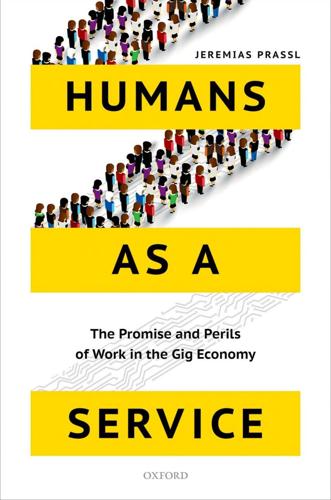
Humans as a Service: The Promise and Perils of Work in the Gig Economy
by
Jeremias Prassl
Published 7 May 2018
Justin McCurry, ‘South Korean woman’s hair eaten by robot vacuum cleaner as she slept’, The Guardian (9 February 2015), https://www.theguardian.com/ world/2015/feb/09/south-korean-womans-hair-eaten-by-robot-vacuum- cleaner-as-she-slept, archived at https://perma.cc/86YB-RF49; Aarian Marshall, ‘Puny humans still see the world better than self-driving cars, Wired (5 August 2017), https://www.wired.com/story/self-driving-cars-perception- humans/, archived at https://perma.cc/B8L9-7K32; Marty Padget, ‘Ready to pay billions for self-driving car roads?’, Venture Beat (17 May 2017), https:// venturebeat.com/2017/05/17/ready-to-pay-trillions-for-self-driving-car-roads/, archived at https://perma.cc/ZJ9K-LSXF. There is, furthermore, an important distinction between jobs that could be automated and those that actually are: see David Kucera, New Automation Technologies and Job Creation and Destruction Dynamics (International Labour Organization 2016). 14. Although I struggle to see how a robot could do the job of the TaskRabbit organizer we encountered in Chapter 1: coming up with a bespoke beach party, and keeping parents and children happy, strikes me as pretty much impossible to automate. 15.
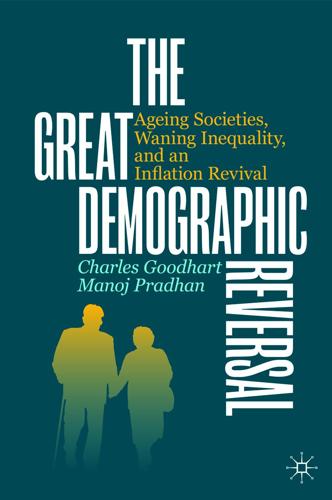
The Great Demographic Reversal: Ageing Societies, Waning Inequality, and an Inflation Revival
by
Charles Goodhart
and
Manoj Pradhan
Published 8 Aug 2020
Automation seeks to do so by replacing the role of labour in the production function, while greater participation by elderly residents or enhancing migration are attempts to improve the flow of labour directly. Automation is a global complement for labour, not a substitute. Automation is a substitute for labour only in a very narrow sense. From a global, demographic perspective, automation is a vital complement. In other words, we will need all the automation we can get. For every job that automation may or may not make redundant, there is a job that is almost guaranteed to arise in age-related care. Without automation, demography would have a far more adverse economic effect than we have described. Dementia, Alzheimer’s and Parkinson’s are diseases that cause a deterioration in the quality of life—Chapter 4 will have made that clear.
…
Since the disruptive dimension of automation is (a little too) well known, the arguments below try to produce a more balanced view by pointing out shortcomings and extensions of the now-conventional view of automation. Rather than make any predictions about the final outcome, we try to present a balanced view about what it would take for the world to run out of jobs rather than workers. Automation is widely considered to be the vehicle of the ‘fourth industrial revolution’—a term that has been used over past decades on many occasions to herald a technology-driven transformation. The pace and extent of progress in automation make it difficult if not impossible to foresee its future progress.

Aftershock: The Next Economy and America's Future
by
Robert B. Reich
Published 21 Sep 2010
I congratulated the governor and got out of there as fast as I could. Remember bank tellers? Telephone operators? The fleets of airline workers behind counters who issued tickets? Service-station attendants? These and millions of other jobs weren’t lost to globalization; they were lost to automation. America has lost at least as many jobs to automated technology as it has to trade. Any routine job that requires the same steps to be performed over and over can potentially be done anywhere in the world by someone working for far less than an American wage, or it can be done by automated technology. By the late 1970s, all such jobs were on the endangered species list.

Puppet 3 Beginner's Guide
by
John Arundel
Published 16 Apr 2013

The End of Indexing: Six Structural Mega-Trends That Threaten Passive Investing
by
Niels Jensen
Published 25 Mar 2018
However, despite being disrupted, the music royalties industry has doubled its growth rate from about 3% annually to 6%2. As far as automation is concerned, I need to better understand whether an increased use of advanced robotics is likely to lead to higher unemployment. Historically, technological advances have always been good for job creation, but automation is admittedly more significant than anything we have ever seen before in the world of technology. If unemployment escalates because of rising automation, how much will the decrease in consumer spending hold back the rise in productivity? That said, given the demographic outlook, could exactly the opposite happen?
…
Could a shrinking workforce hold the upper hand during wage negotiations, as robots cannot replace retiring baby boomers quickly enough? If the workforce hold the upper hand, how much could inflation rise? Also, could robots be the saving grace for the ageing societies across Europe? Could robots man the manufacturing floors in Bremen and Stuttgart, if the Germans no longer want migrants to do the job? Could a rise in automation drive wealth-to-GDP even higher? If wealth-to-GDP equals capital-to-output, and a growing use of robots requires huge amounts of capital, could it be that that the long-term stable nature of wealth-to-GDP is a thing of the past? Disruption is something we have all been familiar with for many years.
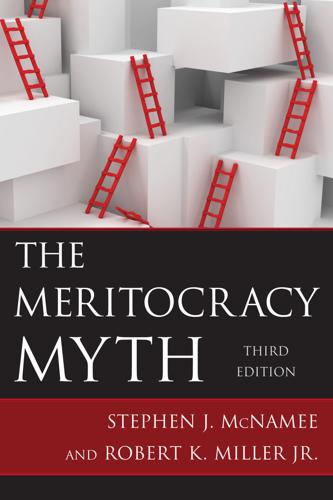
The Meritocracy Myth
by
Stephen J. McNamee
Published 17 Jul 2013
While it is true that the computer age ushered in a new genre of occupational specialties, it is also true that the bulk of the expansion of new jobs, as we have seen, has actually been very low tech. The assumption of the need for a more highly educated labor force outpaced the reality. While computerization created some new jobs with high skill requirements, other jobs have been automated or “deskilled” by computerization. Sales clerks, for instance, no longer need to calculate change. In fast-food chains, keyboards on cash registers sometimes display pictures rather than numbers. By the beginning of the twenty-first century, even computer-programming jobs, the supposed leading edge of the postindustrial boom, experienced sharp job losses.
…
Between 2000 and 2004, 180,000 computer-programming jobs, or about one-quarter of the occupation’s total employment, were lost (Hacker 2008, 77). These jobs fell victim to two trends adversely affecting many other sectors of the labor force: automation and outsourcing. Many routine programming jobs were automated as advanced “canned” software programs were developed, eliminating the need to write programs in more complex and labor-intensive BASIC code. In addition, the ease of high-speed Internet connections and digital communication facilitated the outsourcing of many programming and technical-support jobs, especially to India.

On the Future: Prospects for Humanity
by
Martin J. Rees
Published 14 Oct 2018
They can replace many white-collar jobs: routine legal work (such as conveyancing), accountancy, computer coding, medical diagnostics, and even surgery. Many ‘professionals’ will find their hard-earned skills in less demand. In contrast, some skilled service-sector jobs—plumbing and gardening, for instance—require nonroutine interactions with the external world and so will be among the hardest jobs to automate. To take a much-cited example, how vulnerable are the jobs of three million truck drivers in the United States? Self-driving vehicles may be quickly accepted in limited areas where they will have the roads to themselves—in designated parts of city centres, or maybe in special lanes on motorways.

The Capitalist Manifesto
by
Johan Norberg
Published 14 Jun 2023
Since 2010, Chinese companies have increased the number of industrial robots from 50,000 to 800,000.4 That’s why they can be more productive and competitive. This does not mean that we will run out of jobs – just like the spinning machine, mechanical looms, the steam engine, the car, the computer, the ATM and other innovations didn’t kill all jobs. Instead, automation creates complementary industries and frees up purchasing power to hire more people. Current research shows that an increase in automation in a factory by 1 per cent actually increases the workforce there by 0.25 per cent after two years and 0.4 per cent after ten years.5 But it’s not the same job.
…
This means that for every job that disappeared due to Chinese imports, 150 workers lost their jobs due to a completely different cause.35 But for some reason we think more about that individual job than about the other 150, perhaps because that one job fits into the picture of predatory global capitalism? But that bigger number – 150 – reveals that we will always lose jobs. Technology changes, some tasks are automated while others require different skills. People move and the purchasing power moves with it. Consumers constantly change their demand. Suddenly, we would rather order our trip online ourselves than by stepping into a travel agency, and our film consumption no longer requires the production of video tapes.

Uncharted: How to Map the Future
by
Margaret Heffernan
Published 20 Feb 2020
The only true source of advantage is new knowledge, but that is, by definition, unpredictable – because if it were predictable, it wouldn’t be new. But the power of prophecy to make reputations has not abated. When two researchers at the Oxford Martin School announced, in 2013, that 47 per cent of US jobs would disappear to automation by 2035, they hit the bullseye. The research offered ample drama – a big number of disappearing jobs – while the sheer precision of it – exactly 47 per cent – sounded like certainty. When I read it, I was instantly puzzled. Twenty-three years hence, exactly 47 per cent of jobs could be known to have disappeared?

Wealth and Poverty: A New Edition for the Twenty-First Century
by
George Gilder
Published 30 Apr 1981
Because federal control and oversight requirements have been imposing large new burdens of medical paperwork, the automation of this aspect of health care tends to free nurses and doctors to concentrate on their real duties with patients. The average intern today, for example, spends perhaps 90 percent of his time on paperwork. It is the growth of human bureaucracy, with its necessary rules and reporting requirements, that creates alienating and impersonal jobs. Automation tends to enhance the administrators’ span of control and reduce the need for middle managers and clerks doing machine-like tasks. All such improvements do not depend on full automation. An example of the kind of small advances in management that can yield large gains in efficiency is the hot line for diabetics, which was pushed by Dr.

Age of Context: Mobile, Sensors, Data and the Future of Privacy
by
Robert Scoble
and
Shel Israel
Published 4 Sep 2013
Robotic Household Assistants Another category of personal assistants for the home steps out of the pages of science fiction and perhaps meanders over the freaky line. Robots have long existed as characters in books and movies. More recently they have started taking over the most tedious jobs in automated factories and some of the most dangerous first-response work, such as disarming explosive devices. Now robots are finding roles in the home. In some cases they are serving as novelty possessions for the affluent in Asia. In India, robot maids are used by some of the country’s uppercrust.
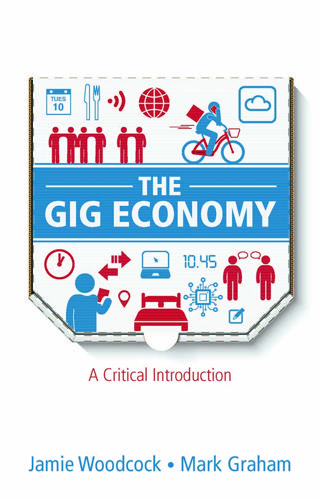
The Gig Economy: A Critical Introduction
by
Jamie Woodcock
and
Mark Graham
Published 17 Jan 2020
Here, layers of tacit rather than codified knowledge structure and govern the work process. Think of babysitters or security guards as jobs in which people tend to use personal recommendations, etc., that are hard to codify into platform ratings or databases. On the other hand, too much legibility and there is the risk that jobs become automated away. The Amazon dream of autonomous drones that can deliver parcels or the Uber dream of autonomous vehicles that can transport passengers are only possible in a world in which multiple overlapping spaces, activities and processes are highly digitally legible. Having a standardized addressing system, high-quality geospatial data, and the technology to produce and read those data has allowed large platforms to more effectively operate in some countries rather than others.
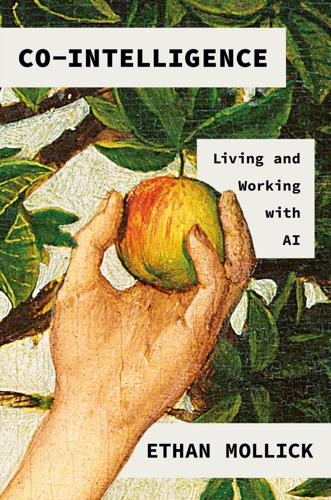
Co-Intelligence: Living and Working With AI
by
Ethan Mollick
Published 2 Apr 2024
As might be expected, the job market overall adjusted quickly, as young women found other roles, like secretarial positions, that offered similar or better pay. But the women with the most experience as operators took a larger hit to their long-term earnings, as their tenure in a now extinct job did not translate to other fields. So, while jobs usually adjust to automation, they do not always, at least not for everyone. Of course, there are also reasons why AI might be different from other technological waves. It is the first wave of automation that broadly affects the highest-paid professional workers. Plus, AI adoption is happening much more quickly, and much more broadly, than previous waves of technology.
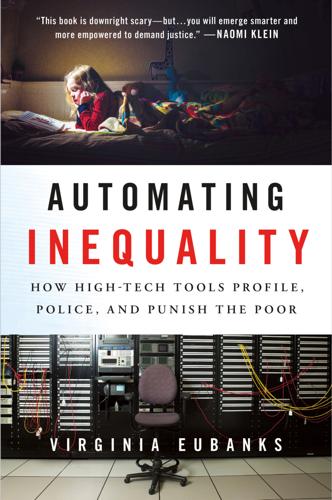
Automating Inequality
by
Virginia Eubanks
Our responsibility as public employees is to make certain that people who are eligible get the benefits they’re entitled to.” With decades of experience and seniority, Gresham managed to hold on to her state job when the automation rolled out to Allen County. But under the new system, she no longer carried a caseload. Rather, she responded to tasks that were assigned by the new Workflow Management System (WFMS). Tasks bounced between 1,500 new ACS employees and 682 remaining state employees, now known as “state eligibility consultants.” The governor promised that no state workers would lose their jobs due to the automation and that salaries would stay the same or rise. But the reality of the new ACS positions created a wave of retirements and resignations.

Utopia Is Creepy: And Other Provocations
by
Nicholas Carr
Published 5 Sep 2016
Even Adam Smith understood that machinery, in enhancing labor productivity, would often end up narrowing jobs, turning skilled work into routine work. At worst, he wrote, the factory worker would become “as stupid and ignorant as it is possible for a human creature to become.” That’s not the whole picture, of course. In evaluating the long-term effects of automation, we have to look beyond particular job categories. Even as automation reduces the skill requirements of an established occupation, it may contribute to the creation of large new categories of interesting and well-paid work. That’s what happened, as the endless-ladder mythologists like to remind us, during the latter stages of the industrial revolution.
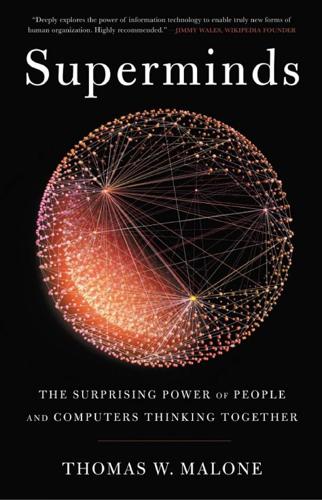
Superminds: The Surprising Power of People and Computers Thinking Together
by
Thomas W. Malone
Published 14 May 2018
Semiautomated Matching of Tasks to People New technologies can also play an active role in matching workers with people who have work to be done. Job-search sites like Monster.com and CareerBuilder.com provide simple examples of this. These sites bring together lots of jobs and lots of job seekers and provide automated search tools to help people on both sides of the matching process find each other. But it’s possible to go much further than today’s job-search sites do. For instance, imagine a site that operates more like Match.com than Monster.com.6 In addition to asking for objective information like your work history, it would also ask about your passions, what you do for fun, and the kinds of people you like to work with.
…
Perhaps the most extreme way governments can deal with this problem is with direct redistribution of income. Many countries do this already with progressive income taxes and various forms of social benefits (such as welfare payments and subsidized medical care). There could certainly be special programs established to support people who can’t recover financially after losing their jobs to automation. Whatever methods are used, it’s clear that hierarchical governments can intervene in various ways to solve the job-transition problems that markets don’t solve on their own. If it becomes common for income to be decoupled from employment, then we might, as a society, put more emphasis on other kinds of contributions to our communities.

Capitalism, Alone: The Future of the System That Rules the World
by
Branko Milanovic
Published 23 Sep 2019
This does not mean that no one loses as a result of automation. The new machines (called “robots”) will replace some workers, and some people’s wages will be reduced. But however tragic these losses may be for the individuals involved, they do not affect society as a whole. Estimates of the proportion of jobs under threat from automation vary widely, both among countries and within countries, depending on the methodology used. For the United States, estimates of the proportion of jobs at risk vary between 7 and 47 percent; for Japan, between 6 and 55 percent.26 The high values are obtained when occupations are deemed by more than 70 percent of “experts” as likely to be affected by automation; but when the same exercise is conducted looking at the more granular distinction between tasks within occupations, the percentages are much smaller, ranging between 6 and 12 percent for OECD countries (Hallward-Driemeier and Nayyar 2018).
…
See also Income inequality; Systemic inequalities in liberal meritocratic capitalism; Wage inequality Inequality extraction ratio, 246n16 Inequality in income from capital and labor, 26–27 Inequality in liberal meritocratic capitalism: capital and labor incomes and, 18; globalization and, 22; inequality in labor income and, 27; intergenerational transmission of, 19–20; marriage patterns and, 18–19, 22; share of capital in total income and rising, 15–16, 21–22; systemic and nonsystemic causes of, 21–23 Inequality of opportunity: global, 158–159; intergenerational, 49, 50; reducing, 48 Information and communication technology (ICT): change in global income inequality and, 8–9; global value chains and, 148; second globalization and, 150, 151–152 Inheritance tax, to deconcentrate capital ownership, 48–50 Inherited wealth, 62–63 Innovation rents, 152 Innovations, income convergence and, 235 Institutions, globalization and increasing importance of, 151–152 Intergenerational advantage, education and, 61–62 Intergenerational education mobility, 247n35 Intergenerational equality of opportunity, inheritance taxes and, 49, 50 Intergenerational mobility: in China, 105; decline in, 41–42; evolution of capitalism and, 216; inequality and, 63–65; in liberal meritocratic capitalism, 215; in social-democratic capitalism, 215 Intergenerational transmission of inequality, 19–20 Intergenerational transmission of wealth, 158–159; investment in children and, 39, 40; liberal meritocratic capitalism and, 40–42 International Monetary Fund (IMF), 107, 127, 148, 161 Interpersonal distribution of income, 233 Inventions, income convergence and, 235 “Invisible hand,” hypercommercialization and, 227–229 Iran, universal basic income in, 202 Israel, subcitizenship in, 136 Italy: assortative mating in, 240n31; corruption in, 121; displacement of native population by rich from other countries in, 186 Jacques, Martin, 122, 126, 128 Japan: growth rate in, 235; jobs under threat from automation in, 198 Jefferson, Thomas, 178 “Jerusalem” laws, 68 Jevons, Stanley, 200, 256n28 Jianhua, Xiao, 93 Karabarbounis, Loukas, 24 Katz, Lawrence, 24 Keynes, John Maynard, 23, 179, 186, 200, 201, 256n28 Khashoggi, Jamal, 180 Khodorkovsky, Mikhail, 93, 170, 252n33 Kohl, Helmut, 58 Kuhn, Moritz, 31–32 Kuomintang, 81 Kuznets waves, 100, 102 Labor: in gig economy, 192; globalization and mobility of, 129–130, 150, 154; organization of, 43; skill premium, 21; wage inequality and, 50 Labor, migration of, 131–147; arguments against, 138–139, 140–141; citizenship as economic asset, 134–136; citizenship premium or rent, 131–134; under conditions of globalization, 137–139; defined, 137; free movement of factors of production and, 136–141; reconciling concerns of natives with desires of migrants, 142–147; value systems of migrants, 140–141; welfare state and, 156; why labor differs from capital, 139–141; world income and, 250n9 Labor income, 16–18; association of high capital and high labor income in same individuals, 34–36; liberal meritocratic capitalism and inequality in, 27, 28–30 Labor mobility, globalization and, 129–130, 150, 154 Labor-rich people, incomes of, 16–18 Landes, David, 196 Land rent, citizenship and, 132, 133–134 Latin America: inequality in, 102; structuralism and dependecia theory, 77–78, 170–171 Law, outsourcing morality and, 181, 182 Law of Peoples, The (Rawls), 158 Left-wing parties, antiglobalization stance of, 157 Legacy admissions, 60 Legal intrusion into family life, 188–190 Legal vs. ethical, 182 Leisure, increase in as mitigation for commercialized capitalism, 185–187 “Leisure class,” Veblen and, 17 Lenin, Vladimir, 224 Less-developed countries, success of communism in, 82–87.
…
P., 72 Technological frontier, income convergence and, 235 Technological progress: fear of, 197–205; globalization and, 152, 153; rise in labor productivity and, 24; threat of global war and, 207 Technological revolution, changes in global income inequality and, 7, 8–9 Teleological view of history, 68–69 Temporary visas, 146 Thailand, increase in economic growth in, 8 Thatcher, Margaret, 48, 57 Theory of Justice, A (Rawls), 12, 158 Theory of Moral Sentiments, The (Smith), 159, 178, 228, 253–254n4 Third World: development of capitalism in, 222–224; explaining communism in, 74, 75–78; role of communist revolution in, 78–82 Tinbergen, Jan, 24, 43 Trade globalization, welfare state and, 51 Trade unions, decline in membership, 25, 42–43 Transparency International, 97; Corruption Perception Index, 160 Treaty of Detroit (1949), 25 Trump, Donald, 114 Uber, 190, 199 Unconditional convergence, 234 Underclass, migrant, 55, 146–147 Undocumented migrants, in United States, 145–146 Unitary elasticity of substitution between capital and labor, 23 United Kingdom: classical capitalism in, 13; cracking down on tax havens, 173; free movement of people and, 250n6; inequality in income from capital and labor in, 26–27, 28; purchase of residence permits in, 134, 135; share of capital as percent of national income in, 15 United States: assortative mating and increase in inequality in, 39; bifurcated system of education in, 59–62; challenging Swiss banking secrecy laws, 173; concentration of capital ownership in, 26–31; concentration of wealth and direct ownership of stock in, 35–36; decline in absolute mobility in, 42, 241n35; “export” of liberal capitalism, 112–113; flows of people within, 138; GDP per capita growth rate in, 86; growth rate in, 235; immigration and, 52, 54–55, 145–146; income inequality in, 102; increasing aggregate share of capital in national income in, 24, 25; inequality and mobility in, 63–65; inequality in income from capital and labor in, 26–27, 28; intergenerational transmission of inequality in, 19; jobs under threat from automation in, 198; K / L ratios in, 149; leverage of middle-class wealth in, 31–32; limits of tax-and-transfer redistribution in, 44–46; money as equalizer in, 177; perception of greater equality of opportunity in, 240n32; rights of migrants in, 145–146; ruling class control of financial capital, 65; share of capital income in total income, 15; share of global GDP, 9, 10; social-democratic capitalism in, 13; taxation of inheritance in, 49–50; top decile of capitalists in top decile of workers, 35 Universal basic income (UBI), problems with, 201–205 Universities, moral money laundering and, 169–170 Upper class: elite education and, 59–62; expensive education and, 65–66; inherited wealth and, 62–63; openness to outsiders, 63–65, 66; political power of, 56–59; role of, 65; self-perpetuating, 56–66.
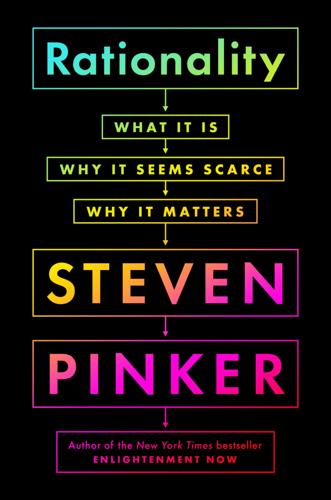
Rationality: What It Is, Why It Seems Scarce, Why It Matters
by
Steven Pinker
Published 14 Oct 2021
A candidate in the 2020 Democratic presidential primary, Andrew Yang, ran on a platform of implementing a universal basic income (UBI). Here is an excerpt from his website in which he justifies the policy (I have numbered the statements): (1) The smartest people in the world now predict that ⅓ of Americans will lose their job to automation in 12 years. (2) Our current policies are not equipped to handle this crisis. (3) If Americans have no source of income, the future could be very dark. (4) A $1,000/month UBI—funded by a Value Added Tax—would guarantee that all Americans benefit from automation.10 Statements (1) and (2) are factual premises; let’s assume they are true. (3) is a conditional, and is uncontroversial.
…
Einstein, for example, announced in 1952 that only the creation of a world government, P, would prevent the impending self-destruction of mankind, Q (if not P then Q), yet no world government was created (not P) and mankind did not destroy itself (not Q; at least if “impending” means “within several decades”). Conversely, some things may come true that are predicted by people who are not the smartest in the world but are experts in the relevant subject, in this case, the history of automation. Some of those experts predict that for every job lost to automation, a new one will materialize that we cannot anticipate: the unemployed forklift operators will retrain as tattoo removal technicians and video game costume designers and social media content moderators and pet psychiatrists. In that case the argument would fail—a third of Americans will not necessarily lose their jobs, and a UBI would be premature, averting a nonexistent crisis.
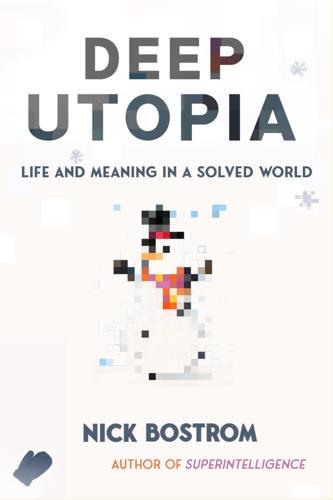
Deep Utopia: Life and Meaning in a Solved World
by
Nick Bostrom
Published 26 Mar 2024
If a job is outsourced to a sentient robot, would we really want to say that it has been “automated”? Would this not be more akin to a scenario in which we had given rise to a new person, born with special talents, who grows up and becomes a master of the profession, allowing its previous practitioners to retire? It would not seem apposite, in that case, to say that the job had been automated. Nor is it easy to see why the fact that the new worker was maybe made out of silicon and steel rather than organic chemistry should make an essential difference here; nor the fact that it might have been conceived in a factory rather than a bedroom; nor the fact that its childhood might have been abridged; nor that its features were, to a greater extent than might be typical for human beings, the result of a deliberate design process rather than chance and inheritance.
…
Then we can immediately identify two ways in which our ability to automate could be limited. One is if there are some products or services that customers prefer be done by a sentient being. The MD and DJ jobs are possible instances—maybe some people simply prefer that the entity they are dealing with consciously experience the interaction. Then these jobs cannot be fully automated. The other way in which our ability to automate could be limited is if there are certain behaviorally specified performances that cannot be achieved without generating conscious experience as a side effect. For example, it could be that any cognitive system that is capable of acting very much like a human being across a very wide set of situations and over extended periods of time, could only do so by performing computations that instantiate phenomenal experience.
…
Of course, when I say “remain competitive”, I mean that hiring a human to do the job would be efficient given the regulations. The regulations themselves may well be inefficient, reducing total economic output compared to a more laissez-faire regime. The greater the technological advantages of the machines, the larger the cost of preventing their use. It is plausible that some jobs are already protected from automation by an implicit legal requirement that they be performed by humans. Although this is as yet mostly untested by courts, one possible interpretation of laws currently on the books is that only humans—but not equally qualified intelligent machines—may serve as legislators, judges, notaries, executive officers, trustees, corporate board members, guardians, presidents, monarchs, and in other similar legally or constitutionally inscribed roles.

The Glass Half-Empty: Debunking the Myth of Progress in the Twenty-First Century
by
Rodrigo Aguilera
Published 10 Mar 2020
As such, the supply of new high-end jobs is unlikely to meet labor demand even though, perversely, it could be the case that those very jobs could be hard to fill if revenue-strapped, laissez-faire minded states do little to upskill their workforces. No bigger capitalist dystopia could be imagined than that where both employers and employees are left unsatisfied! Estimates of the job losses from automation are notoriously un-scientific but studies suggest as many as 80% of jobs are at risk of automation in certain sectors.29 It would seem, at least under any other economic system than capitalism, that automation would be the single greatest liberator of humanity in history, freeing us from the burden of work and therefore enabling every individual to live up to their fullest potential.
…
According to a 2015 New York Times investigation, one former Amazon human resources director called this culture “purposeful Darwinism.”41 A true late capitalist dystopia will be if we have to choose between the working conditions of the Amazon warehouse, the insecurity of the gig economy, a bullshit office job, or mass destitution from automation. Liberal capitalism has no answers to these scenarios, and even the superficial concern shown by centrists merely falls into a quagmire of patch-up policies that work within the existing framework of the very problem they seek to resolve. But future-proofing humanity from the very real possibility of widespread economic distress caused by automation is only half of the story.

Human + Machine: Reimagining Work in the Age of AI
by
Paul R. Daugherty
and
H. James Wilson
Published 15 Jan 2018
An AI system could be technically proficient and ethical, but still be detrimental to an organization. That’s why companies will need automation ethicists. These individuals will be responsible for evaluating the noneconomic impact of AI systems. One important issue is people’s general acceptance for these new technologies. Employees are naturally fearful of losing their jobs to an automated application that performs just as well, if not better, than a human could. Such emotions can be especially powerful in response to robotic AI systems. Masahiro Mori, a Japanese robotics expert, in a study of how we respond to robots, has discovered an interesting effect. As a robot becomes more lifelike, our affinity and empathy for it increases until a certain point.
…
In the United States, the 2016 White House report “Artificial Intelligence, Automation, and the Economy” notes that the nation spends only around 0.1 percent of its GDP on programs that help people adjust to workplace changes. This number has fallen over the last thirty years, and the federal readjustment programs that exist—mostly used to help people deal with coal mines or military bases that close—are not designed to help people whose jobs are lost or changed by automation.6 Results are mixed in other countries. Japan and China are among those that stand out by making significant commitments to AI education and workforce training as the core piece of long-term national AI strategies. For instance, China’s State Council has the stated goal of making the nation equal among leading AI countries by 2020 and the world’s “premier artificial intelligence innovation center by 2030.”7 This development plan includes major investments in retraining workers for an economy where “collaboration between humans and machines will become a mainstream production and service mode.”8 A Call to Action: Reimagining Business AI is rapidly making inroads in business.
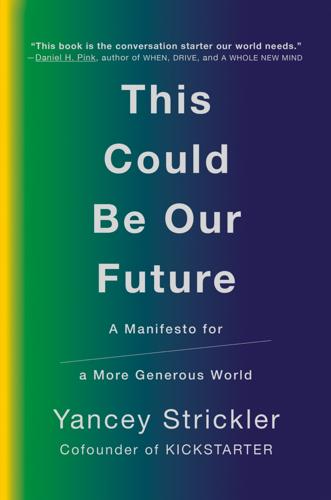
This Could Be Our Future: A Manifesto for a More Generous World
by
Yancey Strickler
Published 29 Oct 2019
See also wages individual, the, xiv–xv, 26–27, 269–70 inequality, 14, 73, 114, 170, 196, 239, 260 Intel, 79 internet, 84, 191, 267 control over, 53–54 creation of, xiv, 38 gov. investment in, 78–79 retailers on, 51, 54–55, 71 iPhone, xii, 54, 78, 168, 182–83 Japan, xvi, 27, 101–3, 129–30 jobs and automation, 72–73, 192 creation of, x, 193 and lack of raises, 63–66 and mass layoffs, 62, 67, 71–73, 84–85 and top earners, 64 Jobs, Steve, 15, 79 Jogging (Bowerman), 186 Johnson, Magic, 159 Kahneman, Daniel, 22–23, 113 Kalanick, Travis, 98 Kennedy, John F., 184–85, 187 Keynes, John Maynard, 193–95 Kickstarter, 15, 115, 175 charter of, 170–71 creative projects of, 5–7, 10–13 founding of, 4–8, 236, 247 as PBC, 6, 9–12, 100–101, 169–71, 264 and stock buybacks, 67–68 wins best award, 87–88 knowledge, 21, 123, 217 and generational change, 180–81 as governing value, 144–45 high value of, xii–xiii, xv, 25 new, 150, 202, 268 Kondratiev waves, 267–68 Kuznets, Simon, 120–21 Lancet, The, 179, 184 Lazonick, William, 73 Let My People Go Surfing (Chouinard), 172 Lewis, Michael, x, 159–60 Liar’s Poker (Lewis), x life goals meaningful, 89–92, 111, 201 purpose-oriented, 94, 119 wealth-centric, 89–92, 94, 105, 119 life span, xi, 15, 266 Lister, Joseph, 147, 149, 179, 183–84, 187 Live Nation, 162, 263 long-term oriented, 110, 166–68, 175–76, 264.

The Future Is Faster Than You Think: How Converging Technologies Are Transforming Business, Industries, and Our Lives
by
Peter H. Diamandis
and
Steven Kotler
Published 28 Jan 2020
In 1790, 90 percent of all Americans made their living as farmers; today it’s less than 2 percent. Did those jobs disappear? Not exactly. The agrarian economy morphed, first into the industrial economy, next into the service economy, now the information economy. Automation produces job substitution far more than job obliteration. Even when there’s automation, this doesn’t always create the dire results we expect. Consider automatic teller machines (ATMs). When they were first rolled out in the late 1970s, there were serious concerns about bank teller layoffs. Between 1995 and 2010, the number of ATMs in America went from one hundred thousand to four hundred thousand, but mass teller unemployment wasn’t the result.
…
replanting a portion of the Irrawaddy Delta: Adele Peters, “These Tree-Planting Drones Are About to Start an Entire Forest from the Sky,”Fast Company, August 10, 2017. See: https://www.fastcompany.com/40450262/these-tree-planting-drones-are-about-to-fire-a-million-seeds-to-re-grow-a-forest. Economic Risks: The Threat of Technological Unemployment 47 percent of all US jobs: L. Nedelkoska, “Automation, Skills Use and Training,” OECD Social, Employment and Migration Working Papers, no. 202 (OECD Publishing, Paris, 2018). See: https://doi.org/10.1787/2e2f4eea-en. as journalist and author James Surowiecki: James Surowiecki, “Robots Will Not Take Your Job,” Wired. August, 2017. See: https://www.wired.com/2017/08/robots-will-not-take-your-job/.

Testing Extreme Programming
by
Lisa Crispin
and
Tip House
Published 15 Apr 2003
Some purists may argue that a tester role is unnecessary in XP projects: customers can write the acceptance tests and programmers can automate them. This can work, and certainly some successful XP projects don't have testers. We believe, however, that more XP teams can be successful by doing a better job of defining, automating, and running acceptance tests when someone is focused on that role and that this focus helps in other areas as well. If you don't like to think of someone in the tester "role" on an XP project (because the only true roles defined in XP are programmer and customer), think of having a programmer with a "tester focus."

You've Been Played: How Corporations, Governments, and Schools Use Games to Control Us All
by
Adrian Hon
Published 14 Sep 2022
Percolata is a “machine learning–based retail staffing” tool that uses computer vision to surveil shoppers and employees.55 It combines this information with sales data, weather forecasts, and marketing calendars to predict future shopper traffic, all in order to optimise staffing levels so employers pay only the bare minimum labour costs. At the same time, it creates a “true productivity” score for workers, ranking them from most to least productive. Percolata’s CEO Greg Tanaka told the Financial Times, “What’s ironic is we’re not automating the sales associates’ jobs per se, but we’re automating the manager’s job, and [our algorithm] can actually do it better than them,” just as Cogito’s AI seeks to eliminate supervisors’ jobs.56 But many industries don’t need to install security cameras on the shop floor to implement Digital Taylorism and gamification, because they’re already partly or wholly digital.
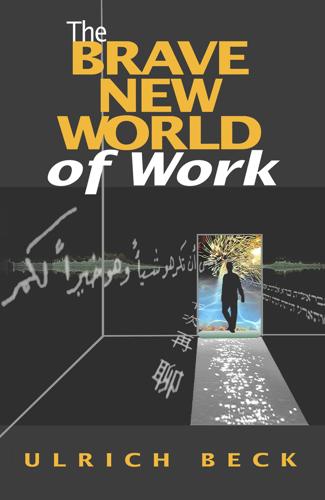
Brave New World of Work
by
Ulrich Beck
Published 15 Jan 2000
Jeremy Rifkin has shown that in the United States the proportion of factory workers in the economically active population fell over the past thirty years from 33 per cent to 17 per cent, even though there was a sharp rise in industrial output.23 In ten years' time less than 12 per cent of America's working population will be employed in factories – and by the year 2020 the figure will be less than 2 per cent. Moreover, even in the classical service sectors where hopes are directed towards a new jobs miracle, automation and downsizing have long since begun. Those who boost the economy further will not only fail to overcome structural unemployment; they will actually reinforce it. For flourishing enterprises make their profits mainly through rationalization (and no one can be blamed for that in an economic system geared to profit).
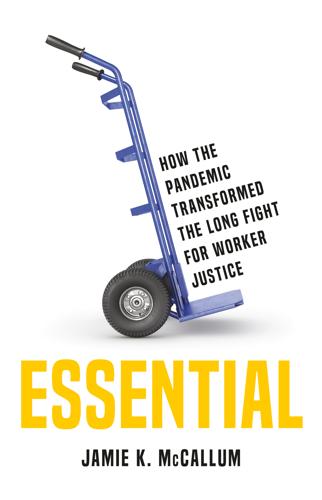
Essential: How the Pandemic Transformed the Long Fight for Worker Justice
by
Jamie K. McCallum
Published 15 Nov 2022
SOURCE: Bureau of Labor Statistics, Current Employment Statistics The graying of the country partly explains the increase in healthcare jobs. Older insured Americans are the primary consumers of healthcare services, and their health problems don’t disappear during economic downturns. Given that so many are insured and have high levels of Medicaid access, they can visit the doctor even during hard times. Moreover, healthcare jobs are hard to automate—especially the low-wage jobs—and are basically place bound, making them resistant to globalization or regional relocation schemes. We all need our dental hygienist to be physically present to get a cleaning. As the graph reveals, the pandemic recession momentarily paused this historic expansion, which has been recession-proof in the past.
…
If the life expectancy of these people had continued to rise as it had throughout the early part of the century, about six hundred thousand more Americans would still be alive, Case and Deaton found. “Destroy work and, in the end, working-class life cannot survive,” they argue. “It is the loss of meaning, of dignity, of pride, and of self-respect… that brings on despair, not just or even primarily the loss of money.”23 Some of the erosion of well-paying blue-collar jobs can be attributed to automation, which reveals another curious way in which the rise of low-wage healthcare work and the decline of comparably better-paying factory labor are related: automating the middle of the labor market helped grow the bottom of it. The progressive automation of well-paid blue-collar production jobs allowed us to produce more for less and lower costs for consumer durable goods.
…
Robot-enabled savings on manufactured goods triggered more consumption of services, spurring growth of service jobs.24 The low wages workers earn in these jobs, in turn, are a safeguard against their automation. Why invest the huge sums necessary to innovate when you can increase productivity by cheaply extending workers’ hours instead? Most of the expanding low-wage healthcare jobs aren’t easy to automate anyway, despite their ironic designation as “low-skilled labor.” In the midcentury, “unskilled labor” described the routine manual tasks associated with industrial production and large-scale manufacturing. Today it’s different. Unskilled labor mostly describes jobs requiring intuitive tasks that often appear “natural” or “innate”: cooking and serving food, caring for people, etc.

Machines of Loving Grace: The Quest for Common Ground Between Humans and Robots
by
John Markoff
Published 24 Aug 2015

The Innovation Illusion: How So Little Is Created by So Many Working So Hard
by
Fredrik Erixon
and
Bjorn Weigel
Published 3 Oct 2016
Potentially, it was argued, automation could destroy the industrial fabric of the United States and cause mass unemployment à la the Great Depression.12 However, the majority of these fears turned out to be unfounded – and, by the end of the decade, when the economy had improved and fears had abated, no one remembered what the panic had been about. Automation, like previous technological shifts, destroyed jobs, but it also created new ones, and much safer and better-paid jobs at that. An automation blitz never occurred; the process took several decades as technology had to adjust to the composition of markets, companies, and several other aspects than simply the capacity of machines to substitute for labor. Just as in the industrial revolution, automation did not win merely by showing up.
…
(i) Angry Birds (app game) (i) Anheuser-Busch (i) Ansoff, Igor (i) antitrust laws (i) anxiety and automation/high-tech employment (i), (ii) psychology of, and low growth expectations (i) Apollo, moon landing (i) Apple and Foxconn (i) iOS (i) iPad (i), (ii) iPhone (i), (ii), (iii), (iv), (v) iPod and value chains (i) and Nokia (i) unutilized cash balances (i) apps (i), (ii), (iii), (iv), (v), (vi), (vii) Arab Spring (2011) (i) Arendt, Hannah (i) Art Vandelay character (Seinfeld TV series) (i), (ii), (iii) artificial intelligence (AI) (i), (ii) see also automation; robotics/robots Asia Asian markets (i), (ii) labor market flexibility (i) regionalization of trade growth (i) see also East Asia Asian Tigers (Hong Kong, Singapore, South Korea, Taiwan) (i) Asimov, Isaac (i) aspirations (i), (ii), (iii), (iv), (v) asset bubbles (i) asset managers and financial regulation (i) and gray capitalism (i), (ii), (iii), (iv), (v), (vi) and modern portfolio theory (i) and retirement savings (i) AT&T, Bell Labs (i) automated teller machines (ATMs), and teller jobs (i) automation and labor (i), (ii), (iii), (iv), (v) see also artificial intelligence; New Machine Age thesis; robotics/robots; technology automobile industry see car industry “average is over” thesis (i) Babson College, entrepreneurship study (i) baby boomer (or boomer) generation (i), (ii), (iii), (iv) Back to the Future II (movie) (i) Bacon, Francis (i) Bailey, Ronald (i) Baldwin, Richard (i) Ballmer, Steve (i), (ii) ballooning (i) Balsillie, Jim (i) Bank for International Settlements (BIS) economists (i), (ii) banks bank services and globalization (i) bank teller jobs and ATMs (i) European banks and Basel III rules (i), (ii) and financial regulation (i), (ii) mobile banking in Africa (i) proneness to risk (i) “put option” (i) US banks and compliance officers (i) barber profession, evolution of (i) Basel III (i), (ii) BASF (i), (ii) Baumol, William (i), (ii), (iii), (iv)n70 “bazaar economy” (Hans-Werner Sinn) (i) Beals, Vaughn (i) Bean, Charles “Independent Review of UK Economic Statistics” (i) on UK productivity puzzle (i) Beer, Stafford (i), (ii) Being There (movie), Mr.
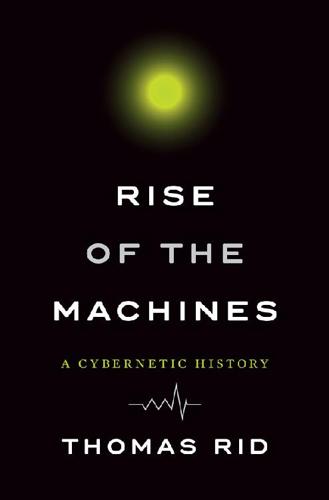
Rise of the Machines: A Cybernetic History
by
Thomas Rid
Published 27 Jun 2016
Unemployment in the United States steadily cycled upward throughout the 1950s, from 4.2 percent at the start of the decade to 5.8 percent.74 By the end of the decade, economists had begun articulating concerns about structural unemployment. But from 1961 to 1969, employment in the goods-producing industries grew by 19 percent, and the service sector grew by nearly 30 percent. It also became clear that computers and control systems created new jobs. A leading trade magazine, Automation, commissioned a study of 3,440 industrial plants. Eleven percent were using advanced automation technology, such as computer control. Of those automated factories, only 10.4 percent reported a reduction of personnel; 41.5 percent reported no change; and nearly half of all automated companies told the magazine that more workers were needed to service the machines, not fewer.75 The distinctly 1960s hype about automation had two main drivers.
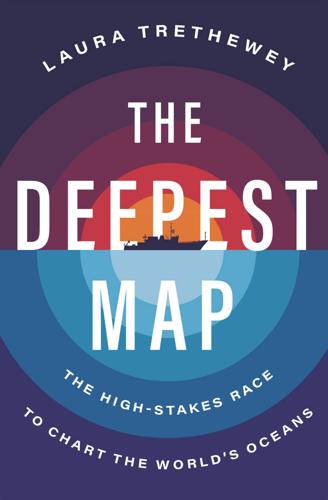
The Deepest Map
by
Laura Trethewey
Published 15 May 2023
But once the ocean drone is up and running, it requires no meals, no breaks, no runs back to land to refuel or restock. The drone’s human operators back on land can swap off round-the-clock shifts. That huge drop in the need for human power made me wonder whether ocean mappers were worried about losing their jobs to automation, as so many professions are experiencing today. Connon fields this question all the time, he said, and the answer is no. “I want to free up [the ocean mapper’s] mind to focus on the things that are hard, that require human intervention, and not have to worry about the little fiddly stuff that takes a lot of time,” he said.
…
A single map is not a self-contained document but a compilation of “what others have seen or found out or discovered, others often living but more often dead, the things they learned piled up in layer on top of layer so that to study even the simplest-looking image is to peer back through ages of cultural acquisition,” writes Denis Wood in The Power of Maps.7 Instead of humans striking out on an expedition, fumbling their way from ignorance to knowledge, robots would do the work for us. Who would willingly give up such an awesome job? One argument in favor of automation is that it might expand access to ocean mapping. Historically, surveying the seas has been the domain of white men from developed countries. Thanks to the efforts of Marie Tharp and other early female mappers, more women are going to sea today, but they still tend to be white women from the global North.

Markets, State, and People: Economics for Public Policy
by
Diane Coyle
Published 14 Jan 2020

When Computers Can Think: The Artificial Intelligence Singularity
by
Anthony Berglas
,
William Black
,
Samantha Thalind
,
Max Scratchmann
and
Michelle Estes
Published 28 Feb 2015
One of the toughest problems traditionally is bin picking, namely to pick objects out of a jumble of objects in a bin as shown above. The robot has to sense where the objects are and what their orientation or pose is. It then has to plan a sequence of movements to accurately grasp the object. This means that the factory environment does not need to be as rigidly controlled, and that many additional jobs can be automated. The advanced vision systems this requires have now become much more affordable. The system shown above shown above just uses the same Kinect sensors that are used in the XBox consumer game console. So the factory lights are being turned back on, but not for human eyes. Motion Planning Hexapod robot.

Artificial Intelligence: A Guide for Thinking Humans
by
Melanie Mitchell
Published 14 Oct 2019
If this actually happens, it could be a true boon for human well-being. (Later I’ll discuss the other side of this coin—AI taking away too many human jobs.) Robots are already widely used for menial and repetitive factory tasks, though there are many such jobs still beyond the abilities of today’s robots. But as AI progresses, more and more of these jobs could be taken over by automation. Examples of future AI workplace applications include self-driving trucks and taxis, as well as robots for harvesting fruits, fighting fires, removing land mines, and performing environmental cleanups. In addition, robots will likely see an even larger role than they have now in planetary and space exploration.
…
The respondents were divided: 63 percent predicted that progress in AI would leave humans better off by 2030, while 37 percent disagreed. Opinions ranged from the view that AI “can virtually eliminate global poverty, massively reduce disease and provide better education to almost everyone on the planet” to predictions of an apocalyptic future: legions of jobs taken over by automation, erosion of privacy and civil rights due to AI surveillance, amoral autonomous weapons, unchecked decisions by opaque and untrustworthy computer programs, magnification of racial and gender bias, manipulation of the mass media, increase of cybercrime, and what one respondent called “true, existential irrelevance” for humans.

Ghost Road: Beyond the Driverless Car
by
Anthony M. Townsend
Published 15 Jun 2020

The Docker Book
by
James Turnbull
Published 13 Jul 2014
If the job exits with an exit code of 0, then the job will be marked as successful. You can also view the precise test results by clicking the Test Result link. This will have captured the RSpec output of our tests in JUnit form. This is the output that the ci_reporter gem produces and our After Build step captures. Next steps with our Jenkins job We can also automate our Jenkins job further by enabling SCM polling, which triggers automatic builds when new commits are made to the repository. Similar automation can be achieved with a post-commit hook or via a GitHub or Bitbucket repository hook. Summary of our Jenkins setup We've achieved a lot so far: we've installed Jenkins, run it, and created our first job.

The Participation Revolution: How to Ride the Waves of Change in a Terrifyingly Turbulent World
by
Neil Gibb
Published 15 Feb 2018
They were not agitators by disposition. They were skilled workers from the local textile industry. But they were very angry. The city’s manufacturing companies were introducing radical new technologies and working practices that were disrupting their jobs and livelihoods beyond recognition. Skilled jobs were being lost to automation. Salaried jobs were being replaced with zero-hour contracts. Wages were falling, jobs were disappearing, people were being laid off. At the same time, local business owners were getting extremely rich. On top of this, there was the shock of a new leader of what was then the world’s most powerful nation – George IV, King of the United Kingdom.

The Next Factory of the World: How Chinese Investment Is Reshaping Africa
by
Irene Yuan Sun
Published 16 Oct 2017

Emotional design: why we love (or hate) everyday things
by
Donald A. Norman
Published 10 May 2005
Throughout history, each new wave of technology has displaced workers, but the total result has been increased life span and quality of living for everyone, including, in the end, increased jobs—although of a different nature than before. In transitional periods, however, people are displaced and unemployed, for the new jobs that result often require skills very distant from those of the people who have been displaced. This is a major social problem that must be addressed. In the past, most of the jobs replaced by automation have been lowlevel jobs, jobs that did not require much skill or education to perform. In the future, however, robots are apt to replace some highly skilled jobs. Will film actors be replaced by computer-generated characters that sound and act just as realistic, but are much more under the TLFeBOOK 208 Emotional Design control of the director?

The Global Auction: The Broken Promises of Education, Jobs, and Incomes
by
Phillip Brown
,
Hugh Lauder
and
David Ashton
Published 3 Nov 2010
This is an issue to which we will return in the final chapter, but there is another argument popular with American economists embracing the view that income inequalities are a result of changes in technologies. Is There a Hi-Tech Elephant in the Room? The idea that income inequalities are explained by the introduction of new technologies rather than global trade is intuitively attractive. It asserts that as new technologies are introduced into the workplace, some jobs are automated while more skilled workers are required to exploit the productive potential of new technologies. Widening income inequalities reflect the growing disparity in productivity achieved by high- as opposed to low-skill employees. “It seems undeniable,” suggests Paul Krugman, a Nobel Prize winner, “that the increase in the skill premium in the advanced world is primarily the result of skillbiased technological change.”35 Other luminaries like Lawrence Summers reaffirmed this view, claiming that “most of the observed increases in income inequality in the American economy are due to new technology rather than increased trade,” although he does recognize the threat of the global auction.36 The idea that new technologies usually demand higher levels of skill has led economists to present education and technology as a race in which the supply of educated workers needs to keep up with technology-led demand; otherwise, a shortage of skilled workers will lead to a polarization of incomes.37 A major study by Claudia Goldin and Lawrence Katz documents how the supply of educated workers kept pace with demand for much of the twentieth century, which they called the century of human capital.

The Smartphone Society
by
Nicole Aschoff
Responding to an article in the business press predicting the takeover of work by robots, Rodney Brooks, the emeritus Panasonic Professor of Robotics at MIT, called the claims “ludicrous.”38 Greg Ip, the Wall Street Journal’s chief economics commentator, characterized reports of the wholesale destruction of jobs by automation and algorithms “baffling and misguided.” Robert D. Atkinson, president of the Information Technology and Innovation Foundation, says, “No matter how many times a purported expert claims we are facing an epochal technology revolution that will destroy tens of millions of jobs and leave large swathes of human workers permanently unemployed, it still isn’t true.”39 Data scientists are also speaking up to assert that algorithms don’t take people out of the equation and they aren’t unbiased or neutral.

Reinventing Capitalism in the Age of Big Data
by
Viktor Mayer-Schönberger
and
Thomas Ramge
Published 27 Feb 2018
Ironically, therefore, a human-labor tax credit may stimulate efforts to develop technical advances that offer substantially higher cost efficiencies. Sectors ripe for automation may actually become more automated as a result of the tax credit. As the saying goes, this is not a bug but a feature. While encouraging job creation that is insulated from automation (at least in the medium term), it would stimulate further automation in those areas where humans are already in danger of being replaced by machines. And to the extent policy makers want to retain retraining and reskilling programs, these programs need to be designed so that they are eminently and swiftly adaptable.

The Master Algorithm: How the Quest for the Ultimate Learning Machine Will Remake Our World
by
Pedro Domingos
Published 21 Sep 2015
Technological progress will noticeably speed up, not just in computer science but in many different fields. This in turn will add to economic growth and speed poverty’s decline. With the Master Algorithm to help synthesize and distribute knowledge, the intelligence of an organization will be more than the sum of its parts, not less. Routine jobs will be automated and replaced by more interesting ones. Every job will be done better than it is today, whether by a better-trained human, a computer, or a combination of the two. Stock-market crashes will be fewer and smaller. With a fine grid of sensors covering the globe and learned models to make sense of its output moment by moment, we will no longer be flying blind; the health of our planet will take a turn for the better.
…
Algorithms can predict stock fluctuations but have no clue how they relate to politics. The more context a job requires, the less likely a computer will be able to do it soon. Common sense is important not just because your mom taught you so, but because computers don’t have it. The best way to not lose your job is to automate it yourself. Then you’ll have time for all the parts of it that you didn’t before and that a computer won’t be able to do any time soon. (If there aren’t any, stay ahead of the curve and get a new job now.) If a computer has learned to do your job, don’t try to compete with it; harness it. H&R Block is still in business, but tax preparers’ jobs are much less dreary than they used to be, now that computers do most of the grunge work.

This Is Not a Drill: An Extinction Rebellion Handbook
by
Extinction Rebellion
Published 12 Jun 2019
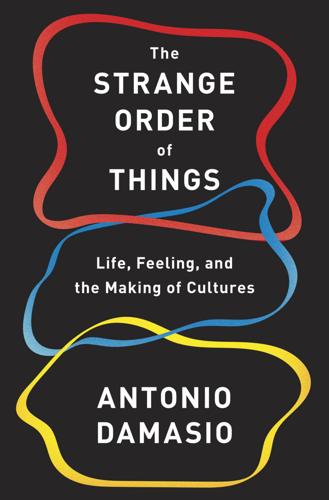
The Strange Order of Things: The Biological Roots of Culture
by
Antonio Damasio
Published 6 Feb 2018
Advancing the human cause is hardly the issue for those who believe that we are entering a “post-humanist” phase of history, a phase in which most human individuals have lost their usefulness to society. In the picture painted by Yuval Harari, when humans are no longer required to fight wars—cyber warfare can do that for them—and after humans have lost their jobs to automation, most of them will simply wither away. History will belong to those who will prevail by acquiring immortality—or at least long, long longevity—and who will remain to benefit from this arrangement. I say “benefit” rather than “enjoy” because I imagine that the status of their feelings will be murky.5 The philosopher Nick Bostrom provides another alternative vision, one in which very intelligent and destructive robots will actually take over the world and put an end to human misery.6 In either case, future lives and minds are presumed to depend at least in part on “electronic algorithms” that artificially simulate what “biochemical algorithms” currently do.

Hands-On RESTful API Design Patterns and Best Practices
by
Harihara Subramanian
Published 31 Jan 2019
Precisely speaking, monolithic applications need to be tuned to become distributed and complicated applications. Though modern applications are agile, affordable, and adaptive, the management and operational complexities of microservices-centric applications are bound to escalate. Further on, detecting errors and debugging them to make applications error-free is a tedious job indeed. There are a few automated testing tools emerging for testing microservices. Experts are unearthing various ways of testing distributed microservices. Also, the testing procedure is being illustrated for composite microservices. Refactoring and rewriting We've been writing about how the powerful emergence of microservices architecture is instigating the need for legacy modernization in order to embrace modernity.
…
Workloads are subjected to a variety of investigations and deployed in the most appropriate physical machines/BM servers, virtual machines (VMs), and containers. There are pioneering scheduling solutions and algorithms for tasks and resources; that is, scheduling resources for all kinds of incoming jobs is fully automated. Then, there are energy-efficiency methods being applied in order to ensure power conservation and reduce heat dissipation. There are cost efficiencies being accrued out of the cloudification movement. Thus, IT infrastructures are set to become agile, adaptive, and affordable in their offerings.

The Industries of the Future
by
Alec Ross
Published 2 Feb 2016
Two Oxford University professors who studied more than 700 detailed occupational types have published a study making the case that over half of US jobs could be at risk of computerization in the next two decades. Forty-seven percent of American jobs are at high risk for robot takeover, and another 19 percent face a medium level of risk. Those with jobs that are hard to automate—lawyers, for example—may be safe for now, but those with more easily automated white-collar jobs, like paralegals, are at high risk. In the greatest peril are the 60 percent of the US workforce whose main job function is to aggregate and apply information. When I was growing up, my mom worked as a paralegal at the Putnam County Courthouse in Winfield, West Virginia.
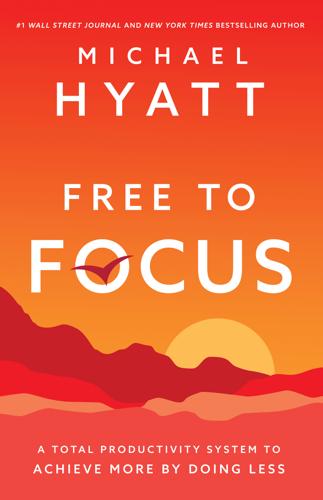
Free to Focus: A Total Productivity System to Achieve More by Doing Less
by
Michael Hyatt
Published 8 Apr 2019
But it doesn’t take an engineer or a geek to benefit from automation. Every day jobs come up that we don’t have time to think about, yet they still need to get done. But who says you have to give the job your full attention? What if you could subtract yourself from the equation and still get the job done? That’s where automation comes in, and I like to think of the topic under four main headers: self-automation template automation process automation tech automation In this chapter we’ll look at all four and explore several key automation strategies that will enable you to put many of your Drudgery and Disinterest Zone tasks on autopilot.

Thank You for Being Late: An Optimist's Guide to Thriving in the Age of Accelerations
by
Thomas L. Friedman
Published 22 Nov 2016
But it is critical to remember that even 98 percent automation of a job is not the same as 100 percent automation. Why? In the nineteenth century, 98 percent of the labor involved in weaving a yard of cloth got automated. The task went from 100 percent manual labor to 2 percent. “And what happened?” asked Bessen. “The number of weaver jobs increased.” Why? “Because when you automate a job that has largely been done manually, you make it hugely more productive.” And when that happens, he explained, “prices go down and demand goes up” for the product. At the beginning of the nineteenth century, many people had one set of clothes—and they were all man-made.

Selfie: How We Became So Self-Obsessed and What It's Doing to Us
by
Will Storr
Published 14 Jun 2017
In 1964, 55 per cent of all working-class voters were Democrats. By 1980, that number had fallen to 35 per cent. Under the inequalities of neoliberalism, the white working class suffered. The new era of globalization it brought about saw some of the manufacturing and service industries they relied upon moving overseas. Many others lost their jobs because of automation, the effects of which a more collectively minded state might have sought to mitigate. Whilst plenty of people have become better off, since the 1970s, a good deal of others have seen the worth of their paychecks stall or fall. The average real income for the bottom 90 per cent of earners in the US, for example, has pretty much stagnated.
…
It has plenty in store for the future, too, with automation and artificial intelligence predicted to further decimate middle- and working-class jobs. There are 1.7 million truck drivers in the US alone whose livelihoods are at risk from the introduction of autonomous vehicles. Researchers at the University of Oxford have predicted that, by 2033, nearly half of all US jobs could be automated. The technologists promised us a ‘Long Boom’. They didn’t tell us that boom would be directed mostly at the top. It was another Silicon Valley product, social media, that enabled Donald Trump to connect directly with his supporters, bypassing traditional journalists and undermining their reporting by calling them liars.

The Patient Will See You Now: The Future of Medicine Is in Your Hands
by
Eric Topol
Published 6 Jan 2015
We’ve already seen some examples of how physicians react to the threat of being marginalized, along with their general reluctance to adapt to new technology. Now we get into the “Second Machine Age”101 question as to whether the new digital landscape will reboot the need for doctors and health professionals. Kevin Kelly, a cofounder of Wired, has asserted: “The role tasks of any information-intensive job can be automated. It doesn’t matter if you are a doctor, lawyer, architect, reporter, or even programmer: The robot takeover will be epic.”102 An emergency medicine physician likened the current practice of medicine to a Radio Shack store in his piece “Doctor Dinosaur: Physicians may not be exempt from extinction.”103 In late 2013, Korean doctors threatened to go on an all-out strike if the government went ahead with new telemedicine laws that would support clinical diagnoses to be made remotely.
…
Patients will always crave and need the human touch from a doctor, but that can be had on a more selective basis with the tools at hand. Instead of doctors being squeezed, resorting to computer automation can actually markedly expand their roles. As Kevin Kelly wrote, “the rote tasks of any information-intensive job can be automated. It doesn’t matter if you are a doctor, lawyer, architect, reporter, or even programmer.”102 The Economist weighed in on this too: “The machines are not just cleverer, but they also have access to far more data. The combination of big data and smart machines will take over some occupations wholesale.”153 But smart doctors need not feel threatened, for their occupation is secure.

Capitalism Without Capital: The Rise of the Intangible Economy
by
Jonathan Haskel
and
Stian Westlake
Published 7 Nov 2017
Louis Anslow, an enterprising journalist, collected an archive of news stories to this effect, with examples dating back as early as the 1920s, including a speech by Albert Einstein in 1931 blaming the Great Depression on machines, and the British Prime Minister James Callaghan asking Downing Street civil servants to review the threat to jobs from automation shortly before he was ousted by Margaret Thatcher.2 All this suggests that while technology has the potential to displace jobs and create inequality, it ain’t necessarily so. The second challenge to the mainstream explanations of inequality comes from Piketty’s observation that the rise in wage inequality is very concentrated at the very top.

The Power of Glamour: Longing and the Art of Visual Persuasion
by
Virginia Postrel
Published 5 Nov 2013
It reflects the modern spirit of the world.”40 Although enchanting to Bourke-White, that spirit frightened many others, as the popularity of Chaplin’s black comedy Modern Times demonstrates. Labor-saving devices looked alluring to the exhausted housewife, but to her wage-earning husband “labor-saving” often sounded like a prescription for unemployment. Nearly a quarter of unemployed Americans receiving government relief in 1939 believed they’d lost their jobs to automation.41 “Do you know the guy said that machinery is going to take the place of every profession?” says Jean Harlow’s character in Dinner at Eight (1933), describing the book she’s reading to look intellectual. A 1931 article in Modern Mechanix asked, “Is Man Doomed by the Machine Age?”42 Modernity threatened to make human muscle power redundant.

What Algorithms Want: Imagination in the Age of Computing
by
Ed Finn
Published 10 Mar 2017
But if these are reflexive counter-algorithms designed to capitalize on systemic inequities, they are responding to broader cultural systems that typically lack such awareness. The computational turn means that many algorithms now reconstruct and efface legal, ethical, and perceived reality according to mathematical rules and implicit assumptions that are shielded from public view. As legal ethicist Frank Pasquale writes about algorithms for evaluating job candidates: Automated systems claim to rate all individuals the same way, thus averting discrimination. They may ensure some bosses no longer base hiring and firing decisions on hunches, impressions, or prejudices. But software engineers construct the datasets mined by scoring systems; they define the parameters of data-mining analyses; they create the clusters, links, and decision trees applied; they generate the predictive models applied.

Them and Us: How Immigrants and Locals Can Thrive Together
by
Philippe Legrain
Published 14 Oct 2020
On the contrary, until the coronavirus crisis, jobless rates in the UK, the US and Germany were at new lows. Yet many fear that this time may be different – that AI has the scope to quickly displace much human labour faster than society is able to adjust. According to one widely quoted study, nearly half of American jobs are at high risk of automation by the mid-2030s.5 But while it estimates that as many as 47 percent of jobs are at risk of being automated, this does not mean they actually will be, as one of its authors points out.6 More comprehensive studies suggest that far fewer jobs are at risk. The OECD estimates that only 9 percent of jobs in twenty-one rich OECD countries are fully automatable.7 Whatever the correct figure, economies have previously adapted to huge technological changes that automated many tasks, such as the deployment of electricity and the popularisation of personal computers (PCs), without incurring job losses overall; new and better jobs were also created.

Wired for War: The Robotics Revolution and Conflict in the 21st Century
by
P. W. Singer
Published 1 Jan 2010
One of the paradoxes of security screening at places like airports and railroad stations, for example, is that it is incredibly important, but also mind-numbingly boring. So, oddly, we have this most crucial job in countering terrorists performed by workers with little training, who are paid barely over minimum wage. As with other dull, dangerous, and dirty jobs, automated systems are coming into favor as a potential solution. Screening is beginning to be streamlined via such technologies as high-frequency radio scanners, which can automatically spot concealed weapons. Reminding many of the technology imagined in movies like Arnold Schwarzenegger’s 1990 flick Total Recall, the real-world version is a sort of automatic X-ray scan.

Portfolios of the poor: how the world's poor live on $2 a day
by
Daryl Collins
,
Jonathan Morduch
and
Stuart Rutherford
Published 15 Jan 2009
Many South African diary households belonged to clubs of this sort, and their most common answer to this question was that club membership was the surest way to discipline themselves to save for a particular event. “You feel compelled to contribute your payment. If you don’t do that, [it] is like you are letting your friends down. So it is better because you make your payment no matter what.” Savings clubs, then, do the job that automated payments into savings accounts, or “stop orders” do for earners in rich economies: they shift money into a “hands off ” account, acting as a guard against the temptation to spend spare money in trivial ways. In this, they play important psychological and social roles, building on commonsense notions that have only been recently recognized by behavioral economists.11 The basic idea is that many people, both rich and poor, are often caught in a bind.
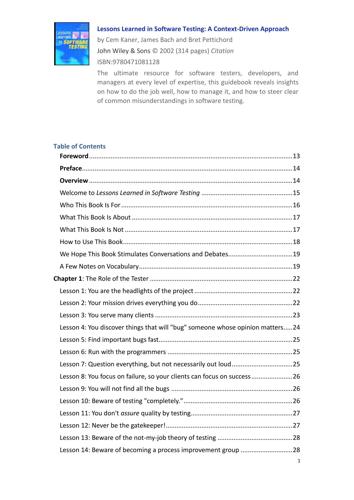
Lessons-Learned-in-Software-Testing-A-Context-Driven-Approach
by
Anson-QA

Falter: Has the Human Game Begun to Play Itself Out?
by
Bill McKibben
Published 15 Apr 2019
Still, the transition will be remarkably wrenching. If you include part-timers, more Americans work as drivers than are employed in manufacturing jobs—in forty of the fifty U.S. states, “truck driver” is the single most common occupation.12 What are they going to do instead? Not become bakers—89 percent of them are expected to lose their jobs to automation by 2033, along with 83 percent of sailors. Wall Street is steadily shedding jobs because algorithms now execute 70 percent of equity trades; it’s great for those who remain, given that there’s ever more money to go in fewer pockets, but it does make you wonder if we might not be in the last era of high employment.
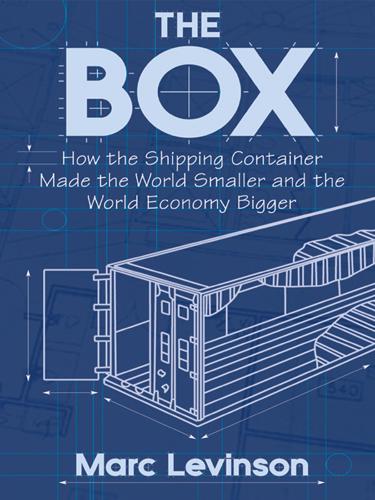
The Box: How the Shipping Container Made the World Smaller and the World Economy Bigger
by
Marc Levinson
Published 1 Jan 2006
“This is a clear-cut threat to our existing collective bargaining agreement and to the royalty program,” he charged in late 1961. Longshore hours worked in December 1961 were down 4 percent from the previous year and down 20 percent from December 1956, but there was still no compensation being paid out to the men whose work had diminished.35 Job security in the face of automation thus became the overwhelming union concern as contract negotiations began in 1962. Job security, though, played differently in different places. New York leader Frank Field demanded that the ILA negotiate for a portwide seniority system: business at his own Local 858’s docks, in lower Manhattan, was drying up, but the customary pier-specific seniority meant that displaced Manhattan longshoremen could not easily find work on other piers.

The Zero Marginal Cost Society: The Internet of Things, the Collaborative Commons, and the Eclipse of Capitalism
by
Jeremy Rifkin
Published 31 Mar 2014
In the United States, between 1982 and 2002, steel production rose from 75 million tons to 120 million tons, while the number of steel workers declined from 289,000 to 74,000.13 American and European politicians, and the general public, blame blue collar job losses on the relocation of manufacturing to cheap labor markets like China. The fact is that something more consequential has taken place. Between 1995 and 2002, 22 million manufacturing jobs were eliminated in the global economy while global production increased by more than 30 percent worldwide. The United States lost 11 percent of its manufacturing jobs to automation. Even China shed 16 million factory workers while increasing its productivity with IT and robotics, allowing it to produce more output, more cheaply, with fewer workers.14 Manufacturers that have long relied on cheap labor in their Chinese production facilities are bringing production back home with advanced robotics that are cheaper and more efficient than their Chinese workforces.

Digital Empires: The Global Battle to Regulate Technology
by
Anu Bradford
Published 25 Sep 2023
Secretary of State for Foreign and Commonwealth Affairs, ECLI:EU:C:2020:790; Joined Cases C-511/18, C-512/18 & C-520/18, La Quadrature du Net and Others v. Premier Ministre, ECLI:EU:C:2020:791. 42.Jeffrey Dastin, Amazon Scraps Secret AI Recruiting Tool That Showed Bias Against Women, Reuters (Oct. 10, 2018), https://www.reuters.com/article/us-amazon-com-jobs-automation-insight/amazon-scraps-secret-ai-recruiting-tool-that-showed-bias-against-women-idUSKCN1MK08G. 43.Melissa Heikkilä, Dutch Scandal Serves as a Warning for Europe Over Risks of Using Algorithms, Politico (Mar. 29, 2022), https://www.politico.eu/article/dutch-scandal-serves-as-a-warning-for-europe-over-risks-of-using-algorithms/. 44.Autoriteit Persoonsgegevens, Boete Belastingdienst voor zwarte lijst FSV (Apr. 12, 2022), https://autoriteitpersoonsgegevens.nl/nl/nieuws/boete-belastingdienst-voor-zwarte-lijst-fsv. 45.Proposal for a Regulation of the European Parliament and of the Council Laying Down Harmonised Rules on Artificial Intelligence (Artificial Intelligence Act) and Amending Certain Union Legislative Acts, COM (2021) 206 final, 2021/0106 (COD) (Apr. 21, 2021). 46.Id., para. 15. 47.Id., para. 18. 48.High-Level Expert Group on Artificial Intelligence, Ethics Guidelines for Trustworthy AI, Eur.

Deep Medicine: How Artificial Intelligence Can Make Healthcare Human Again
by
Eric Topol
Published 1 Jan 2019
Elisabeth Mason, who directs Stanford University’s Poverty and Technology Center, thinks that there are millions of unfilled jobs in the United States and that we now have the tools to promote matching—to use AI to help solve this problem.69 A 2018 Organisation for Economic Co-operation and Development (OECD) report estimates that more than 40 percent of all healthcare jobs can be automated across the globe, which underscores the magnitude of disruption we’re potentially facing.70 Within AI, there is a great mismatch between the human talent available and the demand for it. There have been numerous reports of starting salaries for fresh-out-of-school PhDs with AI expertise ranging from $300,000 to more than $1 million; most of these new graduates come from academia or are pinched from other tech companies.

The Start-Up of You: Adapt to the Future, Invest in Yourself, and Transform Your Career
by
Reid Hoffman
and
Ben Casnocha
Published 14 Feb 2012

Zero to Sold: How to Start, Run, and Sell a Bootstrapped Business
by
Arvid Kahl
Published 24 Jun 2020

Vulture Capitalism: Corporate Crimes, Backdoor Bailouts, and the Death of Freedom
by
Grace Blakeley
Published 11 Mar 2024
Kyle Lewis and Will Stronge, Overtime: Why We Need a Shorter Working Week (London: Verso Books, 2021). 43. See 4 Day Week, https://www.4dayweek.co.uk/. 44. See, for example, Katharine Miller, “Radical Proposal: Universal Basic Income to Offset Job Losses Due to Automation,” Stanford University Human-Centered Artificial Intelligence, October 20, 2021, https://hai.stanford.edu/news/radical-proposal-universal-basic-income-offset-job-losses-due-automation. 45. See, for example, The Labour Party, “Universal Basic Services: The Right to a Good Life,” https://labour.org.uk/wp-content/uploads/2019/09/12730_19-Universal-Basic-Services_v5.pdf. 46. See, for example, Mathew Lawrence and Thomas Hanna, “Ownership Futures: Towards Democratic Public Ownership in the 21st Century,” Common Wealth, November 2, 2020, https://www.common-wealth.co.uk/publications/ownership-futures-towards-democratic-public-ownership-in-the-twenty-first-century. 47.

Survival of the Richest: Escape Fantasies of the Tech Billionaires
by
Douglas Rushkoff
Published 7 Sep 2022

Generations: The Real Differences Between Gen Z, Millennials, Gen X, Boomers, and Silents—and What They Mean for America's Future
by
Jean M. Twenge
Published 25 Apr 2023
Millions of well-paying jobs in manufacturing disappeared in the 1980s and 1990s, exemplified by the thousands of laid-off steelworkers and the autoworkers who lost their jobs as auto assembly plants moved overseas. Although many factors contributed to this shift, technology was one of the root causes: As technology advanced, more manual labor jobs became automated or offshored, and jobs in the “knowledge economy” that required more education became more plentiful. Figure 3.39: Median household income in 2020 dollars, U.S., by education level and difference in income, 1967–2001 Source: Current Population Survey, Annual Social and Economic Supplements, U.S.

Beyond Outrage: Expanded Edition: What Has Gone Wrong With Our Economy and Our Democracy, and How to Fix It
by
Robert B. Reich
Published 3 Sep 2012
The two lines began to diverge: Output per hour—a measure of productivity—continued to rise. But real hourly compensation was left in the dust. This was mainly because new technologies—container ships, satellite communications, eventually computers and the Internet—started to undermine any American job that could be automated or done more cheaply abroad. Factories remaining in the United States have shed workers as they automated. So has the service sector. But contrary to popular mythology, trade and technology have not reduced the overall number of American jobs; their more profound effect has been on pay.

Financing Basic Income: Addressing the Cost Objection
by
Richard Pereira
Published 5 Jul 2017

The Quants
by
Scott Patterson
Published 2 Feb 2010
But since he didn’t have any computer programming skills, it limited his ability to design and implement models. Instead, he became PDT’s “human trader.” At the time, there were still certain markets, such as stock index futures, that weren’t fully automatic. Trades spat out by PDT’s models had to be called in over the telephone to other desks at Morgan. That was Tuttle’s job. The automated trading system didn’t always go smoothly. Once PDT mistakenly sold roughly $80 million worth of stock in about fifteen minutes due to a bug in the system. Another time Reed, who was running the Japanese stock system at the time, asked another trader to cover for him. “Just hit Y every time it signals a trade,” he said.

Radicals Chasing Utopia: Inside the Rogue Movements Trying to Change the World
by
Jamie Bartlett
Published 12 Jun 2017
Their energy, imagination and passion might save us, but these very attributes might also lead to ruin and desperation. Yet for all this, radicals remain our best hope. The trends that led us to these remarkable years show no sign of abating. If anything, they will intensify. What happens if, as researchers from the University of Oxford predict, roughly half of all US jobs are automated and taken over by computers by 2033? When everything in our house, our car and our workplace is connected to the internet, all collected, stored and used by mega-companies based in California? Or if, as predicted by the United Nations, by 2050 the population hits 10 billion, half of them facing extreme water shortages, and 250 million climate-change refugees are on the move looking for habitable places to live?

The Costs of Connection: How Data Is Colonizing Human Life and Appropriating It for Capitalism
by
Nick Couldry
and
Ulises A. Mejias
Published 19 Aug 2019

The New Gold Rush: The Riches of Space Beckon!
by
Joseph N. Pelton
Published 5 Nov 2016
Republican advocates on the other side of the discussion, with more of an eye to their business-oriented constituencies, say that a large rise in the cost of living would be inflationary. They would argue that such a policy will only give rise to increased automation. They quite reasonably argue that, since “basic human labor” is becoming too expensive in comparison to machines, raising the minimum wages will lead to a death spiral of basic labor jobs. The indisputable truth is that automation, artificial intelligence and expert systems are now able to replace more and more jobs. These automatons , smart robots and expert systems are not only replacing routine manufacturing, farming and mining jobs but an increasing array of more skilled service jobs as well. Just in the last few years, robots and AI computer programs have surged in numbers and sophistication.
…
About 12 % of jobs in developed countries are in manufacturing, and of these “manufacturing” jobs an increasing number are in areas such as sales, promotion, management, engineering and design rather than actual manufacturing. This means that 85 % of the jobs in developed economies are in services. Yet as just noted these service jobs are increasingly being automated or turned over to devices or robots that are artificially intelligent. Ray Kurzweil, the artificial intelligence guru that invented “Siri,” who so sweetly and competently responds to inquiries on smart phones, believes that the “singularity” is coming within the next few years. The term “singularity” was first used by John von Neumann in 1958.
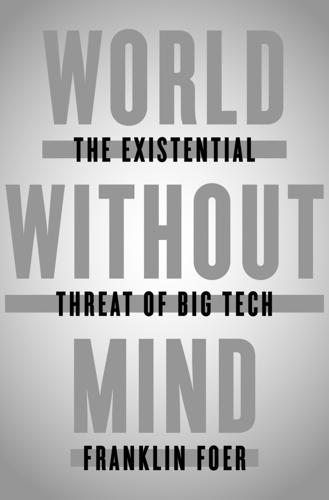
World Without Mind: The Existential Threat of Big Tech
by
Franklin Foer
Published 31 Aug 2017
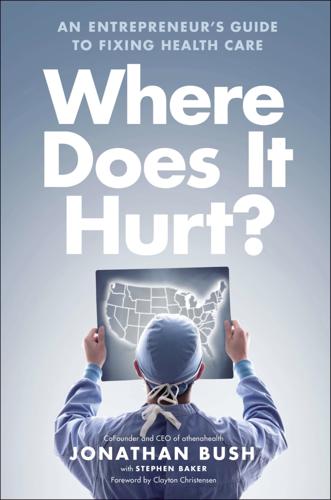
Where Does It Hurt?: An Entrepreneur's Guide to Fixing Health Care
by
Jonathan Bush
and
Stephen Baker
Published 14 May 2014
Consider this: In 1990, according to Bob Kocher, there were ten people supporting each doctor in America. Some, like nurses, helped with patient care. Others, such as administrators, receptionists, and technicians, kept the business running. In the quarter century since then, we’ve had a computer revolution. We’ve gone online. Millions of jobs have been automated and outsourced. But in that same quarter century, hospital staffs have become bloated, and now there are sixteen people supporting each doctor. Half of them are administrators. This isn’t just negative productivity, it’s insanity. Just picture the inefficiency. A single patient lies in a hospital bed.
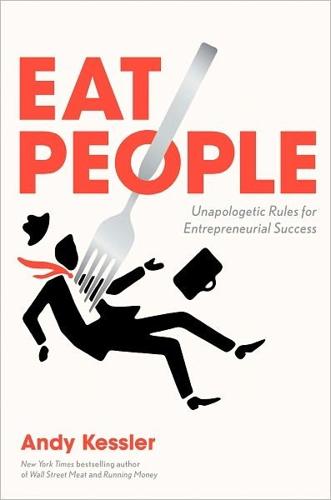
Eat People: And Other Unapologetic Rules for Game-Changing Entrepreneurs
by
Andy Kessler
Published 1 Feb 2011
Transitioning from an agricultural to an industrial economy meant automating farming—tractors, combines, better seeds, praying for rain—and it worked. Down from maybe 80 percent of American colonists working on farms, today just 3 percent of the U.S. population feeds the rest of us—so you and I don’t have to get up at 5:30 in the morning to milk the chickens. That’s progress with a capital P. We got rid of factory jobs, either through automation or by exporting them to China and India. Again, capital P progress, because it’s really hot in those steel mills, from what I’ve been told. I think I saw one in a Tom Cruise movie once. We’re now an economy of service workers at far greater risk of getting paper cuts than losing a limb at the mill.

Move Fast and Break Things: How Facebook, Google, and Amazon Cornered Culture and Undermined Democracy
by
Jonathan Taplin
Published 17 Apr 2017
The notion that a fifty-year-old autoworker replaced by a robot is going to retrain himself as a software coder and apply for work at Google seems to be a pipe dream that only someone as rich and insulated as Marc Andreessen could conceive. But that is not to say that we shouldn’t think about Keynes’s and Andreessen’s vision of a world in which most of us have a lot of leisure time. If Frey and Osborne are right, and 47 percent of jobs may be automated in the next two decades, then we face one of two possible futures. The dystopian future of mass unemployment and psychological alienation leading to deep social unrest is one we have already seen in Blade Runner. The only present remedy is to create millions of low-wage “bullshit jobs”—the writer David Graeber’s term.
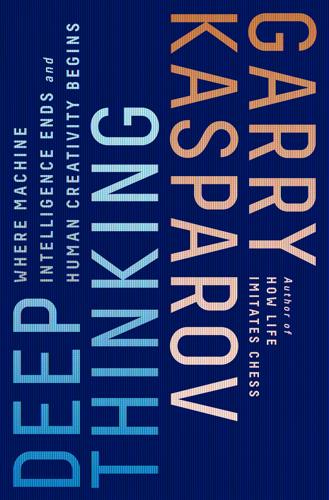
Deep Thinking: Where Machine Intelligence Ends and Human Creativity Begins
by
Garry Kasparov
Published 1 May 2017
The horses and oxen couldn’t write letters to the editor when cars and tractors came along. Unskilled laborers also lacked much of a voice, and were often considered lucky to be freed from their backbreaking toil. So it went over the decades of the twentieth century, with countless jobs lost or transformed by automation. Entire professions disappeared with little time to mourn them. The elevator operators’ union was seventeen thousand strong in 1920, although its ability to paralyze cities with strikes like the one its members staged in New York in September 1945 surely cost them more than a few mourners when automatic push-button elevators began to replace them in the 1950s.
…
It’s a privilege to be able to focus on the negative potential of world-changing breakthroughs like artificial intelligence. As real as these issues may be, we will not solve them unless we keep innovating even more ambitiously, creating solutions and new problems, and yet more solutions, as we always have. The United States needs to replace the jobs being lost to automation, but it needs new jobs to build the future instead of trying to bring back jobs from the past. It can be done and it has been done before. Here I’m not referring to the 30 percent of Americans who lived on farms in 1920, down below 2 percent nearly a century later, but to a much more recent retooling.
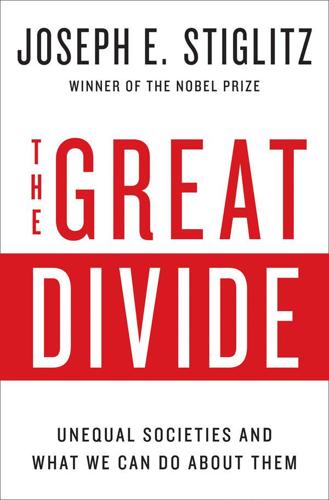
The Great Divide: Unequal Societies and What We Can Do About Them
by
Joseph E. Stiglitz
Published 15 Mar 2015
The Associated Press organized a sobering session on technology and unemployment: Can countries (particularly in the developed world) create new jobs—especially good jobs—in the face of modern technology that has replaced workers with robots and other machines in any task that can be routinized? Overall, the private sector in Europe and America has been unable to create many good jobs since the beginning of the current century. Even in China and other parts of the world with growing manufacturing sectors, productivity improvements—often related to job-killing automated processes—account for most of the growth in output. Those suffering the most are the young, whose life prospects will be badly hurt by the extended periods of unemployment that they face today. But most of those in Davos put aside these problems to celebrate the euro’s survival. The dominant note was one of complacency—or even optimism.

These Strange New Minds: How AI Learned to Talk and What It Means
by
Christopher Summerfield
Published 11 Mar 2025
As AI systems start to replace human labour, revenues that were previously paid to workers will be diverted into the pockets of corporate shareholders. This prominently includes everyone owning a piece of the tech industry, whose value continues to climb as AI insinuates itself relentlessly into every corner of our lives.[*3] Without significant structural changes to the economy, people whose jobs are automated will be left depending on the largesse of the state. This resentment is easily exploited by populist parties that are opposed to civil rights and eager to undermine democracy. The anthropologist Yuval Noah Harari has added that ‘AI favours tyranny’ – that new tools for automated surveillance and population control will be eagerly adopted by authoritarian regimes, strengthening their iron grasp on the citizenry and tipping the political scales against those advocating for liberty, equality, and democracy.[*4] The Chinese authorities are already using AI to track their citizens’ every move and quell dissent as it wells up, and other regimes are looking on with interest.

The Survival of the City: Human Flourishing in an Age of Isolation
by
Edward Glaeser
and
David Cutler
Published 14 Sep 2021
This chapter chronicles how job-creating innovations, like the crowded factory, have needed new investments in health, and how new investments in health have enabled new modes of employment to prosper. Looking forward, an economy without widespread joblessness requires new forms of interactive employment to replace the rote jobs that have been automated away, but those jobs will only exist if we eliminate the risk of plague. It is not just our health but our economic future that depends on reducing the risk of pandemic. Unfortunately, the entrepreneurship that creates opportunity has been declining for decades, partly because governments enact regulations that favor insiders over outsiders.
…
The rise of autonomous vehicles puts America’s 1.5 million trucking-related jobs at risk, but we’d bet that plumbers and electricians will survive. A lot of buildings—even high-rises—can be built in a capital-intensive factory and then plopped in place quickly with a minimum amount of human sweat, so demand for construction labor may fall—though not dry up entirely. A giant third group of jobs that seems safer from automation depends on the pleasure of personal contact. A good barista excels at the task of producing beautiful foam, perhaps in the shape of a heart, but that bit of artistry has far more value because one enjoys seeing it done live. The warm glow of knowing that another person put in effort for your pleasure is enough to justify the cost.

Magical Urbanism: Latinos Reinvent the US City
by
Mike Davis
Published 27 Aug 2001
MAGICAL URBANISM 106 recent studies have confirmed the negUgible dividends earned from Ufetimes of toil in New York's sweated trades: "It takes 15 years for Mexicans and 25 years for Puerto Ricans [in City] to have statistically significant There is surprisingly little wage New York gains." academic disagreement about the causes of this socio-economic disaster. Puerto Rican immigrants in the 1950s (like many African-American migrants from the South) were shunted into precisely those traditional urban manufacturing jobs that were massively automated, suburbanized or exported overseas after 1960. Boricuans were, so to speak, standing on the track bend at when Industrial Restructuring came around the 100 miles per hour. "The nine cities where the majority of US Puerto Ricans lived in 1980 lost almost one million manufac- turing jobs between 1963 and 1982, representing a 44 percent loss of manufacturing employment."

Makers
by
Chris Anderson
Published 1 Oct 2012
It got what amounts to a huge subsidy in its portion of the old NUMMI plant, which it was able to buy for just $43 million, complete with lots of functioning equipment. As a relatively new car company (it was founded in 2003), it didn’t have to inherit the pension obligations and labor unions of the Detroit giants, nor did it face pressure to preserve jobs rather than automate. There’s the small matter of the half-billion-dollar federal loan it got in 2010. And let’s face it: it could still fail. It’s trying to break into the car industry with an expensive vehicle using bleeding-edge pure electric technology in a world where even the giants are having trouble getting people to pay extra for decade-old hybrid technology.

Cogs and Monsters: What Economics Is, and What It Should Be
by
Diane Coyle
Published 11 Oct 2021
Whatever we mean by the economy growing, by things getting better, the gains will have to be more evenly shared than in the recent past. In particular, the new technologies transforming life will need to bring wider benefits than they have so far. An economy of tech millionaires or billionaires and gig workers, with middle-income jobs undercut by automation will not be politically sustainable. Biotech or medical innovations from 3D printed organs to personalised cancer treatments cannot be the preserve of only the super-rich. The tech-driven inequalities had already disrupted politics in many countries by destabilising the solid middle. Perhaps the shock induced by Covid19 can ensure that lasting change comes about, or—melodramatic as it feels to write this—we may be in for a revolutionary period.
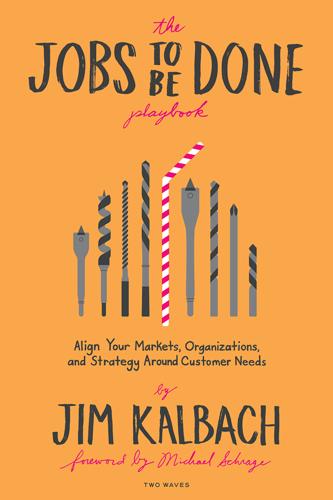
The Jobs to Be Done Playbook: Align Your Markets, Organization, and Strategy Around Customer Needs
by
Jim Kalbach
Published 6 Apr 2020
Consider the examples in Table 6.1, which takes tool-centric statements and makes them jobs-centric statements. Include information about the job that will be completed and the benefit that users will see. What are your customers’ desired outcomes? How will they measure success? TABLE 6.1 EXAMPLES OF JOB-CENTRIC MESSAGES DURING ONBOARDING SOLUTION-CENTERED MESSAGE JOB-CENTERED MESSAGE Automate filling out expense forms with our auto-scan recognition software. Save time submitting expense reports using auto-scan. Click on “Total” to add up your expenses with different exchange rates. Improve the accuracy of your expense reports with automatic updates of the most current exchange rates.

Fire in the Valley: The Birth and Death of the Personal Computer
by
Michael Swaine
and
Paul Freiberger
Published 19 Oct 2014
He moved the Mac team offsite, pulled in top-notch engineers and programmers, drove them to work long hours, criticized them as much as he praised them, and told them that they were the future of the company and everyone else at Apple was the past. In 1981, Apple spent $21 million on new product research and development, three times what it had spent the year before. Jobs toured the world’s leading automated factories and then commissioned a new factory for Apple in Fremont, California, to build the Macintosh. “We have designed the machine to build the machine,” Jobs said. “The manufacturing of the Macintosh has been designed from day one to be highly automated.” Jobs and others at Apple wanted to see the company’s rapid growth continue and establish Apple as the technology leader, for a number of reasons—the main one being the likelihood of a late-1981 entry into the personal-computer market by a company called International Business Machines Corporation (IBM)

Open: The Story of Human Progress
by
Johan Norberg
Published 14 Sep 2020
There is a case to be made that technology will be even more disruptive to old industries in the future, but the same technology gives us better tools than ever to facilitate transitions. With new educational platforms online, the conditions should be greater than ever to constantly upgrade the skills of the workforce. In the private sector we now see the creation of custom-built software, like Accenture’s Job Buddy, which tells employees about the risk that their jobs will be automated and points them in the direction of the training they would benefit from. This helps employees to future-proof themselves by constantly upgrading their skills for a changing labour market. Governments should be more like a job buddy than a welfare buddy. Instead of focusing all efforts on an education in the beginning of life, which will in many ways soon be obsolete, it should make constant retraining easily accessible.

PostGIS in Action
by
Regina O. Obe
and
Leo S. Hsu
Published 2 May 2015

Who Owns the Future?
by
Jaron Lanier
Published 6 May 2013
It’s how we’ll conceive of whatever can’t be automated at a given time. Even if there are new demands for people to perform new tasks in support of what we perceive as automation, we might apply antihuman values that define the new roles as not being “genuine work.” Maybe people will be expected to “share” instead. So the right question is “How many jobs might be lost to automation if we think about automation the wrong way?” One of the strange, tragic aspects of our technological moment is that the most celebrated information gadgets, like our phones and tablets, are made by hand in gigantic factories, mostly in southern China, and largely by people who work insanely hard in worrisome environments.
…
In that case it would cost real money to use the resources needed to start an occult Wall Street scheme or to dangle “free” Internet bait in the hopes of trapping a population into paying for visibility. The benefit of a general “spy data tax” would be a lessening of “scammy” entrepreneurship and a corresponding increase in the funding of genuinely productive new ventures. Meanwhile, as more and more jobs are lost to automation, social welfare funds would burst with new revenues to cope with the deluge. In the current American climate, what I just said would be called “fighting words.” Most Americans would probably fear that such a policy would promote unlimited growth of government bureaucracy, and that would ultimately lead to a loss of both liberty and innovation.

The Glass Cage: Automation and Us
by
Nicholas Carr
Published 28 Sep 2014
The ‘skill’ can be built into the machine.”36 IT MAY seem as though a factory worker operating a noisy industrial machine has little in common with a highly educated professional entering esoteric information through a touchscreen or keyboard in a quiet office. But in both cases, we see a person sharing a job with an automated system—with another party. And, as Bright’s work and subsequent studies of automation make clear, the sophistication of the system, whether it operates mechanically or digitally, determines how roles and responsibilities are divided and, in turn, the set of skills each party is called upon to exercise.

The Clock Mirage: Our Myth of Measured Time
by
Joseph Mazur
Published 20 Apr 2020
For a large company, that’s a lot of money saved for the owners. Unlike money, which could accumulate exponentially, time accumulates linearly. My summer job at my uncle’s silkscreen shop that lasted just one week showed me just how inhumanly boring a job can be. Assembly-line jobs in America these days are rare. Almost every manufacturing job is now automated, with reliance on some human watching for tainted or damaged products that inevitably escape accepted standards of assembly. PART V LIVING RHYTHMS Imagine the body as a Rube Goldberg machine, with thousands of tiny devices whose cogs, baskets, and springs must align correctly in a moment for life to proceed.
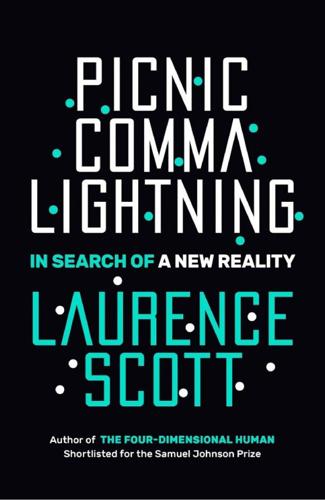
Picnic Comma Lightning: In Search of a New Reality
by
Laurence Scott
Published 11 Jul 2018
If a bottle of shampoo ‘comes alive’ in our hands, it will probably not help us to think of its provenance: the palm oil tucked shyly in its ingredient list, the devastated Indonesian rainforests, the deep, humiliating gaze of an orangutan, the supermarket worker on a zero-hours contract, factory jobs lost to automation, the parental megacorp of the shampoo company’s range of dynamic investment opportunities. We might see the shampoo bottle’s future too, fearing for the millionth time the great hoax of recycling. We see it bobbing endlessly in the South Pacific. Don’t we have exactly the opposite problem to Sartre’s brooding existential antihero?
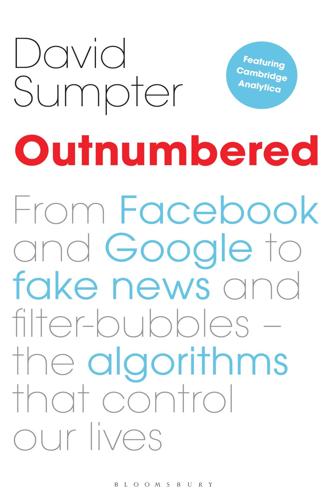
Outnumbered: From Facebook and Google to Fake News and Filter-Bubbles – the Algorithms That Control Our Lives
by
David Sumpter
Published 18 Jun 2018

Live Work Work Work Die: A Journey Into the Savage Heart of Silicon Valley
by
Corey Pein
Published 23 Apr 2018
Jacobstein cited a recent study claiming that within the next twenty years, 47 percent of U.S. jobs would be subject to some kind of automation. Certain professions, he noted, have obstinately resisted the trend—notably lawyers, teachers, and doctors. “Assuming zero new technology breakthroughs, professional work—white-collar work—is ripe for disruption,” Jacobstein said. “White-collar workers often have the reaction, ‘Well, all jobs can be automated—except ours, of course.’ But they’re not immune either.” Doctors, for instance, might be put out by the development of handheld medical devices that can diagnose diseases with a wave of the hand, he said. Such devices would no doubt first be deployed “in places with low guild protection, like Africa.”

Enlightenment Now: The Case for Reason, Science, Humanism, and Progress
by
Steven Pinker
Published 13 Feb 2018
As the AI expert Stuart Russell puts it, “No one in civil engineering talks about ‘building bridges that don’t fall down.’ They just call it ‘building bridges.’” Likewise, he notes, AI that is beneficial rather than dangerous is simply AI.31 Artificial intelligence, to be sure, poses the more mundane challenge of what to do about the people whose jobs are eliminated by automation. But the jobs won’t be eliminated that quickly. The observation of a 1965 report from NASA still holds: “Man is the lowest-cost, 150-pound, nonlinear, all-purpose computer system which can be mass-produced by unskilled labor.”32 Driving a car is an easier engineering problem than unloading a dishwasher, running an errand, or changing a diaper, and at the time of this writing we’re still not ready to loose self-driving cars on city streets.33 Until the day when battalions of robots are inoculating children and building schools in the developing world, or for that matter building infrastructure and caring for the aged in ours, there will be plenty of work to be done.

Human Compatible: Artificial Intelligence and the Problem of Control
by
Stuart Russell
Published 7 Oct 2019
FIGURE 9: Economic production and real median wages in the United States since 1947. (Data from the Bureau of Labor Statistics.) Which occupations are about to decline as new, AI-based technology arrives? The prime example cited in the media is that of driving. In the United States there are about 3.5 million truck drivers; many of these jobs would be vulnerable to automation. Amazon, among other companies, is already using self-driving trucks for freight haulage on interstate freeways, albeit currently with human backup drivers.24 It seems very likely that the long-haul part of each truck journey will soon be autonomous, while humans, for the time being, will handle city traffic, pickup, and delivery.
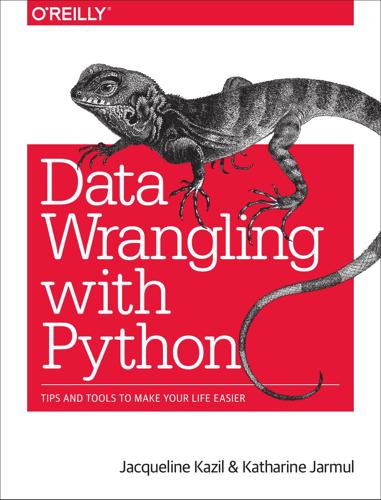
Data Wrangling With Python: Tips and Tools to Make Your Life Easier
by
Jacqueline Kazil
Published 4 Feb 2016
If your code doesn’t need to run on many machines, if you have one server, or if your tasks aren’t event-driven (or can be run at the same time daily), simple automation will work. One major tenet of development is to choose the most clear and simple path. Automation is no different! If you can easily use a cron job to automate your tasks, by no means should you waste time overengineering it or making it any more complicated. As we review simple automation, we’ll cover the built-in cron (a Unix-based system task manager) and various web interfaces to give your team easy access to the scripts you’ve written. These represent simple automation solutions which don’t require your direct involvement.

Tightrope: Americans Reaching for Hope
by
Nicholas D. Kristof
and
Sheryl Wudunn
Published 14 Jan 2020
While drugs get more attention, the CDC calculates that excessive alcohol kills more Americans each year (88,000) than drug overdoses do (68,000). Why did deaths of despair claim Farlan, Zealan, Nathan, Rogena and so many others? We see four important factors. First, good union jobs disappeared, because of technology, automation, trade, political pressure on unions and a general redistribution of power toward the wealthy. As well-paying jobs for the less educated disappeared, the self-esteem of workers who couldn’t find new jobs plummeted and some obtained prescription painkillers for health conditions and soon abused the medication.
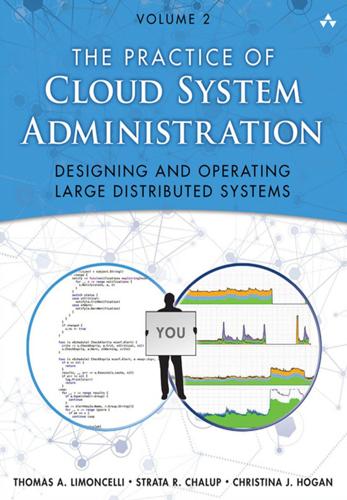
The Practice of Cloud System Administration: DevOps and SRE Practices for Web Services, Volume 2
by
Thomas A. Limoncelli
,
Strata R. Chalup
and
Christina J. Hogan
Published 27 Aug 2014
Then a high-power paint sprayer was invented to improve this process. The same person could do a better job, with less wasted paint, in less time. This technology also reduced the amount of skill required, thereby lowering the barrier to entry for this job. However, there was still a car panel painter job. The process had not been automated, but there was a better tool for the job. In the 1970s, auto manufacturing plants automated the car painting process. They deployed robotic painting systems and the job of car panel painter was eliminated. Employees now maintain the robotic painting system, or automation, which is a very different job from painting metal panels. 12.2.2 Example: Machine Configuration In IT we are making a similar transformation.
…
Therefore it is important that (for example) the Ubuntu team cannot make changes to the Mac team’s files, and vice versa. Doing so would, essentially, give the Ubuntu team access to all the Macs. This is implemented through a simple but powerful permission system. * * * 12.9 Summary The majority of a system administrator’s job should focus on automating SA tasks. A cloud computing system administrator’s goal should be to spend less than half the time doing manual operational work. Tool building optimizes the work done by a system administrator and is an important step on the way to automation. Automation means replacing a human task with one done by software, often working in partnership with a person.
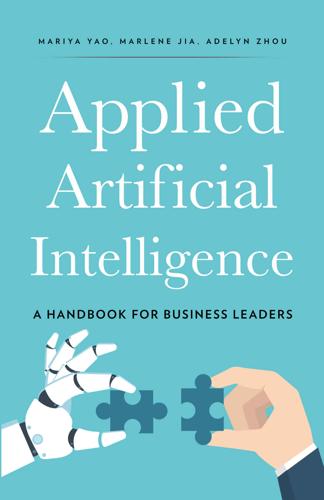
Applied Artificial Intelligence: A Handbook for Business Leaders
by
Mariya Yao
,
Adelyn Zhou
and
Marlene Jia
Published 1 Jun 2018
Allay Fears of Sudden Job Loss Given the negative media hype surrounding AI, your employees understandably have concerns over their job security. You can allay these fears and promote a healthy work environment in which both humans and machines cooperate and thrive. Research finds that while 45 percent of tasks are automatable, only five percent of overall jobs have been supplanted by automation.(50) AI systems largely handle individual tasks, not whole jobs. High costs, legal regulations, and social resistance to AI all hinder the progress of technology adoption. With the rise of autonomous vehicles, many believe that the jobs of America’s 1.7 million truck drivers are in imminent danger.
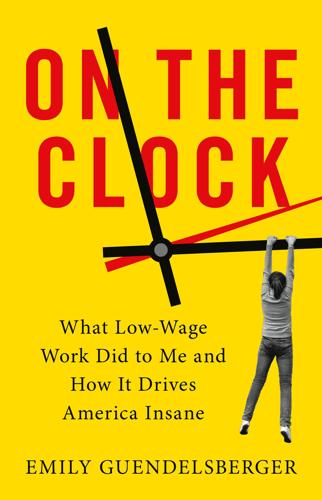
On the Clock: What Low-Wage Work Did to Me and How It Drives America Insane
by
Emily Guendelsberger
Published 15 Jul 2019
Hare Karoshi, National Defense Counsel for Victims of Karoshi On tech, automation, and the future of work The Second Machine Age: Work, Progress, and Prosperity in a Time of Brilliant Technologies, Erik Brynjolfsson and Andrew McAfee The Glass Cage: Automation and Us, Nicholas Carr Automate This: How Algorithms Came to Rule Our World, Christopher Steiner Algorithms to Live By: The Computer Science of Human Decisions, Brian Christian and Tom Griffiths Mindless: Why Smarter Machines Are Making Dumber Humans, Simon Head Rise of the Robots: Technology and the Threat of a Jobless Future, Martin Ford The Robots Are Coming!: The Future of Jobs in the Age of Automation, Andres Oppenheimer and Ezra E. Fitz The Mythology of Work: How Capitalism Persists Despite Itself, Peter Fleming Live Work Work Work Die: A Journey into the Savage Heart of Silicon Valley, Corey Pein Confronting Dystopia: The New Technological Revolution and the Future of Work, Eva Paus On economics An Inquiry into the Nature and Causes of the Wealth of Nations, Adam Smith Capital, Karl Marx “Economic Possibilities for Our Grandchildren” (essay), John Maynard Keynes The Great Risk Shift: The New Economic Insecurity and the Decline of the American Dream, Jacob S.

Two Nations, Indivisible: A History of Inequality in America: A History of Inequality in America
by
Jamie Bronstein
Published 29 Oct 2016
Over the past few decades, even investment in aspects of our common life once considered crucial for advancement of the economy—research universities, for example, and infrastructure—have been allowed to go begging. Fears about the slowing of the economy in general are met with calls for the education of the workforce, as though that, rather than increasing consumer demand, will guarantee that every individual somehow has a high-paying job. In fact, automation has caused the hollowing out of the wage structure; the highest-paid people continue to be highly paid, while middle- and low-skilled workers conduct a race to the bottom for lower-skilled jobs. Without some degree of redistribution and the provision of more public goods “such as food, housing, education and health care that are necessary for a modern life to go well,” there is no guarantee that economic output will have any relationship to well-being.72 The path of the Patient Protection and Affordable Care Act (ACA, 2010) provides a good illustration of the problems caused by divergent partisan ideologies and powerful framing narratives.
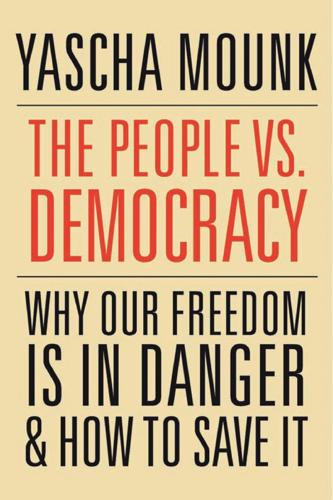
The People vs. Democracy: Why Our Freedom Is in Danger and How to Save It
by
Yascha Mounk
Published 15 Feb 2018
The swing toward Trump, Kolko shows, was much stronger “where unemployment was higher, job growth was slower and earnings were lower.” “Economic anxiety,” he concludes, “is about the future, not just the present.”21 Ben Delsman comes to much the same conclusion by testing whether regions in which a high percentage of jobs are subject to automation are more susceptible to populists. His finding is stark: twenty-one of the twenty-two states that are most prone to automation voted for Donald Trump; meanwhile, fifteen out of the fifteen states that are least prone voted for Hillary Clinton. On average, a one percentage point increase in a state’s vulnerability to automation was associated with a three point increase in Trump’s vote share.22 All of this suggests that the link between economic performance and political stability is rather more complicated than is often believed.

The Long History of the Future: Why Tomorrow's Technology Still Isn't Here
by
Nicole Kobie
Published 3 Jul 2024
We can programme robots to do anything, but we still have to tell them what to do – indeed, the latest models of humanoid robots are avatars that are remote-controlled from a distance by a human operator. And though sci-fi films spark dystopian nightmares and (as with AI in the previous chapter) fears of lost jobs, the reality of automated androids is closer to the Knightscope K5, a security robot that rolled into a fountain at a Washington, DC office in 2017 and drowned. Rest in peace, Steve the robo-guard. We’ll never forget you. * * * A long 89 years before Steve’s damp demise, William Richards had a problem. A very well-known public figure – often reported as being the Duke of York (later King George VI), though others say it was merely a renowned scientist – was booked to speak at the opening of the 1928 Exhibition of the Society of Model Engineers that Richards was organising in London, but cancelled at the last minute.

January Fifteenth
by
Rachel Swirsky
Published 13 Jun 2022
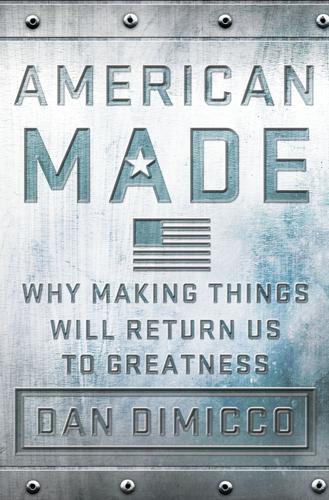
American Made: Why Making Things Will Return Us to Greatness
by
Dan Dimicco
Published 3 Mar 2015
They’re producing nearly 820 million tons of steel per year, and they’re losing money. That’s how out of control it is. Yet China continues to overbuild because Beijing wants to maintain the jobs that go into constructing the steel plants, and eventually maintain the smaller number of jobs running these highly automated facilities. Yet we can’t sell steel to China. The barriers to entry are too high. Market forces aren’t allowed to work. We can’t build a steel mill in China, although China can certainly build steel mills here. If you don’t believe me, ask Lakshmi Mittal, the chairman, CEO, and principal owner of ArcelorMittal, the world’s biggest steel company.
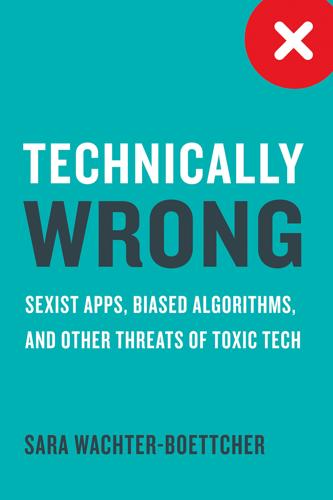
Technically Wrong: Sexist Apps, Biased Algorithms, and Other Threats of Toxic Tech
by
Sara Wachter-Boettcher
Published 9 Oct 2017

Future Crimes: Everything Is Connected, Everyone Is Vulnerable and What We Can Do About It
by
Marc Goodman
Published 24 Feb 2015
Biometric tools will have profound implications not just for undercover cops but for witness relocation programs as well. Anybody who has had a prior life that he wishes to conceal for personal or professional reasons may find it impossible moving forward, and it is not just your physical attributes that may betray you—so might your imperceptible behaviors. On Your Best Behavior A lot of jobs today are being automated; what happens when you extend that concept to very important areas of society like law enforcement? What happens if you start controlling the behavior of criminals or people in general with software-running machines? Those questions, they look like they’re sci-fi but they’re not. JOSÉ PADILHA, BRAZILIAN FILM DIRECTOR When most people think of biometrics, they commonly focus on the measurement of anatomical traits such as our fingers, faces, hands, or eyes.
…
Momentum Machines’ burger bot can crank out 360 perfectly cooked-to-order hamburgers per hour, each with the precise toppings (lettuce, ketchup, onions) requested by the customer. A 2013 study by Oxford University on the future of work conducted a detailed analysis of over seven hundred occupations and concluded that 47 percent of U.S. employees are at high risk of losing their jobs to robotic automation as soon as 2023. Those working in the transportation field (taxi drivers, bus drivers, long-haul truck drivers, FedEx drivers, pizza delivery drivers) face particular risk, with up to a 90 percent certainty that their jobs will be replaced by autonomous vehicles. But it’s not just low-level positions that are at risk.

Year's Best SF 15
by
David G. Hartwell; Kathryn Cramer
Published 15 Aug 2010
Salla had fallen from the airship mast and drowned in the waters of Lake Michigan, others had broken their skulls when masonry had fallen on them from improperly lashed cranes, or been crushed under piles of girders that slipped from the pincers of poorly programmed automata. And it wasn’t just the dead men buried in paupers’ graves south of the park that had been affected. Even now, in the city itself, striking workers agitated for better working conditions, or for assurances that they would not lose their jobs to automation. The motto of the Columbian Exhibition was “Not Matter, But Mind; Not Things, But Men,” but Chabane could not help but wonder whether such noble sentiments were any salve to men who had been replaced at their posts by “things” in recent months and years. He knew it came as no comfort to those men who had died in automata-related accidents.

The Rise of the Network Society
by
Manuel Castells
Published 31 Aug 1996
Thus, new information technology is redefining work processes, and workers, and therefore employment and occupational structure. While a substantial number of jobs are being upgraded in skills, and sometimes in wages and working conditions in the most dynamic sectors, a large number of jobs are being phased out by automation in both manufacturing and services. These are generally jobs that are not skilled enough to escape to automation but are expensive enough to be worth the investment in technology to replace them. Increasing educational qualifications, either general or specialized, required in the reskilled positions of the occupational structure further segregate the labor force on the basis of education, itself a highly segregated system because it roughly corresponds institutionally to a segregated residential structure.
…
Yet the prophets of mass unemployment, led by the honorable Club of Rome, argue that such calculations are based on a different historical experience that underestimates the radically new impacts of technologies, whose effects are universal and pervasive because they relate to information processing. Thus, so the argument goes, if manufacturing jobs go the way farmers did, there will not be enough service jobs to replace them because service jobs themselves are being rapidly automated and phased out. They predicted that because this trend was accelerating in the 1990s, mass unemployment would follow.77 The obvious consequence of this analysis is that our societies would have to choose between massive unemployment, with its corollary, the sharp division of society between the employed and the unemployed/occasional workers, or else a redefinition of work and employment, opening the way to a full restructuring of social organization and cultural values.

A New History of the Future in 100 Objects: A Fiction
by
Adrian Hon
Published 5 Oct 2020

The Alternative: How to Build a Just Economy
by
Nick Romeo
Published 15 Jan 2024
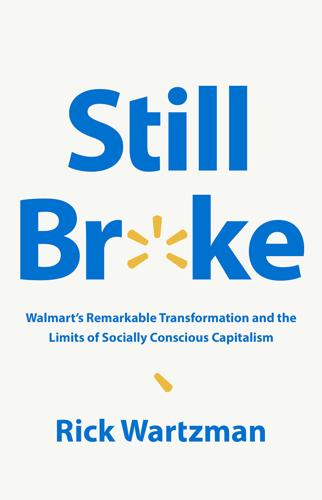
Still Broke: Walmart's Remarkable Transformation and the Limits of Socially Conscious Capitalism
by
Rick Wartzman
Published 15 Nov 2022

New Laws of Robotics: Defending Human Expertise in the Age of AI
by
Frank Pasquale
Published 14 May 2020

Kindle Formatting: The Complete Guide to Formatting Books for the Amazon Kindle
by
Joshua Tallent
Published 1 Apr 2009

Money: Vintage Minis
by
Yuval Noah Harari
Published 5 Apr 2018
Soon enough many other teams adopted the same algorithmic approach, and since the Yankees and Red Sox could pay far more for both baseball players and computer software, low-budget teams such as the Oakland Athletics ended up having an even smaller chance of beating the system than before. In 2004 Professor Frank Levy from MIT and Professor Richard Murnane from Harvard published a thorough research of the job market, listing those professions most likely to undergo automation. Truck driving was given as an example of a job that could not possibly be automated in the foreseeable future. It is hard to imagine, they wrote, that algorithms could safely drive trucks on a busy road. A mere ten years later Google and Tesla can not only imagine this, but are actually making it happen. In fact, as time goes by it becomes easier and easier to replace humans with computer algorithms, not merely because the algorithms are getting smarter, but also because humans are professionalising.

After Europe
by
Ivan Krastev
Published 7 May 2017
The fear of a barbarian invasion coexists with a fear of a robot-driven transformation of the workplace. In the technological dystopia that we see dawning, there will be no jobs left for human beings. According to a recent UK government study, over the next thirty years, 43 percent of current jobs in the EU will be automated. How society will function when work is a privilege and not a right or duty is not a theoretical question. Y Combinator, a big start-up incubator, has already announced it will conduct a basic income experiment with roughly one hundred families in Oakland, California, giving them between $1,000 and $2,000 a month for up to a year, no strings attached, to see what people do when they do not need to work to earn a living.

The System: Who Rigged It, How We Fix It
by
Robert B. Reich
Published 24 Mar 2020

The Age of Surveillance Capitalism
by
Shoshana Zuboff
Published 15 Jan 2019
Most companies opted for the smart machine over smart people, producing a well-documented pattern that favors substituting machines and their algorithms for human contributors in a wide range of jobs. By now, these include many occupations far from the factory floor.13 This results in what economists call “job polarization,” which features some high-skill jobs and other low-skill jobs, with automation displacing most of the jobs that were once “in the middle.”14 And although some business leaders, economists, and technologists describe these developments as necessary and inevitable consequences of computer-based technologies, research shows that the division of learning in the economic domain reflects the strength of neoliberal ideology, politics, culture, and institutional patterns.
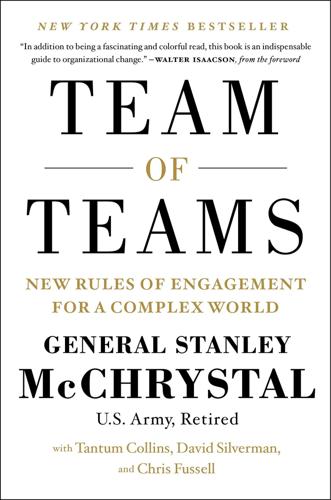
Team of Teams: New Rules of Engagement for a Complex World
by
General Stanley McChrystal
,
Tantum Collins
,
David Silverman
and
Chris Fussell
Published 11 May 2015
The “scientific management” model, by contrast, was described by one of Taylor’s disciples as resting “primarily upon two important elements”: 1st: Absolutely rigid and inflexible standards throughout your establishment. 2nd: That each employee of your establishment should receive every day clear-cut, definite instructions as to just what he is to do and how he is to do it, and these instructions should be exactly carried out, whether they are right or wrong. Today, even the most clockwork of tasks—like factory floor labor and other mechanical tasks—can benefit from some degree of innovation and creative thinking. The less people’s jobs can be automated, the more you need them to take initiative, innovate, and think creatively. But despite the evidence of all these studies, few managers are willing to take this leap: today, only 20 percent of workers feel empowered and act resourcefully; most feel disenfranchised or locked down. • • • With rising interdependence and unpredictability, the costs of micromanagement are increasing.

Extreme Money: Masters of the Universe and the Cult of Risk
by
Satyajit Das
Published 14 Oct 2011
Investors relied on the rating agencies, who relied on banks, brokers, and various third parties to ensure the quality of the loans. Banks and lenders relied on the rating agencies. The brokers relied on the banks that were buying their loans and the investors buying the securities. Everyone relied on someone else to do their job. The automated models for approving mortgages and rating models for evaluating the quality of ABSs relied on historical data that ignored changes in the mortgage market, especially the deteriorating quality of the loans. They failed to grasp L.P. Hartley’s observation in his novel The Go-Between: “The past is another country; they do things differently there.”

The Rich and the Rest of Us
by
Tavis Smiley
Published 15 Feb 2012

The Future We Choose: Surviving the Climate Crisis
by
Christiana Figueres
and
Tom Rivett-Carnac
Published 25 Feb 2020
DeepMind, https://deepmind.com/. 77. Rupert Neate, “Richest 1% Own Half the World’s Wealth, Study Finds,” Guardian (U.S. edition), November 14, 2017, https://www.theguardian.com/inequality/2017/nov/14/worlds-richest-wealth-credit-suisse. 78. Amy Sterling, “Millions of Jobs Have Been Lost to Automation. Economists Weigh In on What to Do About It,” Forbes, June 15, 2019, https://www.forbes.com/sites/amysterling/2019/06/15/automated-future/. 79. Trading Economics, “Brazil—Employment in Agriculture (% of Total Employment),” https://tradingeconomics.com/brazil/employment-in-agriculture-percent-of-total-employment-wb-data.html. 80.
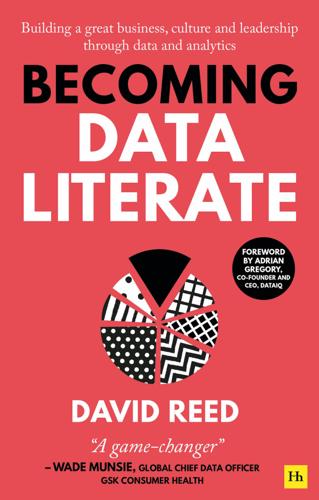
Becoming Data Literate: Building a great business, culture and leadership through data and analytics
by
David Reed
Published 31 Aug 2021
As a result, it can be easier for investment to be directed towards other projects coming from departments with which the business is more familiar. Fear of change – humans tend to view change as a threat, so making the case for a data project that might transform processes, replace jobs (as with AI and automation) or even reduce bonuses may struggle to win support. Behind the curve – while awareness of new techniques and tools, from big data through to AI and ML, may appear to be helpful for data investments, it may be too late to catch up by embarking on such projects by the time the C-suite has absorbed the concept.

Superintelligence: Paths, Dangers, Strategies
by
Nick Bostrom
Published 3 Jun 2014
Just as many Muslims and Jews shun food prepared in ways they classify as haram or treif, so there might be groups in the future that eschew products whose manufacture involved unsanctioned use of machine intelligence. What hinges on this? To the extent that cheap machine labor can substitute for human labor, human jobs may disappear. Fears about automation and job loss are of course not new. Concerns about technological unemployment have surfaced periodically, at least since the Industrial Revolution; and quite a few professions have in fact gone the way of the English weavers and textile artisans who in the early nineteenth century united under the banner of the folkloric “General Ludd” to fight against the introduction of mechanized looms.
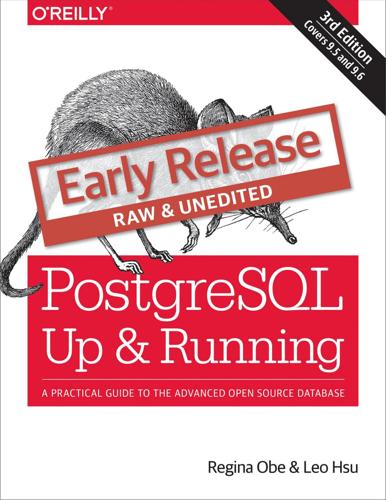
PostgreSQL: Up and Running, 3rd Edition
by
Unknown
You must drop and recreate the view even for the most trivial of changes. Use DROP MATERIALIZED VIEW name_of_view. Annoyingly, you’ll lose all your indexes. You need to run REFRESH MATERIALIZED VIEW to rebuild the cache. PostgreSQL doesn’t perform automatic re-caching of any kind. You need to resort to mechanisms such as crontab, pgAgent jobs, or triggers to automate any kind of refresh. We have an example using triggers in Caching Data with Materialized Views and Statement-Level Triggers. Refreshing materialized views in version 9.3 is a blocking operation, meaning that the view will not be accessible during the refresh process. In version 9.4 you can lift this quarantine by adding the CONCURRENTLY keyword to your REFRESH command, provided that you have established a unique index on your view.

Masters of Deception: The Gang That Ruled Cyberspace
by
Michelle Slatalla
and
Joshua Quittner
Published 15 Jan 1995
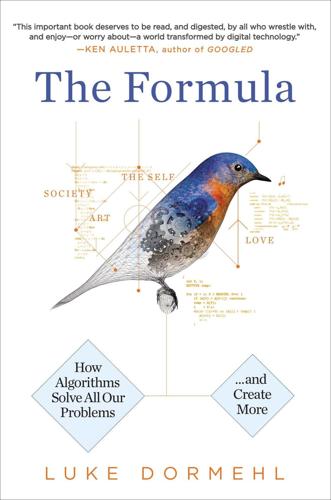
The Formula: How Algorithms Solve All Our Problems-And Create More
by
Luke Dormehl
Published 4 Nov 2014
7 This is a sentiment that is still widely argued—particularly when algorithms take on the kind of humanities-oriented fields I have approached in this book. However, it is also necessary to note that drawing a definite line only capable of being crossed by the “gorgeous messiness of [the] flesh” is a little like Levy and Murnane’s statements about which jobs are safe from automation. Certainly, there are plenty of jobs and other areas of life now carried out by algorithm, which were previously thought to have been the sole domain of humans. Facial recognition, for instance, was once considered to be a trait performable only by a select few higher-performing animals—humans among them.
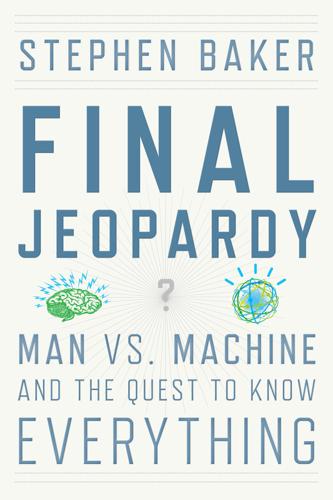
Final Jeopardy: Man vs. Machine and the Quest to Know Everything
by
Stephen Baker
Published 17 Feb 2011

Who Needs the Fed?: What Taylor Swift, Uber, and Robots Tell Us About Money, Credit, and Why We Should Abolish America's Central Bank
by
John Tamny
Published 30 Apr 2016
Robots are credit creation personified. When entrepreneurs borrow dollars with an eye on starting companies, they are borrowing real economic resources. Robots, by their very name, promise cheap resources necessary for entrepreneurialism in abundance. After that, robots will ultimately be the biggest job creators, because aggressive automation will free up humans to do new work by virtue of robots erasing toil that was once essential. Lest we forget, there was a time in American history when just about everyone worked, whether they wanted to or not, on farms, just to survive. Thank goodness technology destroyed lots of agricultural work and freed up Americans to pursue a wide range of vocations off the farm.
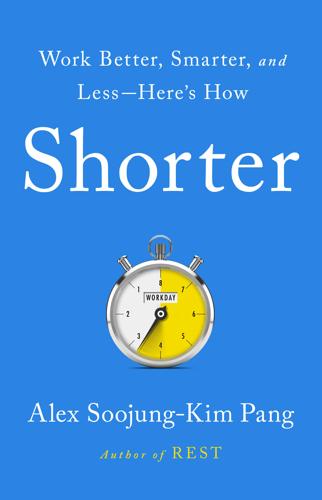
Shorter: Work Better, Smarter, and Less Here's How
by
Alex Soojung-Kim Pang
Published 10 Mar 2020

The Behavioral Investor
by
Daniel Crosby
Published 15 Feb 2018
If the bulk of our processing power is intuitive and not deliberative, it seems reasonable to suggest that our financial decisions will improve as we are better able to tap into that wealth of subconscious wisdom: an idea with strong support in arts and letters. We are a society in love with the idea of intuition. In an age when computers are able to think and learn and jobs are increasingly becoming automated, it is comforting to think that there is something unique and almost ineffable about the abilities of the human family. If you find yourself in the camp that romanticizes unconscious reasoning, it must be said that you are in good company. Steve Jobs’ work was powerfully impacted by his study of non-Western views of rationality and he was particularly moved by what he observed in India.

The Code: Silicon Valley and the Remaking of America
by
Margaret O'Mara
Published 8 Jul 2019
As the market began to surge, the broker-dealers of the NASD realized they needed to move into the twentieth century, not to mention smarten up their slightly seedy reputation. Computerizing the whole system would be the quickest and splashiest way to do it. In 1968, the dealers put out the job of “automating” their system for bid, and the firm that won was a four-year-old Southern California start-up named Bunker Ramo. The firm had defense industry roots: founded by Martin Marietta president George Bunker and TRW vice president Simon Ramo, the firm was dedicated to what the two founders termed “a national need in the application of electronics to information handling.”
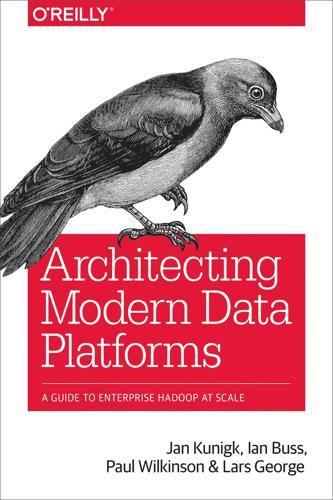
Architecting Modern Data Platforms: A Guide to Enterprise Hadoop at Scale
by
Jan Kunigk
,
Ian Buss
,
Paul Wilkinson
and
Lars George
Published 8 Jan 2019
The typical flow of a transient workload is shown in Figure 17-6 and proceeds as follows: (1) a user submits a workload to the API of the workload automation tool; (2) the framework uses the cloud APIs to spin up an entire cluster for the workload; (3) after the cluster is up and running, the tool submits the jobs in the workload; (4) each job accesses remote cloud storage for its input and output; and (5) finally, the automation tool tears down the cluster. This is relevant to the chapter because these services offer automation of cluster provisioning out of the box and expose APIs to allow job submission automation. You need to assess whether deploying long-lived clusters or running transient clusters is the right choice for your customers. Figure 17-6. Submitting a workload to a transient workload automation tool Unfortunately, covering each of the services in detail is beyond the remit of this chapter, but here are some starting links for further information: Amazon Elastic MapReduce Google Cloud Dataproc Microsoft Azure Batch Cloudera Altus Qubole Data Service Sharing Metadata Services In on-premises deployments it is common for different clusters to make use of shared supporting infrastructure services, such as Active Directory, DNS, NTP, and others.

The New Snobbery
by
David Skelton
Published 28 Jun 2021
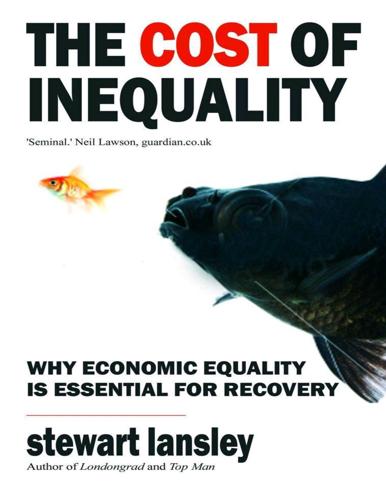
The Cost of Inequality: Why Economic Equality Is Essential for Recovery
by
Stewart Lansley
Published 19 Jan 2012
This shows a growth in the number of jobs at the top tail of the distribution—business executives, senior managers, consultants, data processors, software engineers; a smaller rise in the number of low paid jobs in the lower tail—cleaners, hairdressers, shop assistants and call centre workers; and sharp falls in the number of jobs paying middle wages in 1979—machine setters, foundry labourers, plant and rail signal operatives and a range of routine clerical jobs that have become automated.112 In the immediate post-war decades—across mature economies—there used to be more of a continuum in jobs, wages and opportunities with more intermediate, middleskill, middle-paying work that filled the gap between semi-and unskilled blue-collar and higher paying professional jobs. These provided work for a sizeable group once described by Philip Gould, Labour’s chief pollster under Tony Blair, and one of the leading advisers to the New Labour project, as ‘neither privileged nor deprived’.113 Steadily this group has been shrinking in size, eroded by ‘job polarisation’.114 The result is a country increasingly divided between the ‘privileged’ and the deprived’ with a much smaller group who are ‘neither’.
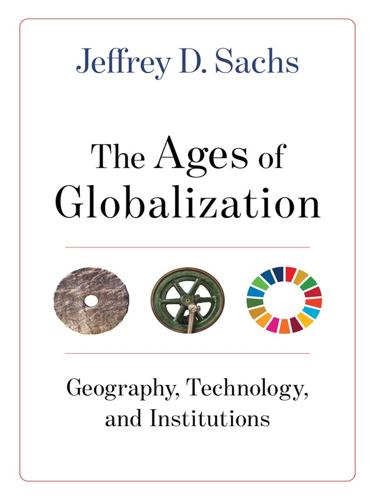
The Ages of Globalization
by
Jeffrey D. Sachs
Published 2 Jun 2020

Lab Rats: How Silicon Valley Made Work Miserable for the Rest of Us
by
Dan Lyons
Published 22 Oct 2018
It’s messy, but that messiness of the analog world was basically what we called privacy. Soon thousands of companies will be gathering profiles on millions of people. Anyone who gets that data can figure out what makes those people tick. We worry a lot, and rightly so, about humans being replaced by machines and about jobs being killed by automation. We also should worry about the humans who will have to work alongside artificial intelligence. The machines determine who gets hired and sometimes (as at Uber) who gets fired. What will this do to humans, as a species? In the journey from analog to digital work, we are being pushed into bargains that we may not fully comprehend.

Uncomfortably Off: Why the Top 10% of Earners Should Care About Inequality
by
Marcos González Hernando
and
Gerry Mitchell
Published 23 May 2023
I don’t think it takes other factors like effort or drive into account”; “Pass”; “Not convinced. But I don’t know enough about it”; “In the long term, benefit receivers lose the incentive to look for work.” However, many also recognised that something like a UBI would be needed, as more jobs become threatened by automation. William, a Merchant (see Chapter 2) and a consultant well placed in the 1%, said on the matter: ‘[UBI is] an interesting concept, more relevant in a world with fewer jobs? But what do you do to keep those people busy, productive and leading fulfilled lives? How do you pay for it? It is becoming somewhat unavoidable, but I’m not sure how we pay for it.’

Naked Economics: Undressing the Dismal Science (Fully Revised and Updated)
by
Charles Wheelan
Published 18 Apr 2010

What to Think About Machines That Think: Today's Leading Thinkers on the Age of Machine Intelligence
by
John Brockman
Published 5 Oct 2015
Smartphones are rapidly becoming indispensable parts of ourselves. The establishment has always questioned the arrival of new media, but adoption of these extensions of ourselves continues apace. A lot of ink has been spilled over the coming conflict between human and computer, be it economic doom, with jobs lost to automation, or military dystopia teeming with drones. Instead, I see a symbiosis developing. And historically, when a new stage of evolution appeared— like eukaryotic cells, or multicellular organisms, or brains—the old system remained and the new system worked with it, not in place of it. This is cause for optimism.

The Crying of Lot 49
by
Thomas Pynchon
Published 1 Jan 1966

The Rise and Fall of Nations: Forces of Change in the Post-Crisis World
by
Ruchir Sharma
Published 5 Jun 2016
This transformation is not about robotic arms providing muscle on the assembly line, they say—it’s about automatons with artificial intelligence capable of “machine learning” and of, one day, designing the assembly line, all powered by the awesome computing capacity of the cloud and big data. In one of the most widely cited forecasts, the Oxford University researchers Carl Benedikt Frey and Michael Osborne predicted in late 2013 that about 47 percent of U.S. jobs are at risk from automation in the next decade or two.12 The most common job for American men is driving, and one forecast has driverless smart cars and trucks replacing them all by 2020. This line of logic parallels many arguments we have heard before. Berkeley’s Machine Intelligence Research Institute has tallied up forecasts for when artificial intelligence (AI) will arrive, and the standard prediction today is that it will be upon us in twenty years.
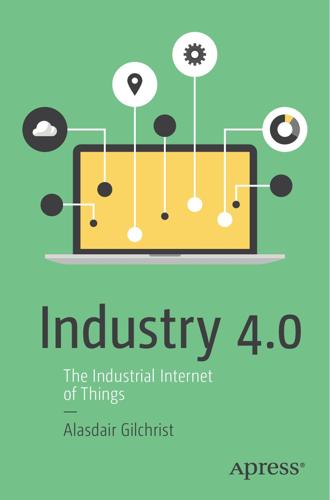
Industry 4.0: The Industrial Internet of Things
by
Alasdair Gilchrist
Published 27 Jun 2016
Process Digitization The benefits of process digitization extend right through the value chain from early rapid development and prototyping of a product, to automated production lines and efficient stock control and dispatch. Automation of production line enables workers to be freed to do other less tedious repetitive jobs, such as supervising automated processes and using their production and product experience in a quality-control capacity. Digitizing processes also saves money as products and stock are more efficiently created and replenished using automatic stock replenishment procedures in ERP. Digitization facilitates a variety of stock handling and inventory controls, such as build-to-stock, build-to-order, or engineer-to-order.

The Sharing Economy: The End of Employment and the Rise of Crowd-Based Capitalism
by
Arun Sundararajan
Published 12 May 2016
In a September 2015 Project Syndicate op-ed, my NYU Stern colleague and Nobel-prize winning economist Michael Spence summarized why: The truth is that the Internet-led process of exploiting under-utilized resources—be they physical and financial capital or human capital and talent—is both unstoppable and accelerating. The long-term benefits consist not just in efficiency and productivity gains (large enough to show up in macro data), but also in much-needed new jobs requiring a broad range of skills. Indeed, those who fear the job-destroying and job-shifting power of automation should look upon the sharing economy and breathe a bit of a sigh of relief.”1 *** The professor in me hopes that the book leaves you with a set of frameworks that give you new perspective, a critical lens through which you develop your own, deeper, understanding of this complex new world.

The Manager’s Path
by
Camille Fournier
Published 7 Mar 2017
I can’t stand watching people waste their energy approaching problems with brute force and spending time rather than thought. And yet, any culture where you are encouraged to work excessive hours all the time is almost certainly doing just that. What is the value in automation if you don’t use it to make your job easier? We engineers automate so that we can focus on the fun stuff—and the fun stuff is the work that uses most of your brain, and it’s not usually something you can do for hours and hours, day after day. So be impatient to figure out the nut of what’s important. As a leader, any time you see something being done that feels inefficient, question it: Why does 3 Tom Christiansen, brian d foy, Larry Wall, and Jon Orwant, Programming Perl, 4th edition (Sebastopol, CA: O’Reilly, 2012). 122 | THE MANAGER’S PATH this feel inefficient to me?

The Impulse Society: America in the Age of Instant Gratification
by
Paul Roberts
Published 1 Sep 2014
In the United States, another six million manufacturing jobs, or a third of the total, went away between 2000 and 2007.11 Granted, we should not sentimentalize manufacturing jobs, which are often monotonous, dangerous, and unpleasant; many a factory worker would likely be glad to upgrade to something better. Nor, obviously, is there anything inherently wrong with automation or even offshoring. They are simply instruments of Schumpeter’s creative destruction: In “destroying” these older jobs in industrialized economies, automation and offshoring are, ideally, “creating” room for the next generation of jobs that will allow those displaced workers to step up the ladder to more productivity, better wages, and higher aspirations. Except that, under the Impulse Society, this is not what has happened. Displaced workers by and large have not stepped up to the next rung on the job ladder—or not in the numbers necessary to maintain the pattern of rising postwar prosperity.
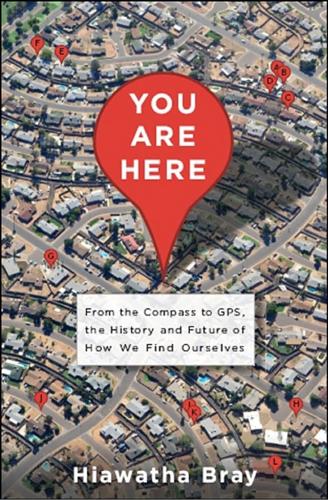
You Are Here: From the Compass to GPS, the History and Future of How We Find Ourselves
by
Hiawatha Bray
Published 31 Mar 2014

Driverless: Intelligent Cars and the Road Ahead
by
Hod Lipson
and
Melba Kurman
Published 22 Sep 2016

Laziness Does Not Exist
by
Devon Price
Published 5 Jan 2021

SAM: One Robot, a Dozen Engineers, and the Race to Revolutionize the Way We Build
by
Jonathan Waldman
Published 7 Jan 2020
Then he’d gotten a job at GM’s fuel-cell lab—where he soon sat near Scott, Tim, and Glenn. In ten years, he’d tested a lot of batteries, examined the frame of the Chevy Volt, and calibrated flowmeters in an old missile silo. When GM offered John the chance to relocate to Detroit, he was willing, but his wife was not. So he found a job at Calvary, another automation company much like the place where Tim and Tom worked before they started PMD.I At Calvary, John spent most of his time working on three huge machines: a four-way-seven-way connector for the big three auto manufacturers; a machine that, with eight hundred thermocouples, made Gorilla Glass for Corning; and, for BorgWarner, the giant producer of turbochargers for Indy cars, a machine that made adjustable cam phasers for modern combustion engines.II In Juárez and Ningbo, John wrenched on these contraptions.

Upgrade
by
Blake Crouch
Published 6 Jul 2022
With the cost of meat having skyrocketed, most restaurants that had closed during the Great Starvation never reopened. We lived in a veritable surveillance state, engaged with screens more than with our loved ones, and the algorithms knew us better than we knew ourselves. Every passing year, more jobs were lost to automation and artificial intelligence. Parts of New York City and most of Miami were underwater, and an island of plastic the size of Iceland was floating in the Indian Ocean. But it wasn’t just humans who’d been affected. There were no more northern white rhinos or South China tigers. The red wolves were gone, along with countless other species.
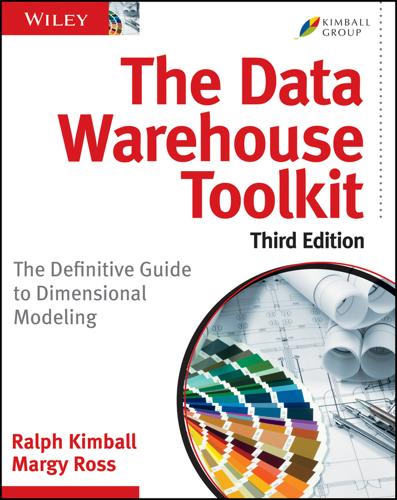
The Data Warehouse Toolkit: The Definitive Guide to Dimensional Modeling
by
Ralph Kimball
and
Margy Ross
Published 30 Jun 2013
See HR (human resources) ch9¶1 hybrid hub-and-spoke Kimball architecture ch1¶112 hybrid techniques, SCDs ch2¶150 SCD type 5 (add mini-dimension and type 1 outrigger) ch2¶150, ch5¶73 SCD type 6 (add type 1 attributes to type 2 dimension) ch2¶153, ch5¶76, ch5¶80, ch5¶81 SCD type 7 (dual type 1 and type 2 dimension) ch2¶156, ch5¶82, ch5¶87 hyperstructured data ch21¶9 I ICD (International Classification of Diseases) ch14¶9 identical conformed dimensions ch4¶80 images, healthcare case study ch14¶44 impact reports ch10¶24 incremental processing, ETL system development ch20¶77 changed dimension rows ch20¶81 dimension attribute changes ch20¶89 dimension table extracts ch20¶78 fact tables ch20¶92 new dimension rows ch20¶81 in-database analytics, big data and ch21¶45 independent data mart architecture ch1¶103, ch1¶104, ch1¶105, ch1¶106 indicators abnormal, fact tables ch8¶97 as textual attributes ch2¶87 dimension tables ch3¶55 junk dimensions and ch6¶42 satisfaction, fact tables ch8¶93 Inmon, Bill ch1¶107 insurance case study ch16¶2 accidents, factless fact tables ch2¶56 accumulating snapshot, complementary policy ch16¶37 bus matrix ch16¶56, ch16¶57 detailed implementation ch16¶58 claim transactions ch16¶60, ch16¶62, ch16¶65, ch16¶69, ch16¶73, ch16¶74 claim accumulating snapshot ch16¶73 junk dimensions and ch16¶61 periodic snapshot ch16¶42, ch16¶82 timespan accumulating snapshot ch16¶78 conformed dimensions ch16¶42 conformed facts ch16¶43 dimensions ch16¶20 audit ch16¶21 degenerate ch16¶30 low cardinality ch16¶31 mini-dimensions ch16¶26 multivalued ch16¶28 SCDs (slowly changing dimensions) ch16¶21 NAICS (North American Industry Classification System) ch16¶29 numeric attributes ch16¶29 pay-in-advance facts ch16¶44 periodic snapshot ch16¶39 policy transactions ch16¶16, ch16¶33 premiums, periodic snapshot ch16¶40 SIC (Standard Industry Classification) ch16¶29 supertype/subtype products ch16¶36, ch16¶47 value chain ch16¶10 integer keys ch3¶116 sequential surrogate keys ch3¶125 integration conformed dimensions ch4¶76 customer data ch8¶100, ch8¶101, ch8¶105 customer dimension conformity ch8¶105 single customer dimension ch8¶101 dimensional modeling myths ch1¶124 value chain ch4¶48 international names/addresses, customer dimension ch8¶26 interviews, Lifecycle business requirements ch17¶48 data-centric ch17¶55 inventory case study ch4¶6 accumulating snapshot ch4¶30 fact tables, enhanced ch4¶18 periodic snapshot ch4¶6 semi-additive facts ch4¶13 transactions ch4¶23 inventory, healthcare case study ch14¶48 invoice transaction fact table ch6¶67 J job scheduler, ETL systems ch19¶166 job scheduling, ETL operation and automation ch20¶116 joins dimension-to-dimension table joins ch2¶213 fact tables, avoiding ch8¶110 many-to-one-to-many ch8¶111 multipass SQL to avoid fact-to-fact joins ch2¶53 journal entries (G/L) ch7¶24 junk dimensions ch2¶99, ch6¶42 airline case study ch12¶31 ETL systems ch19¶116 insurance case study ch16¶62 order management case study ch6¶42 justification for program/project planning ch17¶21 K keys dimension surrogate keys ch2¶69 durable ch2¶72 foreign ch3¶93, ch10¶38 managers key (HR) ch9¶46 natural keys ch2¶72 supernatural keys ch2¶72 smart keys ch3¶127 subtype tables ch10¶47 supernatural ch2¶72 supertype tables ch10¶47 surrogate ch2¶173, ch3¶116, ch3¶119, ch3¶220, ch3¶120, ch11¶29 assigning ch2¶125 degenerate dimensions ch2¶78 ETL system ch19¶8, ch19¶11, ch19¶13, ch19¶27, ch19¶31, ch19¶33, ch19¶34 fact tables ch1¶31, ch1¶34, ch1¶40 generator ch19¶110 lookup pipelining ch20¶63 keywords, skill keywords ch9¶54 bridge ch9¶59 text string ch9¶61 Kimball Dimensional Modeling Techniques.
…
See dimensional modeling Kimball DW/BI architecture ch1¶64 BI applications ch1¶80 ETL (extract, transformation, and load) system ch1¶66 hub-and-spoke hybrid ch1¶112 presentation area ch1¶73 restaurant metaphor ch1¶82 source systems, operational source systems ch1¶65 Kimball Lifecycle ch17¶5 DW/BI initiative and ch17¶6 KPIs (key performance indicators) ch4¶101 L lag calculations ch6¶97 lag/duration facts ch2¶182 late arriving data handler, ETL system ch19¶148 late arriving dimensions ch2¶255 late arriving facts ch2¶209 launch, Lifecycle business requirements ch17¶47 Law of Too ch17¶21 legacy environments, big data management ch21¶22 legacy licenses, ETL system ch19¶33 Lifecycle BI applications ch17¶98, ch17¶101 development ch17¶101, ch17¶104 specification ch17¶98 business requirements ch17¶9, ch17¶33, ch17¶35, ch17¶41 documentation ch17¶57 forum selection ch17¶31 interviews ch17¶48 interviews, data-centric ch17¶48, ch17¶55 launch ch17¶47 prioritization ch17¶60 representatives ch17¶42 team ch17¶68 data ch17¶85 dimensional modeling ch17¶86 ETL design/development ch17¶95 physical design ch17¶87 deployment ch17¶106 growth ch17¶109, ch17¶110 maintenance ch17¶109 pitfalls ch17¶111 products evaluation matrix ch17¶80 market research ch17¶81 protoypes ch17¶83 program/project planning ch17¶8, ch17¶17, ch17¶18, , ch17¶19, ch17¶20, ch17¶21, ch17¶23, ch17¶24, ch17¶26, ch17¶29 business motivation ch17¶19 business sponsor ch17¶18 development ch17¶29 feasibility ch17¶20 justification ch17¶21 planning ch17¶29 readiness assessment ch17¶17 scoping ch17¶21 staffing ch17¶24 technical architecture ch17¶10, ch17¶64, ch17¶69, ch17¶70, ch17¶71, ch17¶73, ch17¶74, ch17¶75, ch17¶76 implementation phases ch17¶74 model creation ch17¶74 plan creation ch17¶77 requirements ch17¶72, ch17¶73 requirements collection ch17¶71 subsystems ch17¶76 task force ch17¶70 lift, promotion ch3¶301 lights-out operations, backup ch19¶304 limited conformed dimensions ch4¶88 lineage analysis ch19¶306 lineage, ETL system ch19¶23, ch19¶195 loading fact tables, incremental ch20¶100 localization ch12¶43 location, geographic location dimension ch11¶52 log scraping, CDC (change data capture) ch19¶46 low cardinality dimensions, insurance case study ch16¶31 low latency data, CRM and ch8¶115 M maintenance, Lifecycle ch17¶19 management ETL systems ch19¶217, ch19¶164 backup system ch19¶171 job scheduler ch19¶166 management best practices, big data ch21¶19, ch21¶22, ch21¶25 analytics ch21¶19 legacy environments ch21¶20 sandbox results ch21¶23 sunsetting and ch21¶25 management hierarchies, drilling up/down ch9¶45 managers, publishing metaphor ch1¶12 many-to-one hierarchies ch3¶62 many-to-one relationships ch6¶29 many-to-one-to-many joins ch8¶111 MapReduce/Hadoop ch21¶14 market growth ch3¶202 master dimensions ch4¶76 MDM (master data management) ch4¶95, ch8¶102, ch19¶18 meaningless keys ch3¶116 measurement, multiple ch2¶197 measure type dimension ch2¶240 healthcare case study ch14¶38 message queue monitoring, CDC (change data capture) ch19¶47 metadata coordinator ch17¶228 metadata repository, ETL system ch19¶215 migration, version migration system, ETL ch19¶187 milestones, accumulating snapshots ch4¶42 mini-dimension and type 1 outrigger (SCD type 5) ch5¶74 mini-dimensions ch10¶28 bridge tables ch10¶33 ETL systems ch19¶118 insurance case study ch16¶25 type 4 SCD ch5¶62 modeling benefits of thinking dimensionally ch1¶126 dimensional ch1¶18, ch1¶44, ch1¶54, ch1¶57, ch1¶58, ch1¶59, ch1¶60, ch1¶115 atomic grain data ch1¶59, ch1¶60 dimension tables ch1¶44, ch1¶47, ch1¶52, ch3¶54 extensibility ch1¶59 myths ch1¶116, ch1¶117, ch1¶119, ch1¶120, ch1¶122, ch1¶125 reports ch1¶61 simplicity in ch1¶58 terminology ch1¶54 multipass SQL, avoiding fact-to-fact table joins ch2¶203 multiple customer dimension, partial conformity ch8¶105 multiple units of measure ch2¶197, ch6¶99 multivalued bridge tables ch2¶219 CRM and ch8¶59 time varying ch2¶219 multivalued dimensions bridge table builder ch19¶144 bridge tables and ch2¶216 CRM and ch8¶59 education case study ch13¶4 financial services case study ch10¶21 healthcare case study ch14¶24 HR (human resources) case study ch9¶54 insurance case study ch16¶28, ch16¶49 weighting factors ch10¶21 myths about dimensional modeling ch1¶115 departmental versus enterprise ch1¶118 integration ch1¶124 predictable use ch1¶121 scalability ch1¶119 summary data ch1¶116 N names ASCII ch8¶26 CRM and, customer dimension ch8¶20, ch8¶34, ch8¶35 Unicode ch8¶27 name-value pairs ch21¶56 naming conventions ch18¶22 natural keys ch2¶72, ch3¶116, ch3¶122, ch5¶83 supernatural keys ch3¶122 NCOA (national change of address) ch8¶103 nodes (hierarchies) ch7¶58 non-additive facts ch2¶38, ch3¶39 non-natural keys ch3¶116 normalization ch1¶109, ch11¶20 facts centipede ch3¶144 order transactions ch6¶7, ch6¶9, ch6¶12, ch6¶23 outriggers ch3¶140 snowflaking ch3¶133 normalized 3NF structures ch1¶23 null attributes ch2¶90 null fact values ch20¶57 null values fact tables ch2¶41 foreign keys ch3¶93 number attributes, insurance case study ch16¶29 numeric facts ch1¶35 numeric values as attributes ch2¶179, ch3¶68 as facts ch2¶179, ch3¶68 O off-invoice allowance (P&L) statement ch6¶205 OLAP (online analytical processing) cube ch1¶27, ch2¶28 accounting case study ch7¶86 accumulating snapshots ch4¶44 aggregate ch2¶59 cube builder, ETL system ch19¶160 deployment considerations ch1¶29 employee data queries ch9¶46 financial schemas ch7¶86 Lifecycle data physical design ch17¶92 loads, ETL system ch20¶111 what didn't happen ch13¶37 one-to-one relationships ch6¶29 operational processing versus data warehousing ch1¶8 operational product master, product dimensions ch6¶22 operational source systems ch1¶65 operational system users ch1¶6 opportunity/stakeholder matrix ch2¶130, ch4¶69 order management case study ch6¶1 accumulating snapshot ch6¶89, ch6¶92 type 2 dimensions and ch6¶106 allocating ch6¶59 audit dimension ch6¶85 bus matrix ch6¶4 currency, multiple ch6¶52 customer dimension ch6¶23, ch6¶24, ch6¶29, ch6¶34 factless fact tables ch6¶37 single versus multiple dimension tables ch6¶32 date ch6¶9, ch6¶15 foreign keys ch6¶9 role playing ch6¶20 deal dimension ch6¶36 degenerate dimension, order number and ch6¶38 fact normalization ch6¶7 header/line patterns ch6¶51, ch6¶65 junk dimensions ch6¶42 product dimension ch6¶20 order number, degenerate dimensions ch6¶38 order management case study, role playing ch6¶19 origin dimension (airline case study) ch12¶33 OR, skill keywords bridge ch9¶59 outrigger dimensions ch2¶105, ch3¶84, ch3¶140 calendars as ch12¶37 low cardinality attribute set and ch8¶51 type 5 and type 1 SCD ch5¶74 overwrite (type 1 SCD) ch2¶137, ch5¶26 add to type 2 attribute ch5¶76 type 2 in same dimension ch5¶49 P packaged analytic solutions ch9¶28 packaged data models ch9¶28 page dimension, clickstream data ch15¶21 page event fact table, clickstream data ch15¶41 parallelizing/pipelining system ch19¶202 parallel processing, fact tables ch20¶107 parallel structures, fact tables ch20¶109 parent/child schemas ch2¶185 parent/child tree structure hierarchy ch7¶60 partitioning fact tables, smart keys ch3¶127 real-time processing ch20¶133 passenger dimension, airline case study ch12¶14 pathstring, ragged/variable depth hierarches ch2¶169 pay-in-advance facts, insurance case study ch16¶44 payment method, retail sales ch3¶99 performance measurement, fact tables ch1¶31, ch1¶39 additive facts ch1¶35 grains ch1¶33, ch1¶40 numeric facts ch1¶35 textual facts ch1¶38 period close (G/L) ch7¶15 periodic snapshots ch2¶50, ch4¶6, ch4¶37 education case study ch13¶13, ch13¶30 ETL systems ch19¶129 fact tables ch04¶37, ch04¶41, ch04¶44, ch04¶47 complementary fact tables ch4¶46 G/L (general ledger) ch7¶8 grain fact tables ch1¶40 headcount ch9¶23 healthcare case study ch14¶15 insurance case study ch16¶39 claims ch14¶11 premiums ch16¶40 inventory case study ch4¶6 procurement case study ch5¶4 perspectives of business users ch10¶44 physical design, Lifecycle data track ch17¶87 aggregations ch17¶92 database model ch17¶90 database standards ch17¶89 index plan ch17¶91 naming standards ch17¶89 OLAP database ch17¶92 storage ch17¶93 pipelining system ch19¶202 planning, demand planning ch5¶6 P&L (profit and loss) statement contribution ch6¶87 granularity ch6¶84 policy transactions (insurance case study) ch16¶16 fact table ch16¶33 PO (purchase orders) ch5¶6 POS (point-of-sale) system ch3¶18 POS schema, retail sales case study ch3¶16 transaction numbers ch3¶101 presentation area ch1¶73 prioritization, Lifecycle business requirements ch17¶60 privacy, data governance and ch21¶62 problem escalation system ch19¶197 procurement case study ch5¶7, ch5¶18 bus matrix ch5¶7 snapshot fact table ch5¶18 transactions ch5¶7, ch5¶9 product dimension ch3¶61 attributes with embedded meaning ch3¶67 characteristics ch6¶21 drilling down ch3¶72 many-to-one hierarchies ch3¶62 numeric values ch3¶68 operational product master ch6¶206 order transactions ch6¶206, ch6¶52 operational product master ch6¶206 production codes, decoding ch20¶32 products heterogeneous ch10¶43 Lifecycle evaluation matrix ch17¶80 market research ch17¶81 prototypes ch17¶79 profit and loss facts ch6¶78, ch15¶65 allocations and ch2¶191 granularity ch6¶84 program/project planning (Lifecycle) ch17¶8 business motivation ch17¶19 business sponsor ch17¶18 development ch17¶29 feasibility ch17¶20 justification ch17¶21 planning ch17¶29 readiness assessment ch17¶17 scoping ch17¶21 staffing ch17¶24 task list ch17¶29 project manager ch17¶218 promotion dimension ch3¶85 null values ch3¶97 promotion lift ch3¶301 prototypes big data and ch21¶39 Lifecycle ch17¶83 publishing metaphor for DW/BI managers ch1¶12 Q quality events, responses ch19¶70 quality screens, ETL systems ch19¶65 questionnaire, HR (human resources) ch9¶67 text comments ch9¶74 R ragged hierarchies alternative modeling approaches ch7¶74 bridge table approach ch7¶78 modifying ch7¶70 pathstring attributes ch2¶169 shared ownership ch7¶67 time varying ch7¶68 variable depth ch7¶58 rapidly changing monster dimension ch2¶147 RDBMS (relational database management system) ch2¶28 architecture extension ch21¶8 blobs ch21¶10 fact extractor ch21¶11 hyperstructured data ch21¶9 real-time fact tables ch2¶262 real-time processing ch20¶121 architecture ch20¶127 partitions ch20¶133 rearview mirror metrics ch6¶105 recovery and restart system, ETL system ch19¶179 recursive hierarchies, employees ch9¶37 reference dimensions ch4¶76 referential integrity ch1¶41 referral dimension, clickstream data ch15¶29 relationships dimension tables ch1¶53 many-to-one ch6¶29 many-to-one-to-many joins ch8¶111 one-to-one ch6¶29 validation ch20¶33 relative date attributes ch3¶56 remodeling existing data structures ch11¶47 reports correctly weighted ch10¶22 dimensional models ch1¶60 dynamic value banding ch2¶231 fact tables ch1¶60 impact ch10¶24 value band reporting ch10¶39 requirements for dimensional modeling ch18¶16 restaurant metaphor for Kimball architecture ch1¶82 retail sales case study ch3¶16, ch3¶98 business process selection ch3¶21 dimensions, selecting ch3¶34 facts ch3¶15, ch3¶35 derived ch3¶37 non-additive ch3¶39 fact tables ch3¶43 frequent shopper program ch3¶108 grain declaration ch3¶24 payment method ch3¶100 POS (point-of-sale) system ch3¶18 POS schema ch3¶16 retail schema extensibility ch3¶18 SKUs ch3¶18 retain original (SCD type 0) ch2¶134, ch5¶24 retrieval ch19¶174 retroactive changes, healthcare case study ch14¶49 reviewing dimensional model ch18¶50 RFI measures ch8¶38 RFP (request for proposal) ch17¶81 role playing, dimensions ch2¶96, ch3¶84, ch6¶18, ch10¶245 airline case study ch12¶13 bus matrix and ch6¶19 healthcare case study ch14¶23 insurance case study ch16¶20 order management case study ch6¶9 S sales channel dimension, airline case study ch12¶18 sales reps, factless fact tables ch6¶34 sales transactions, web profitability and ch15¶65 sandbox results, big data management ch21¶23 sandbox source system, ETL development ch20¶23 satisfaction indicators in fact tables ch8¶93 scalability, dimensional modeling myths ch1¶119 SCDs (slowly changing dimensions) ch2¶133, ch5¶21, ch19¶91 big data and ch21¶53 detailed dimension model ch18¶43 hybrid techniques ch5¶70, ch5¶74 insurance case study ch16¶21 type 0 (retain original) ch2¶134 type 1 (overwrite) ch2¶137, ch5¶26, ch5¶29, ch5¶32, ch5¶34 ETL systems ch19¶54 type 2 in same dimension ch5¶49 type 2 (add new row) ch2¶140, ch5¶36, ch5¶40, ch5¶43, ch5¶44 accumulating snapshots ch6¶106 customer counts ch8¶53 effective date ch5¶44 ETL systems ch19¶54, ch19¶55, ch19¶56, ch19¶106, ch19¶109, ch19¶111, ch19¶113 expiration date ch5¶44 type 1 in same dimension ch5¶50 type 3 (add new attribute) ch2¶144, ch5¶51, ch5¶61 ETL systems ch19¶54 multiple ch5¶62 type 4 (add mini-dimension) ch2¶147, ch5¶62 ETL systems ch19¶54 type 5 (add mini-dimension and type 1 outrigger) ch2¶150, ch5¶74 ETL systems ch19¶55 type 6 (add type 1 attributes to type 2 dimension) ch5¶76 ETL systems ch19¶55 type 7 (dual type 1 and type 2 dimension) ch2¶156, ch5¶82 ETL systems ch19¶55 scheduling jobs, ETL operation and automation ch20¶116 scoping for program/project planning ch17¶21 scoring, CRM and customer dimension ch8¶37 screening ETL systems business rule screens ch19¶69 column screens ch19¶67 structure screens ch19¶68 quality screens ch19¶65 security ch19¶230 ETL system ch19¶16, ch19¶24 goals ch1¶9 segmentation, CRM and customer dimension ch8¶36 segments, airline bus matrix granularity ch12¶9 linking to trips ch12¶20 SELECT statement ch1¶62 semi-additive facts ch2¶38, ch4¶13 sequential behavior, step dimension ch2¶243, ch8¶78 sequential integers, surrogate keys ch3¶125 service level performance ch6¶74 session dimension, clickstream data ch15¶27 session fact table, clickstream data ch15¶30 session IDs, clickstream data ch15¶15 set difference ch3¶114 shared dimensions ch4¶76 shipment invoice fact table ch6¶73 shrunken dimensions ch2¶112 conformed attribute subset ch4¶82 on bus matrix ch4¶86 row subsets and ch4¶84, ch4¶85 rollup ch4¶82 subsets, ETL systems ch19¶120 simple administration backup ch19¶303 simple data transformation, dimensions ch20¶29 single customer dimension, data integration and ch8¶101, ch8¶104 single granularity, facts and ch11¶17 single version of the truth ch17¶23 skill keywords ch9¶54 bridge ch9¶58 AND queries ch9¶59 OR queries ch9¶59 text string ch9¶61 skills, ETL system ch19¶30 SKUs (stock keeping units) ch3¶17 slightly ragged/variable depth hierarchies ch2¶163 slowly changing dimensions.
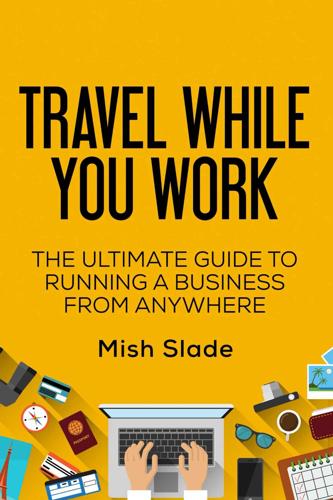
Travel While You Work: The Ultimate Guide to Running a Business From Anywhere
by
Mish Slade
Published 13 Aug 2015
One more tip: somewhere in your job description, ask the candidates to tell you something random about themselves. In the past I've asked them to tell me their favourite type of cheese, their favourite animal at the zoo, and their shoe size. It's a simple way to filter out those candidates who either haven't read the job properly or are using automated software to bid for jobs. I also like it because it's nice to work with people who have a sense of humour, and some of the responses I receive are hilarious! Hourly or fixed price? You usually have the option to specify whether you want to pay your contractor an hourly rate or a fixed price.

Cashing Out: Win the Wealth Game by Walking Away
by
Julien Saunders
and
Kiersten Saunders
Published 13 Jun 2022
This should excite us, but if Americans have no source of income—no ability to pay for groceries, buy homes, save for education, or start families with confidence—then the future could be very dark,” said Yang.[1] The threat of technology and automation has particularly harmful effects on America’s Black population. According to the 2019 McKinsey study “Automation and the Future of the African American Workforce,” because so many of the jobs most at risk to automation are held by African Americans, the threat of job loss could compound poverty rates and worsen wealth creation for the Black community.[2] For instance, “African Americans are overrepresented in the category of truck drivers, . . . [and] eventually, as much as 80 percent of a truck driver’s work hours—the field’s ‘automation potential’—could be automated as technology rapidly evolves,” the study says.

Melting Pot or Civil War?: A Son of Immigrants Makes the Case Against Open Borders
by
Reihan Salam
Published 24 Sep 2018

The People vs Tech: How the Internet Is Killing Democracy (And How We Save It)
by
Jamie Bartlett
Published 4 Apr 2018
Imagine what might happen when driverless cars and Starsky trucks turn up – does anyone seriously think that drivers will passively let this happen, consoled by the fact that their great-great-great grandchildren will probably be richer and less likely to die in a car crash? And what about when Trump’s promised jobs don’t materialise, because of automation? This is not democracy collapsing, but rather straining at the seams – high levels of inequality, social division, economic hardship and a weak and incompetent government. This wouldn’t lead to either the utopia or dystopia that I described, but rather seems like dangerous circumstances for democracy to dip toward some new flavour of authoritarianism.

Heart of the Machine: Our Future in a World of Artificial Emotional Intelligence
by
Richard Yonck
Published 7 Mar 2017
Many people would call this a win-win all around, but there will no doubt be large numbers of human sex workers who will disagree. While there are certainly many in the sex industry who are victims of exploitation and sex trafficking, a proportion also see it as legitimate work. In a world already facing enormous job losses due to automation and robotics, sex workers could quickly be reduced to just another statistic.27 Finally, how will our attitudes change toward robots that we feel love for and that we at least imagine are capable of loving us? A machine that gains the ability to feel (or is able to convince some proportion of humans it has done so) will find it has new allies championing its civil liberties, possibly even seeking to grant it something in accord with basic human rights.
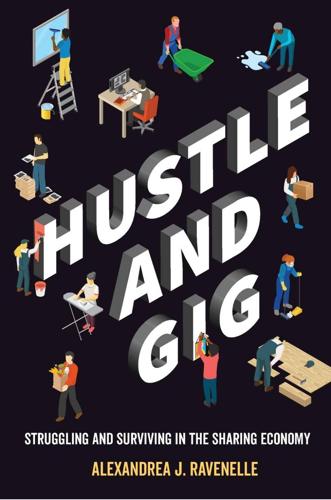
Hustle and Gig: Struggling and Surviving in the Sharing Economy
by
Alexandrea J. Ravenelle
Published 12 Mar 2019
In 1994, Proctor and Gamble reported that profits rose more than 13 percent in its second quarter after a “cost cutting” that included eliminating thirteen thousand jobs and thirty plants worldwide.28 A New York Times analysis of Labor Department numbers found that more than forty-three million jobs were erased in the United States in the period from 1979 to 1995, and that the job losses were increasingly those of “higher-paid, white collar workers, many at large corporations.” A poll conducted in conjunction with the paper’s coverage of the layoffs found that “nearly three-quarters of all households had a close encounter with layoffs” between 1980 and 1996, and that in a third of all households, a family member had lost a job.29 In some cases, the lost jobs were replaced with automation as computers and software made certain jobs and procedures redundant. In other cases, work expectations were simply ratcheted upward as workers, anxious that they would lose their jobs in the next round of layoffs, pushed themselves to do more with less. The layoffs were also used to shed full-time employees, replacing them with outsourced services such as call centers, staffing companies, and perma-temps.

Paper Girl: A Memoir of Home and Family in a Fractured America
by
Beth Macy
Published 6 Oct 2025
She got Pell Grants, too, but their purchasing power by then was so kneecapped that she ended up graduating with $57,000 in student debt. * * * — Most of my students enrolled to get either associate’s degrees or trade certifications; a few, like Meribeth, used the community college system as a cost-savings option on their way toward a bachelor’s. The older ones had lost jobs to globalization and automation and were thoroughly miffed by the computer revolution, which had passed them by. A librarian friend in a county that was midway through losing half its jobs to offshoring described how laid-off workers would bring her their printed-out résumés, asking her to physically feed them into her computer, as if on a roller.

WTF?: What's the Future and Why It's Up to Us
by
Tim O'Reilly
Published 9 Oct 2017
While drivers may earn slightly less than the most successful Uber or Lyft drivers, the greater predictability has made Flex highly desirable to drivers. Even in a world of self-driving cars, it is possible to see how increases in the services being provided can lead to more employment, not less. If we play our cards right, jobs that are lost to automation can be equivalent to the kinds of “losses” that came to bank tellers and their managers with the introduction of the ATM. It turns out that there were fewer tellers per branch but a net increase in the total number of tellers, because automation made it cheaper to open new branches. The ATM also replaced boring, repetitive tasks with more interesting, higher-value tasks.
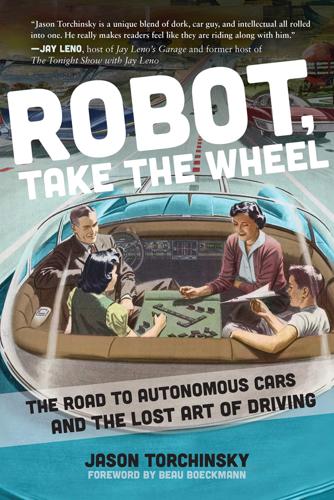
Robot, Take the Wheel: The Road to Autonomous Cars and the Lost Art of Driving
by
Jason Torchinsky
Published 6 May 2019
Chapter 8 The Death of the Journey There’s no question that the eventual coming of self-driving vehicles—whenever that actually turns out to be—will be something of a revolution in transportation and will absolutely bring considerable benefits to many, many people. People who are unable to drive for medical or physical reasons will gain dramatically greater freedom of travel, traffic fatalities will likely drop by a considerable amount, and a great many mundane, tedious, or even dangerous tasks, jobs, and other ventures could be automated, freeing people for other pursuits. I mean, everyone’s pretty excited about the possibility of it all; I’m even writing a book about it, and I’m pretty convinced we’re not as close to having these things on the road as many people think. While there’s considerable mistrust and hesitation about the idea, generally the sense is that this is a revolution that is going to happen, and people are eager to reap the rewards.
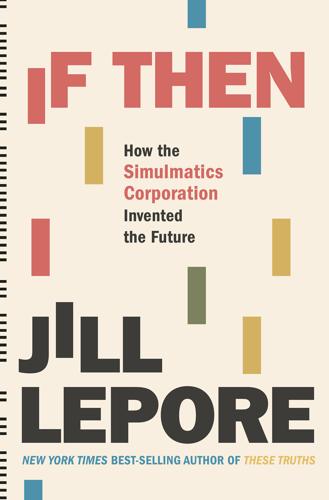
If Then: How Simulmatics Corporation Invented the Future
by
Jill Lepore
Published 14 Sep 2020

Spies, Lies, and Algorithms: The History and Future of American Intelligence
by
Amy B. Zegart
Published 6 Nov 2021
Today, by contrast, data has become much more essential for power—whether it’s the market power of firms, the domestic political power of governments, or the military power of nations. Nearly two-thirds of today’s global economy is based on intangible services,33 not tangible goods, and some experts estimate that up to 40 percent of the world’s jobs could be automated in the next fifteen to twenty-five years.34 Authoritarian regimes increasingly rely on continuous data streams that track citizen activities, locations, and relationships to control their domestic populations. Modern warfare relies on assured command, control, and communications from space.

The Numerati
by
Stephen Baker
Published 11 Aug 2008
All of us, from bombers to subway passengers, will be playing ever bigger roles in these surveillance films. But on this global stage—unlike the cozy casinos in Las Vegas—there aren't nearly enough human workers to monitor all the action. And the machinery to sift through all this video isn't yet up to the job. At this point, an automated system can compare mug shots of suspects with thousands of photos on file, and suggest a handful of them that have a similar facial profile—before handing over the job to humans. Despite what Hollywood would have you believe, identifying faces in the real world is still very much a work in progress.
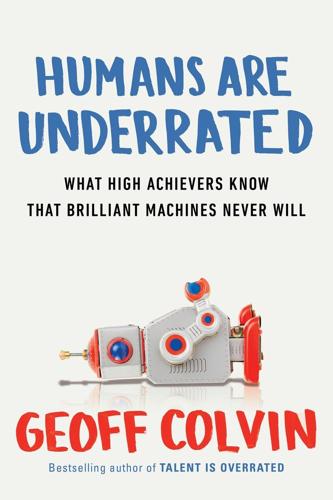
Humans Are Underrated: What High Achievers Know That Brilliant Machines Never Will
by
Geoff Colvin
Published 3 Aug 2015
The stupid people thought that automation was going to make all the jobs go away and there wasn’t going to be any work to do. And the smart people understood that when more was produced, there would be more income and therefore there would be more demand. It wasn’t possible that all the jobs would go away, so automation was a blessing.” Evidence overwhelmingly supported that view for decades. All you had to do was imagine the world of 1800 and compare it with the world around you. But then, quite recently, the world changed: “Until a few years ago, I didn’t think this was a very complicated subject,” Summers said.

Company of One: Why Staying Small Is the Next Big Thing for Business
by
Paul Jarvis
Published 1 Jan 2019

Age of the City: Why Our Future Will Be Won or Lost Together
by
Ian Goldin
and
Tom Lee-Devlin
Published 21 Jun 2023
Its population has been declining since 2011 and by 2050 may have shrunk by 30 million, almost a quarter. In Japan, as in many other countries with rapid ageing and declining fertility, a growing number of the retired elderly will need to be supported by a shrinking working-age population. Low-skill jobs that are difficult to automate – in areas like home care or hospitality – will become even more difficult to fill, leading to chronic job shortages. Allowing this to occur while billions in the developing world are desperately seeking employment would be absurd. Across rich countries, immigrants have been demonized in recent years for supposedly stealing good jobs, but they are not to blame for the hollowing out of the middle class.

The Automatic Millionaire, Expanded and Updated: A Powerful One-Step Plan to Live and Finish Rich
by
David Bach
Published 27 Dec 2016
You can usually change the arrangement with a simple phone call or written request. And don’t forget that many banks now offer free online bill payment, which allows you to “autopay” a check to whomever you designate. This can make automating your investment plan a one-time, five-minute job. ANOTHER INCREDIBLY SIMPLE WAY TO AUTOMATE EVERYTHING Today’s Internet technology makes it unbelievably simple to set up what is called “online bill pay.” As the name suggests, online bill pay allows you to pay all of your bills online. Once you open an online bill pay account, your bills go directly to the company providing the service, which scans them and then presents them to you online.

The Nanny State Made Me: A Story of Britain and How to Save It
by
Stuart Maconie
Published 5 Mar 2020

Artificial Intelligence: A Modern Approach
by
Stuart Russell
and
Peter Norvig
Published 14 Jul 2019
The majority of commenters predict that the same will hold true with AI technology, at least in the short run. Gartner, McKinsey, Forbes, the World Economic Forum, and the Pew Research Center each released reports in 2018 predicting a net increase in jobs due to AI-driven automation. But some analysts think that this time around, things will be different. In 2019, IBM predicted that 120 million workers would need retraining due to automation by 2022, and Oxford Economics predicted that 20 million manufacturing jobs could be lost to automation by 2030. Frey and Osborne (2017) survey 702 different occupations, and estimate that 47% of them are at risk of being automated, meaning that at least some of the tasks in the occupation can be performed by machine.
…
Consider how change came to the farming industry: in 1900, over 40% of the U.S. workforce was in agriculture, but by 2000 that had fallen to 2%.3 That is a huge disruption in the way we work, but it happened over a period of 100 years, and thus across generations, not in the lifetime of one worker. Workers whose jobs are automated away this decade may have to retrain for a new profession within a few years—and then perhaps see their new profession automated and face yet another retraining period. Some may be happy to leave their old profession—we see that as the economy improves, trucking companies need to offer new incentives to hire enough drivers—but workers will be apprehensive about their new roles.

Don't Burn This Book: Thinking for Yourself in an Age of Unreason
by
Dave Rubin
Published 27 Apr 2020
Now it’s just become politically expedient to say the opposite because of the “bad orange man” in the White House. But they were all right years ago: part of the reason for controlling the borders is to make sure that we can actually deliver our “American dream” promise. Many blue-collar jobs are currently being replaced by automation, which means lots of low-skilled labor workers (many of them refugees) are at risk of being unemployed and on handouts. Is this ethical? To invite people into our country just to have them flounder? I don’t think so. We’d also have mainstream Democrat politicians gaslighting them by saying they’re victims for coming here in the first place.

Blockchain Chicken Farm: And Other Stories of Tech in China's Countryside
by
Xiaowei Wang
Published 12 Oct 2020
The irony is, she stopped feeling fulfilled when her workplace became optimized, her work stripped of meaning, turned into mere labor. Examining the relationship between work and life under automation is not new. In a 1972 article in The Black Scholar, the activist James Boggs argued for the importance of thinking one level deeper about work itself. The problem facing jobs and work isn’t merely “automation and cybernation,” as he put it. Instead, the real challenge is “to create a new human meaning for Work as Working for others rather than for oneself; working for people rather than for things.” Transforming work into abstract, quantifiable, optimized labor erases “any of the human and social purposes or the creative satisfactions that Work has always had in other societies.”11 It is easy to automate work using AI once you’ve made work devoid of meaning.

Nomadland: Surviving America in the Twenty-First Century
by
Jessica Bruder
Published 18 Sep 2017
“They don’t want long-term employees, because then you do have pensions, then you do have to keep giving them cost-of-living increases and, if they’ve been working for the company a long time, they’re going to want a merit-based raise.” The new management, she said, “literally wanted disposable people. And to make disposable people you have to have a disposable job. And so everything became automated.” Meanwhile, Jen had been scouring the internet for alternate ways to live. She’d researched minimalism and the tiny house movement. She’d also come across CheapRVLiving.com. Gradually, she began thinking she’d found a way out. To Ash, moving into a vehicle and becoming a nomad wasn’t initially the most appealing choice.

The People's Platform: Taking Back Power and Culture in the Digital Age
by
Astra Taylor
Published 4 Mar 2014
The advances of technology did not, in the end, liberate the worker from drudgery but rather further empowered those who owned the machines. By the end of the 1970s, as former labor secretary Robert Reich explains, a wave of new technologies (air cargo, container ships and terminals, satellite communications and, later, the Internet) had radically reduced the costs of outsourcing jobs abroad. Other new technologies (automated machinery, computers, and ever more sophisticated software applications) took over many other jobs (remember bank tellers? telephone operators? service station attendants?). By the ’80s, any job requiring that the same steps be performed repeatedly was disappearing—going over there or into software.25 At the same time the ideal of a “postindustrial society” offered the alluring promise of work in a world in which goods were less important than services.
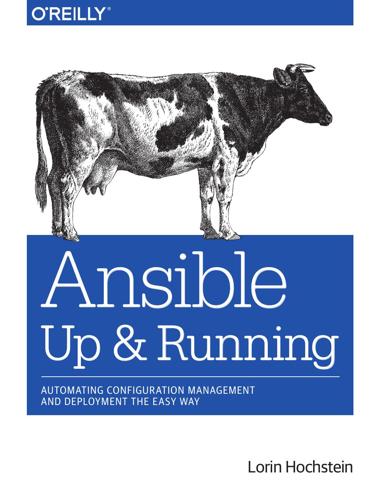
Ansible: Up and Running: Automating Configuration Management and Deployment the Easy Way
by
Lorin Hochstein
Published 8 Dec 2014
In the next one, we’ll discuss roles, a convenient mechanism for organizing your playbooks. 1 Thanks to John Jarvis for this tip. 2 Don’t Repeat Yourself, a term popularized by The Pragmatic Programmer: From Journeyman to Master, which is a fantastic book. 3 etcd is a distributed key-value store, and is maintained by the CoreOS project. 4 If this sounds like gibberish, don’t worry about it; it’s just an example of running a command. 5 DNS service providers typically have web interfaces to let you perform DNS-related tasks such as creating TXT records. Chapter 8. Roles: Scaling Up Your Playbooks One of the things I like about Ansible is how it scales both up and down. I’m not referring to the number of hosts you’re managing, but rather the complexity of the jobs you’re trying to automate. Ansible scales down well because simple tasks are easy to implement. It scales up well because it provides mechanisms for decomposing complex jobs into smaller pieces. In Ansible, the role is the primary mechanism for breaking apart a playbook into multiple files. This simplifies writing complex playbooks, and it also makes them easier to reuse.

Irresistible: How Cuteness Wired our Brains and Conquered the World
by
Joshua Paul Dale
Published 15 Dec 2023
In a country with limited space for pets and a falling birthrate, the future of both animal and child-like kawaii may well belong to robots that offer companionship and entertainment on demand. Sony’s robot dog When industrial robots arrived in Japan in the 1970s, Nissan had a problem. It wasn’t with disgruntled workers – Japan’s economy was expanding so rapidly that no jobs were lost due to automation. The difficulty was that the robots all looked the same. When one of the huge machines broke down, the mechanics rushing to repair it found themselves wasting precious time trying to figure out which one needed their help. To solve the problem, workers attached photos of an actress or female entertainer to each machine and referred to it by her name.
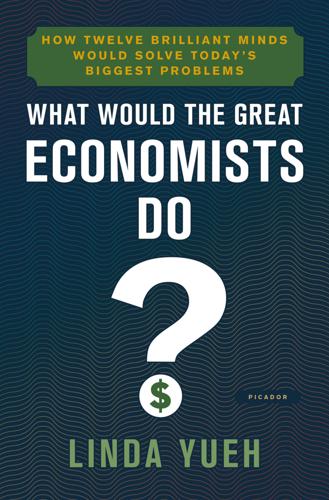
What Would the Great Economists Do?: How Twelve Brilliant Minds Would Solve Today's Biggest Problems
by
Linda Yueh
Published 4 Jun 2018
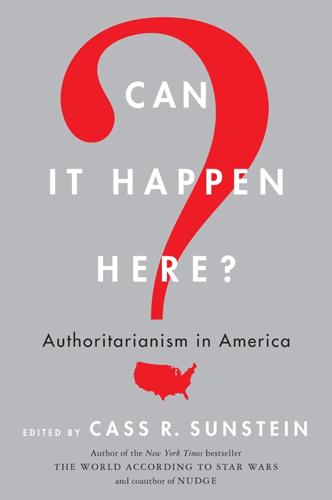
Can It Happen Here?: Authoritarianism in America
by
Cass R. Sunstein
Published 6 Mar 2018
Any number of plausible developments could undermine the prevailing equilibrium in American politics and set off a cascade favoring one intolerant community or the other. The possible triggers include emerging technologies. Driverless cars and automated stores will displace millions of drivers and cashiers, swelling the ranks of Americans without marketable skills. Just as China, Mexico, and foreigners are blamed for the loss of industrial jobs, so the unfolding automation could heighten xenophobia and anti-globalism, swelling the numbers of nativists. For another alarming scenario, imagine that the collapse of a pivotal Arab state makes Middle Eastern wars spread to new countries, dragging the US into a Vietnam-style quagmire. The resulting refugee flows would energize nativists, and daily casualty reports would energize identitarians, especially if ethnic minorities suffered disproportionately.
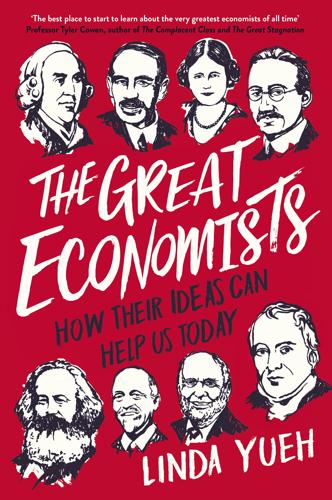
The Great Economists: How Their Ideas Can Help Us Today
by
Linda Yueh
Published 15 Mar 2018

The Equality Machine: Harnessing Digital Technology for a Brighter, More Inclusive Future
by
Orly Lobel
Published 17 Oct 2022
When the men left for war, women took their places in factories and offices. Indeed, analogously, when we consider the debates about automation resulting in displacement of humans and loss of jobs in the labor market, we need to continue to carefully assess how related forces of job losses and job gains due to automation net out. The waves of industrial revolutions—the revolutions brought on by steam, steel, electricity, oil, and later the personal computer—have all relied on machines. Now, we find ourselves on the cusp of the AI revolution, which is no exception. At its best, automation will allow individuals to devote more time to social and recreational activities, and public policies can focus on alleviating distributional gaps due to labor market displacement.
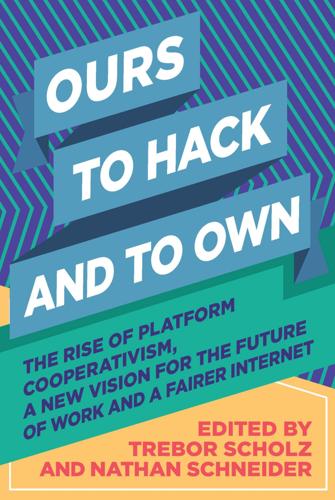
Ours to Hack and to Own: The Rise of Platform Cooperativism, a New Vision for the Future of Work and a Fairer Internet
by
Trebor Scholz
and
Nathan Schneider
Published 14 Aug 2017
In Average Is Over, the economist Tyler Cowen foresees a future in which a tiny “hyper meritocracy” would make millions while the rest of us struggle to survive on anywhere between $5,000 and $10,000 a year. It already works quite well in Mexico, Cowen quips. Carl B. Frey and Michael A. Osborne predict that 47 percent of all jobs are at risk of being automated over the next twenty years. And I have no doubt about the vision of platform owners like Travis Kalanick (Uber), Jeff Bezos (Amazon), or Lukas Biewald (CrowdFlower)—who, in the absence of government regulation and resistance from workers, will simply exploit their undervalued workers.
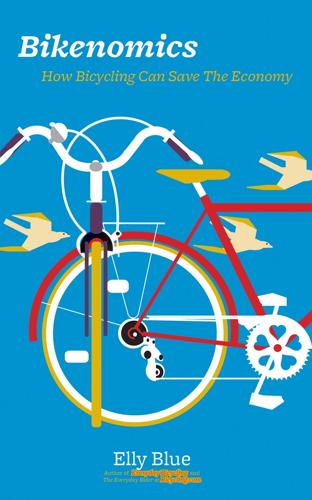
Bikenomics: How Bicycling Can Save the Economy (Bicycle)
by
Elly Blue
Published 29 Nov 2014
A university staffer told me that they had replaced their small fleet of pickup trucks with these bicycles, which did the job just as well and provided a safer and quieter environment for students. Most bike-based businesses are by nature small or medium-sized. With their low overhead and replacement of fuel with human power, they provide something that is sorely needed right now—jobs. Bike delivery can’t be automated or outsourced—you need a human being, hauling a human-scaled load all over town to make these operations work. When places thrive, people and goods simply don’t have to travel as far. Laura Crawford and Russ Roca, on the other hand, choose to go on long bicycle trips and can bring their work with them.

Explaining Humans: What Science Can Teach Us About Life, Love and Relationships
by
Camilla Pang
Published 12 Mar 2020
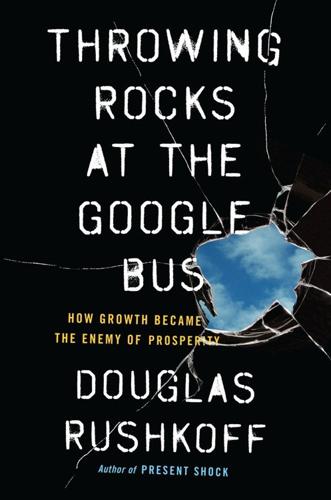
Throwing Rocks at the Google Bus: How Growth Became the Enemy of Prosperity
by
Douglas Rushkoff
Published 1 Mar 2016
It’s as if whenever we start down the path of trying to find an employment solution for people in a digital landscape, we end up in the same defenseless, jobless place. We can’t get paid for our cultural product unless we’re one of the Top 10 artists of the year. We can’t get good at any job skill without its being automated by someone with a free smartphone app. The more time and assets we can get on the books, the faster they are devalued or replaced by a new technology. More than two thirds of job losses are now the direct result of having one’s function taken over by a machine. So far, these are mostly middle-class jobs, such as manufacturing, office assistance, and calculating.
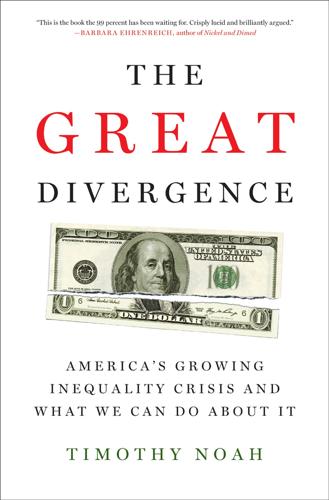
The Great Divergence: America's Growing Inequality Crisis and What We Can Do About It
by
Timothy Noah
Published 23 Apr 2012
Among workers with no more than a high school education, service jobs’ share of U.S. labor hours increased by more than half. During the three decades prior to the Great Divergence, these lower-wage service jobs’ share of labor hours had either declined or stayed flat. Autor and Dorn’s bottom line is that as moderately skilled workers’ jobs were wiped out by automation they were pushed into lower-paid service jobs that computers can’t perform but that people can.13 Autor and Dorn’s bleak view of middle-class decline is challenged in Where Are All the Good Jobs Going?, a 2011 book by the Georgetown economist Harry Holzer in collaboration with Julia Lane, David Rosenblum, and Fredrik Andersson (economists at, respectively, the National Science Foundation, the University of Chicago’s National Opinion Research Center, and the U.S.

No Ordinary Disruption: The Four Global Forces Breaking All the Trends
by
Richard Dobbs
and
James Manyika
Published 12 May 2015

All Day Long: A Portrait of Britain at Work
by
Joanna Biggs
Published 8 Apr 2015
On 5 January 2015, the first working day after Christmas, adverts appeared on underground trains, where adverts for Match.com normally are. In black type on canary yellow, there was a sentence – ‘It’s as if someone were out there making up pointless jobs just for the sake of keeping us all working’ – which came from an article by David Graeber for Strike! magazine about ‘bullshit jobs’. Productive jobs, he argues, have been automated away and replaced by administrative ones which masquerade as service: HR, PR, financial services, ancillary industries like dog-washing and all-night pizza delivery. These are the bullshit jobs that are, you could add, very like T’s. It’s work that looks like work – it fills up a forty-hour week – but that feels pointless to the people doing it and which no one would miss if it disappeared.

More From Less: The Surprising Story of How We Learned to Prosper Using Fewer Resources – and What Happens Next
by
Andrew McAfee
Published 30 Sep 2019
The service industries, meanwhile, continued to need ever-more people. “Service industry” is a category so broad as to be almost meaningless: it includes everything from investment banking to software programming to dry cleaning to dog walking. Most service industries do have two important things in common: many of their jobs have been harder to automate (no dog-walking robot is commercially available yet, as far as I know), and they rely heavily on in-person interactions. You can’t get your dry cleaning done via telepresence, and investment bankers like being around other investment bankers. The in-person nature of service jobs matters for concentration.

Plutocrats: The Rise of the New Global Super-Rich and the Fall of Everyone Else
by
Chrystia Freeland
Published 11 Oct 2012

Aftershocks: Pandemic Politics and the End of the Old International Order
by
Colin Kahl
and
Thomas Wright
Published 23 Aug 2021
Less than one in five Black Americans and one in six Hispanics were able to telework at the beginning of the pandemic, while the unemployment rate at the end of 2020 was 9.9 percent for Blacks and 9.3 percent for Hispanics, compared to 6 percent for whites.42 Other wealthy economies also experienced unequal consequences. A study by the McKinsey Global Institute in Europe found that there was a large overlap between jobs vulnerable to COVID-19 in the short term and jobs vulnerable to automation over the longer term, particularly in sectors such as customer service and sales, food services, and building occupations.43 Even if economies in Europe recovered rapidly, these workers might never regain their jobs, as employers took the opportunity of a reset to accelerate changes that were already under way.

A World of Three Zeros: The New Economics of Zero Poverty, Zero Unemployment, and Zero Carbon Emissions
by
Muhammad Yunus
Published 25 Sep 2017
Some people need help in overcoming barriers that make it harder for them to do worthwhile work. Some have physical or psychological disabilities that require some support—for example, special tools or machines adapted to their circumstances, or modified work schedules suitable for their conditions. Some workers whose jobs have been eliminated due to automation need training to help them develop new skills. Problems like these should never have been allowed to create a large, permanent class of unemployed people like that we see in most countries around the world. The reality is that almost all human beings are perfectly capable of doing worthwhile work that contributes value to society while letting them support themselves and their families—especially when they are freed from the demand of generating large, ever-growing profits for a corporate master.

Jenkins Continuous Integration Cookbook
by
Alan Berg
Published 15 Mar 2012

Uncanny Valley: A Memoir
by
Anna Wiener
Published 14 Jan 2020
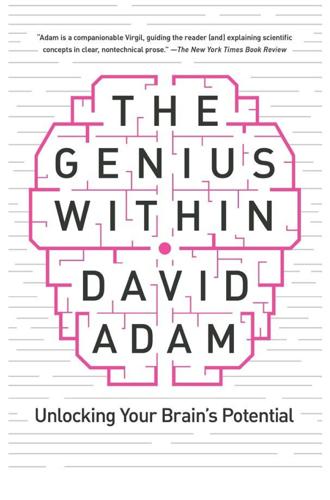
The Genius Within: Unlocking Your Brain's Potential
by
David Adam
Published 6 Feb 2018
Opinions on the impact of cognitive enhancement and the need for scrutiny and regulation, for example, will probably come down to how realistic and powerful we think the impacts on society could be. At its most far-reaching, the stakes are huge. The impacts of the silicon chip revolution continue to claim more jobs each year: improved communications and automation have already hollowed out blue-collar jobs. Now technological progress is coming for careers of the middle classes; those for which school tests and exam grades are considered a reliable way to pick the most able – the most intelligent – applicants. The population is growing and opportunities are shrinking.

The Revenge of Analog: Real Things and Why They Matter
by
David Sax
Published 8 Nov 2016
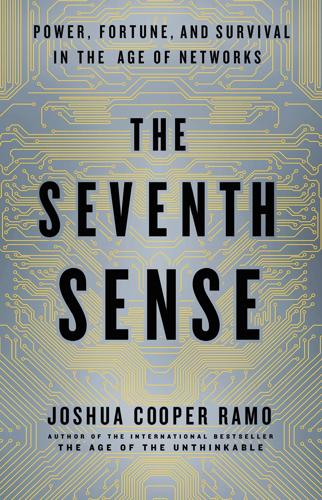
The Seventh Sense: Power, Fortune, and Survival in the Age of Networks
by
Joshua Cooper Ramo
Published 16 May 2016
But the design of capital markets at the time of the 2008 crisis ensured that most of the benefits of a loose monetary policy accumulated to those who already had money. (Among other reasons, because they were connected to networks of credit, investment, and information that elude most citizens.) At the same time, new technology and networks of trade, finance, and information meant that middle-class jobs were being exported or automated. So the once prosperous middle class, an essential element of any stable capitalist system, was being pulled apart. The rich were getting richer; the poor in other countries (or the machines) were taking the jobs. Though financial and monetary stimulus were pouring into the system, there was no trickle down.

The Corruption of Capitalism: Why Rentiers Thrive and Work Does Not Pay
by
Guy Standing
Published 13 Jul 2016

Free Money for All: A Basic Income Guarantee Solution for the Twenty-First Century
by
Mark Walker
Published 29 Nov 2015
In response, the Luddites wrecked machinery, killed capitalists, and battled with the British army. In hindsight, it is easy to sympathize with their plight if not their prescription. These artisans had much to fear. It is true that the economy as a whole benefited from the reduction of the price of textiles, but most of these workers did not reap a commensurate reward. Their jobs were permanently lost to automation and their particular skill set did not position them well to compete in a new economy. Imagine their plight when the workers, who put in the requisite years to learn their craft, found that their skill was no longer needed and that they would have no way to look after their families.

Sickening: How Big Pharma Broke American Health Care and How We Can Repair It
by
John Abramson
Published 15 Dec 2022

Affluence Without Abundance: The Disappearing World of the Bushmen
by
James Suzman
Published 10 Jul 2017
As much as it is easier for some people to blame globalization, immigration, or any number of fantastical conspiracies for the decline in manufacturing jobs, the truth is that increased productivity and technological advancement are the real culprits. And it is not just jobs in manufacturing that are being impacted. A recent study by Oxford economists reckons that nearly half of existing U.S. jobs will be at risk from automation and computerization within the next two decades. These include most jobs in transportation and logistics, “the bulk of office and administrative support workers,” and a “substantial share of employment in service occupations where most U.S. job growth has occurred over the last few years.”1 Yet, even so, we still seem a very long way away from embracing Keynes’s Utopia.

How to Fix the Future: Staying Human in the Digital Age
by
Andrew Keen
Published 1 Mar 2018
Rather than introducing the Silicon Valley culture of creative destruction into politics, Hoffman and Pincus should be focusing their resources on taking responsibility for the disruptive impact of technology on society. I’ve already suggested that Jeff Bezos should invest some of his stratospheric wealth in figuring out what jobs people will do in an automated future. And it would also be wise for Silicon Valley notables like Reid Hoffman and Mark Pincus to work closely with conventional politicians, like the lieutenant governor of California, Gavin Newsom, who, you’ll remember, is now openly warning about the “tsunami” of unemployment and inequality set off by the digital revolution.
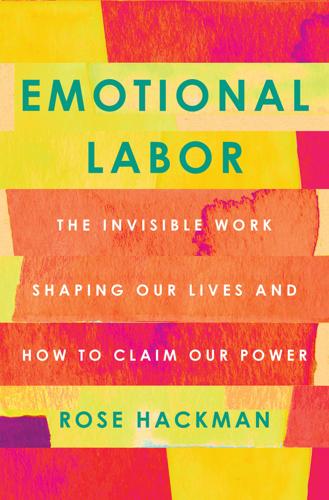
Emotional Labor: The Invisible Work Shaping Our Lives and How to Claim Our Power
by
Rose Hackman
Published 27 Mar 2023

Abundance
by
Ezra Klein
and
Derek Thompson
Published 18 Mar 2025
Annie Lowrey, “The Great Affordability Crisis Breaking America: In One of the Best Decades the American Economy Has Ever Recorded, Families Were Bled Dry,” Atlantic, February 7, 2020, https://www.theatlantic.com/ideas/archive/2020/02/great-affordability-crisis-breaking-america/606046/. 10. “Remarks by President Biden on the December 2021 Jobs Report,” January 7, 2022, https://www.whitehouse.gov/briefing-room/speeches-remarks/2022/01/07/remarks-by-president-biden-on-the-december-2021-jobs-report/. 11. Aaron Bastani, Fully Automated Luxury Communism (London: Verso, 2019), 150–52. 12. Bastani, Fully Automated Luxury Communism, 10. 13. Andriy Blokhin, “The 5 Countries That Produce the Most Carbon Dioxide (CO2),” Investopedia, July 26, 2024, https://www.investopedia.com/articles/investing/092915/5-countries-produce-most-carbon-dioxide-co2.asp; Wolfgang Fengler, Indermit Gill, and Homi Kharas, “Making Emissions Count in Country Classifications,” Brookings Institution, September 7, 2023, https://www.brookings.edu/articles/making-emissions-count-in-country-classifications/; UN Environment Programme, “Emissions Gap Report 2023,” https://www.unep.org/interactives/emissions-gap-report/2023/#section_0; “Global Emissions,” Center for Climate and Energy Solutions, https://www.c2es.org/content/international-emissions/; Kamwoo Lee, Jia Li, and Divyanshi Wadhwa, “From Climate Scient to Global Action: Who Contributes Most to Global Greenhouse Gas Emissions?
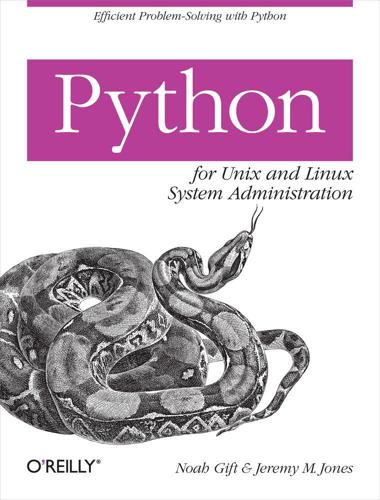
Python for Unix and Linux System Administration
by
Noah Gift
and
Jeremy M. Jones
Published 29 Jun 2009
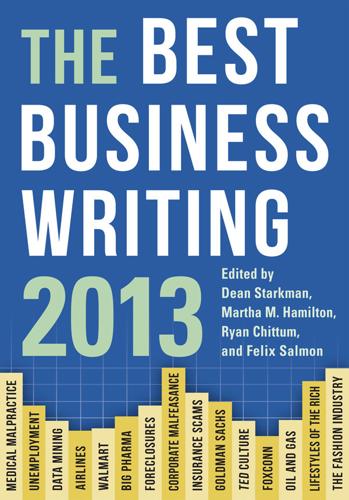
The Best Business Writing 2013
by
Dean Starkman
Published 1 Jan 2013

Why We Can't Afford the Rich
by
Andrew Sayer
Published 6 Nov 2014

Your Computer Is on Fire
by
Thomas S. Mullaney
,
Benjamin Peters
,
Mar Hicks
and
Kavita Philip
Published 9 Mar 2021
For example, automated vehicles are made possible in no small part by the computational activities that happen in the Cloud. In this sense, the Cloud is an element of the larger technological environment in which autonomous vehicles operate. Are they all part of the same factory? And if so, what does it mean for the trucking industry—and for the truck drivers whose jobs will soon be automated out of existence by this new technology? In thirty of the fifty United States, the single most common occupation for men is truck driver.43 What are the social and economic ramifications of the industrialization and computerization of such an industry? It is clear from the comparative histories of Sears and Amazon that despite the latter’s high-tech veneer, the fundamental business model of the two firms is surprisingly similar.
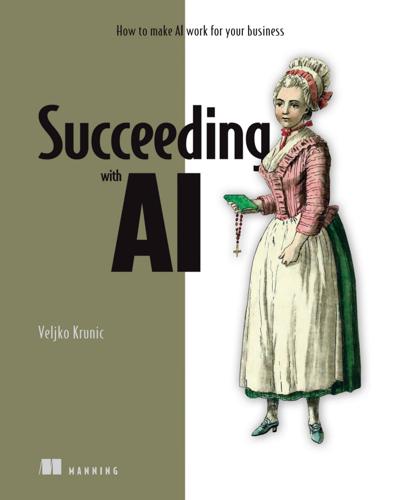
Succeeding With AI: How to Make AI Work for Your Business
by
Veljko Krunic
Published 29 Mar 2020

Making Sense of Chaos: A Better Economics for a Better World
by
J. Doyne Farmer
Published 24 Apr 2024

How Music Got Free: The End of an Industry, the Turn of the Century, and the Patient Zero of Piracy
by
Stephen Witt
Published 15 Jun 2015
Reaching those heights required only dedication, and the lessons of Shoney’s applied. In fact, opportunities for advancement were everywhere. The Baptist backwoods of the Carolina foothills were transforming into America’s fastest-growing industrial corridor. In most of the country manufacturing jobs were vanishing, as work was automated or outsourced to Latin America and Asia. But in the Southeast United States the reverse was happening, as favorable tax rates, cheap land, and an antipathy toward organized labor attracted the attention of multinational corporations. In 1993, BMW had opened its first ever automobile factory outside of Germany: not in China, nor Mexico, but Spartanburg, South Carolina, just across the state line from Glover’s hometown.
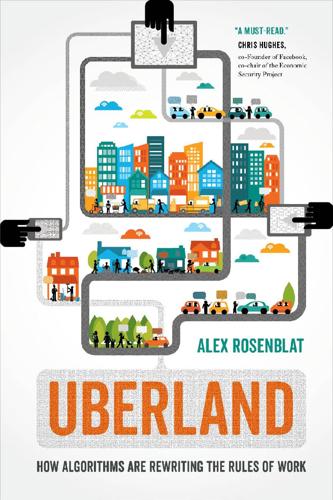
Uberland: How Algorithms Are Rewriting the Rules of Work
by
Alex Rosenblat
Published 22 Oct 2018
The collapse of financial markets challenged societal confidence in American institutions, like banking and governance,3 while an exodus of former homeowners shut down neighborhoods and led to urban blight in cities like Detroit and Cleveland.4 Job losses increased suddenly,5 and national unemployment climbed to 10 percent in October 2009.6 This instability sharpened the economic consequences of prolonged joblessness for white-collar workers, who comprised 60 percent of the labor force; by 2009, they accounted for nearly half of the long-term unemployed.7 Still, the greatest job losses from the Great Recession were concentrated in blue-collar industries among workers under thirty.8 Although the Great Recession officially ended in June 2009, its impact on unemployment persisted well into the economic recovery.9 This context helps explain why sharing-economy companies with roots in Silicon Valley, like Uber, so often frame their technologies as powerful engines of job creation. In the media and in some academic debates, the future of work is framed as the threat of a robot coming for your job. While society may benefit from automated work, the fear is that these benefits will not be distributed equally: jobless futures imply some will get left behind. This threat is not an inherent characteristic of technology but, rather, comes from the current American economic climate. As Philip Alston, a poverty investigator from the United Nations, observed at the end of 2017, “The reality is that the United States now has probably the lowest degree of social mobility among all the rich countries.

Nomad Century: How Climate Migration Will Reshape Our World
by
Gaia Vince
Published 22 Aug 2022

The Rise and Fall of American Growth: The U.S. Standard of Living Since the Civil War (The Princeton Economic History of the Western World)
by
Robert J. Gordon
Published 12 Jan 2016
The core of the optimists’ case lies not with physical robots or 3D printing but with the growing sophistication and humanlike abilities of computers that are often described as “artificial intelligence.” Brynjolfsson and McAfee provide many examples to demonstrate that computers are becoming sufficiently intelligent to supplant a growing share of human jobs. “They wonder if automation technology is near a tipping point, when machines finally master traits that have kept human workers irreplaceable.“56 Thus far, it appears that the vast majority of big data is being analyzed within large corporations for marketing purposes. The Economist reported recently that corporate IT expenditures for marketing purposes were increasing at three times the rate of other corporate IT expenditures.

PostGIS in Action, 2nd Edition
by
Regina O. Obe
and
Leo S. Hsu
Published 2 May 2015
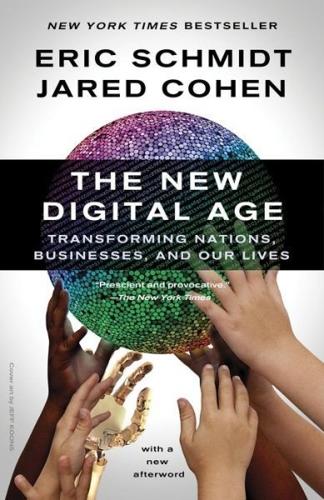
The New Digital Age: Transforming Nations, Businesses, and Our Lives
by
Eric Schmidt
and
Jared Cohen
Published 22 Apr 2013
Perhaps a human-rights organization with staff living in a country under heavy diplomatic sanctions will pay its employees in mobile money credits, or in an entirely digital currency. As fewer jobs require a physical presence, talented individuals will have more options available to them. Skilled young adults in Uruguay will find themselves competing for certain types of jobs against their counterparts in Orange County. Of course, just as not all jobs can or will be automated in the future, not every job can be conducted from a distance—but more can than you might think. And for those living on a few dollars per day, there will be endless opportunities to increase their earnings. In fact, Amazon Mechanical Turk, which is a digital task-distribution platform, offers a present-day example of a company outsourcing small tasks that can be performed for a few cents by anyone with an Internet connection.

Click Here to Kill Everybody: Security and Survival in a Hyper-Connected World
by
Bruce Schneier
Published 3 Sep 2018

Why Things Bite Back: Technology and the Revenge of Unintended Consequences
by
Edward Tenner
Published 1 Sep 1997

Dark Money: The Hidden History of the Billionaires Behind the Rise of the Radical Right
by
Jane Mayer
Published 19 Jan 2016
One of the law firm’s partners, Michael Grebe, subsequently became chairman and CEO of the newly enriched foundation. What remained of Allen-Bradley, however, did less well. Its sad slide traced the fall of American manufacturing during the end of the twentieth century and the hollowing out of decent blue-collar jobs. In 2010, Rockwell Automation, which is what was left of the company in Milwaukee twenty-five years after it was sold, outsourced the last of the plant’s remaining manufacturing jobs to low-wage areas, largely in Latin America and Asia. Robert Granum, president of Local 1111 of the United Electrical, Radio, and Machine Workers of America, the union that represented the last laid-off workers, told the Milwaukee Business Journal that Rockwell’s decision would “deprive future generations of working people of the opportunity to have decent family-supporting jobs.”

The Education of Millionaires: It's Not What You Think and It's Not Too Late
by
Michael Ellsberg
Published 15 Jan 2011
So it weeds out most applicants: “Tell me something that you think is true that very few people agree with.” We’ve seen that those who have clung to outmoded, rigid, stale, conformist notions of formal higher education are now getting slaughtered economically, as their formerly safe jobs get outsourced, downsized, offshored, and automated, and as once-secure establishments crumble into the wireless, digital, networked ethers. What do you think is true about your own education, and about your own path to success in the real world, which very few people agree with? I hope this book has inspired at least a few disobedient thoughts.

Vanishing Frontiers: The Forces Driving Mexico and the United States Together
by
Andrew Selee
Published 4 Jun 2018
The American car industry, for example, has expanded its production by a quarter since 1990, largely by taking advantage of North American integration, but it has also reduced employment slightly, from 1.05 million to 940,000 jobs, as manufacturing operations have become leaner and more automated. One study estimates that 85 percent of the job losses in manufacturing stem from automation, with another 13 percent tied to trade and offshoring of production. Other studies see slightly higher losses from trade and offshoring, but they point out that trade with Mexico, unlike with other countries, has a negligible—and very likely a positive—effect on American manufacturing employment because of the integration effects.

The Big Nine: How the Tech Titans and Their Thinking Machines Could Warp Humanity
by
Amy Webb
Published 5 Mar 2019

Building Microservices
by
Sam Newman
Published 25 Dec 2014
Each squad inside a line of business is expected to own the entire lifecycle of the services it creates, including building, testing and releasing, supporting, and even decommissioning. A core delivery services team provides advice and guidance to these teams, as well as tooling to help it get the job done. A strong culture of automation is key, and REA makes heavy use of AWS as a key part of enabling the teams to be more autonomous. Figure 10-1 illustrates how this all works. Figure 10-1. An overview of Realestate.com.au’s organizational and team structure, and alignment with architecture It isn’t just the delivery organization that is aligned to how the business operates.

Trees on Mars: Our Obsession With the Future
by
Hal Niedzviecki
Published 15 Mar 2015

Stakeholder Capitalism: A Global Economy That Works for Progress, People and Planet
by
Klaus Schwab
Published 7 Jan 2021

Stakeholder Capitalism: A Global Economy That Works for Progress, People and Planet
by
Klaus Schwab
and
Peter Vanham
Published 27 Jan 2021

Making It in America: The Almost Impossible Quest to Manufacture in the U.S.A. (And How It Got That Way)
by
Rachel Slade
Published 9 Jan 2024
Of course, globalization has had real material effects on people’s livelihoods. In January 1997, Public Citizen’s Global Trade Watch found that in three years, NAFTA had already cost the United States a net loss of close to 400,000 jobs. Some estimate that up to a third of those job losses were due to increased automation of production methods. But the worst-hit industry in those early years of NAFTA? That would be apparel, which is extremely difficult to automate and thus remains labor-intensive. American clothing companies shifted the most mobile (and worker-centric) part of their industry—stitching—to Mexico.

Basic Income: A Radical Proposal for a Free Society and a Sane Economy
by
Philippe van Parijs
and
Yannick Vanderborght
Published 20 Mar 2017
By the end of that period, one in seven workers Â�were self-Â�employed, with average earnings 20 Â�percent lower than in 2006 (see Roberts 2014 and Cohen 2014). Guy Standing (2011, 2014a) documents the rise of this “precariat” as a core element in his plea for the urgency of introducing an unconditional basic income. 6. The job loss caused by automation has been a recurrent theme in twentieth-Â�century pleas for a guaranteed income (see chapter 4), from Douglas (1924) Duboin (1932, 1945), and Theobald (1963) to Cook (1979: 4), Voedingsbond (1981: 1–4), Roberts (1982), Gerhardt and Weber (1983: 72–5), Meyer (1986), Brittan (1988), and so forth. 7.
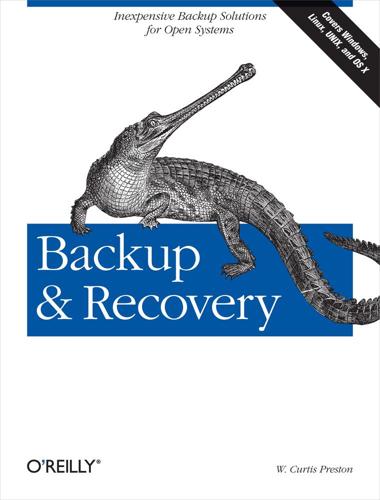
Backup & Recovery
by
W. Curtis Preston
Published 9 Feb 2009

Exceptional People: How Migration Shaped Our World and Will Define Our Future
by
Ian Goldin
,
Geoffrey Cameron
and
Meera Balarajan
Published 20 Dec 2010
Absolute changes in labor demand will depend on the extent to which new technologies substitute for workers, but low-skilled work in the service sector and high-skilled work in knowledge-based sectors will resist such change. The fastest growing areas of employment—in health care and IT, for example—already draw disproportionately on migrant labor. Technological change creates new types of jobs for high-skilled workers, and there are limits to the low-skilled jobs it can replace. Machines and automation may reduce the labor inputs at a manufacturing plant, but they cannot staff a pharmacy, provide child care, or attend to an elderly patient. Industries that are particularly starved for labor will lobby for opening borders to low-skilled and high-skilled migrants alike. While the decision to expand immigration quotas is a political one, history shows that migration often occurs in spite of official policy and not always because of it.
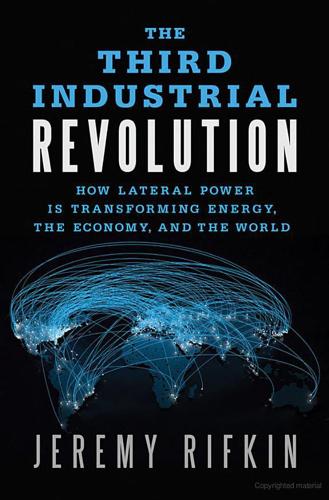
The Third Industrial Revolution: How Lateral Power Is Transforming Energy, the Economy, and the World
by
Jeremy Rifkin
Published 27 Sep 2011

In Our Own Image: Savior or Destroyer? The History and Future of Artificial Intelligence
by
George Zarkadakis
Published 7 Mar 2016

The American Way of Poverty: How the Other Half Still Lives
by
Sasha Abramsky
Published 15 Mar 2013
In Detroit, for example, where hundreds of thousands of workers had once made good money working in auto manufacturing, so many people had departed the city in recent decades, and so many lots had been abandoned, that in large numbers of neighborhoods there were more vacant homes than occupied ones. From the 1960s onward, plants started to shed jobs, as production processes increasingly became automated. In 1979, for example, General Motors was producing as many cars in Detroit as it had done twenty years earlier, but with half the number of workers. Finally, however, even those workers proved too costly, and companies shuttered their factories entirely, the jobs outsourced to nonunion sites in other states, or overseas.

Arguing With Zombies: Economics, Politics, and the Fight for a Better Future
by
Paul Krugman
Published 28 Jan 2020
For example, a lot of the agitation for a universal basic income comes from the belief that jobs will become ever scarcer as the robot apocalypse overtakes the economy. So it seems like a good idea to point out that in this case what everyone knows isn’t true. Predictions are hard, especially about the future, and maybe the robots really will come for all our jobs one of these days. But automation just isn’t a big part of the story of what happened to American workers over the past forty years. We do have a big problem—but it has very little to do with technology, and a lot to do with politics and power. Let’s back up for a minute, and ask: What is a robot, anyway? Clearly, it doesn’t have to be something that looks like C-3PO, or rolls around saying “Exterminate!

Everyday Utopia: What 2,000 Years of Wild Experiments Can Teach Us About the Good Life
by
Kristen R. Ghodsee
Published 16 May 2023
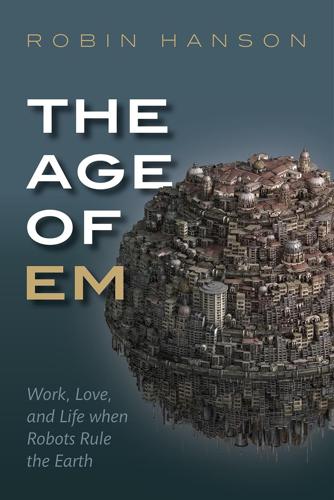
The Age of Em: Work, Love and Life When Robots Rule the Earth
by
Robin Hanson
Published 31 Mar 2016

Across Realtime
by
Vernor Vinge
Published 1 Jan 1986

Beggars in Spain
by
Nancy Kress
Published 23 Nov 2004

The Black Box Society: The Secret Algorithms That Control Money and Information
by
Frank Pasquale
Published 17 Nov 2014
Sound furious as you talk your way through a phone tree, and you may be routed to someone with anger management training. Or not; some companies work extra hard to soothe, but others just dump problem customers. There’s a fi ne line between the wooed and the waste. “Data-driven” management promises a hyperefficient workplace. The most watched jobs are also the easiest to automate: a comprehensive documentation of everything a worker has done is the key data enabling a robot to take her place.93 But good luck finding out exactly how management protocols work. If they were revealed, the bosses claim, employees would game the system. If workers knew that thirty-three-word e-mails littered with emoticons scored highest, they might write that way all the time.

Career and Family: Women’s Century-Long Journey Toward Equity
by
Claudia Goldin
Published 11 Oct 2021

Bullshit Jobs: A Theory
by
David Graeber
Published 14 May 2018
Workers were told time and again that it was too costly to buy the machines for digitizing.” • “I was given one responsibility: watching an in-box that received emails in a certain form from employees in the company asking for tech help, and copy and paste it into a different form. Not only was this a textbook example of an automatable job, it actually used to be automated! There was some kind of disagreement between various managers that led to higher-ups issuing a standardization that nullified the automation.” On the social level, duct taping has traditionally been women’s work. Throughout history, prominent men have wandered about oblivious to half of what’s going on around them, treading on a thousand toes; it was typically their wives, sisters, mothers, or daughters who were left with the responsibility of performing the emotional labor of soothing egos, calming nerves, and negotiating solutions to the problems they created.

People, Power, and Profits: Progressive Capitalism for an Age of Discontent
by
Joseph E. Stiglitz
Published 22 Apr 2019
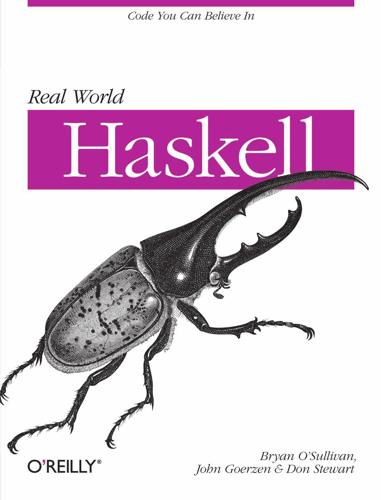
Real World Haskell
by
Bryan O'Sullivan
,
John Goerzen
,
Donald Stewart
and
Donald Bruce Stewart
Published 2 Dec 2008

In the Age of the Smart Machine
by
Shoshana Zuboff
Published 14 Apr 1988

All the Money in the World
by
Peter W. Bernstein
Published 17 Dec 2008

Homo Deus: A Brief History of Tomorrow
by
Yuval Noah Harari
Published 1 Mar 2015
Soon enough, many other baseball teams adopted the same algorithmic approach, and since the Yankees and Red Sox could pay far more for both baseball players and computer software, low-budget teams such as the Oakland Athletics now had an even smaller chance of beating the system than before.14 In 2004 Professor Frank Levy from MIT and Professor Richard Murnane from Harvard published a thorough research of the job market, listing those professions most likely to undergo automation. Truck drivers were given as an example of a job that could not possibly be automated in the foreseeable future. It is hard to imagine, they wrote, that algorithms could safely drive trucks on a busy road. A mere ten years later, Google and Tesla not only imagine this, but are actually making it happen.15 In fact, as time goes by, it becomes easier and easier to replace humans with computer algorithms, not merely because the algorithms are getting smarter, but also because humans are professionalising.

Dark Mirror: Edward Snowden and the Surveillance State
by
Barton Gellman
Published 20 May 2020

Robot Rules: Regulating Artificial Intelligence
by
Jacob Turner
Published 29 Oct 2018
Far more likely is that, as the tech-savvy do better than ever, many truckers or taxi drivers without the necessary skills will drift off to more precarious, piecemeal, low-paid work. Does anyone seriously think that drivers will passively let this happen, consoled that their great-grandchildren may be richer and less likely to die in a car crash? And what about when Donald Trump’s promised jobs don’t rematerialise, because of automation rather than offshoring and immigration? Given the endless articles outlining how “robots are coming for your jobs”, it would be extremely odd if people didn’t blame the robots, and take it out on them, too.74 Striking this balance is an ongoing challenge. Although the economic benefits to be gained from AI might first be enjoyed by those who are already highly fortunate, in turn it is to be hoped that AI will bring benefits for the whole of society.

Cultural Backlash: Trump, Brexit, and Authoritarian Populism
by
Pippa Norris
and
Ronald Inglehart
Published 31 Dec 2018
Thus, in the 2016 election, the Part II Authoritarian-Populist Values 161 white rural counties in key Mid-West states such as Pennsylvania and Michigan swung disproportionately toward Trump, while the Democrats performed better in large metropolitan areas and surrounding suburbs.77 Socio-economic indicators – poverty levels, median earnings, labor force participation, longevity, and unemployment rates – are generally worse in American counties dependent upon farming, mining, and manufacturing than in urban areas.78 Trump also strongly outperformed the Romney vote in counties with severe social and economic problems, including substance abuse, alcoholism, and suicide rates, exemplified by the scourge of soaring white opioid addiction and its devastating effects on local communities.79 Trump performed best in places where the economy was at its worst, beating Clinton in counties with slower job growth and lower wages, and far outperforming her in counties where jobs were most threatened by automation or offshoring. Similarly, the vote shifted most strongly from Obama (in 2012) to Trump (in 2016) in counties that experienced economic decline.80 Yet local economic conditions are not necessarily the main reason underlying the geographic divide in the American electorate, since rural and urban counties also differ sharply in many other respects.

The Great Shark Hunt: Strange Tales From a Strange Time
by
Hunter S. Thompson
Published 6 Nov 2003

The Art of UNIX Programming
by
Eric S. Raymond
Published 22 Sep 2003

Wanderers: A Novel
by
Chuck Wendig
Published 1 Jul 2019
How long would the cellphone network remain? That was already patchy. How about the satellites? The electricity? Surely satellites would keep whirling about in space, though some would fail and no one would ever fix them. The power grid required human maintenance—presently, Benji imagined some people still went to their jobs, and where manpower failed, automation would bridge the gap for a time. Nuclear power could run for a year or three all on its own, as those systems were auto-balanced. Natural gas and coal, less so. Hydroelectric, too, ran on its own pretty well—but one fault somewhere in any of those systems would cause a default. And possibly, a catastrophic one.

EuroTragedy: A Drama in Nine Acts
by
Ashoka Mody
Published 7 May 2018
In addition, fear of the future places a cap on consumer and investment demand and, hence, on global growth. Memories of the global and eurozone financial crises do not fade quickly, and worries about living through another wrenching experience remain.13 Many workers are afraid of losing their jobs to the spread of automation in service sectors. Because of such fears, consumers everywhere spend only in brief bursts, businesses invest cautiously, and aggregate demand does not gather sufficient momentum to spur sustained growth. Without a sudden burst of technologically driven global optimism, global trade provides only an occasional and limited lift.

The Singularity Is Near: When Humans Transcend Biology
by
Ray Kurzweil
Published 14 Jul 2005

Trading and Exchanges: Market Microstructure for Practitioners
by
Larry Harris
Published 2 Jan 2003